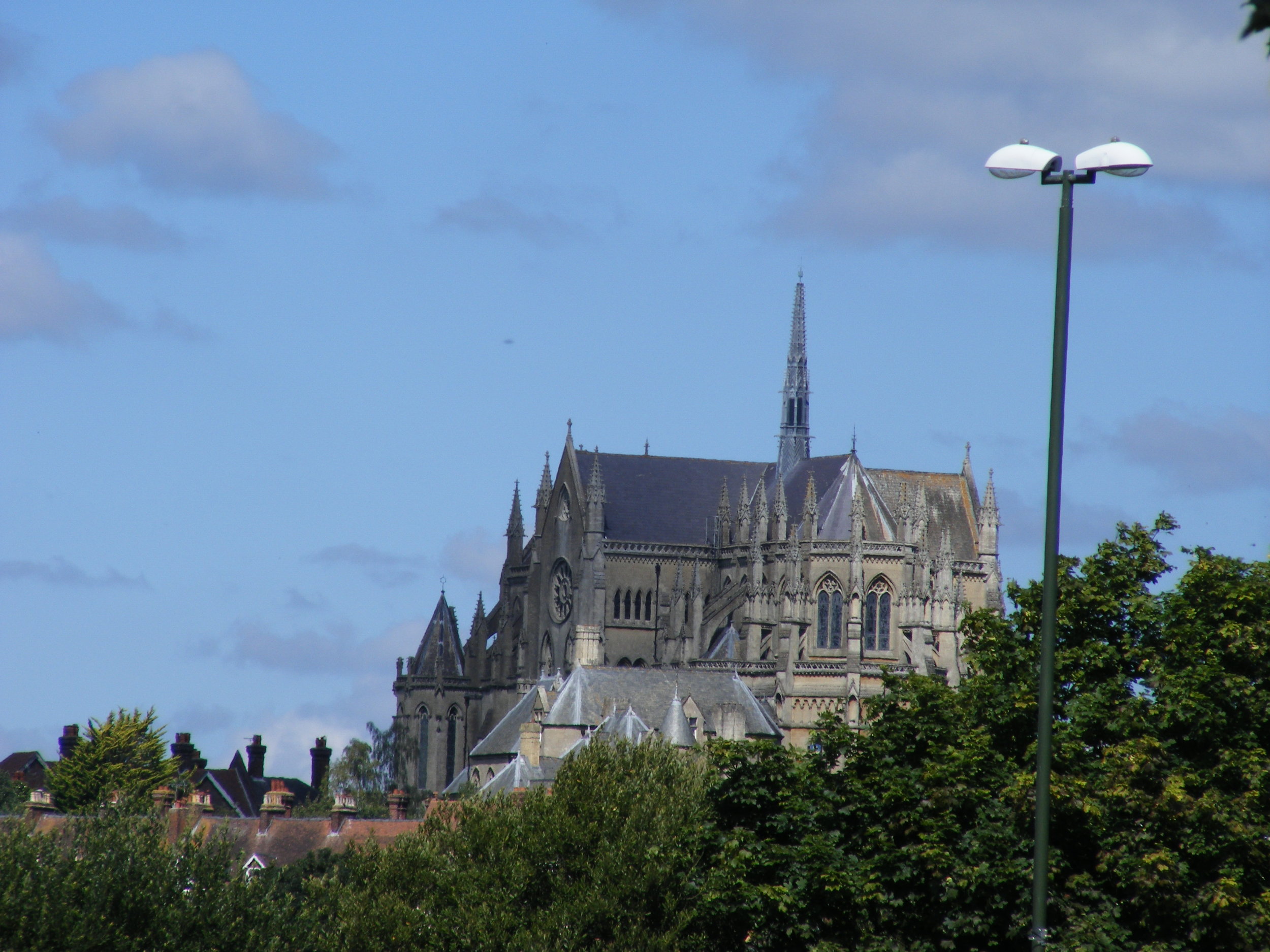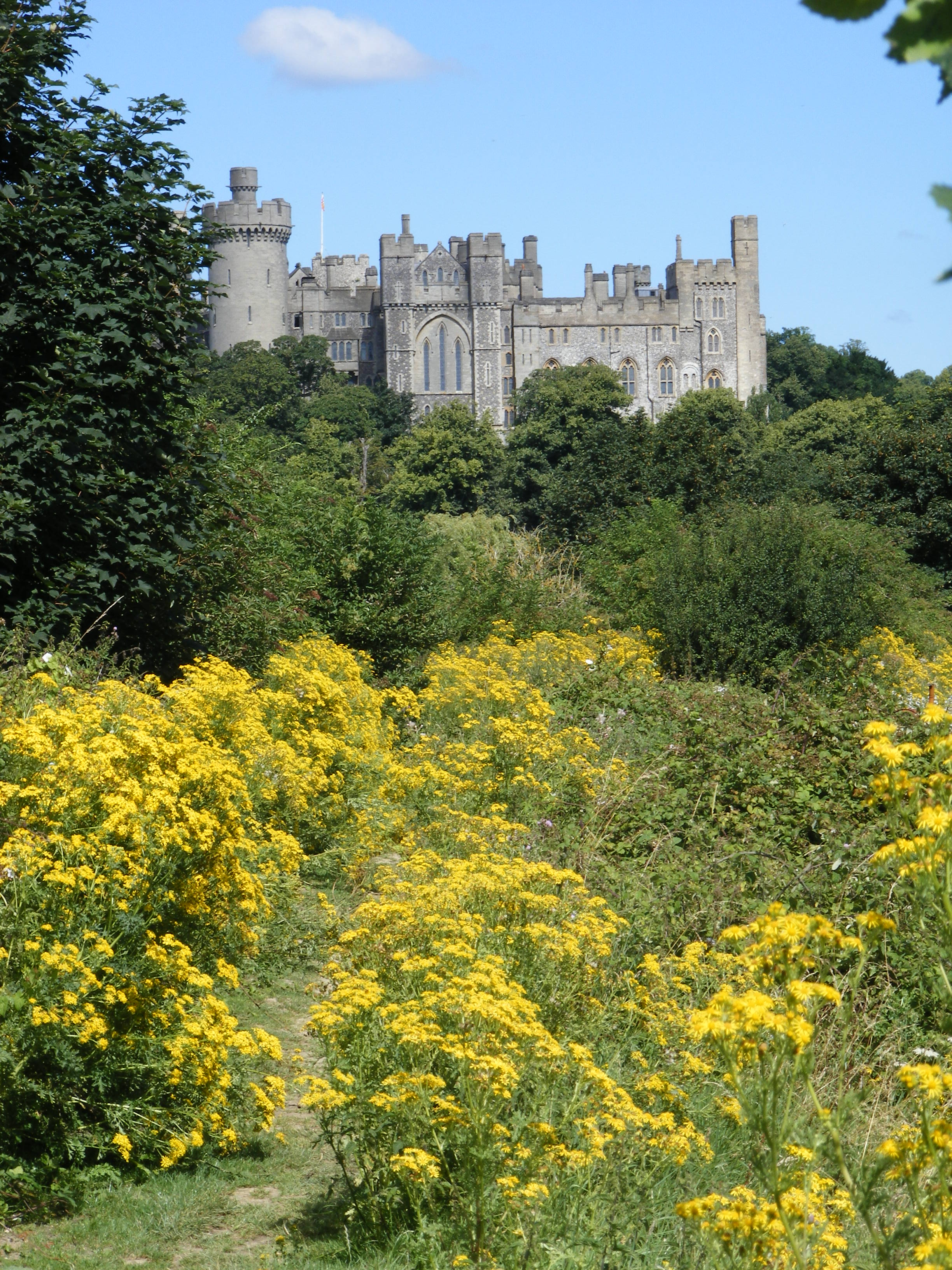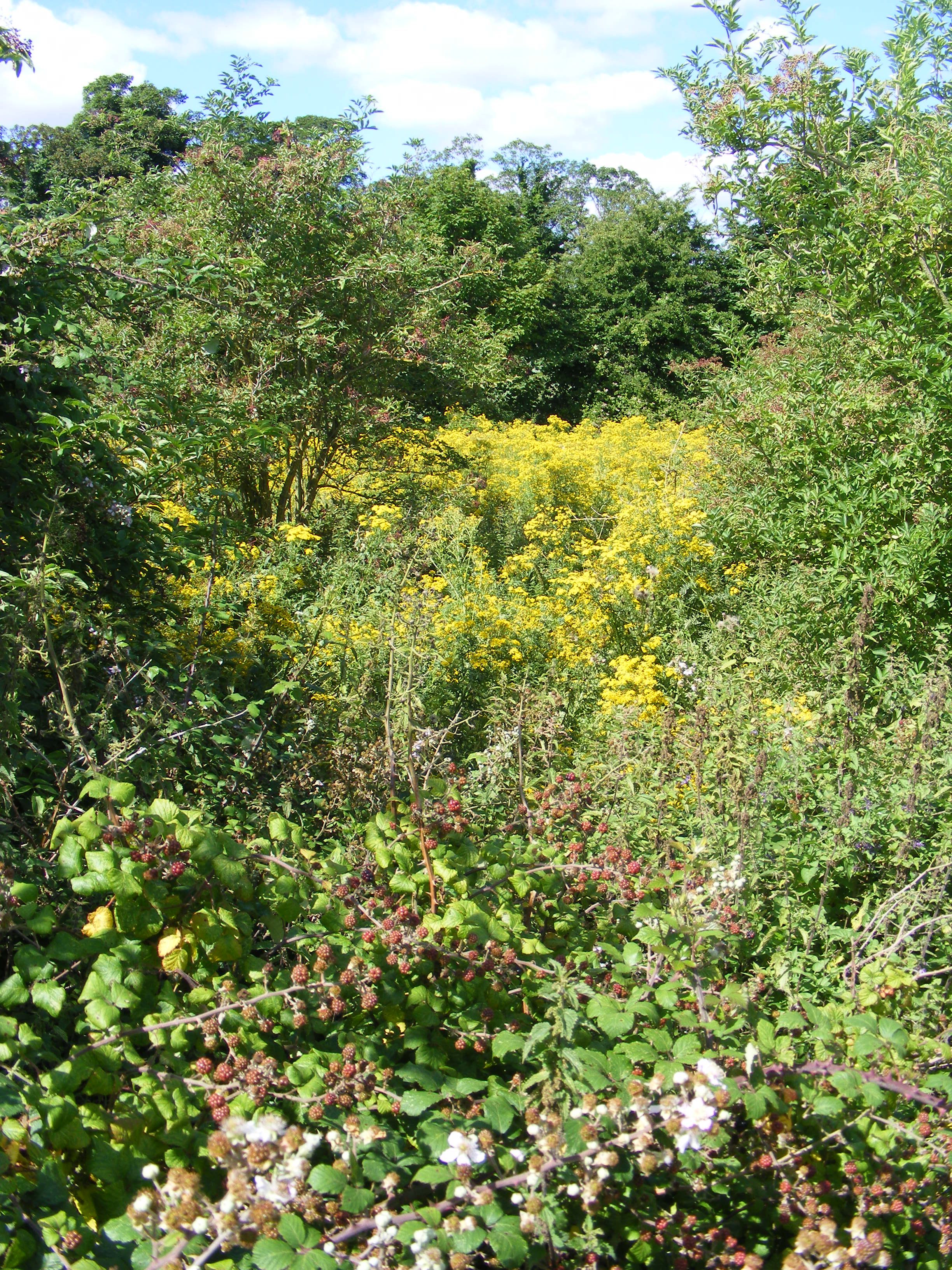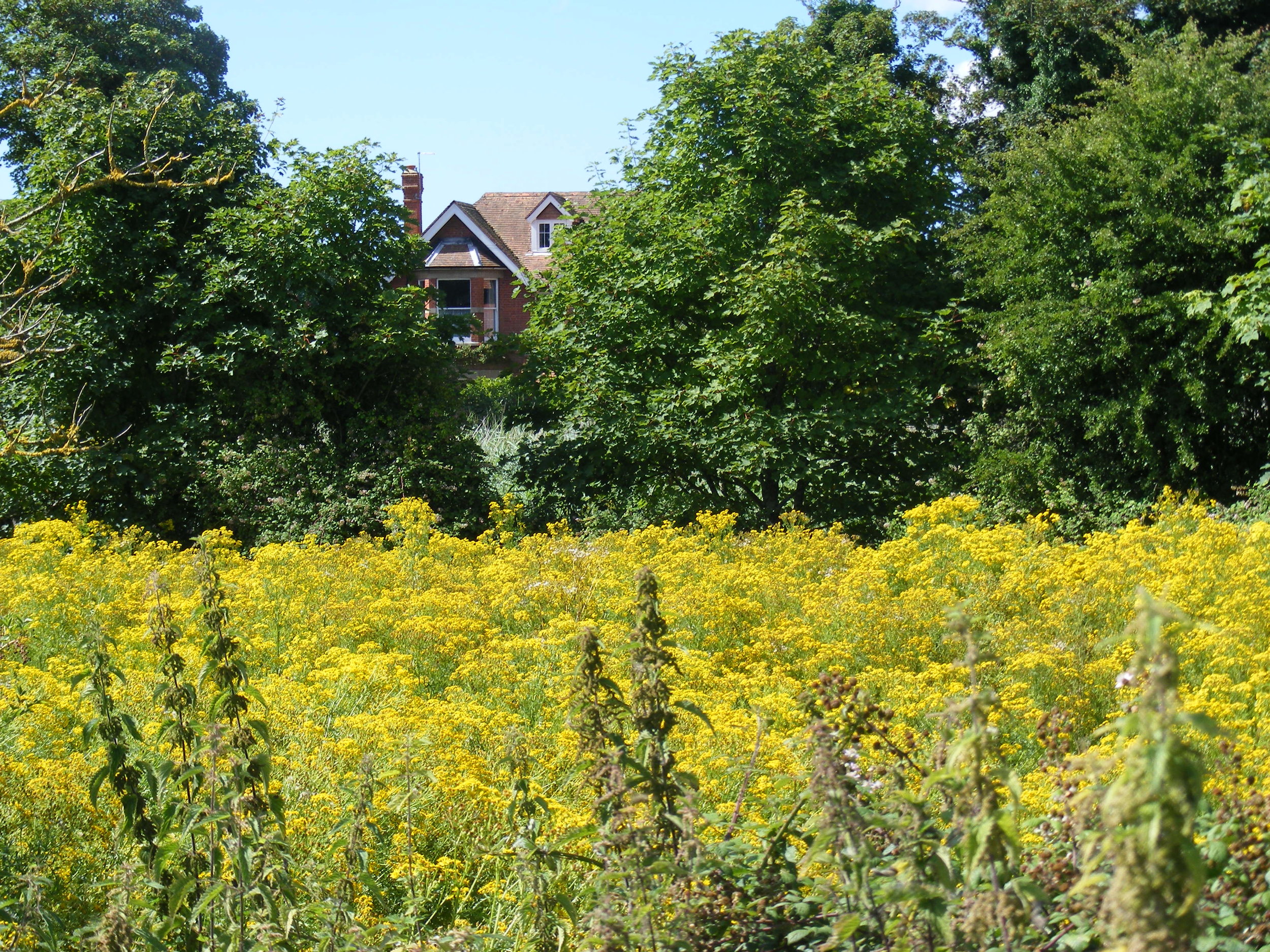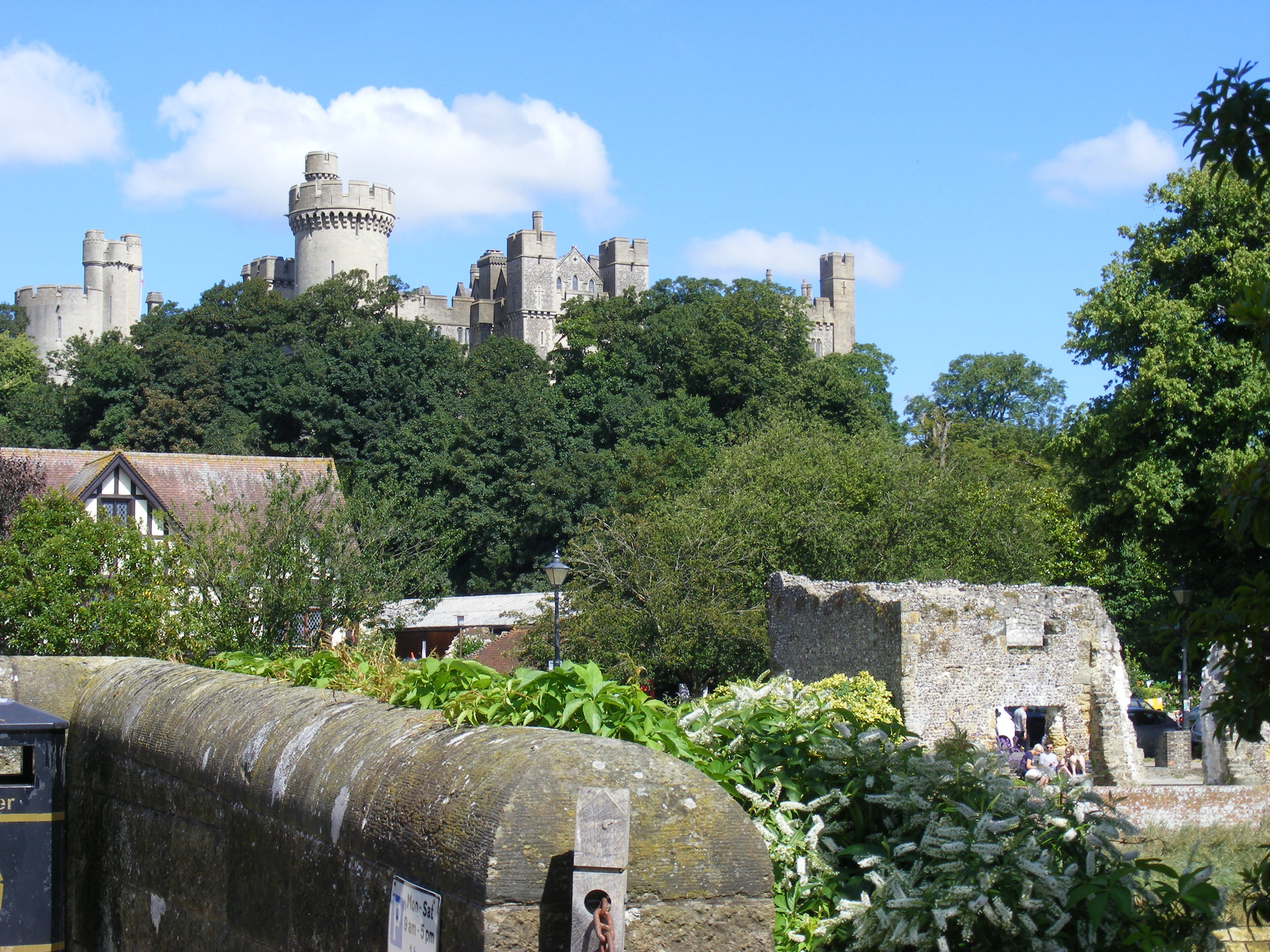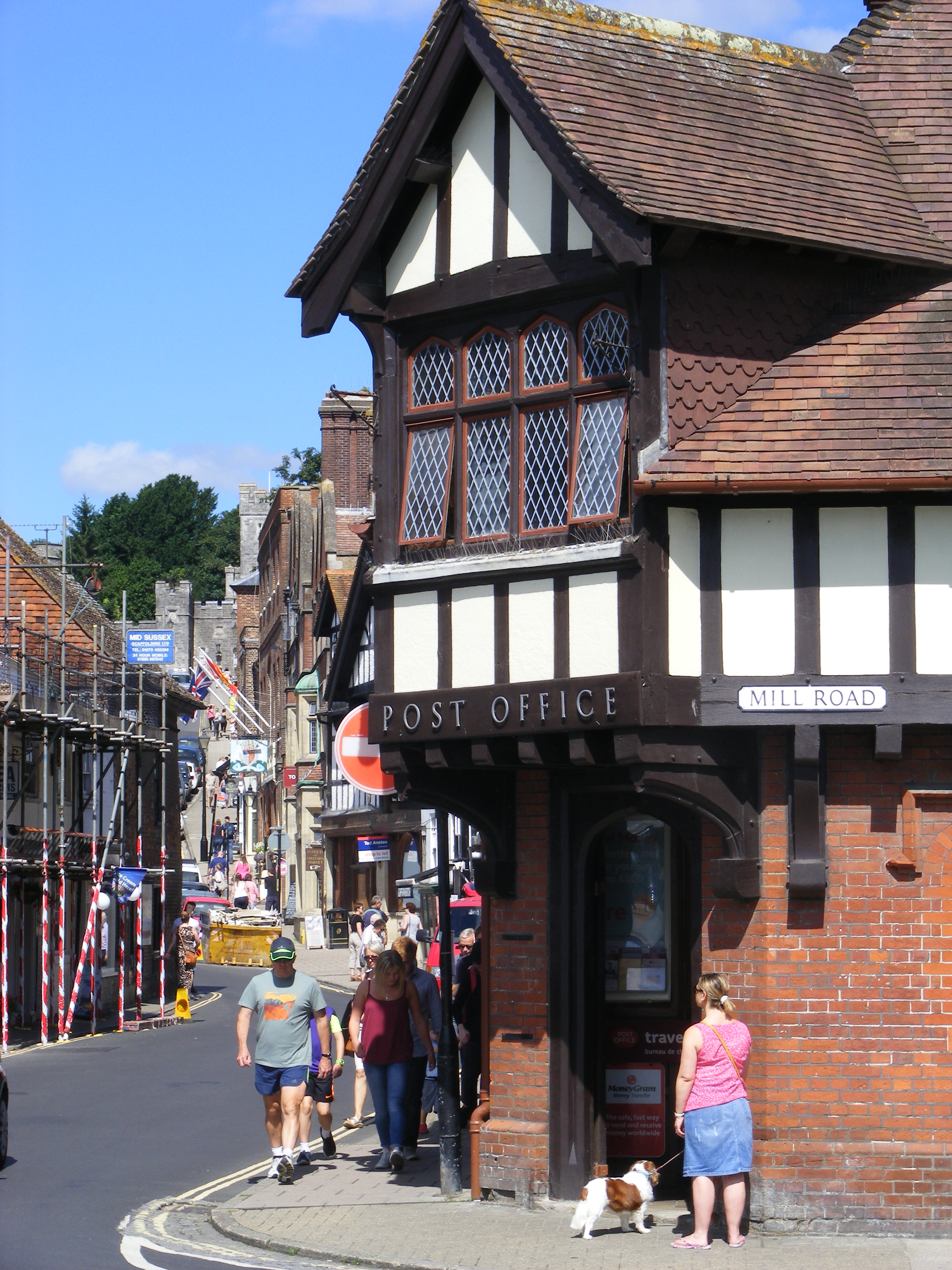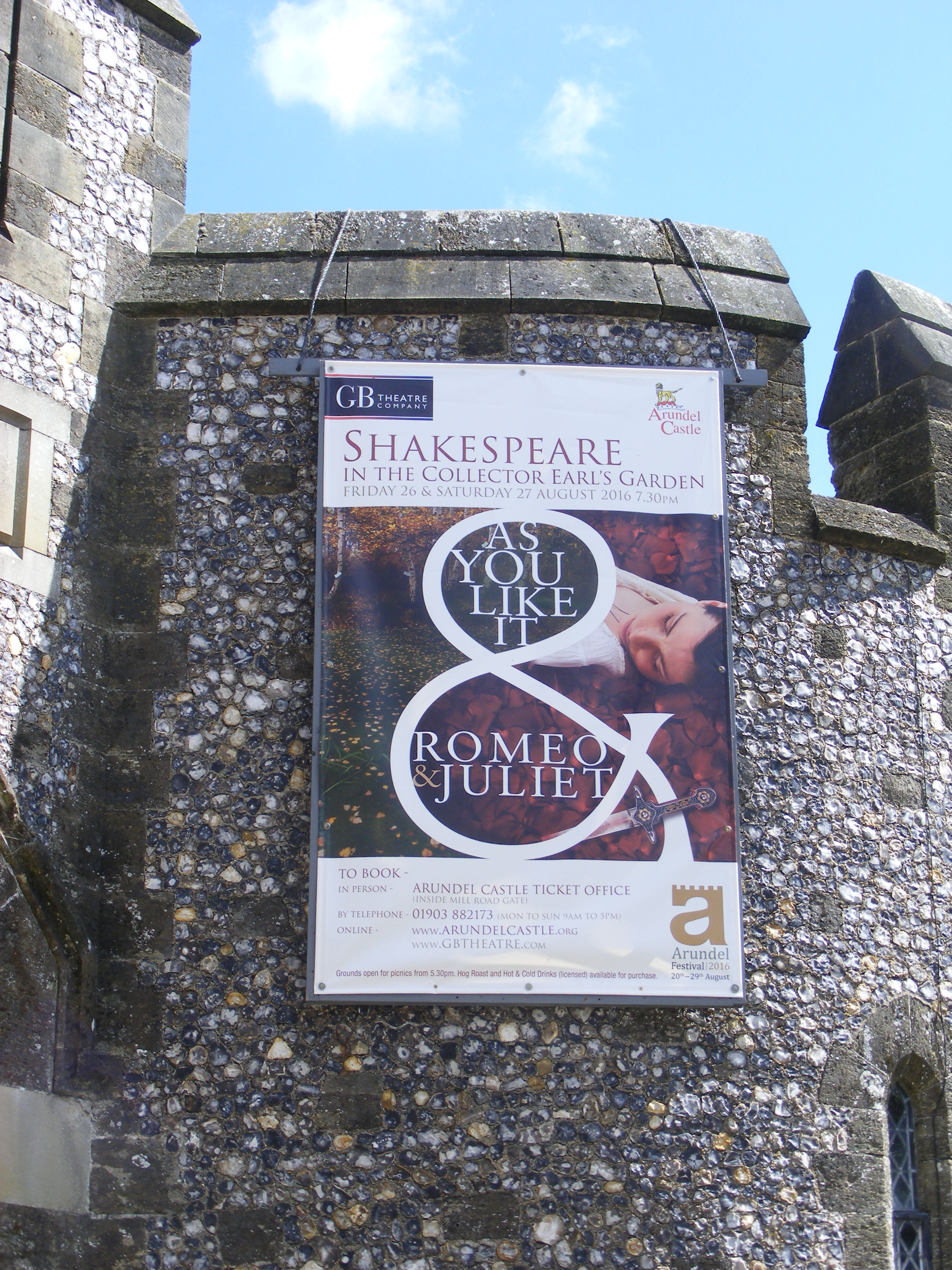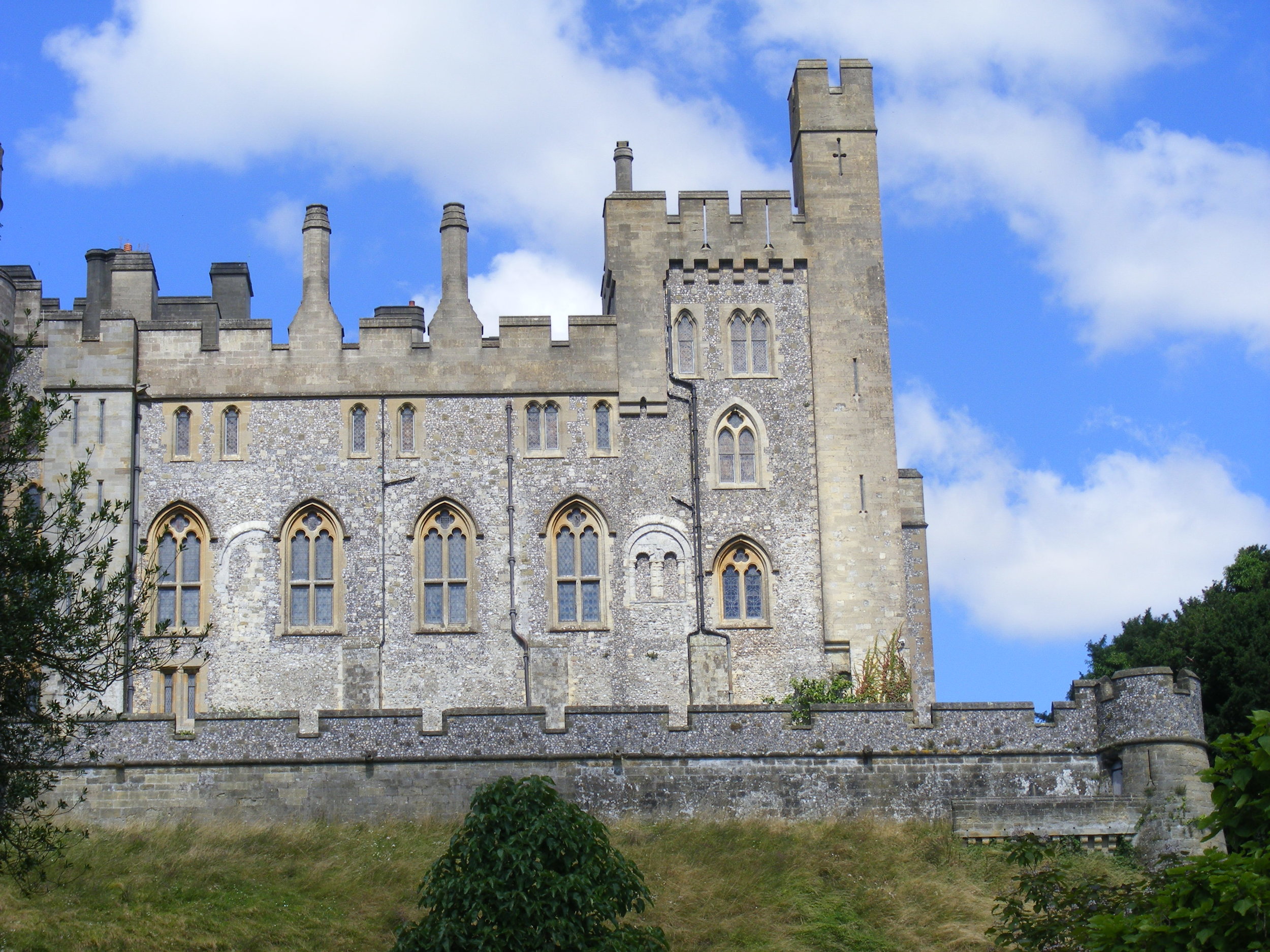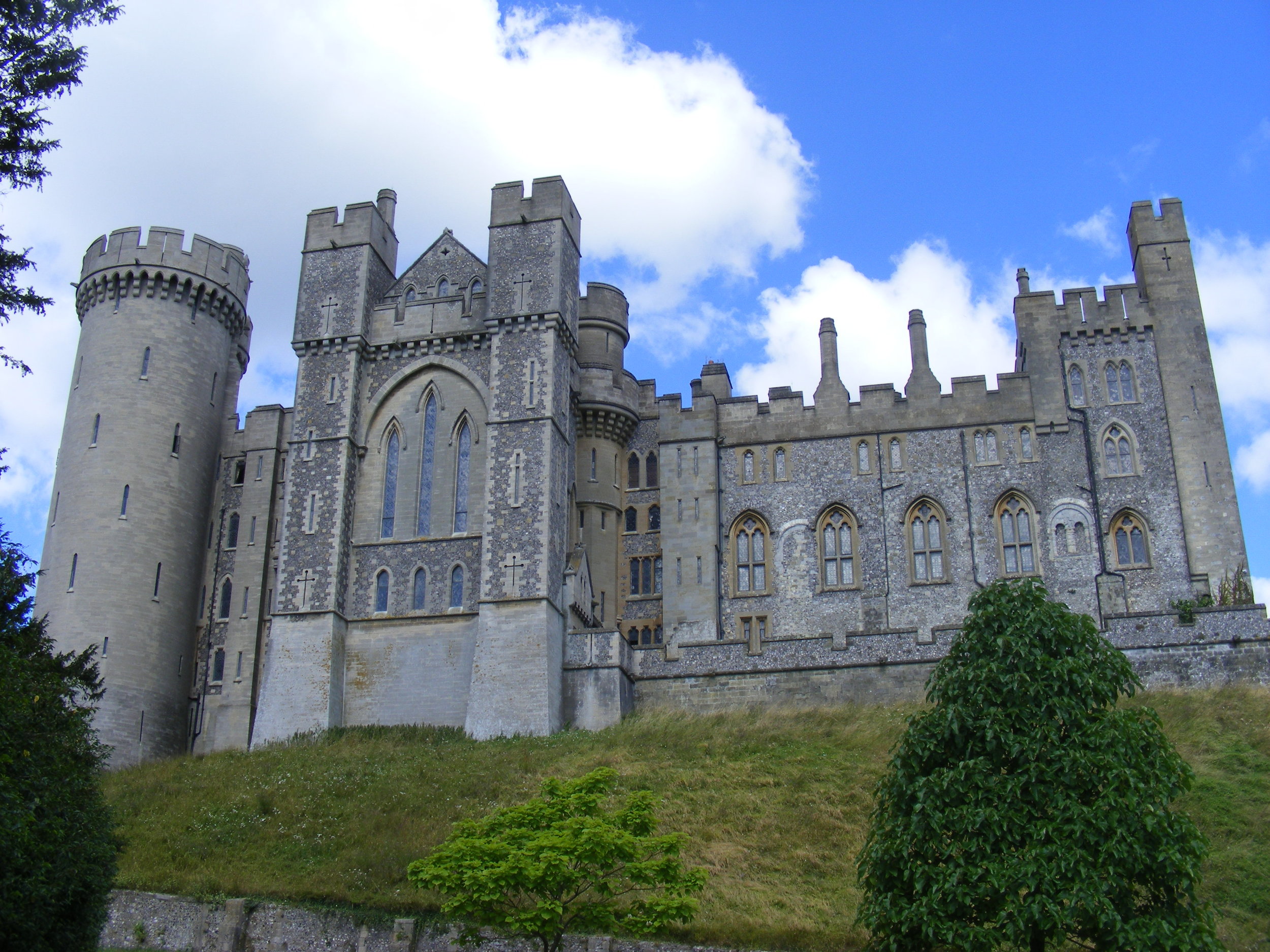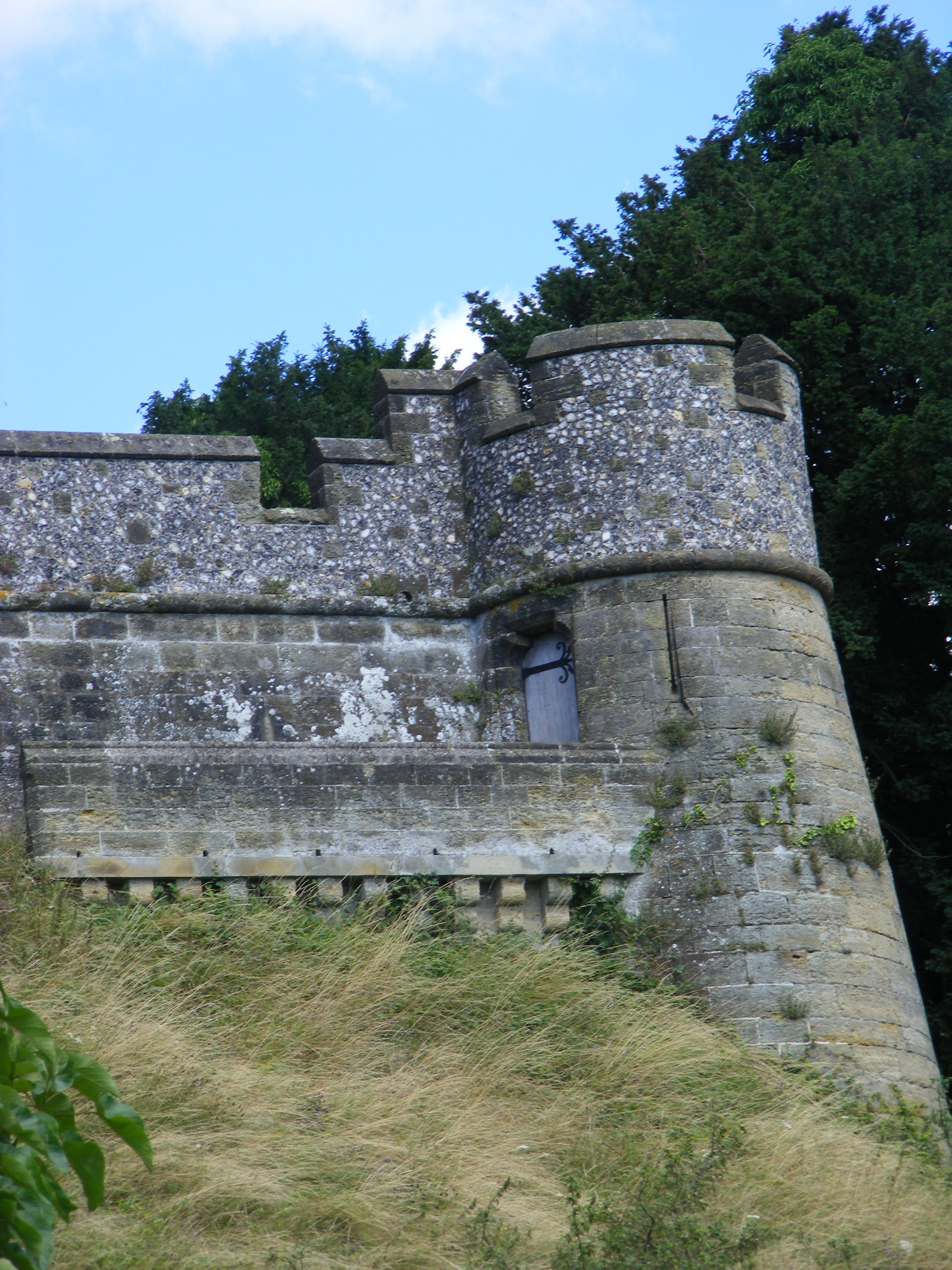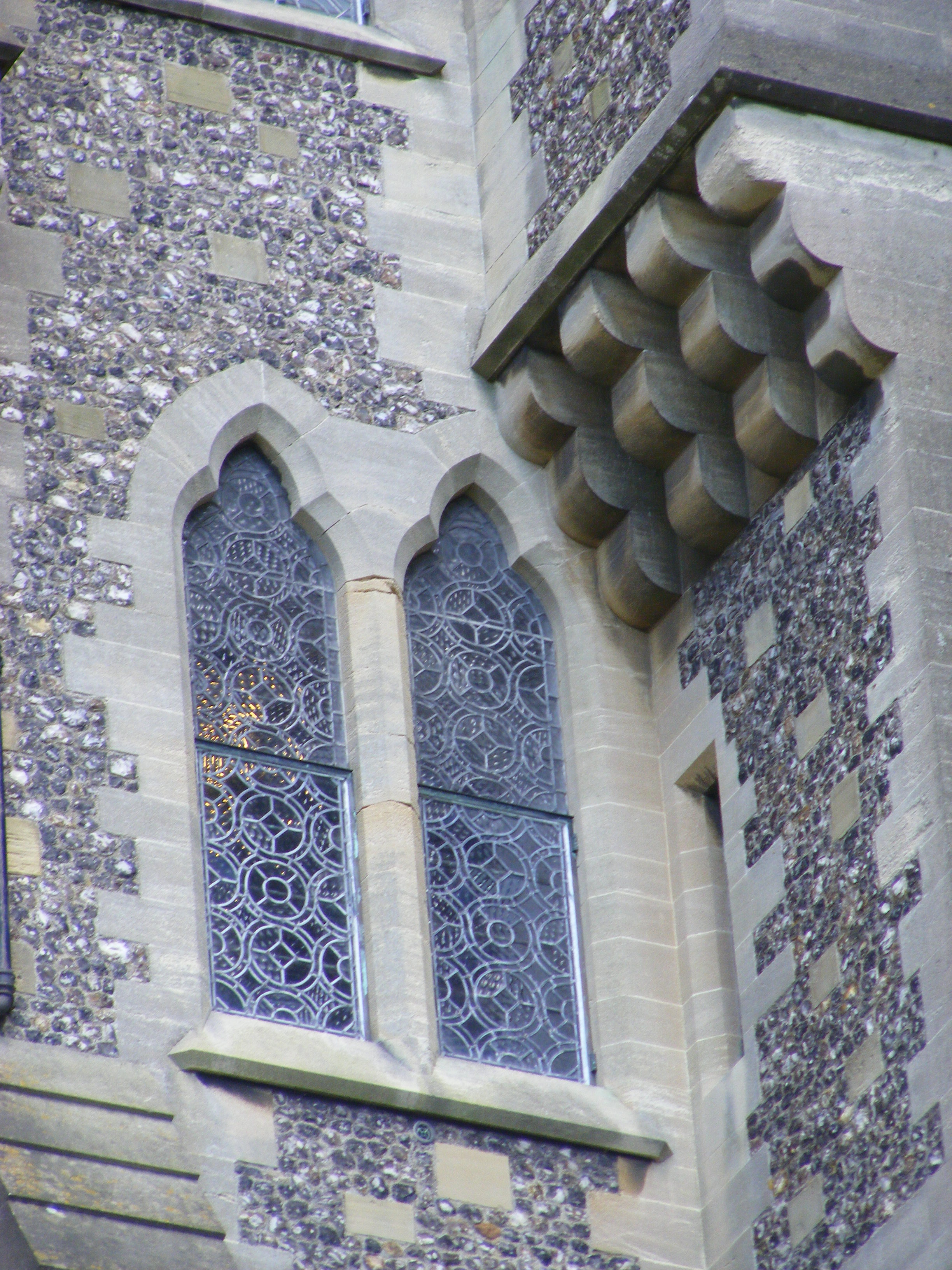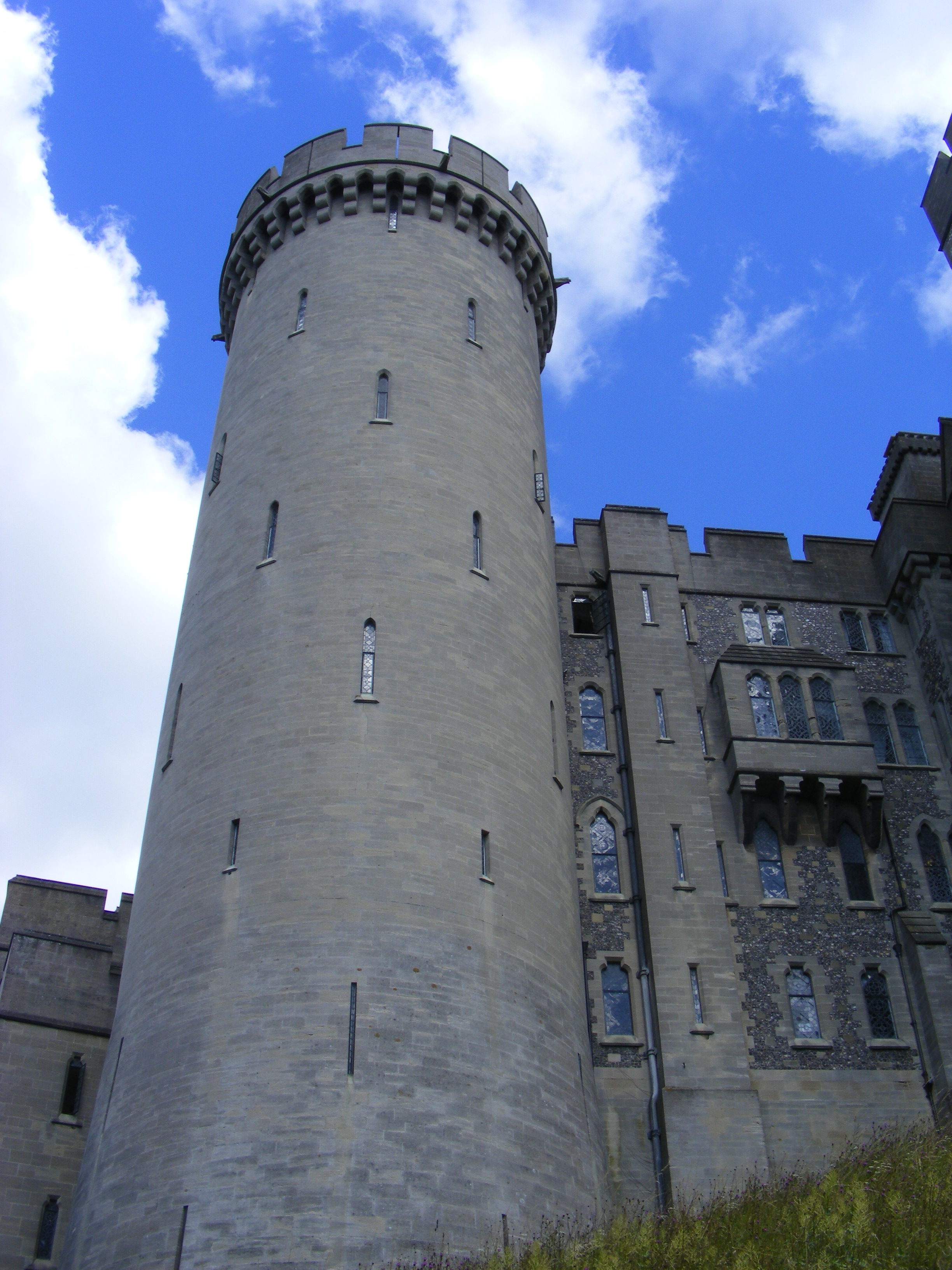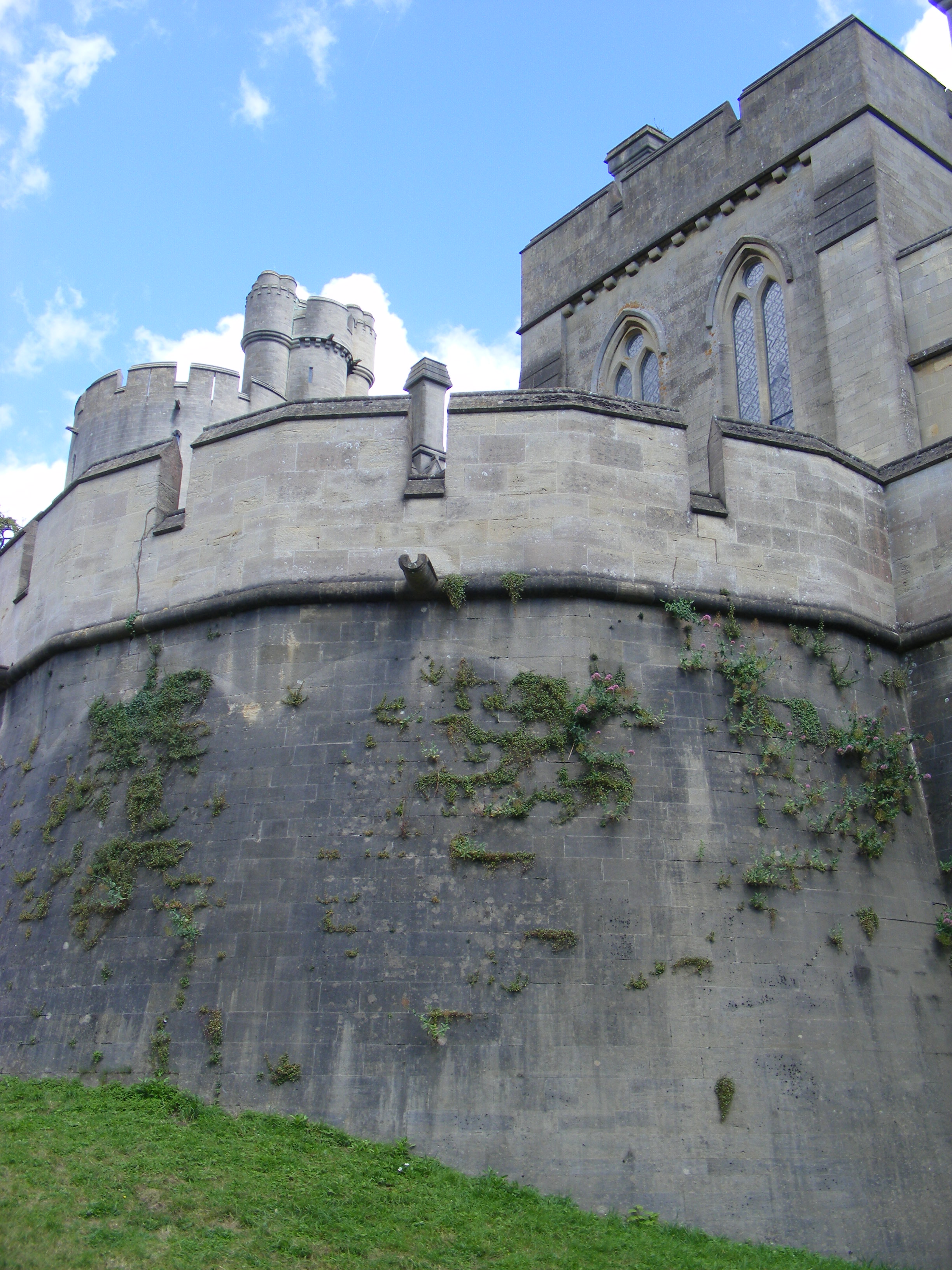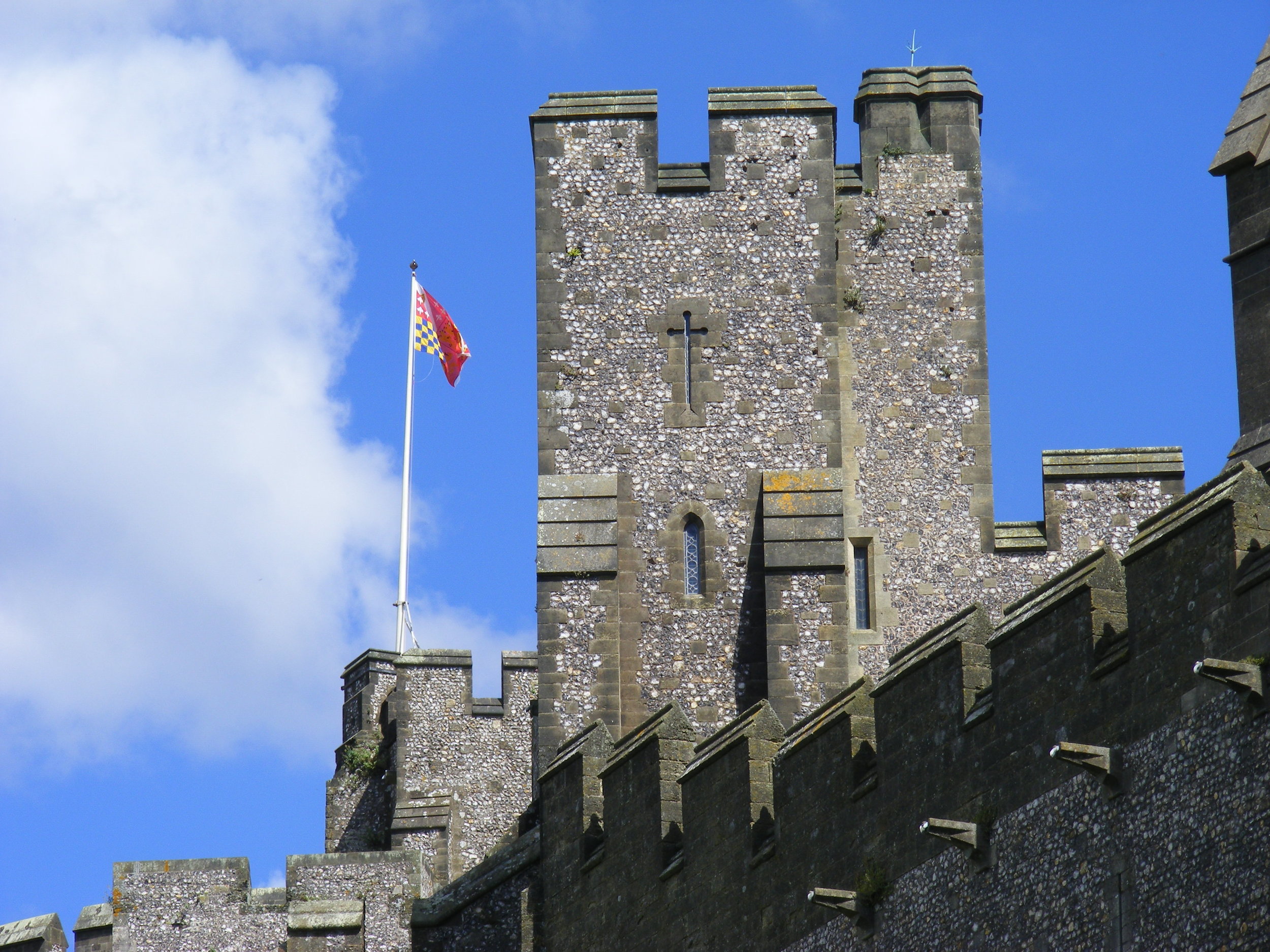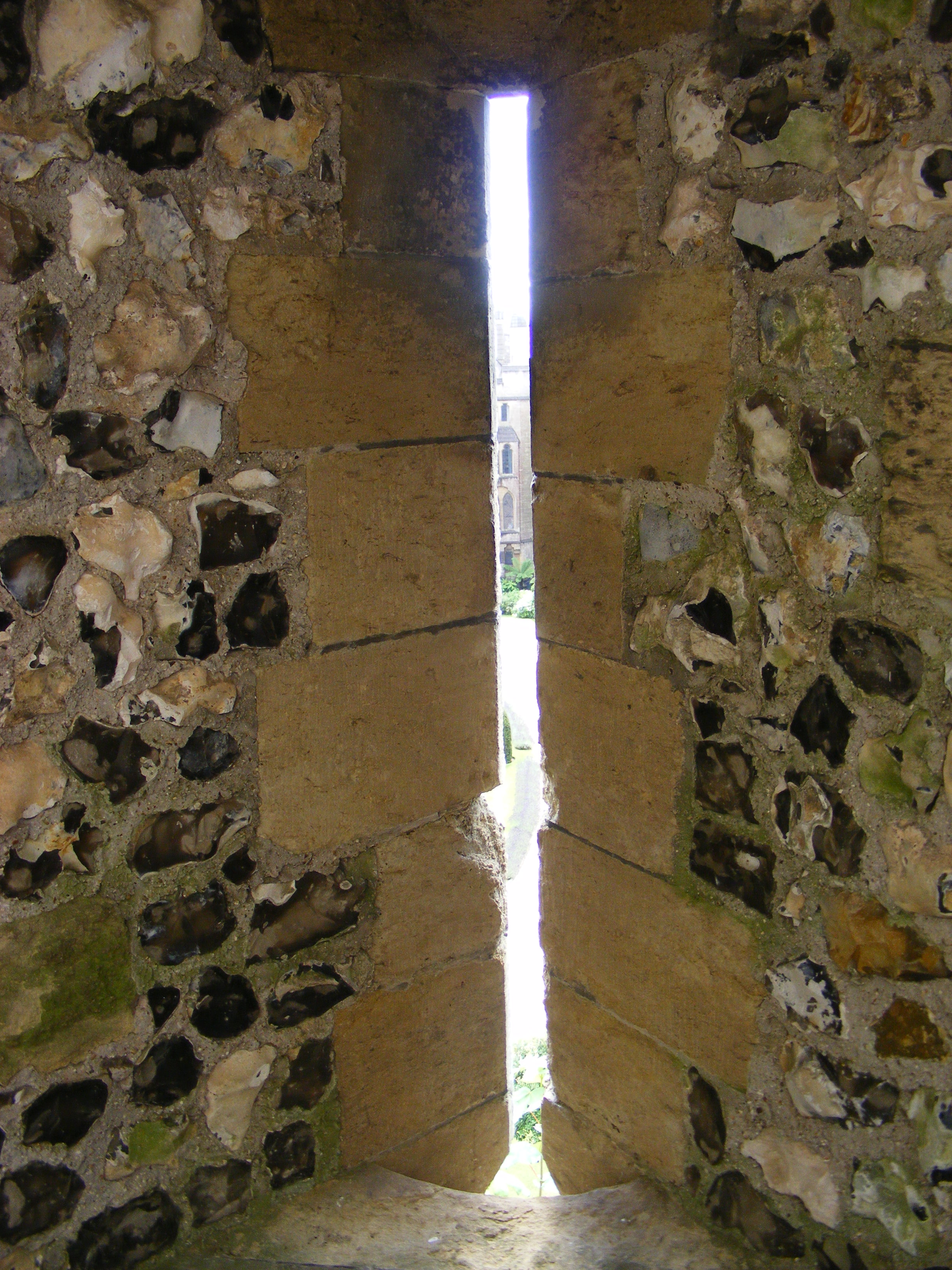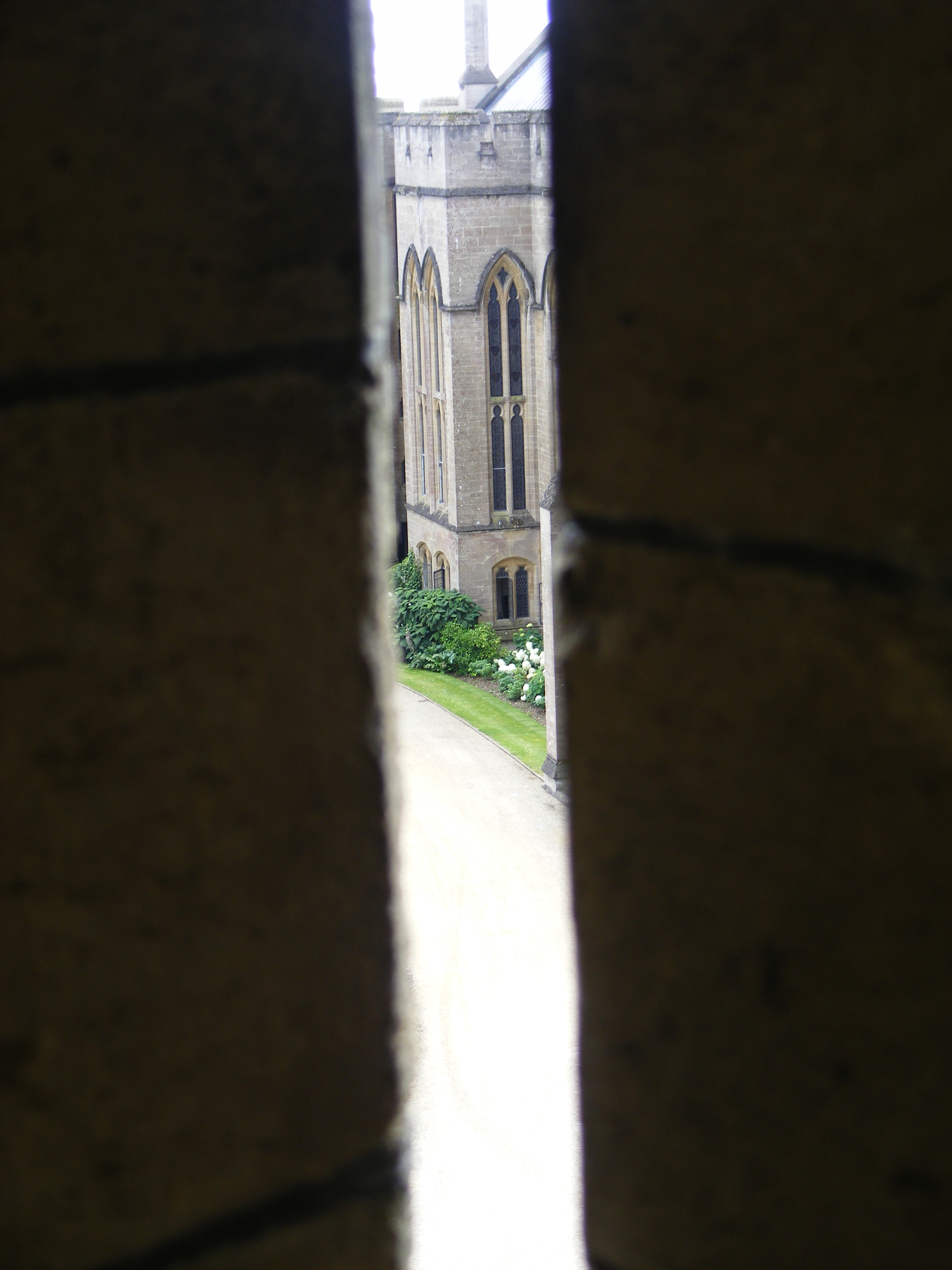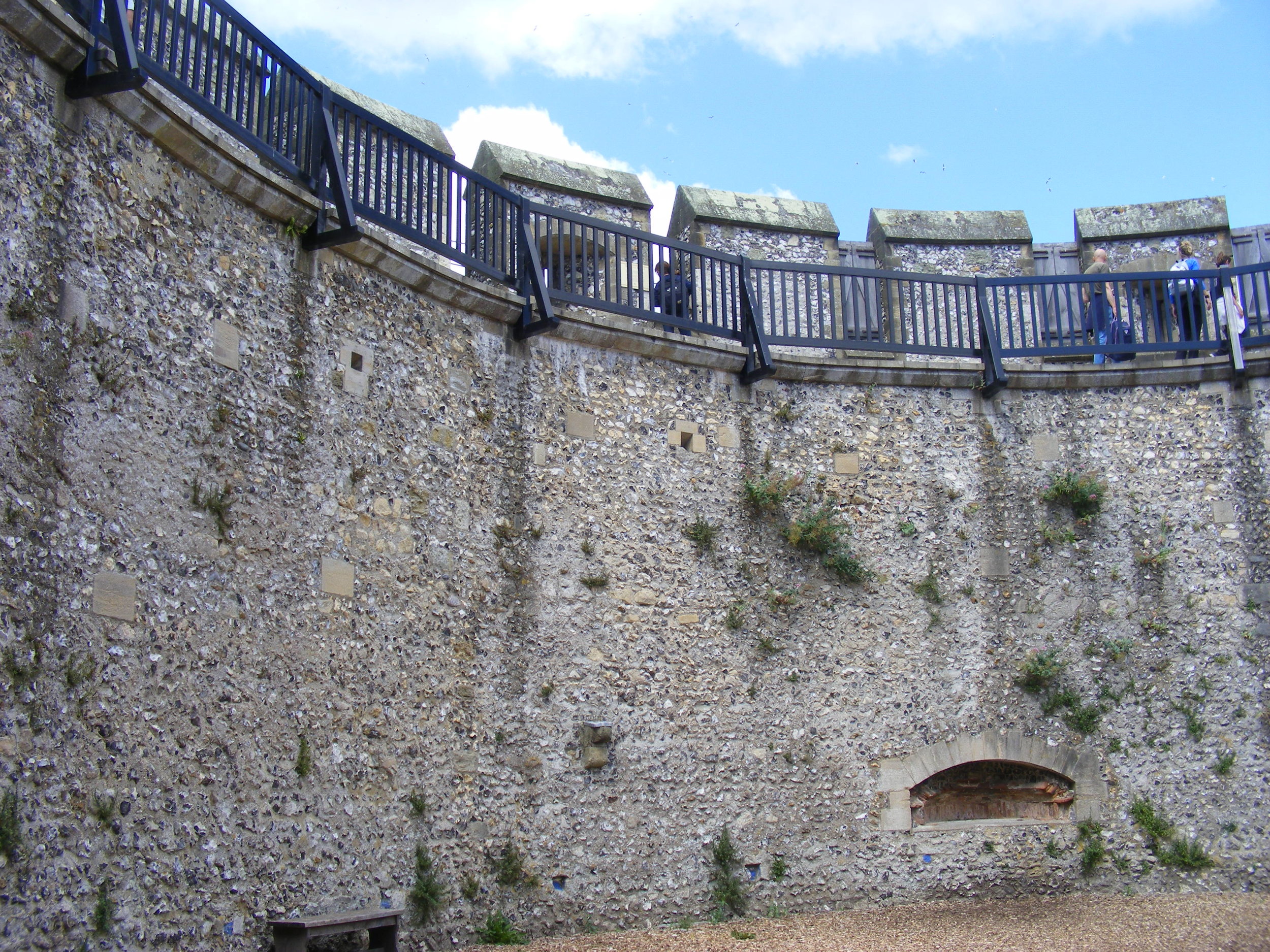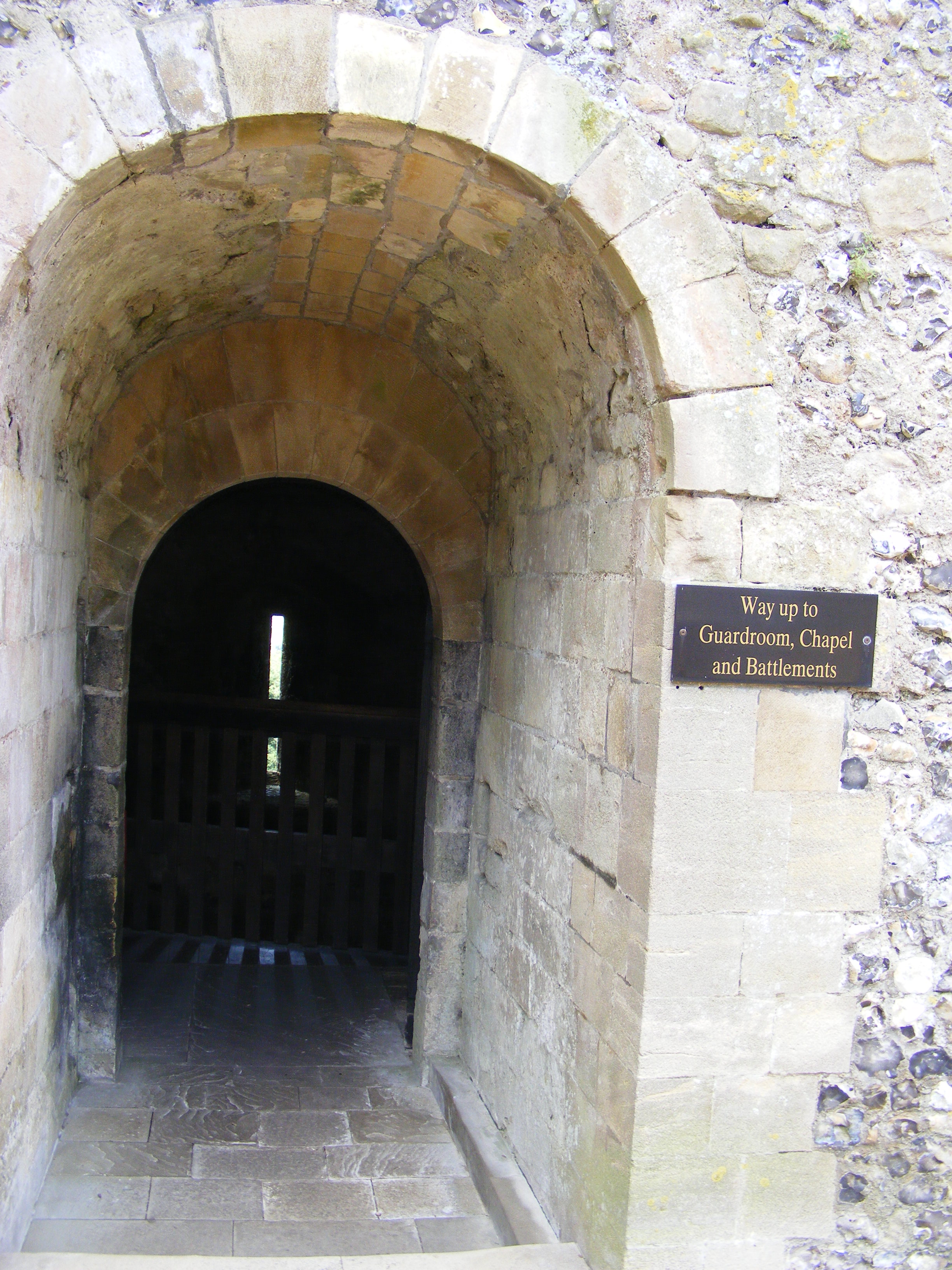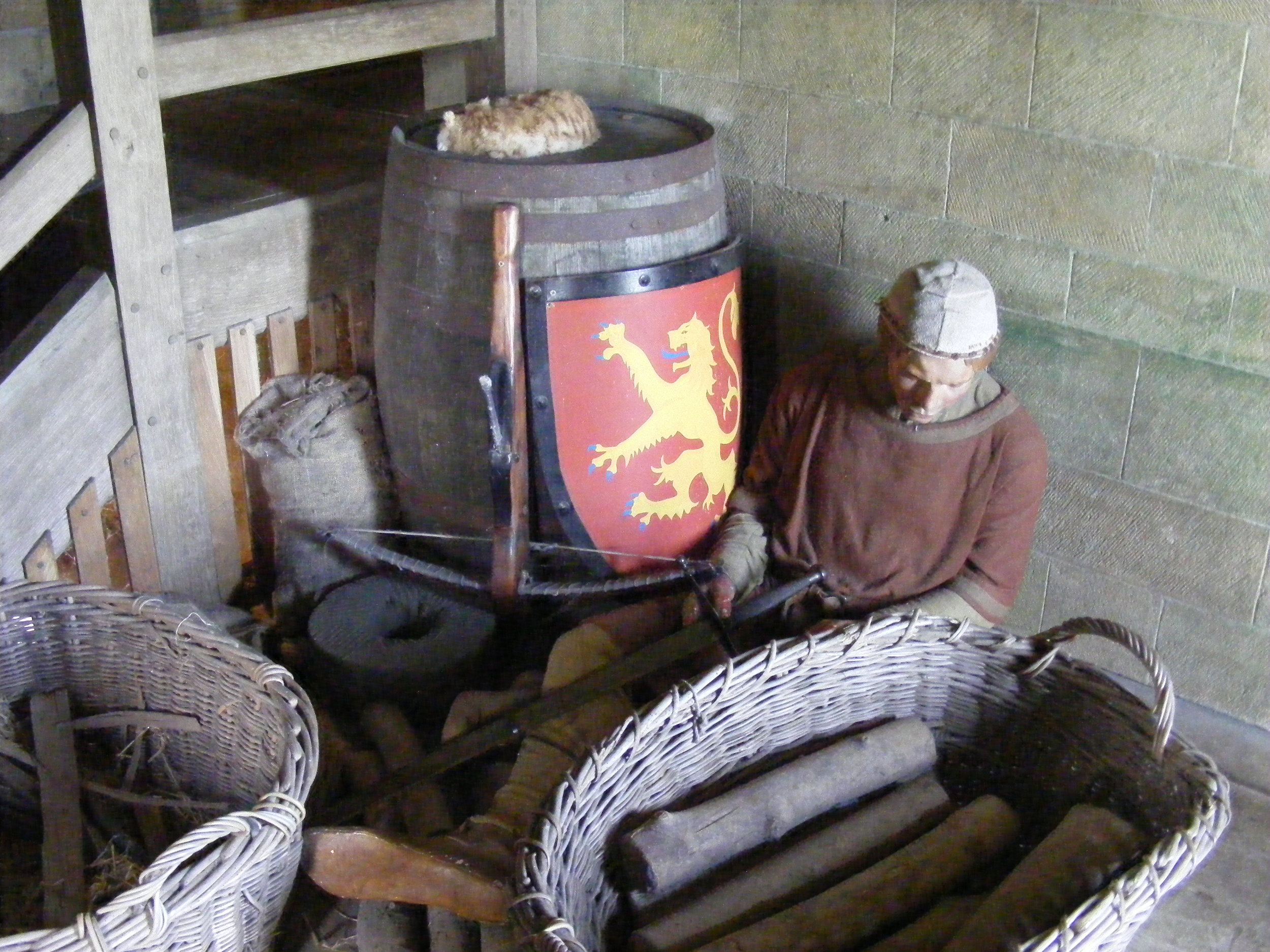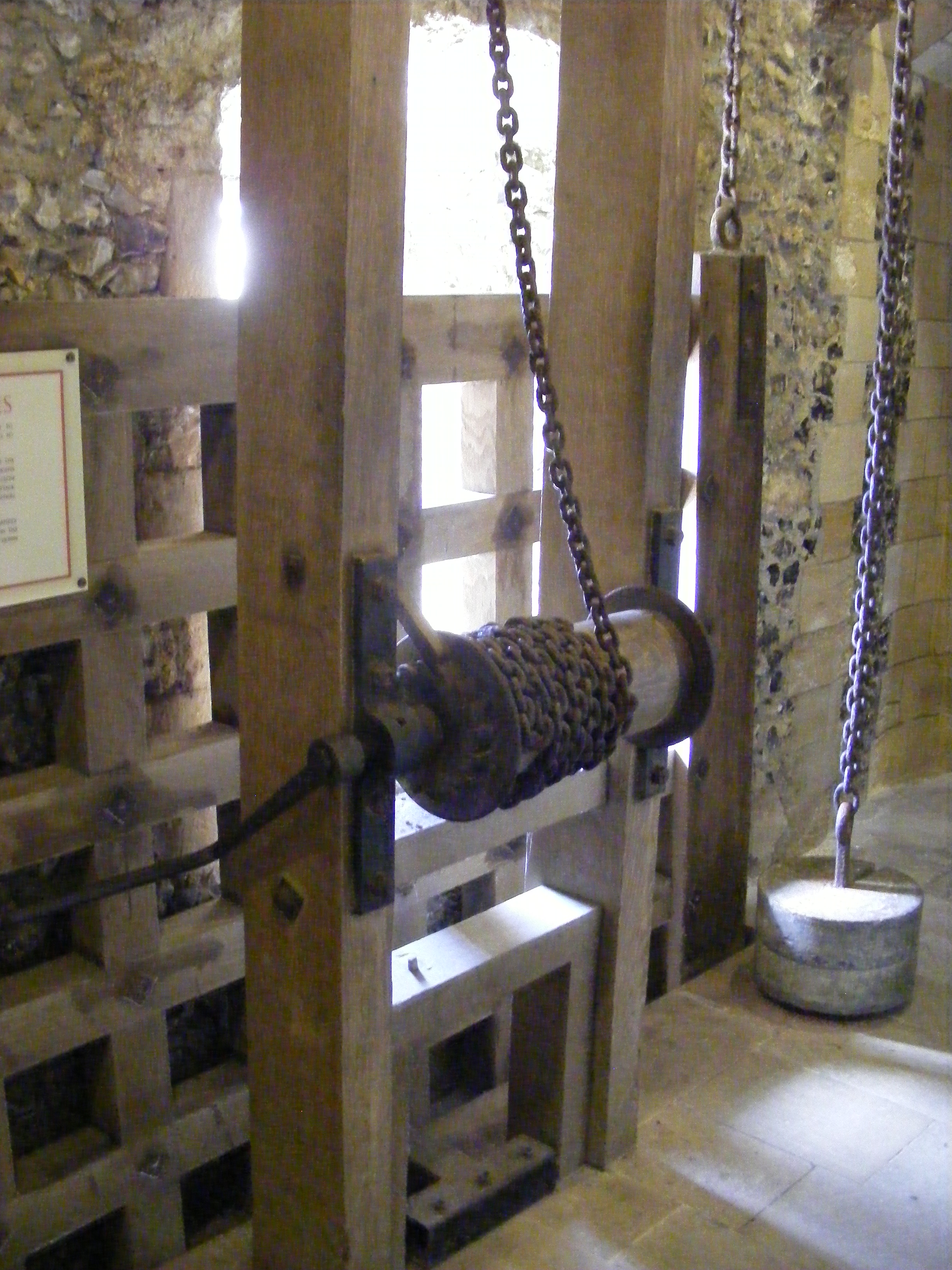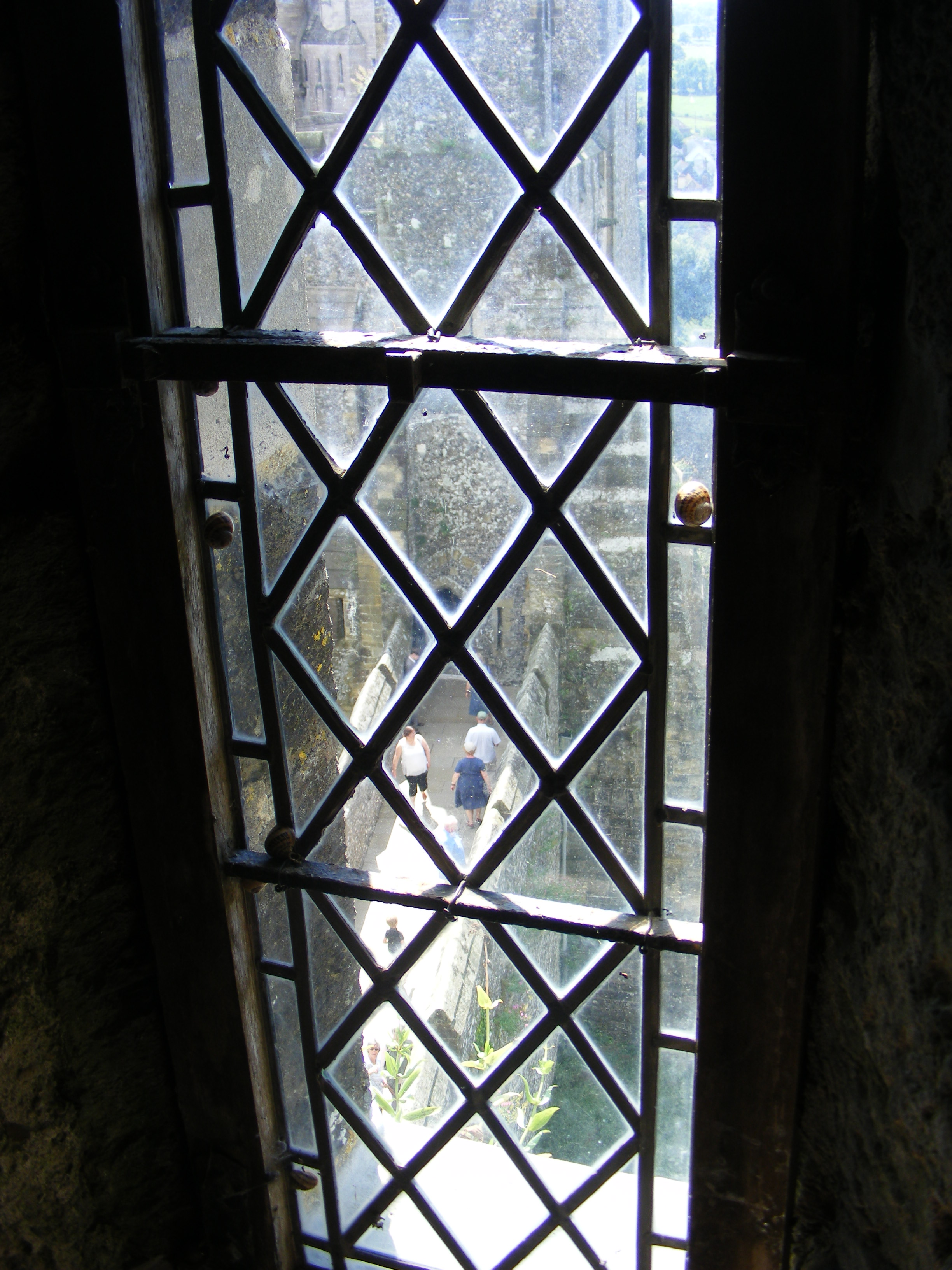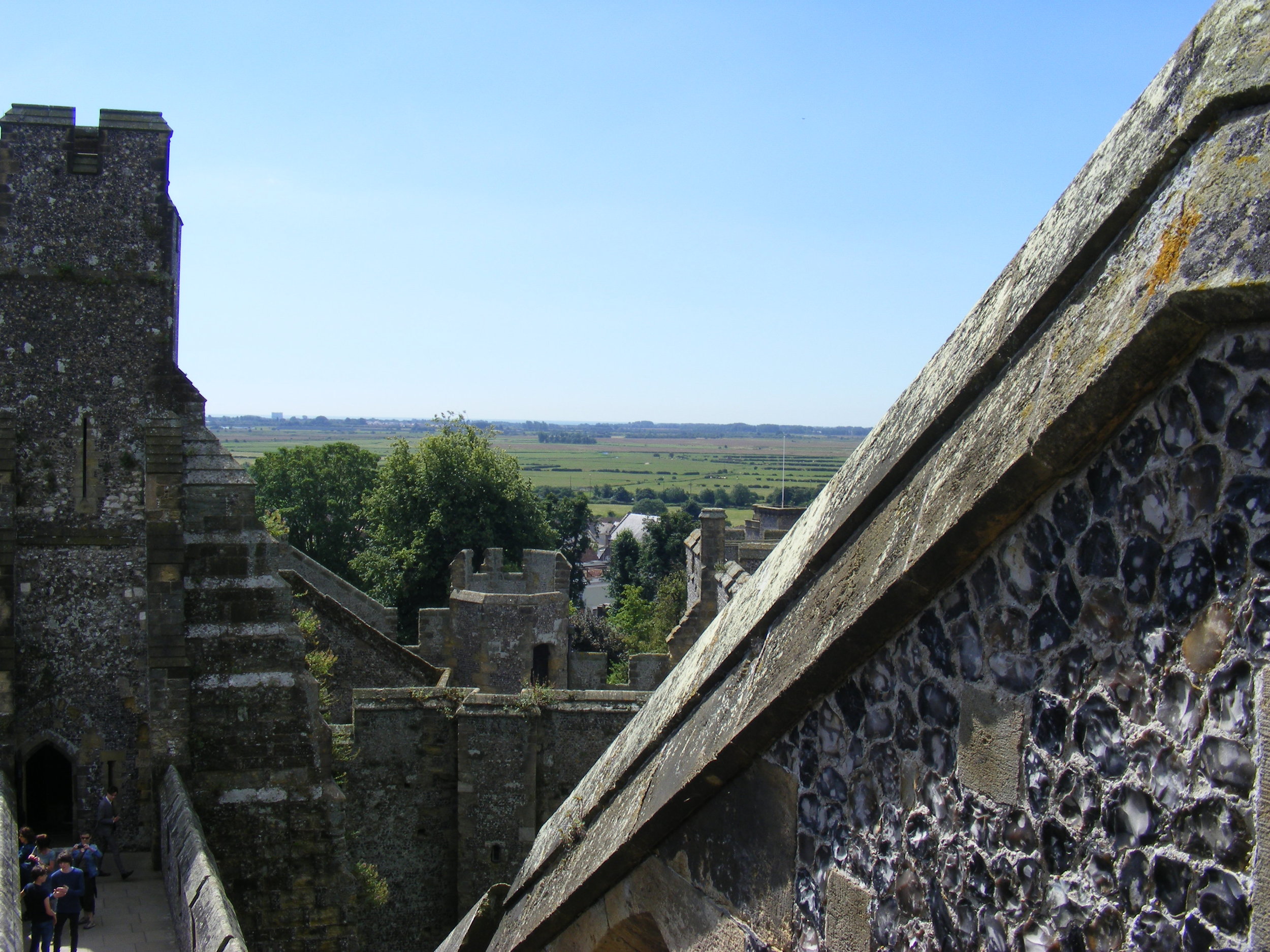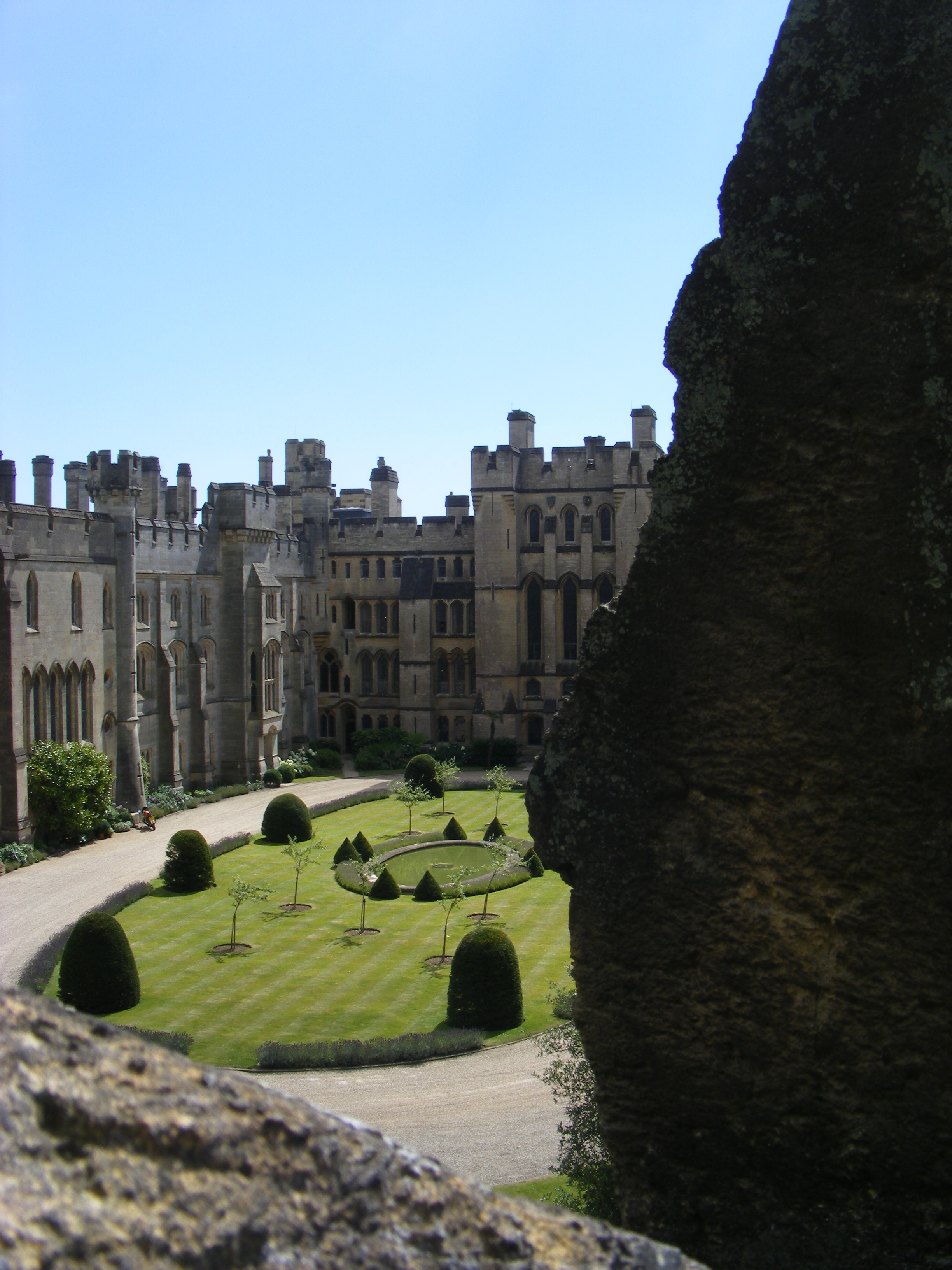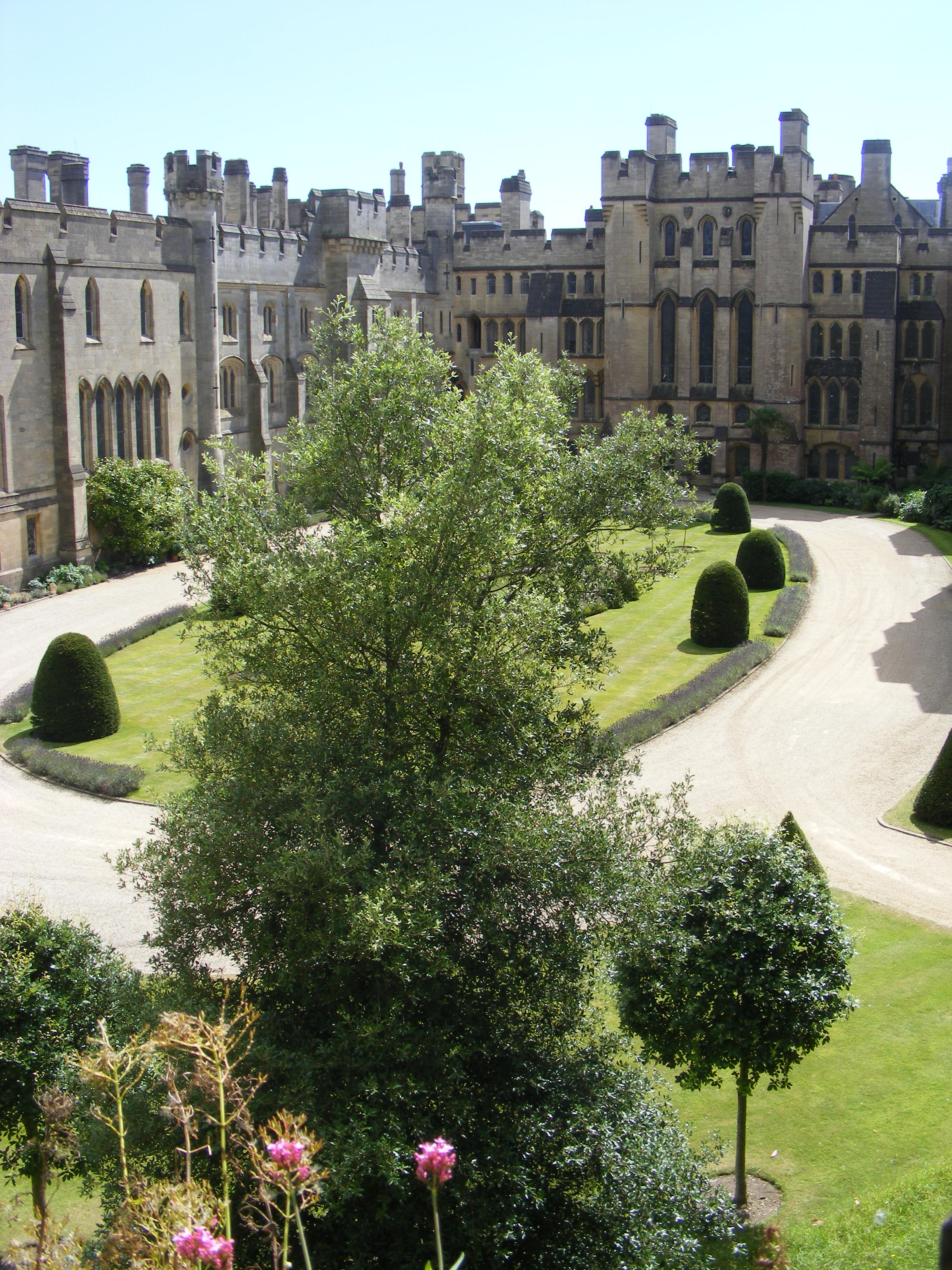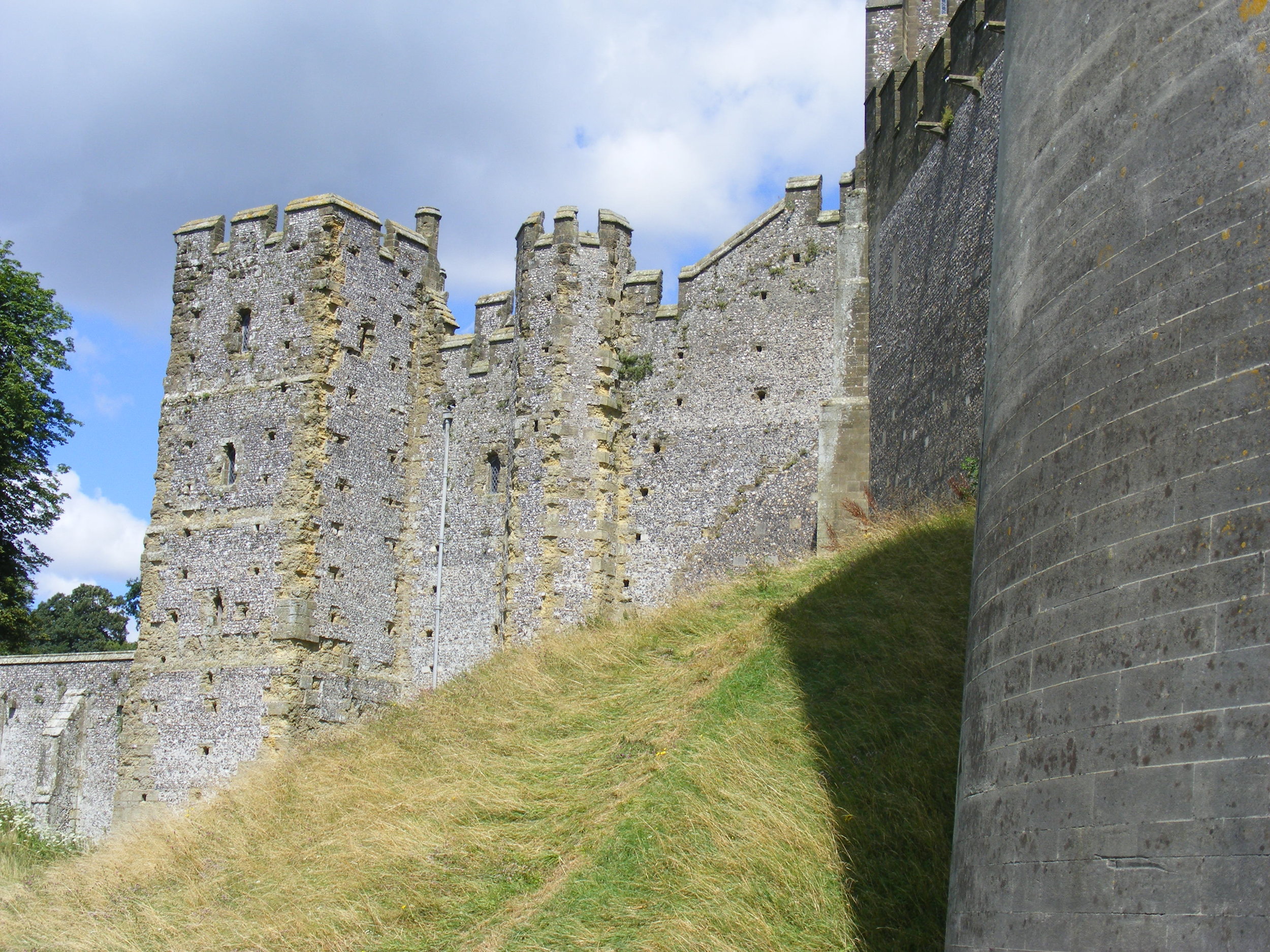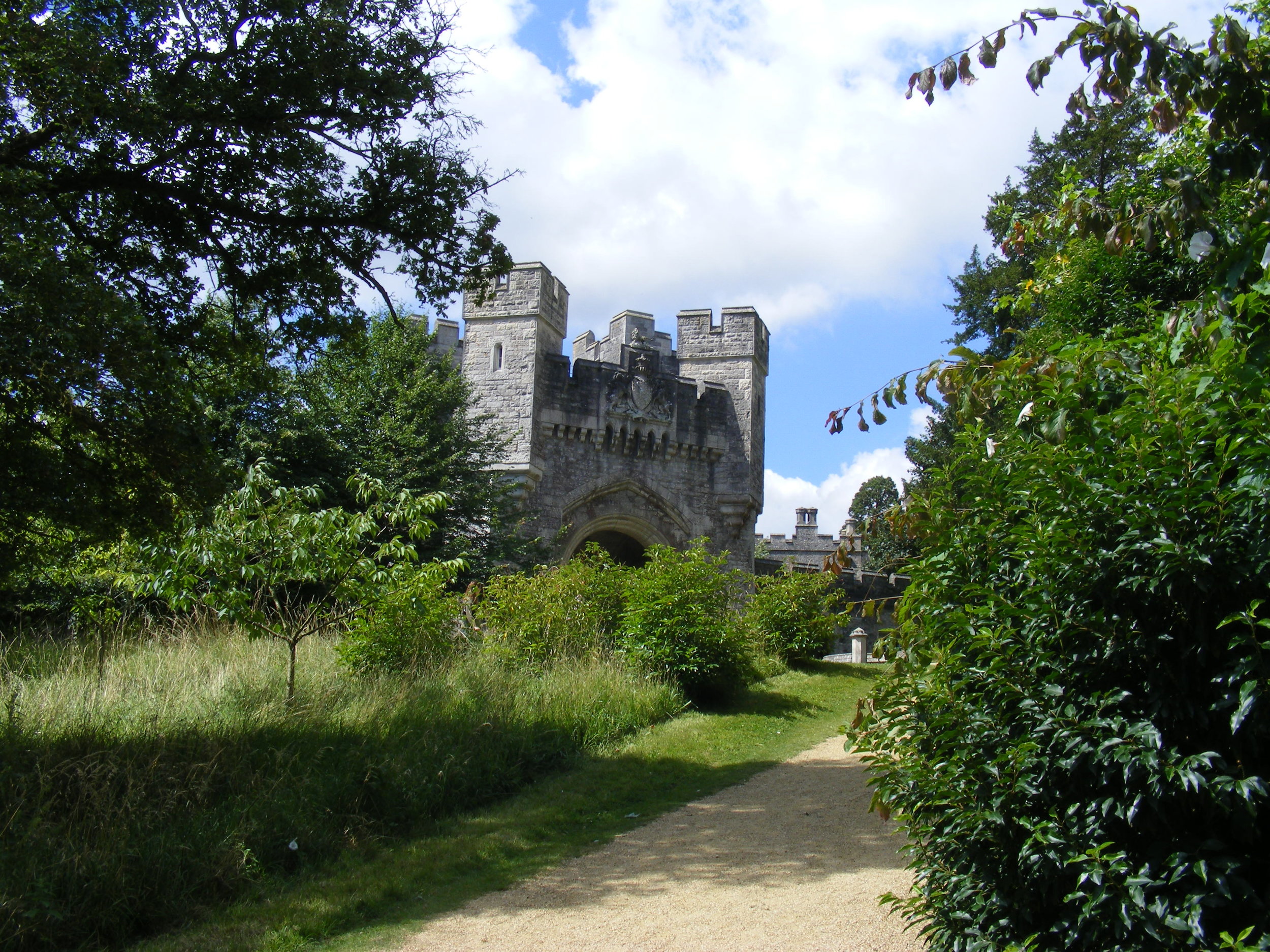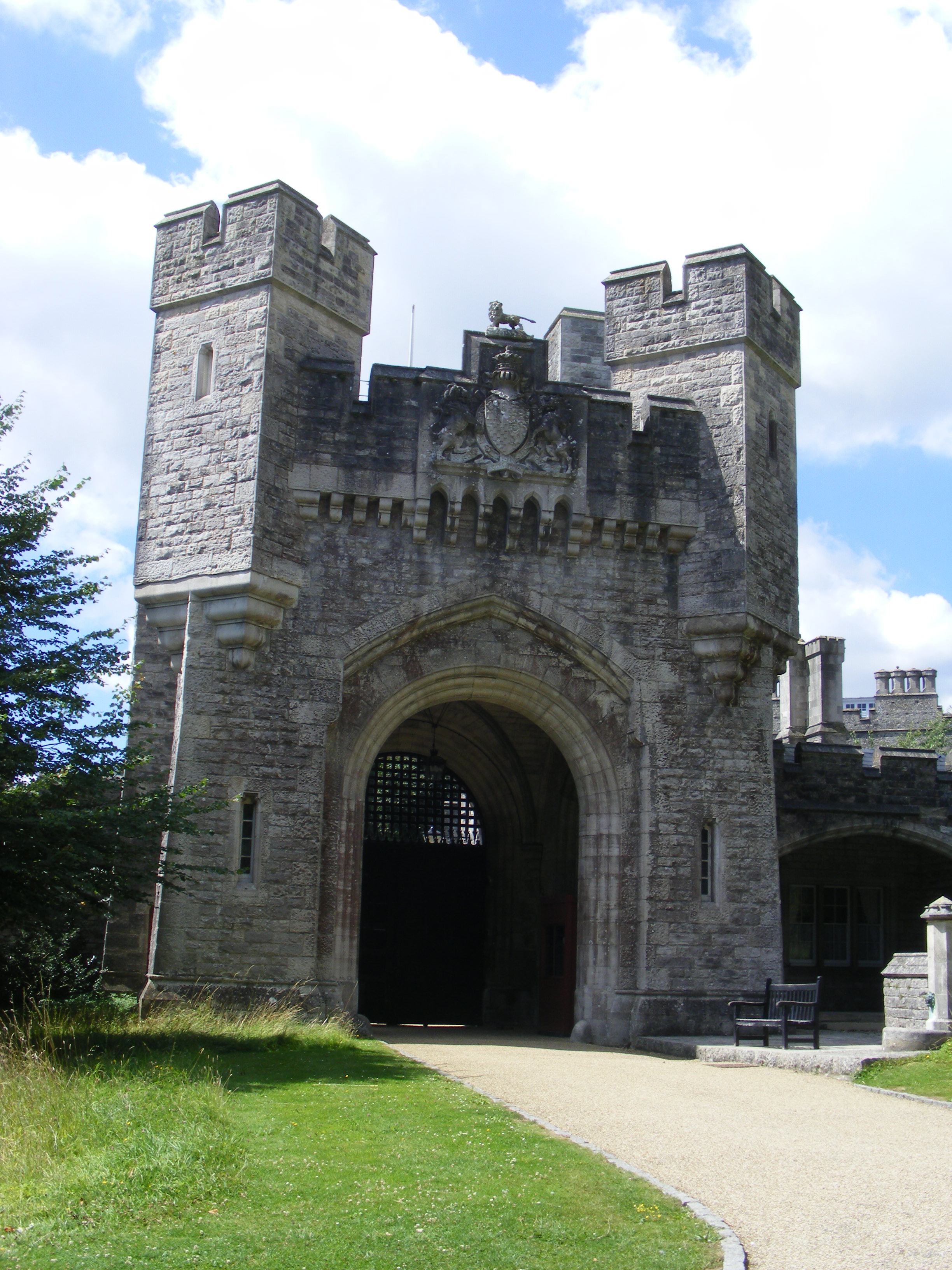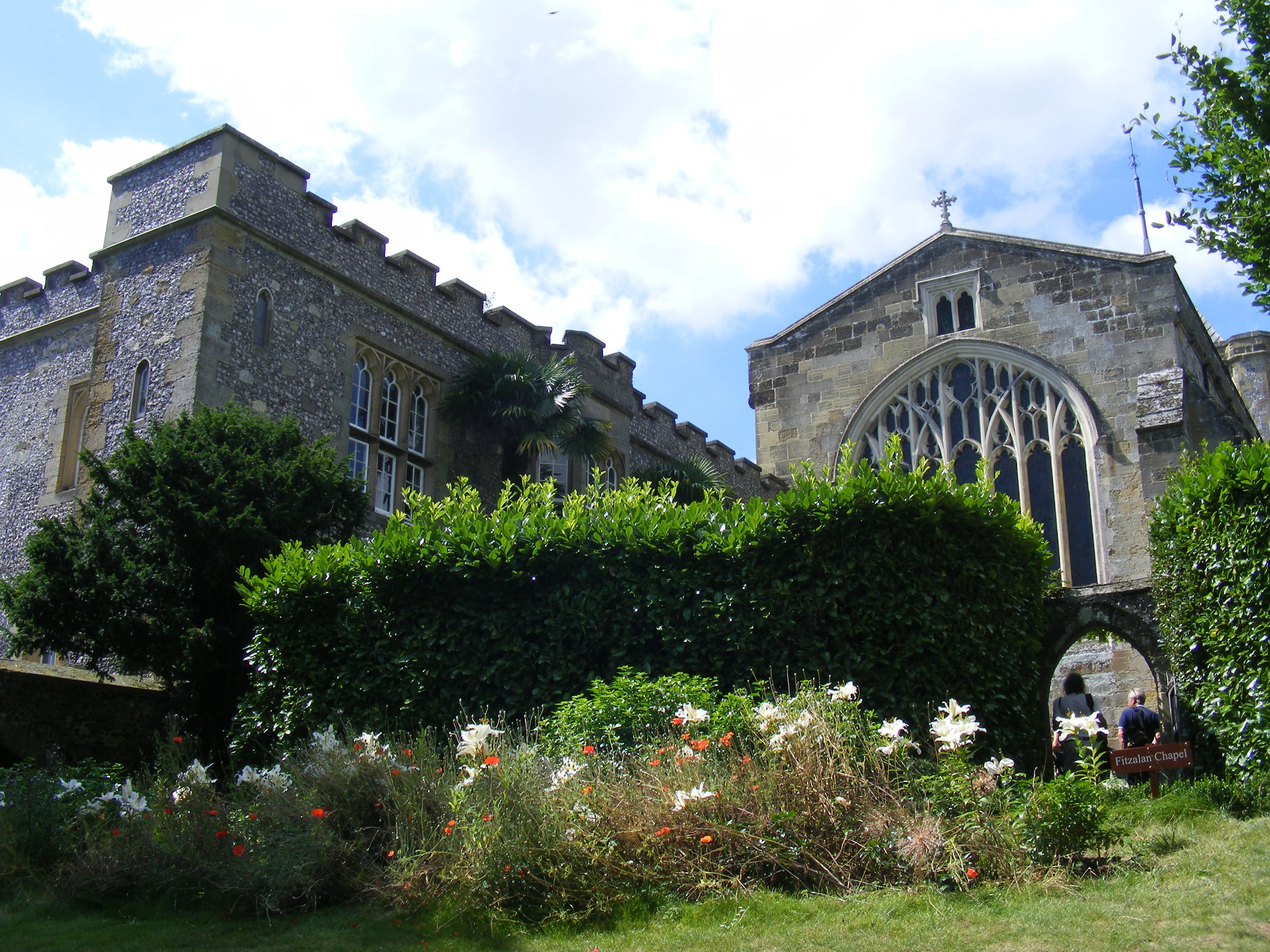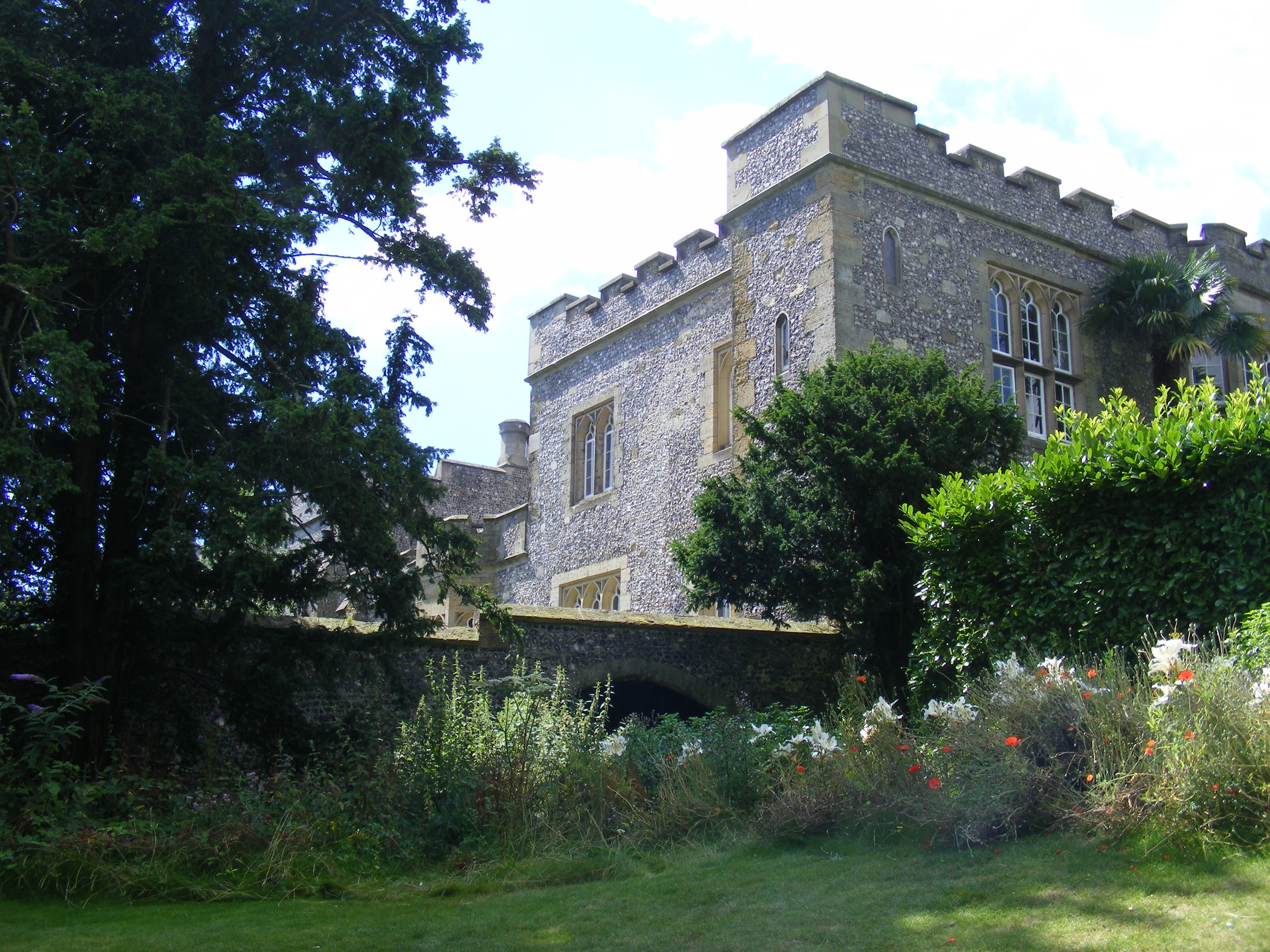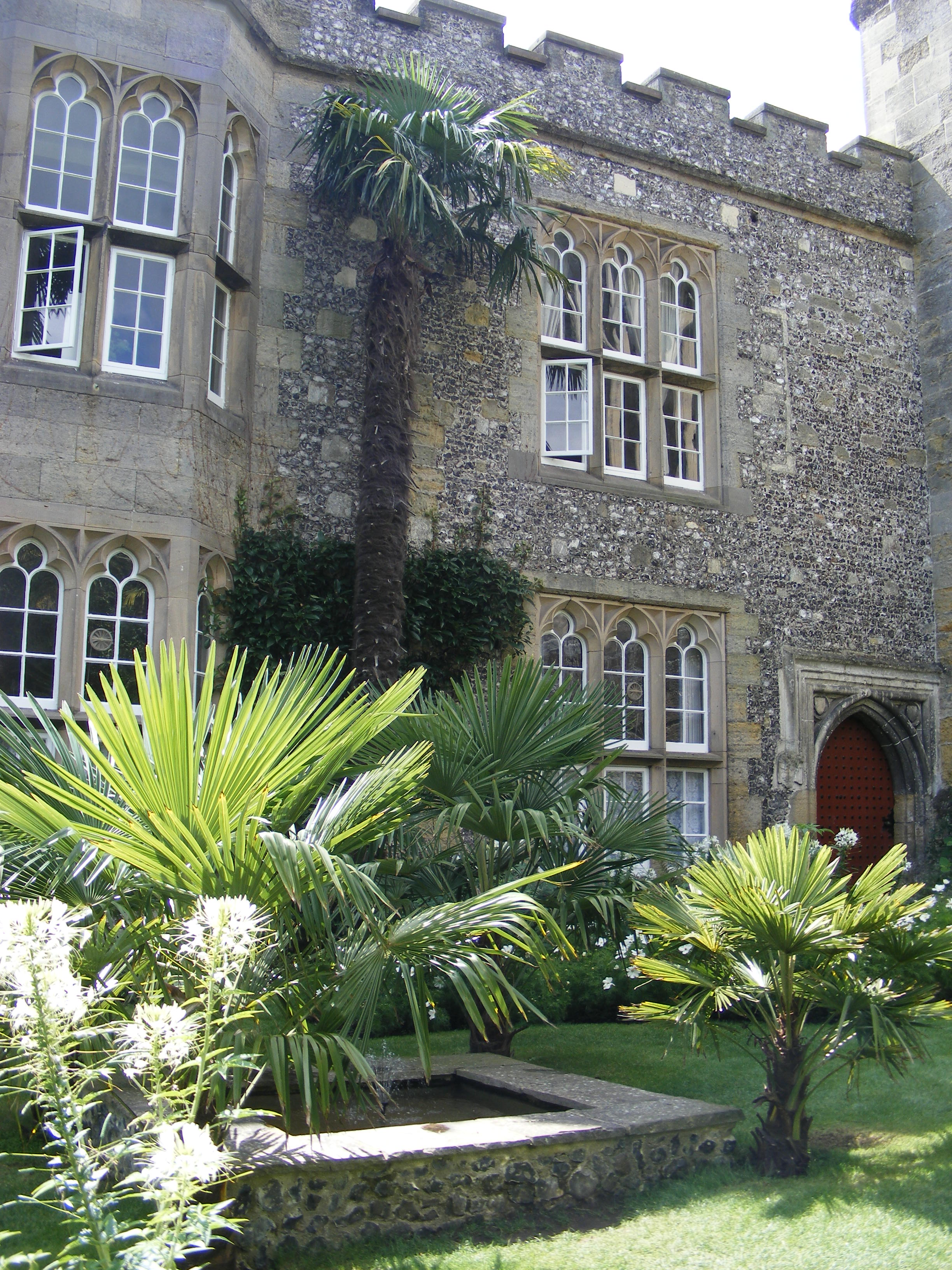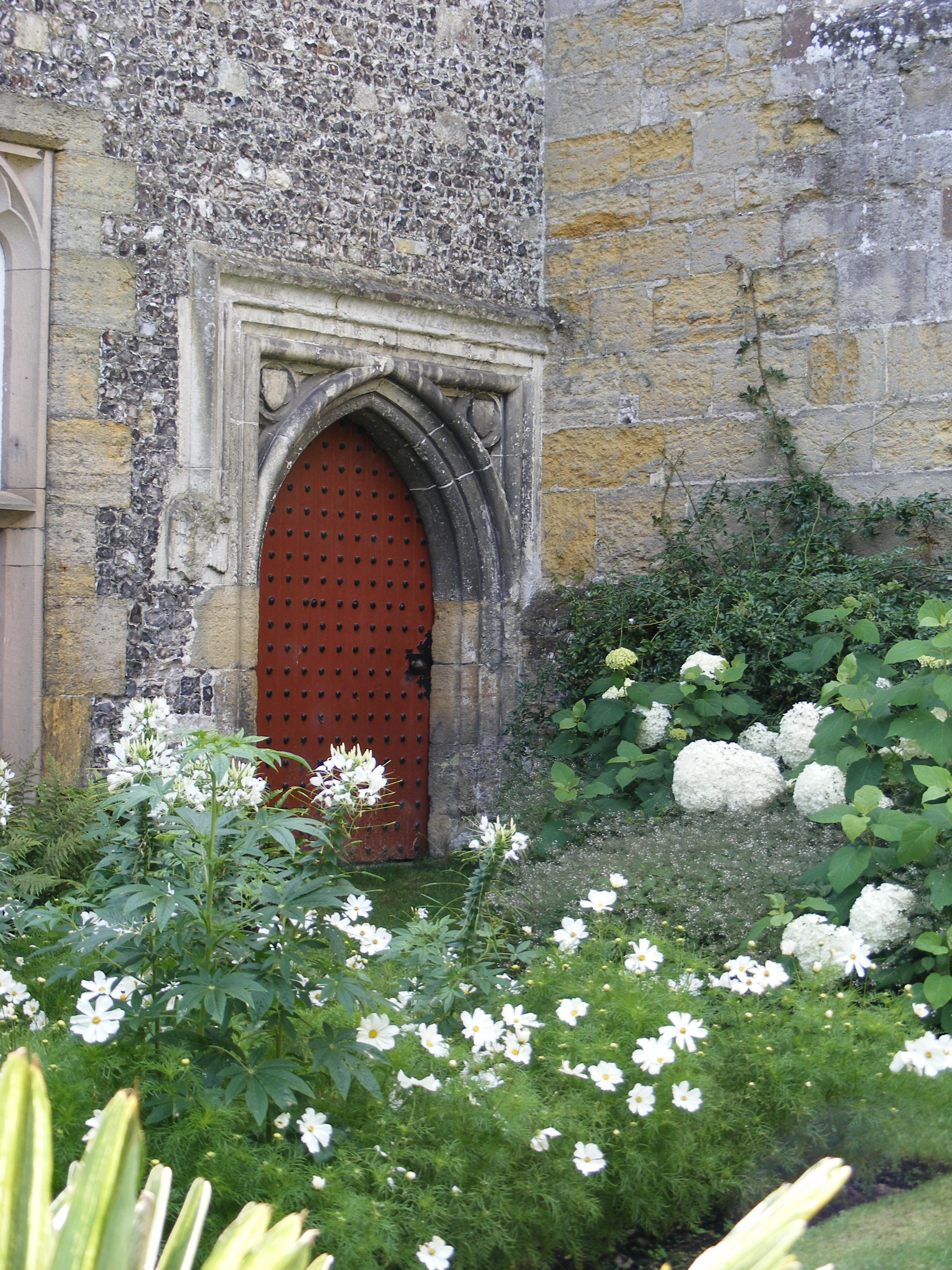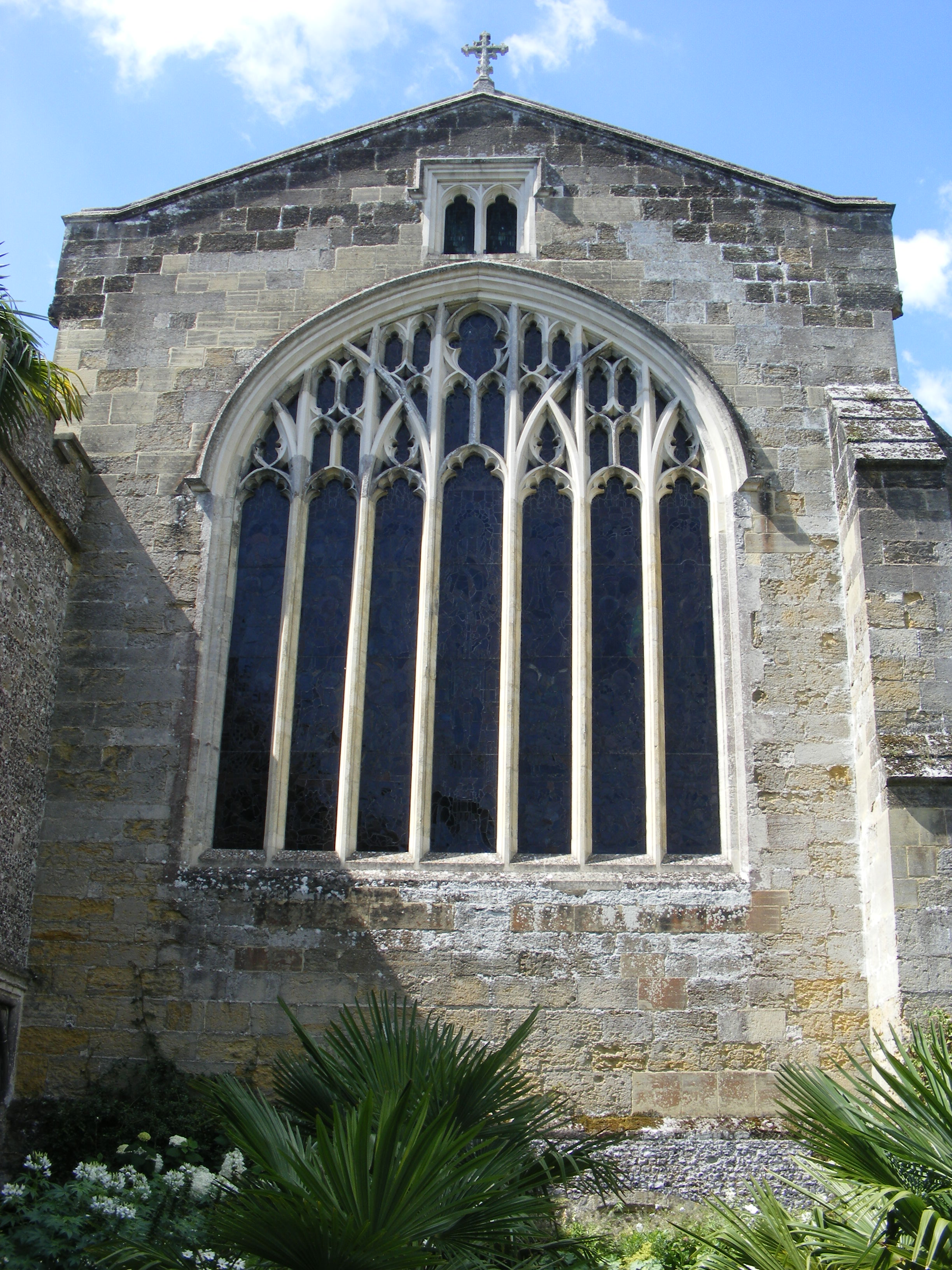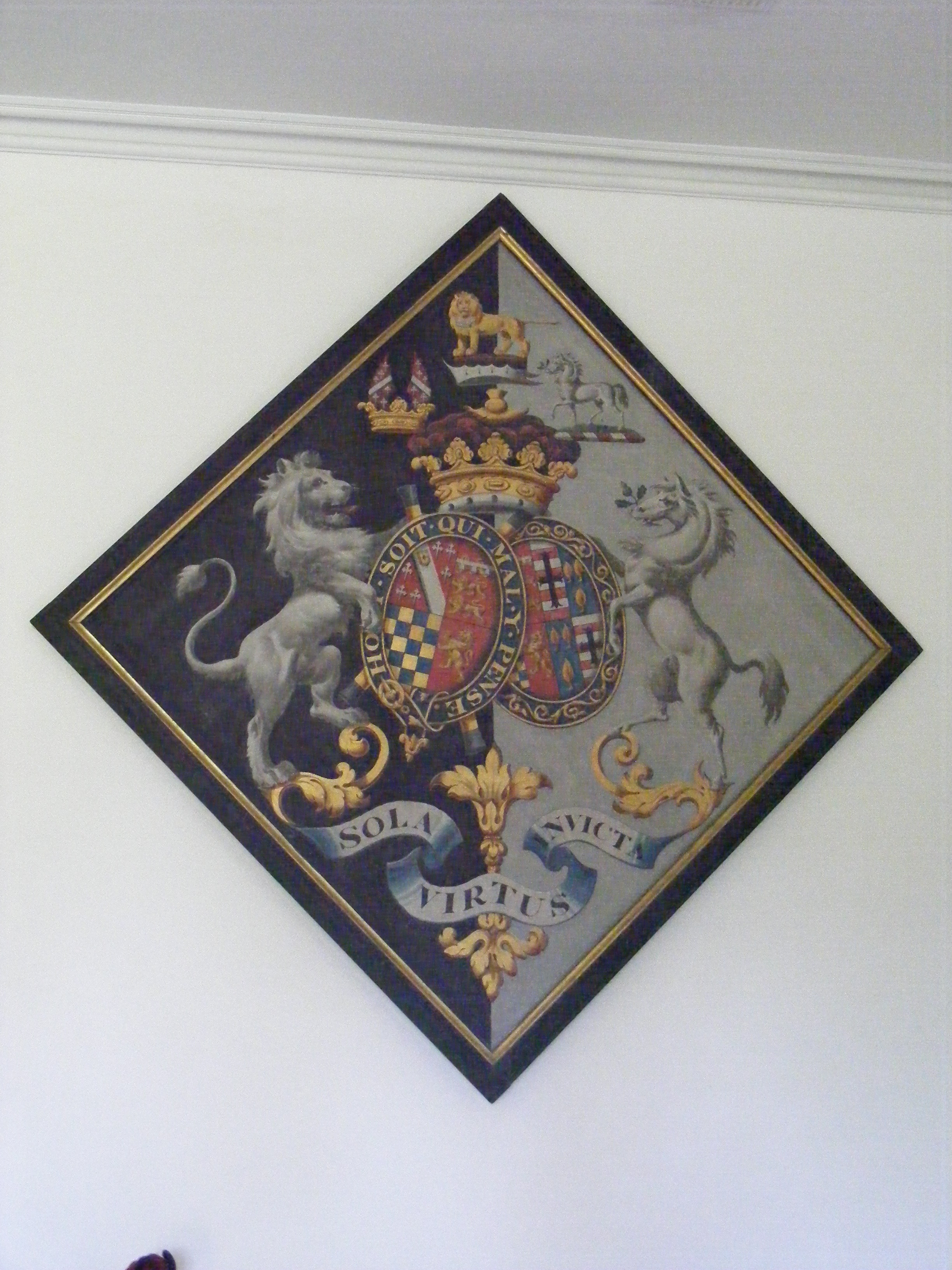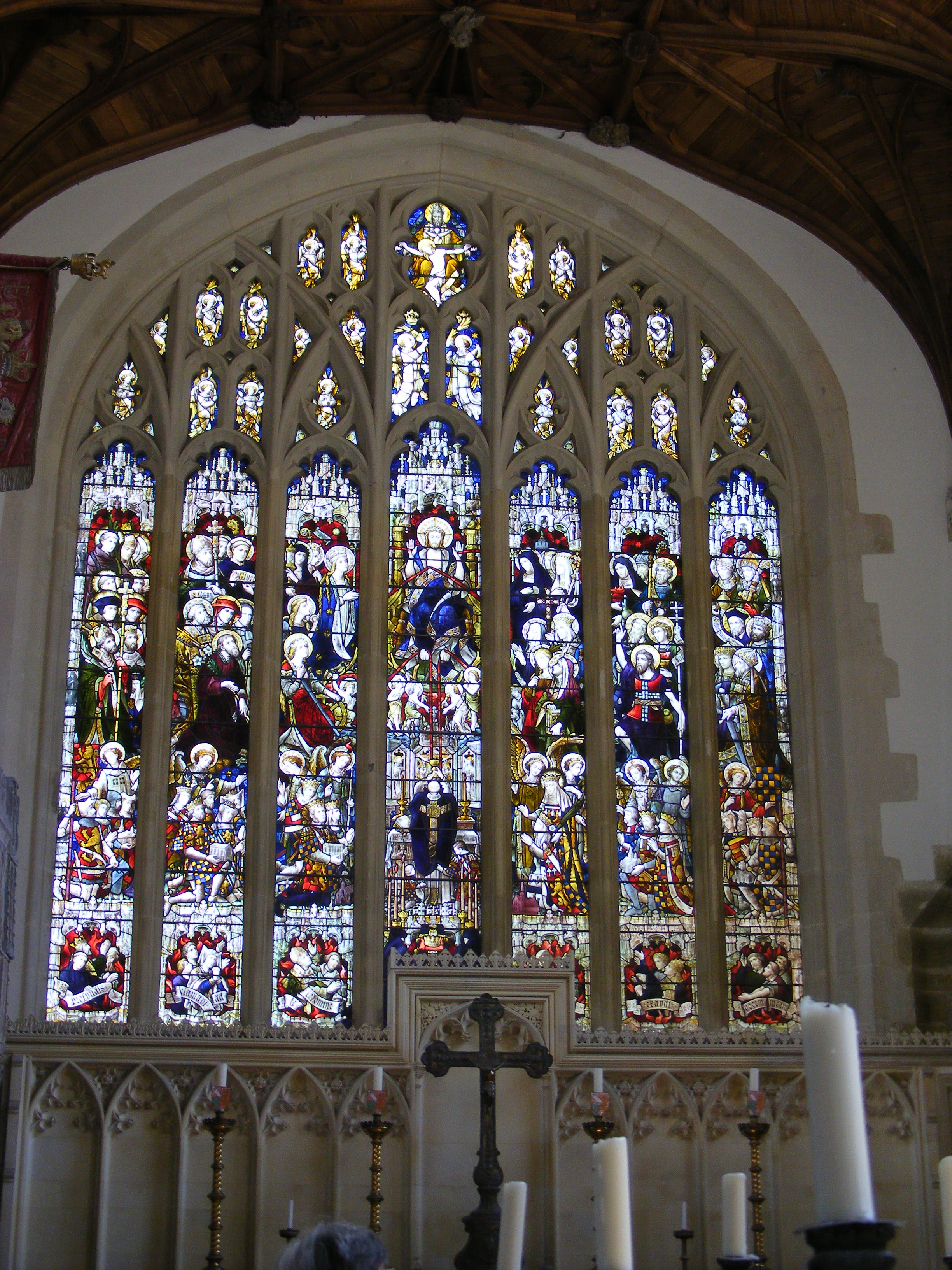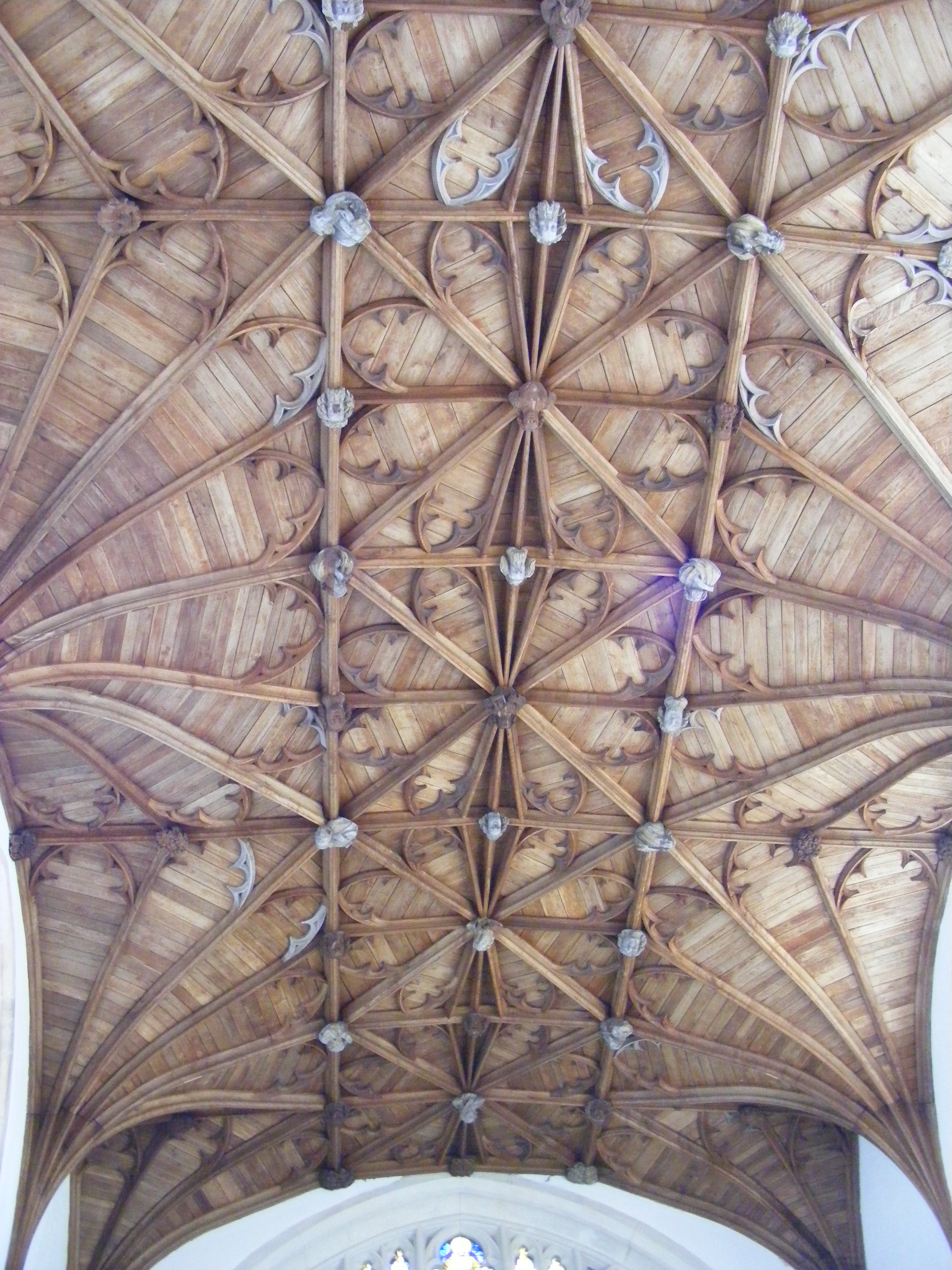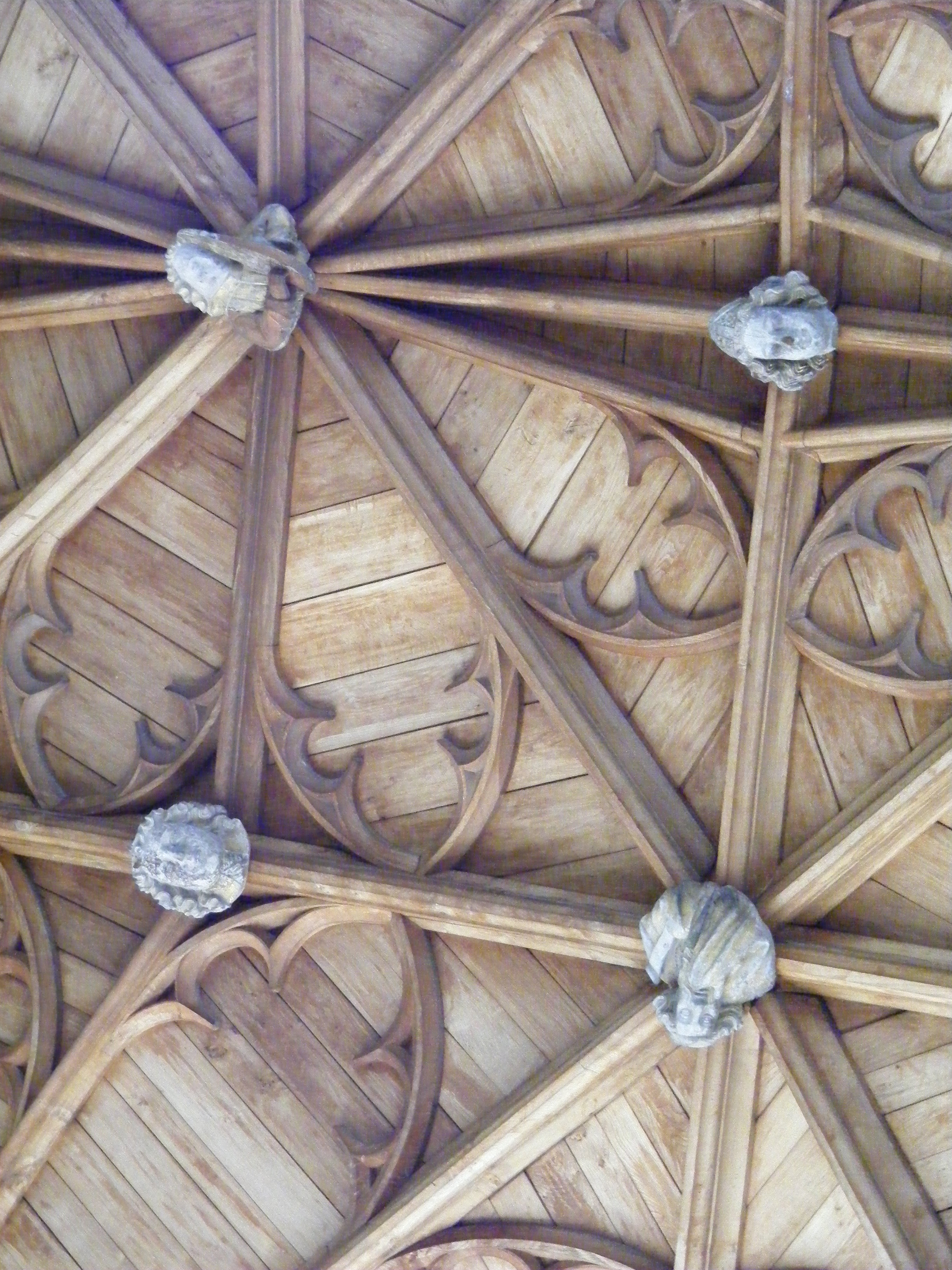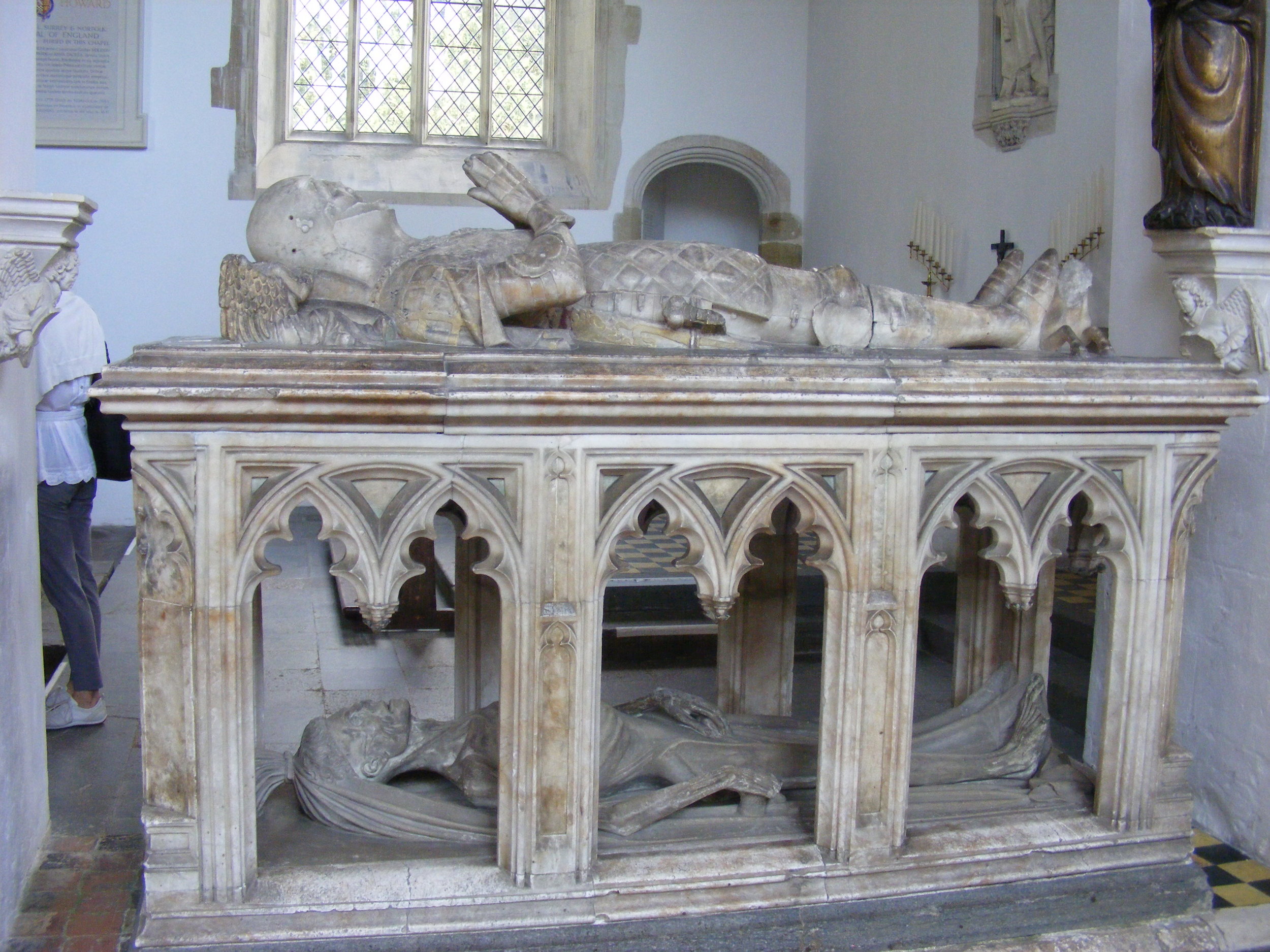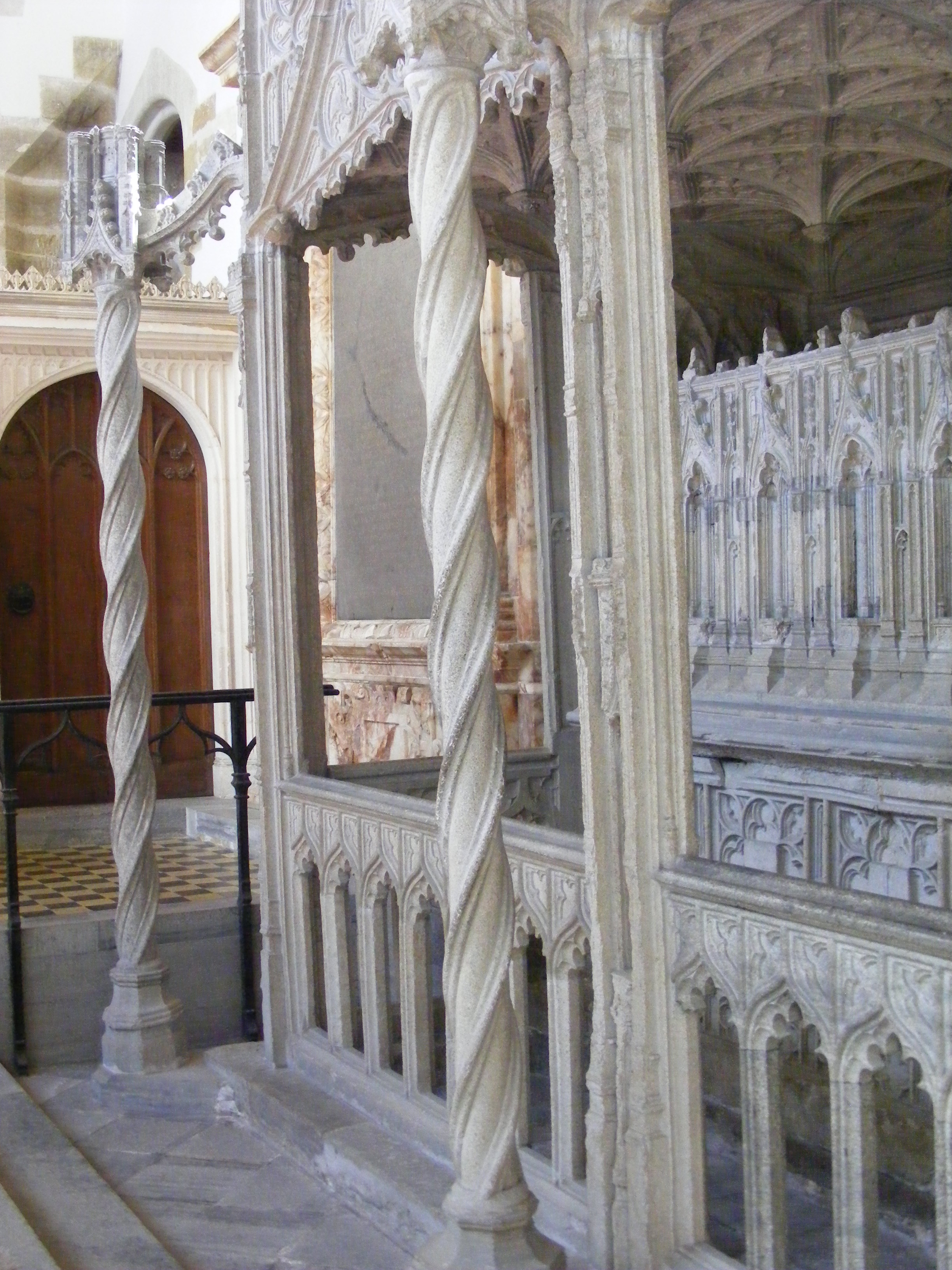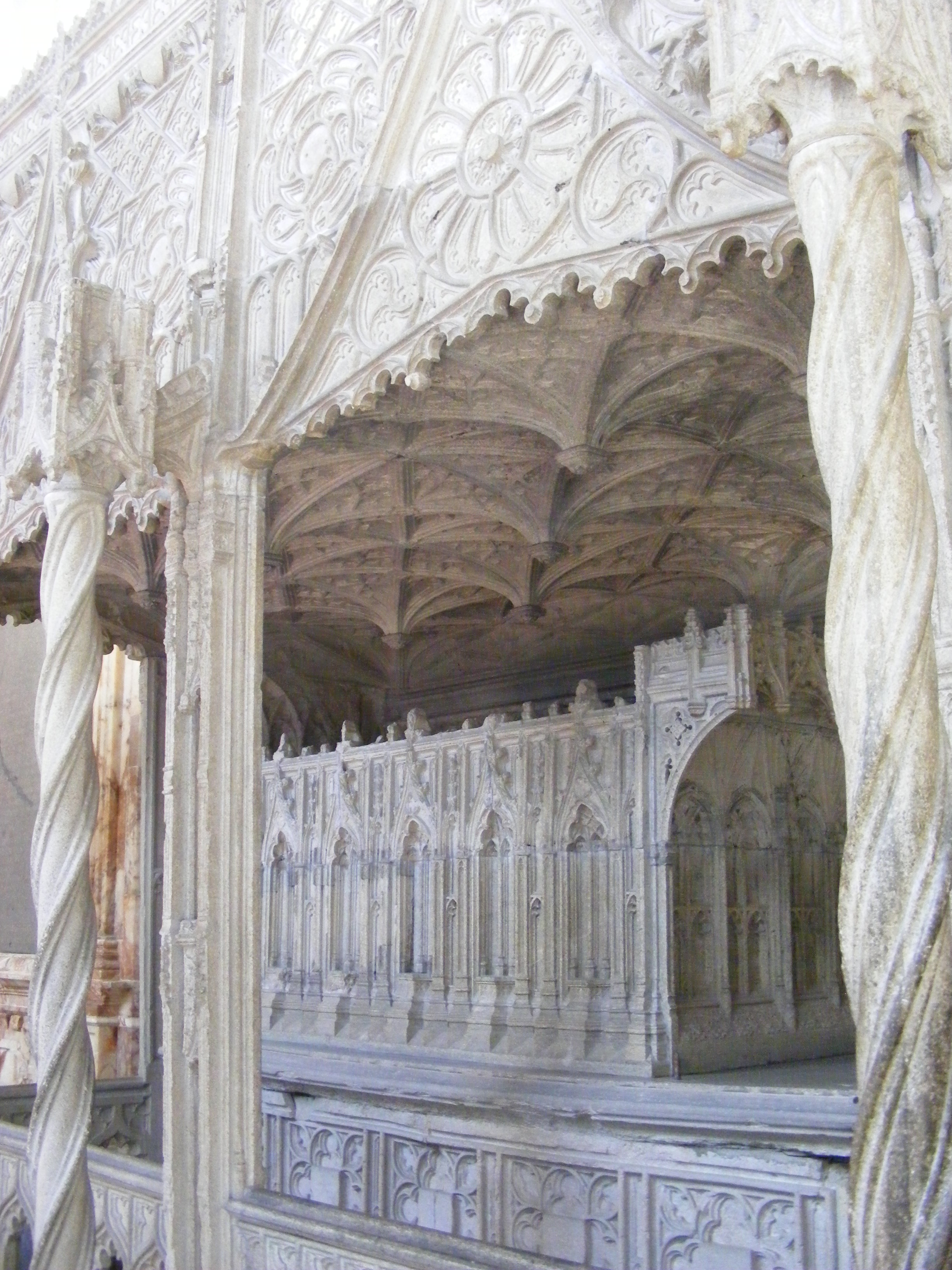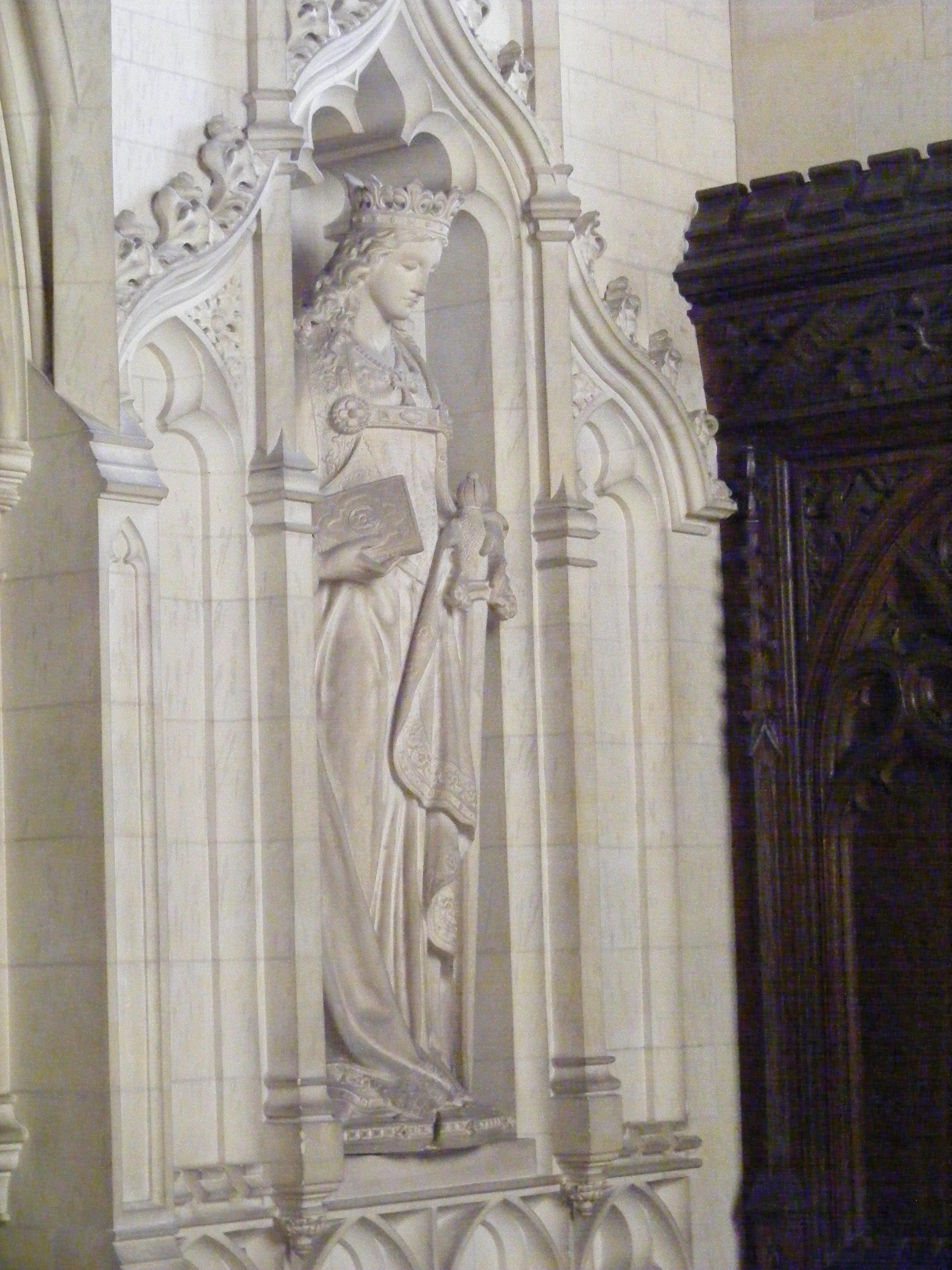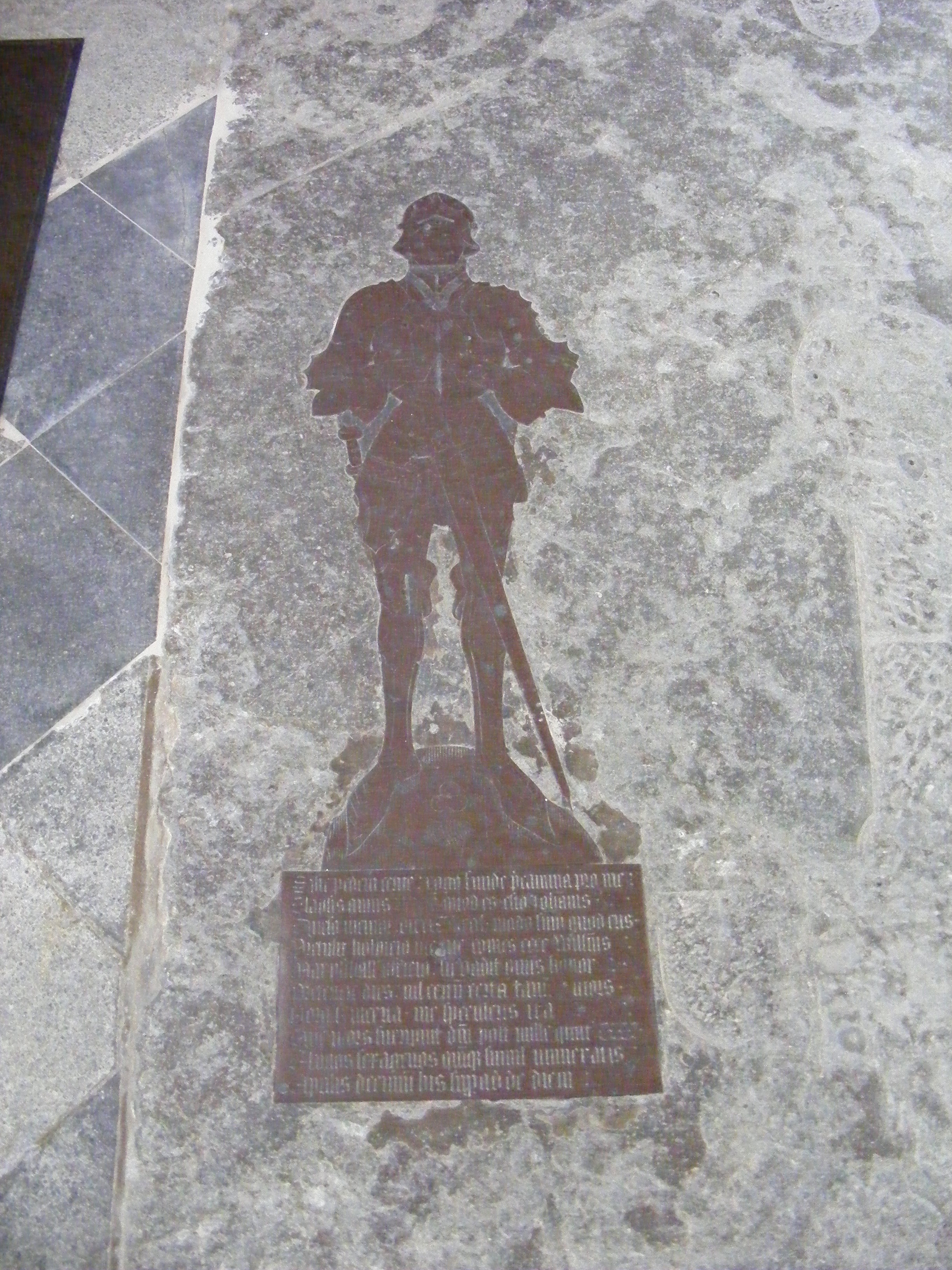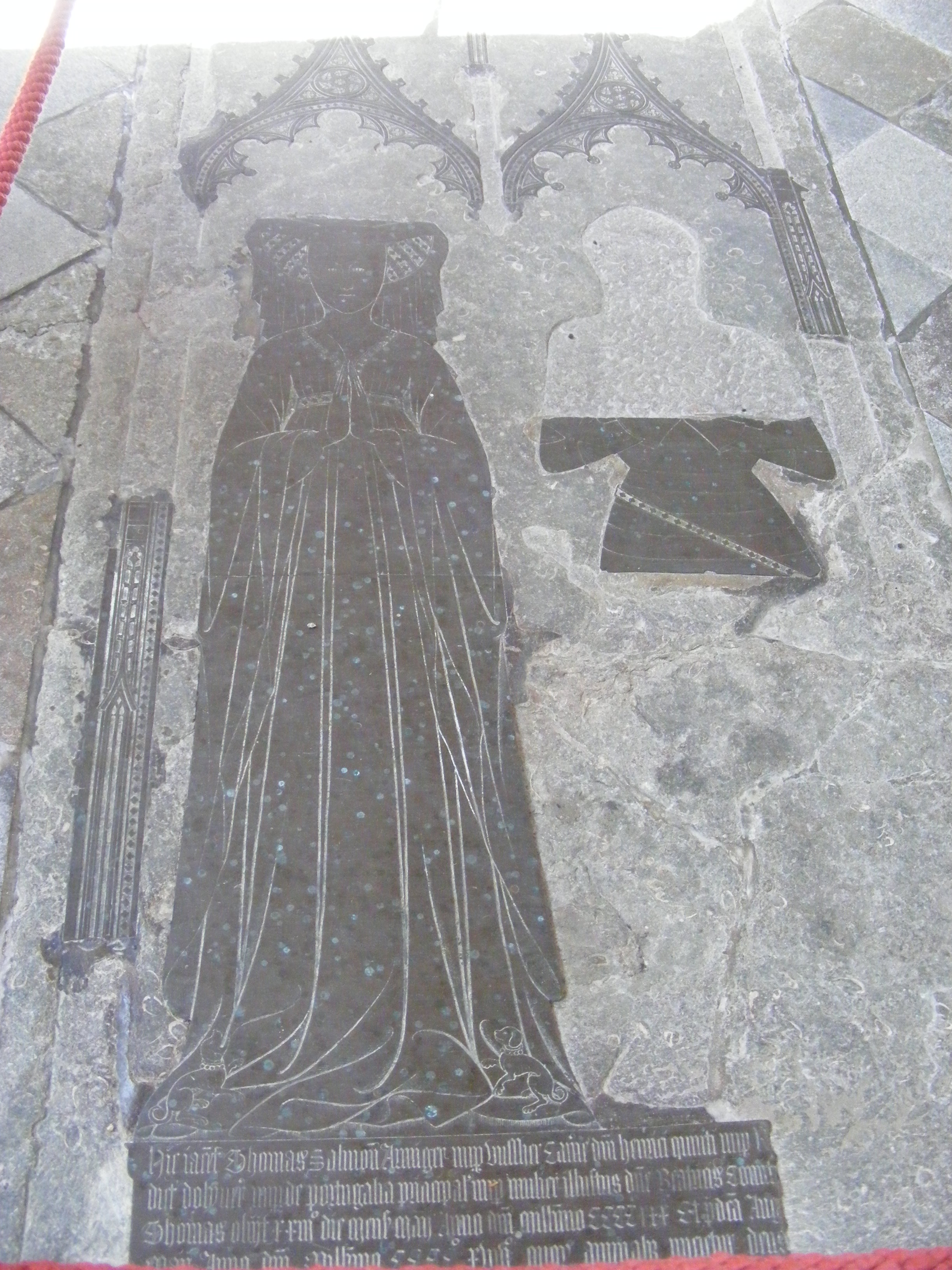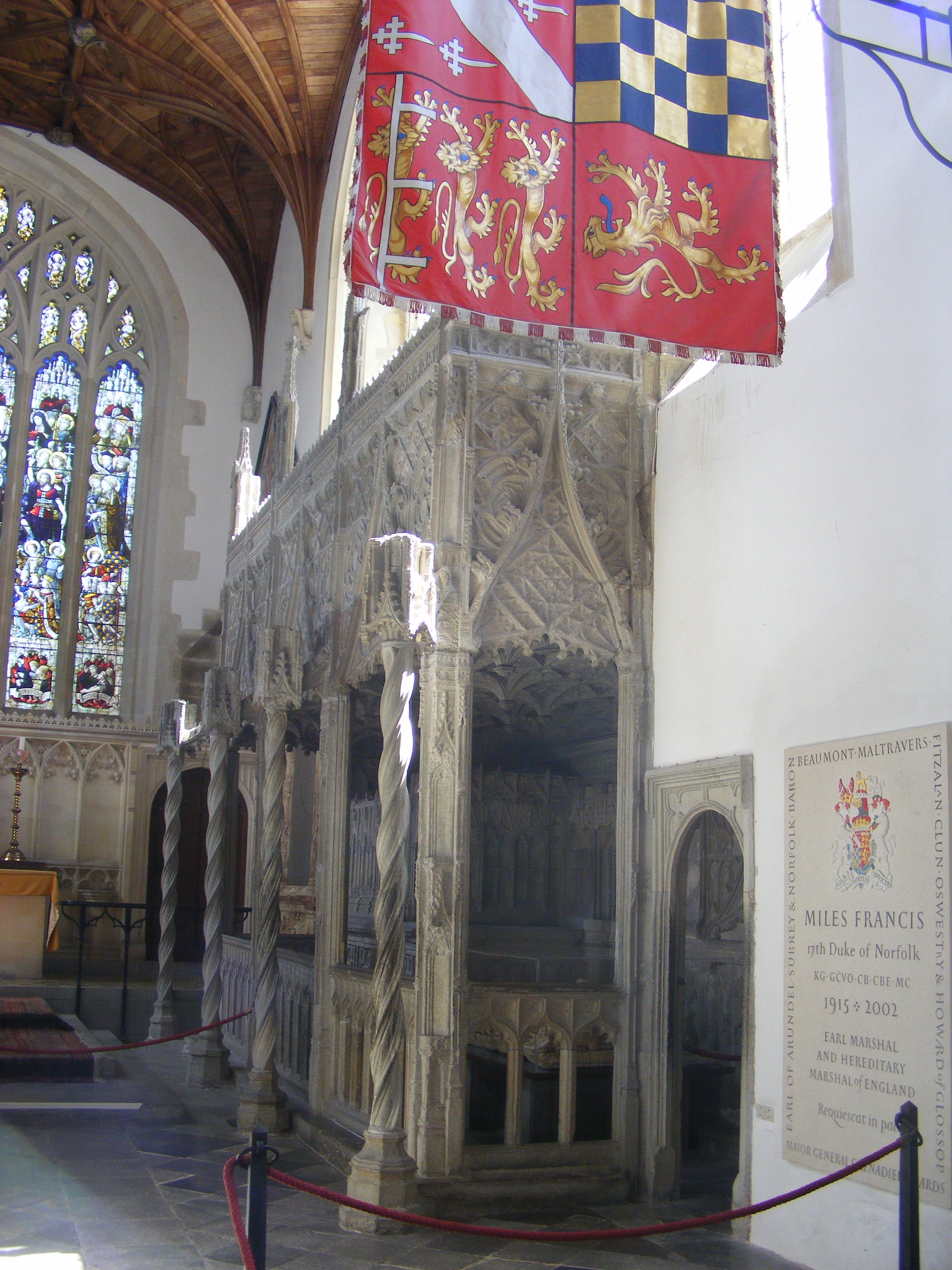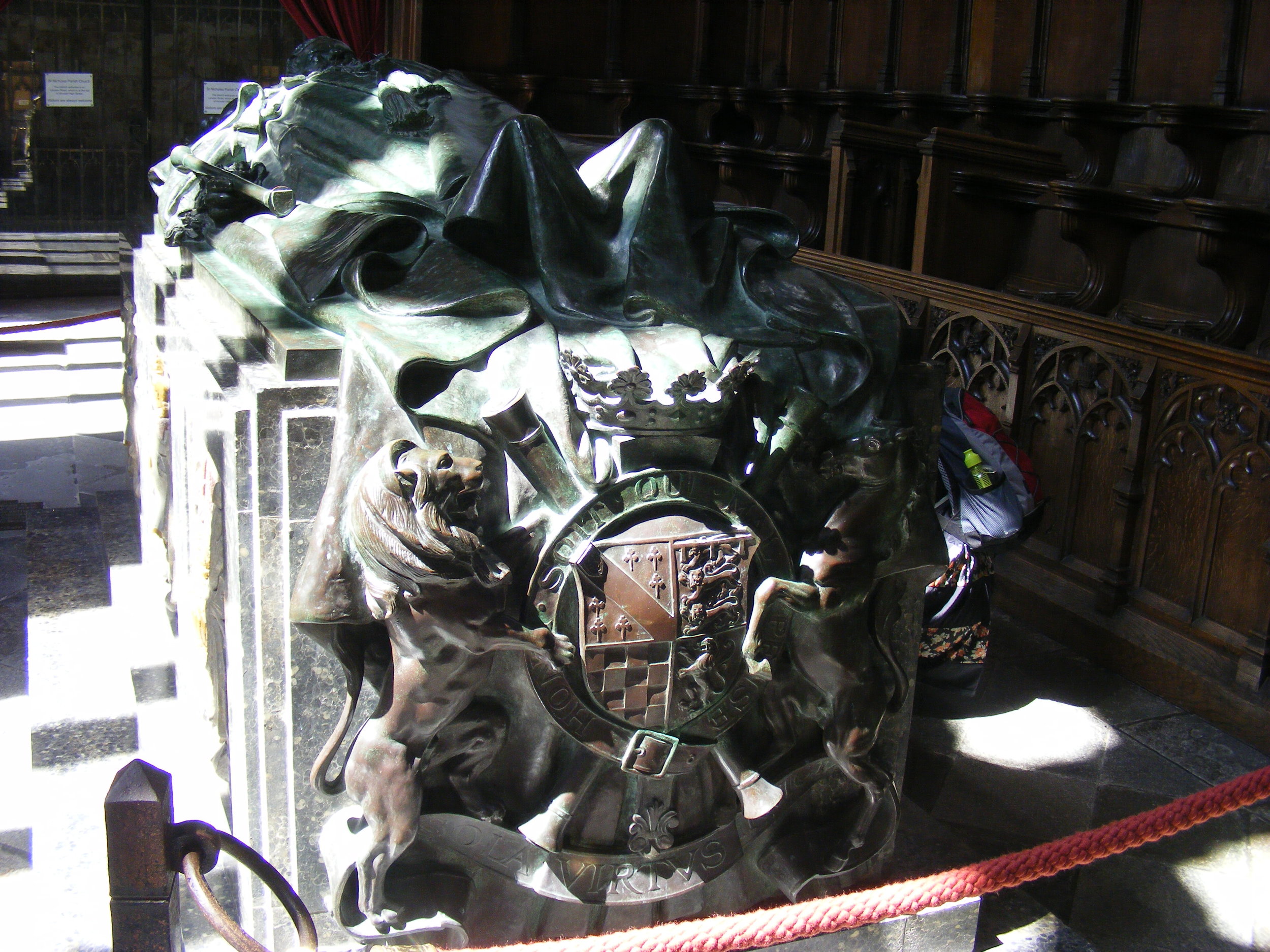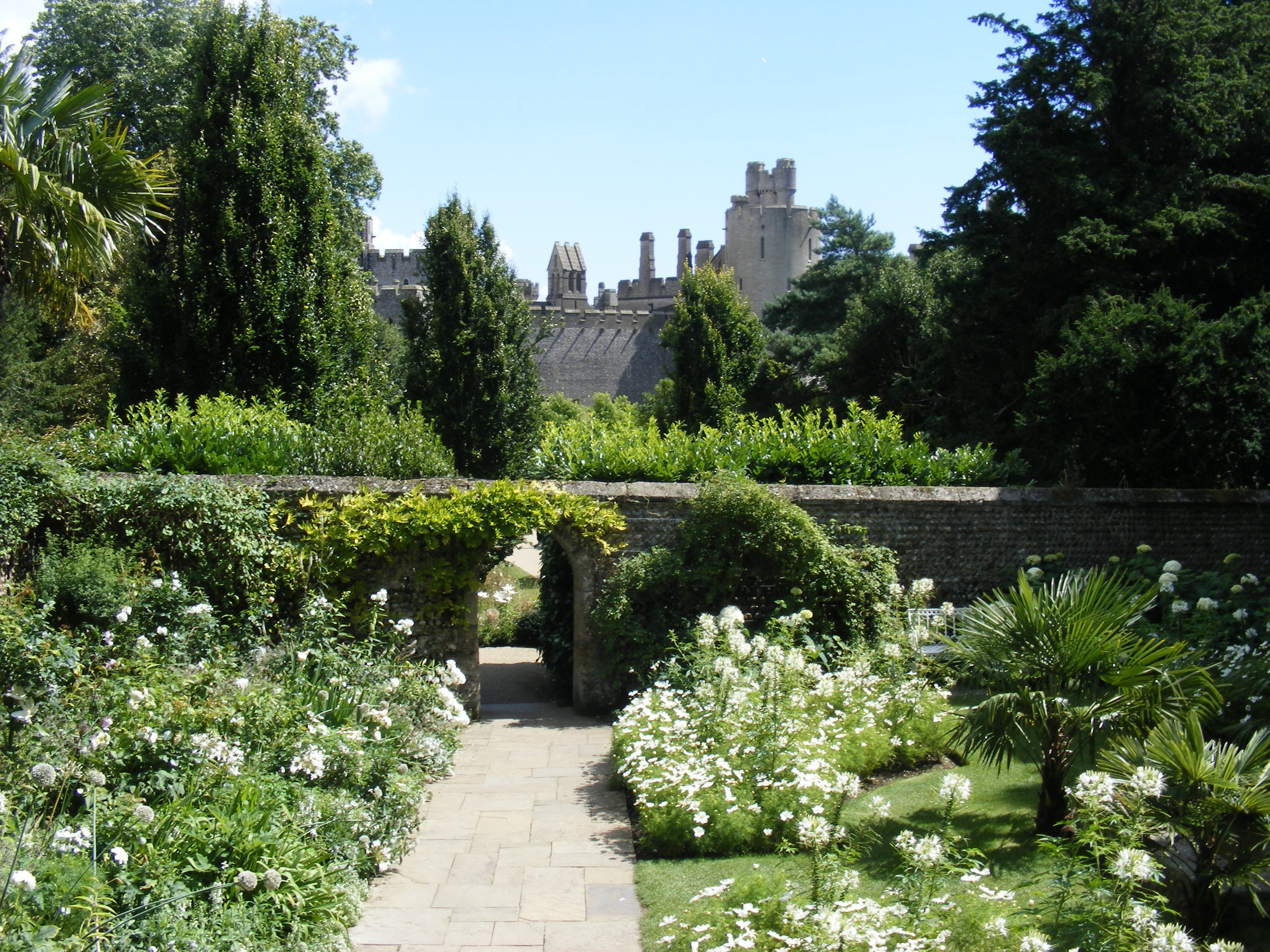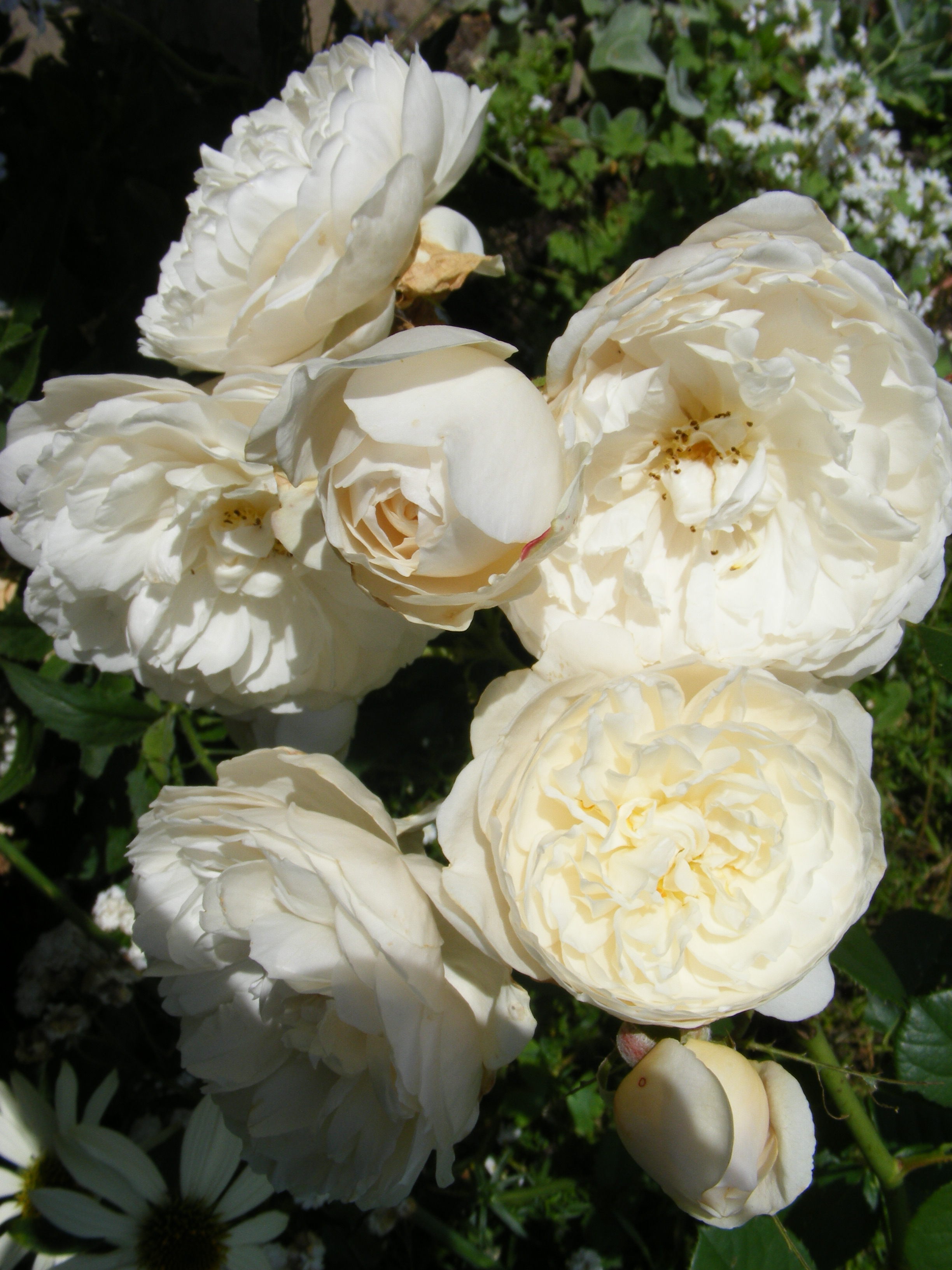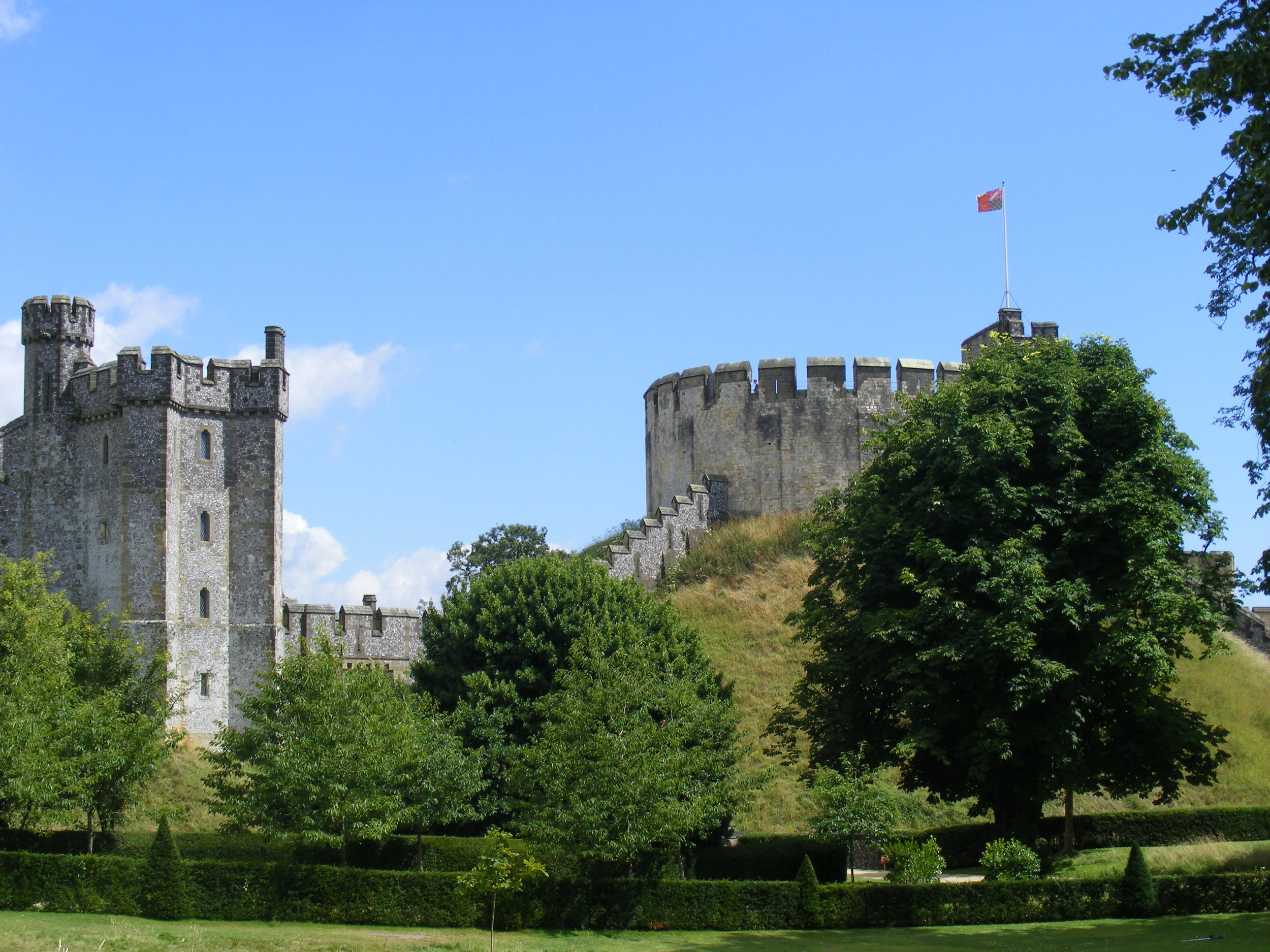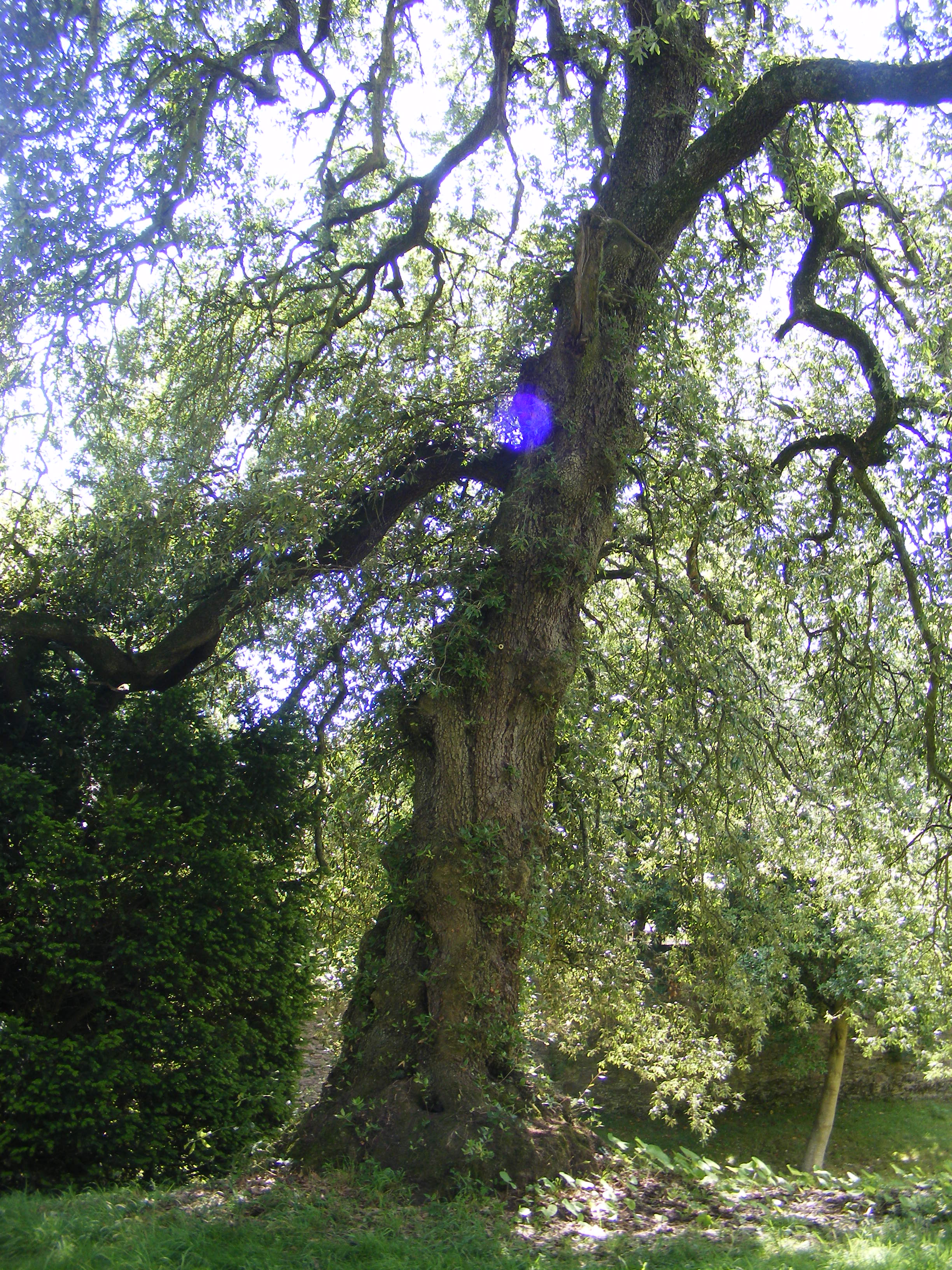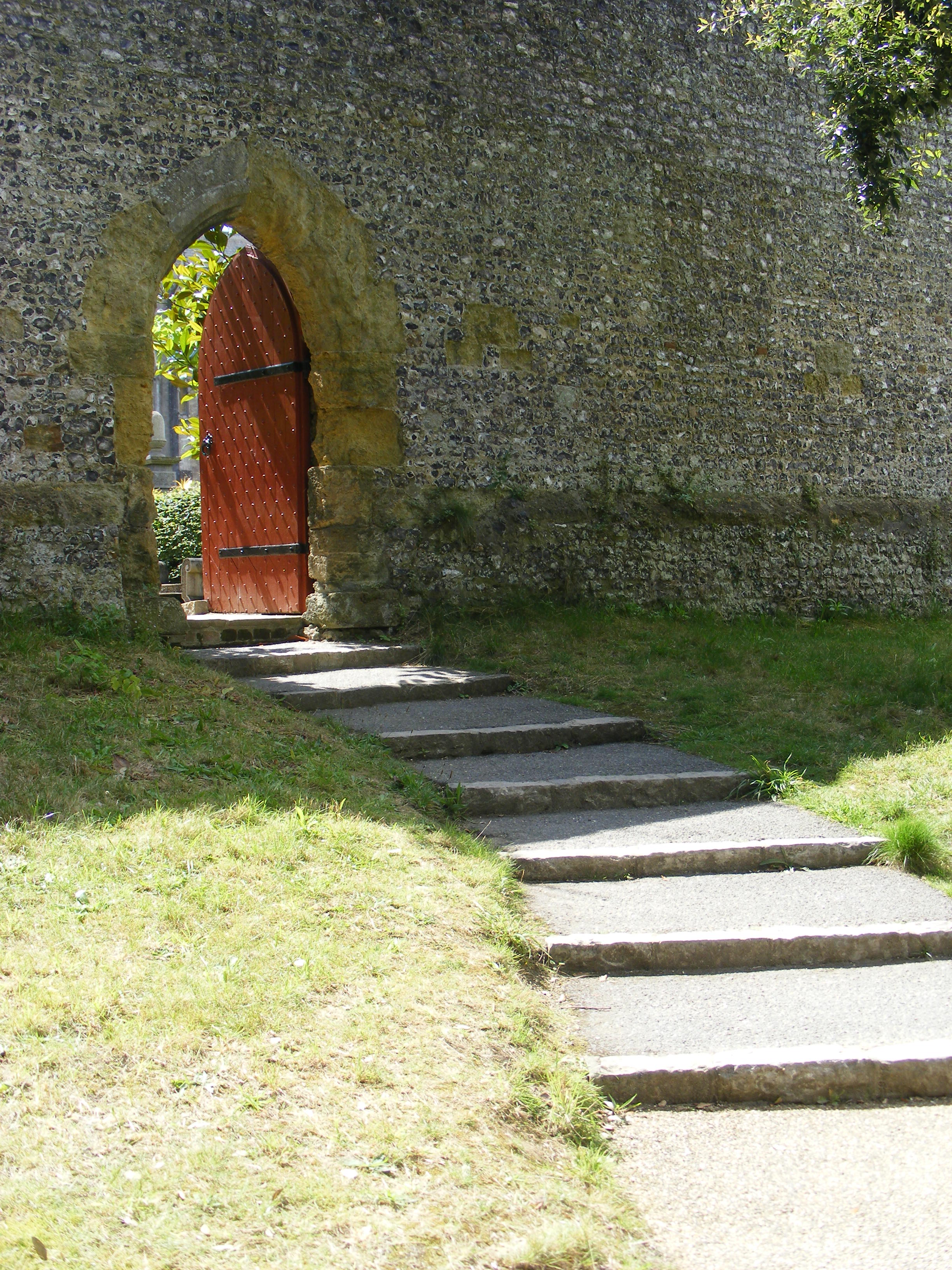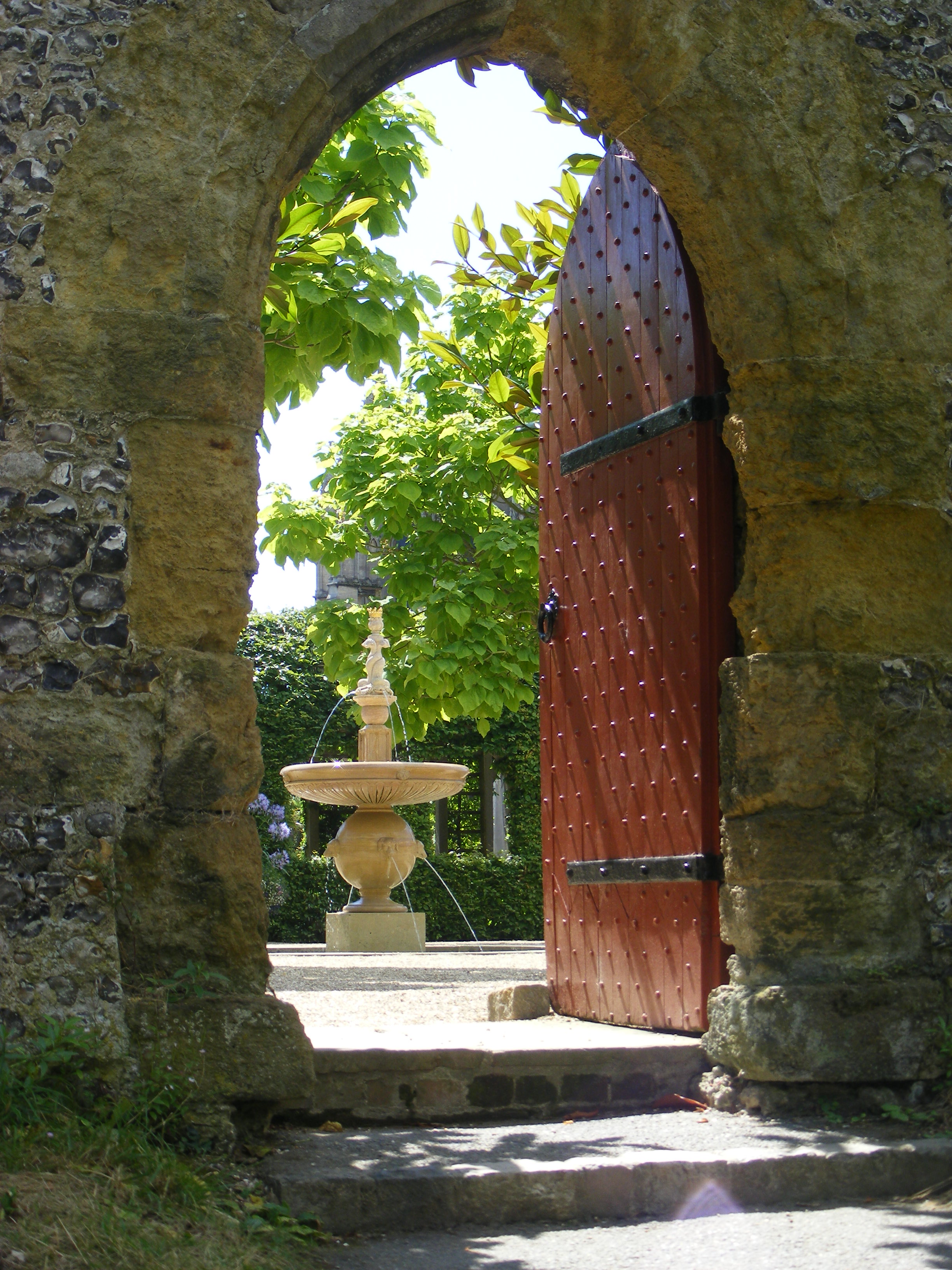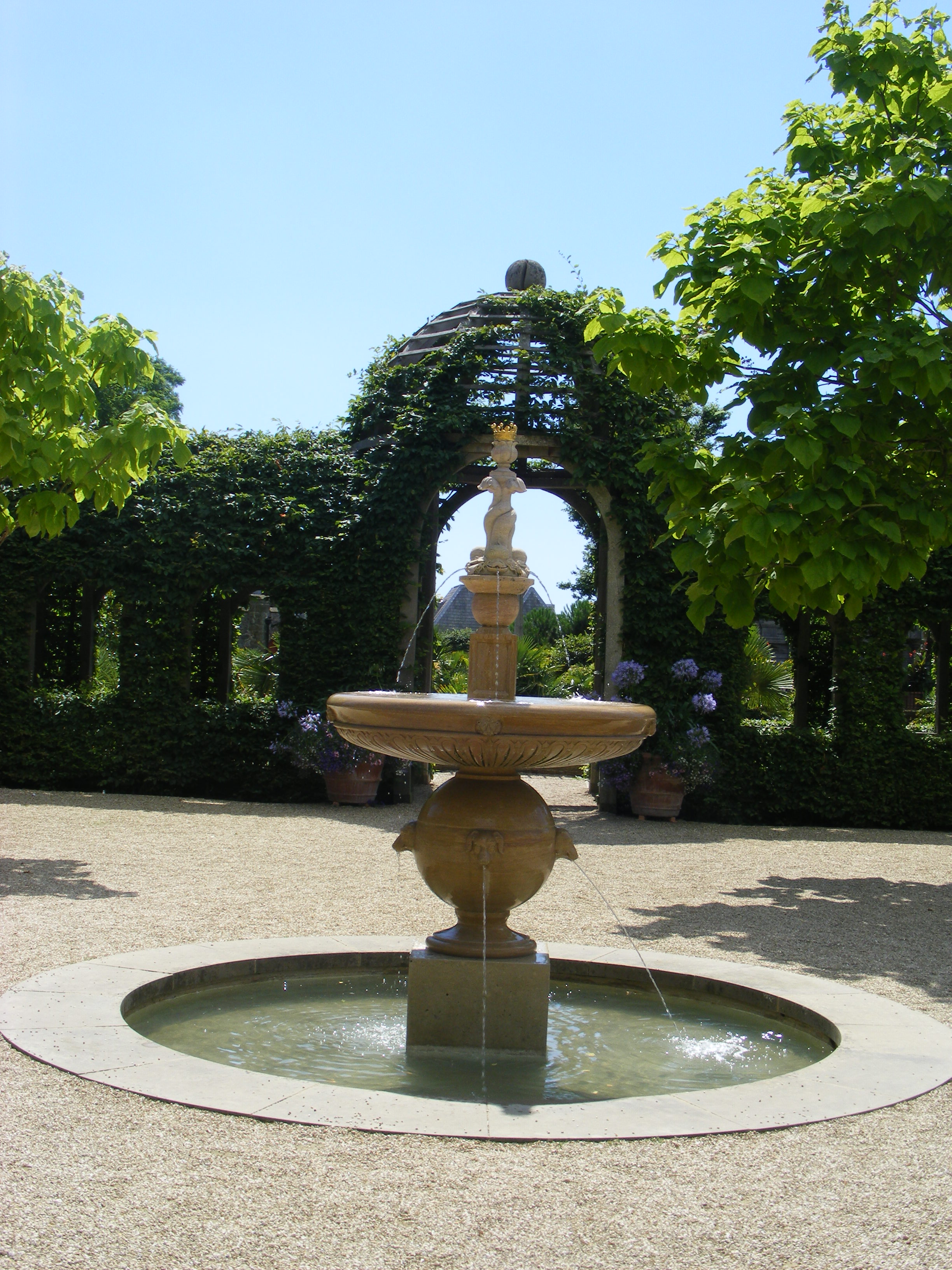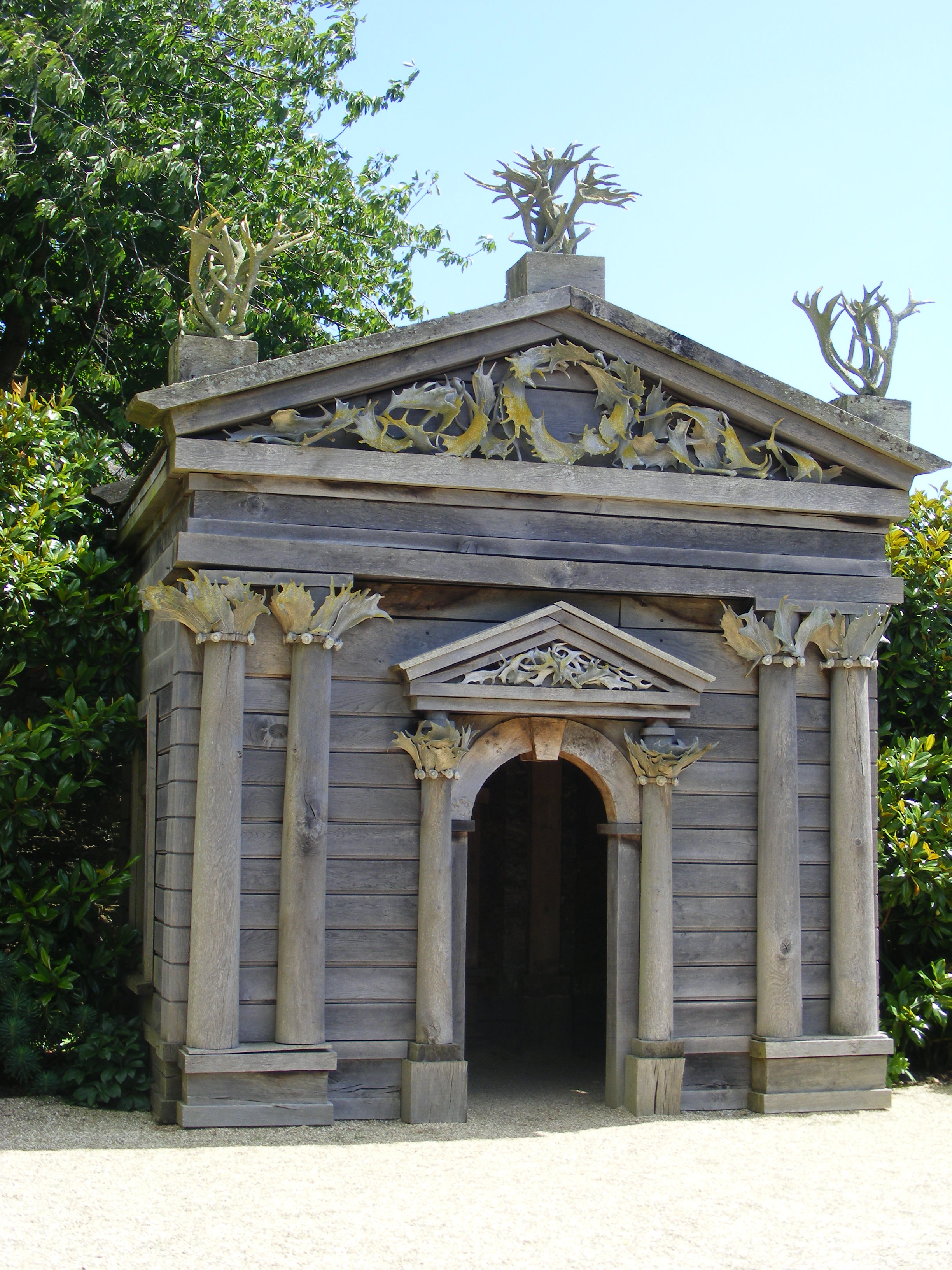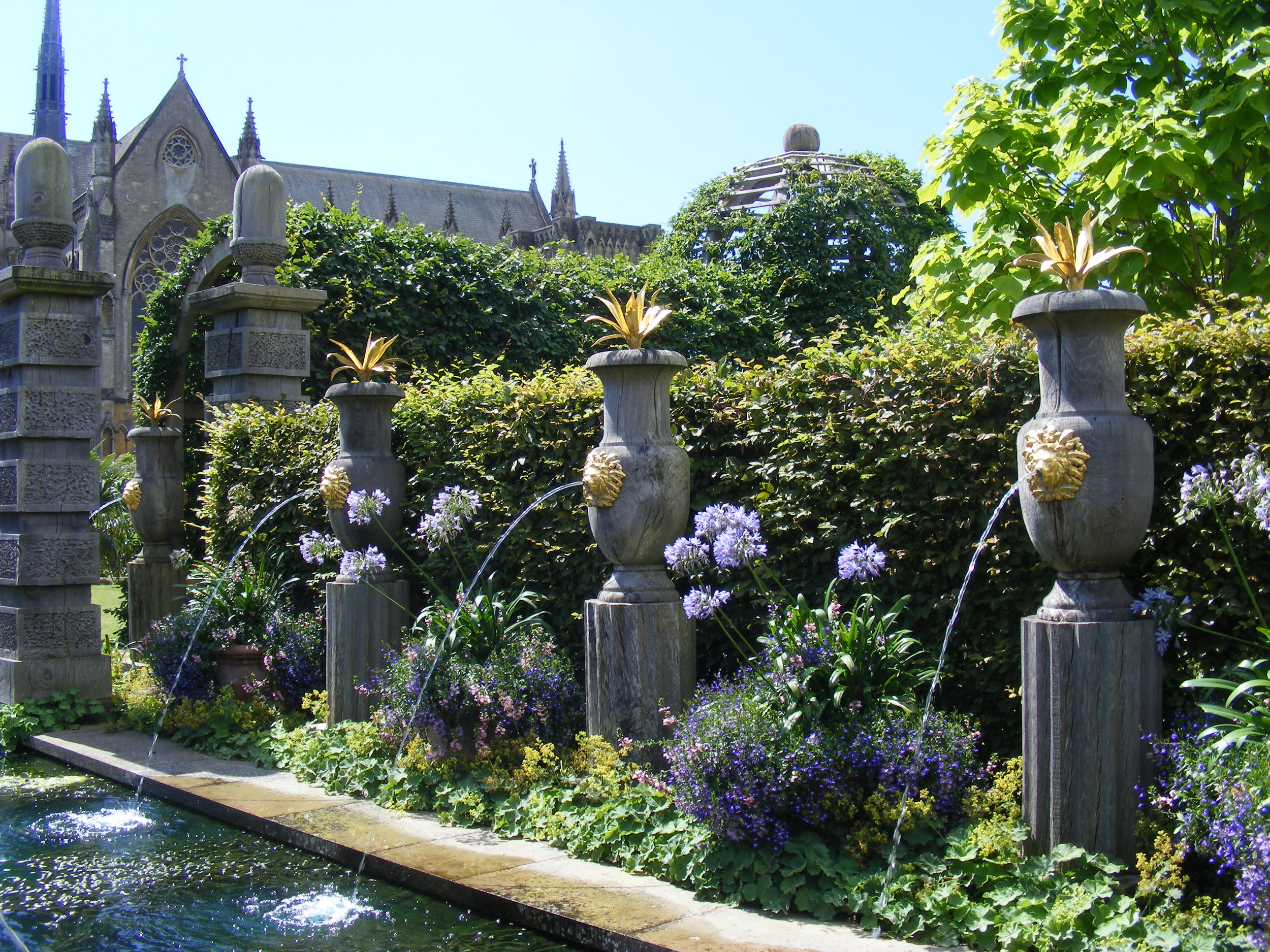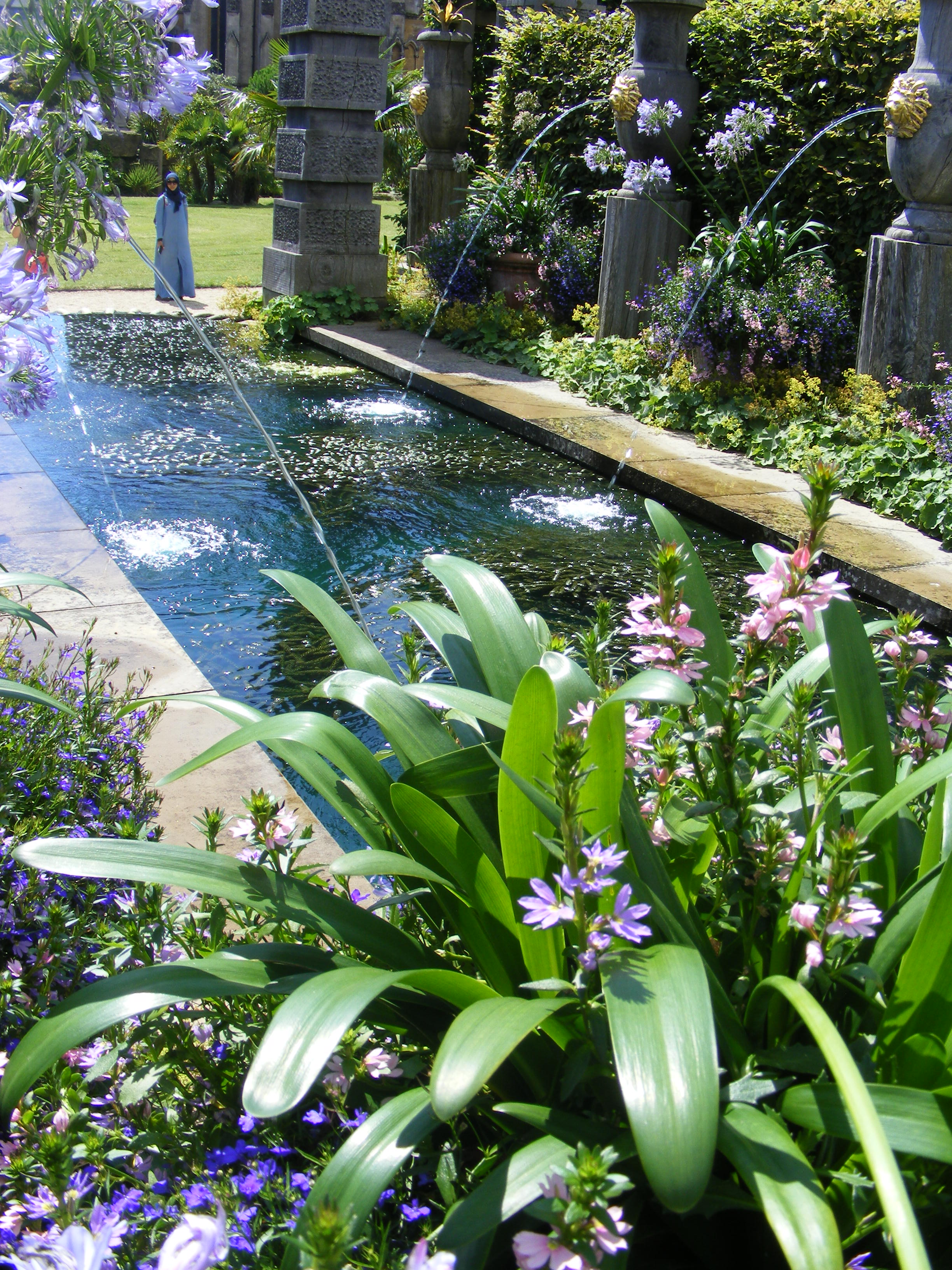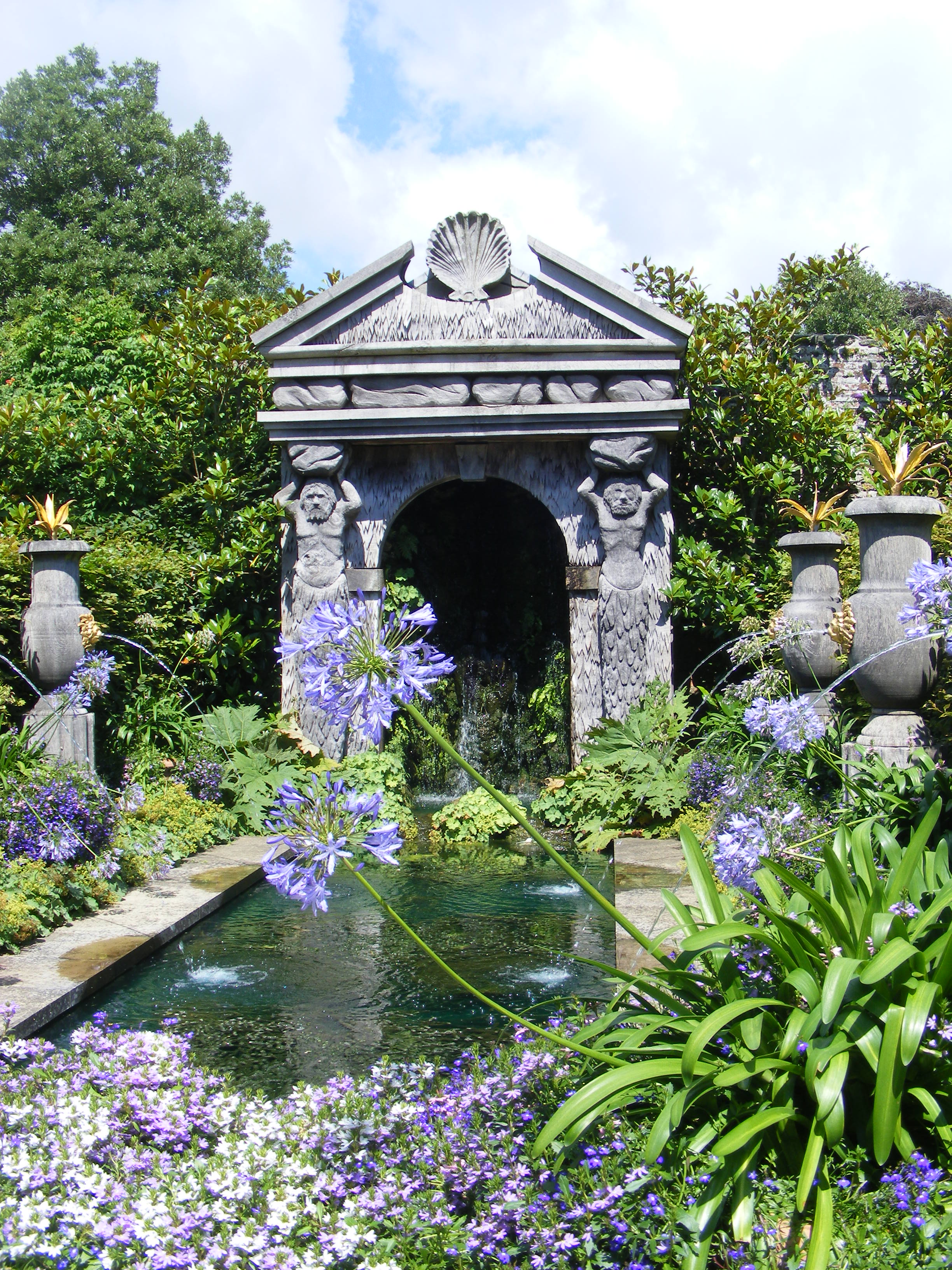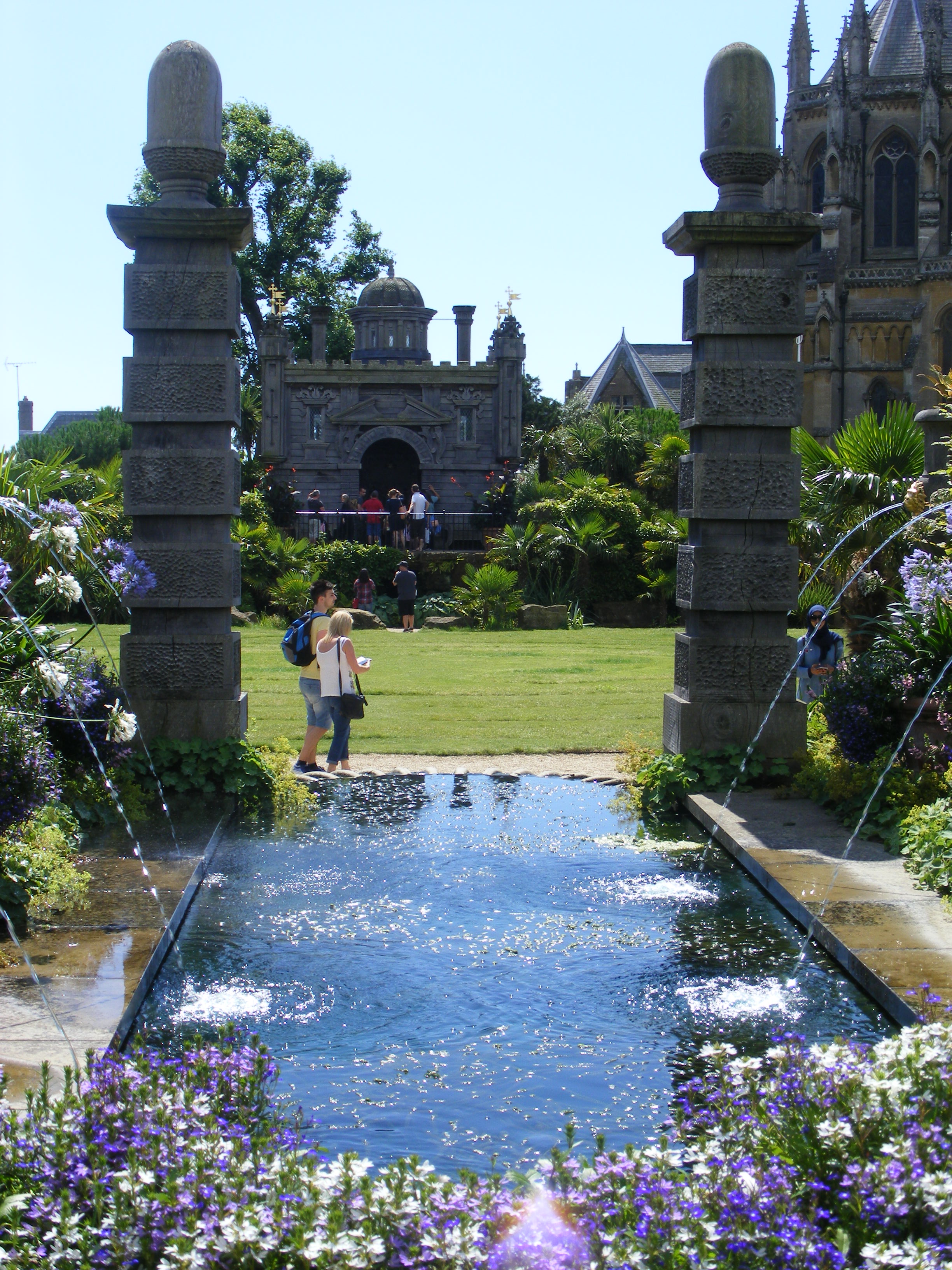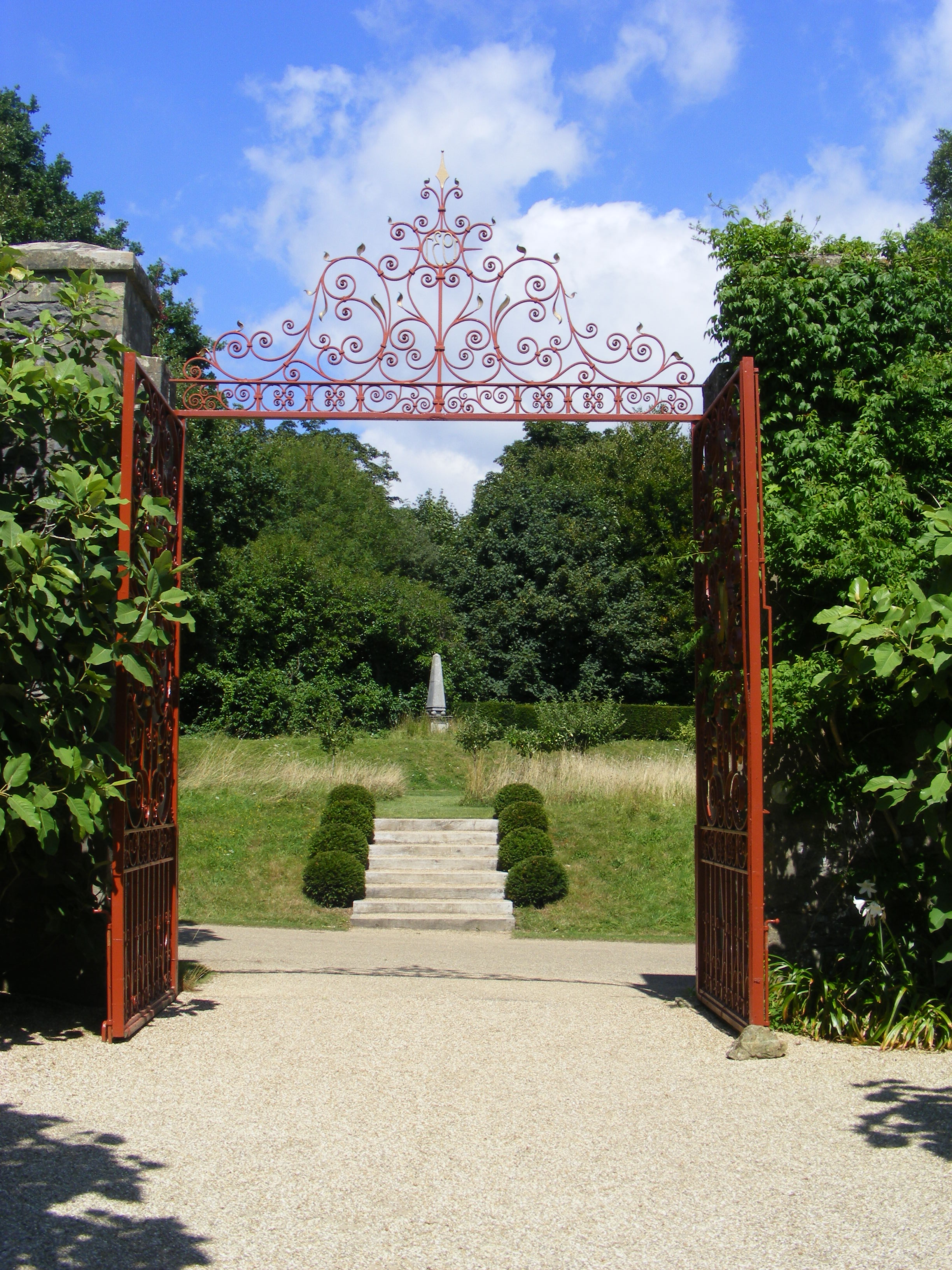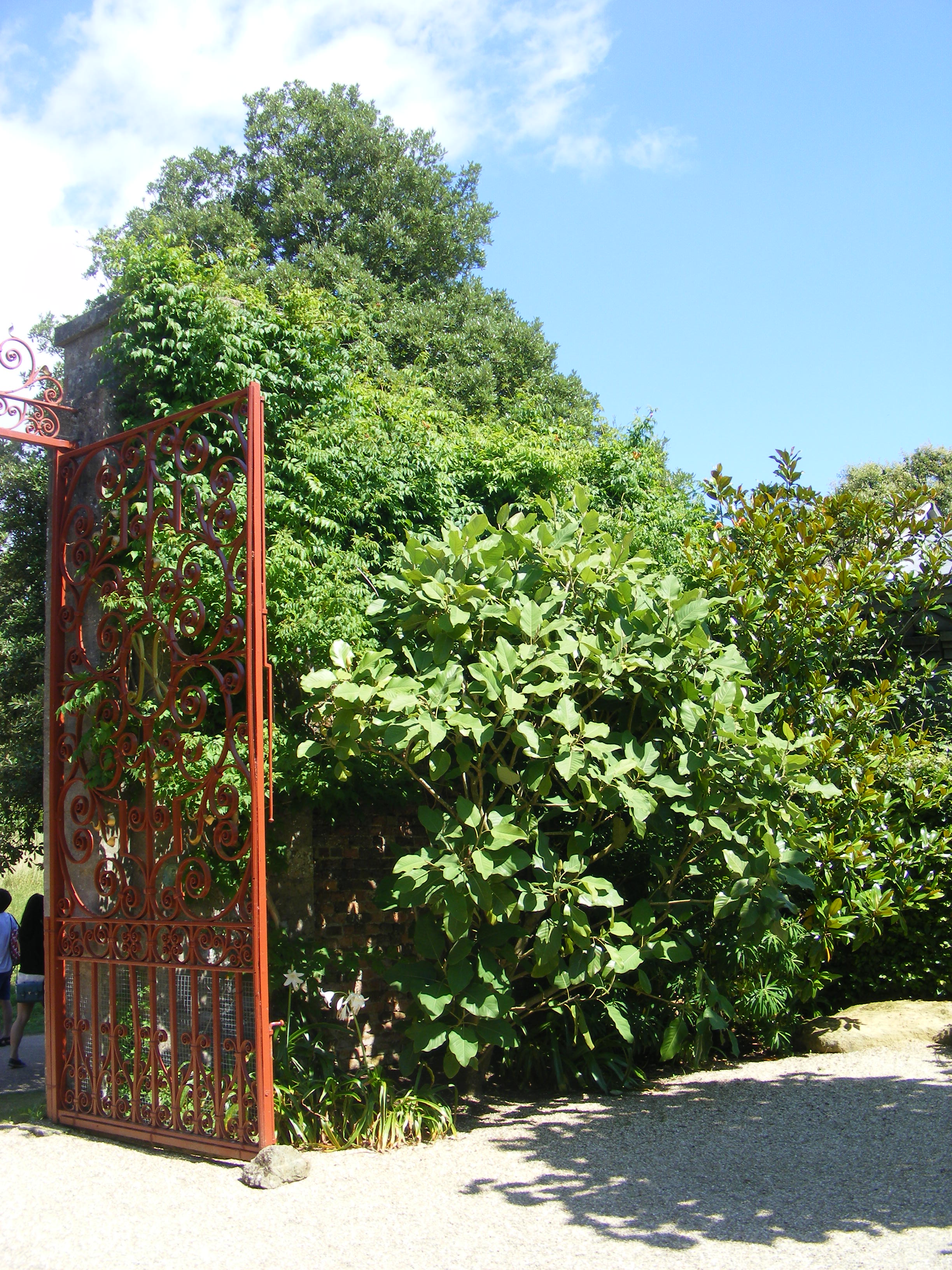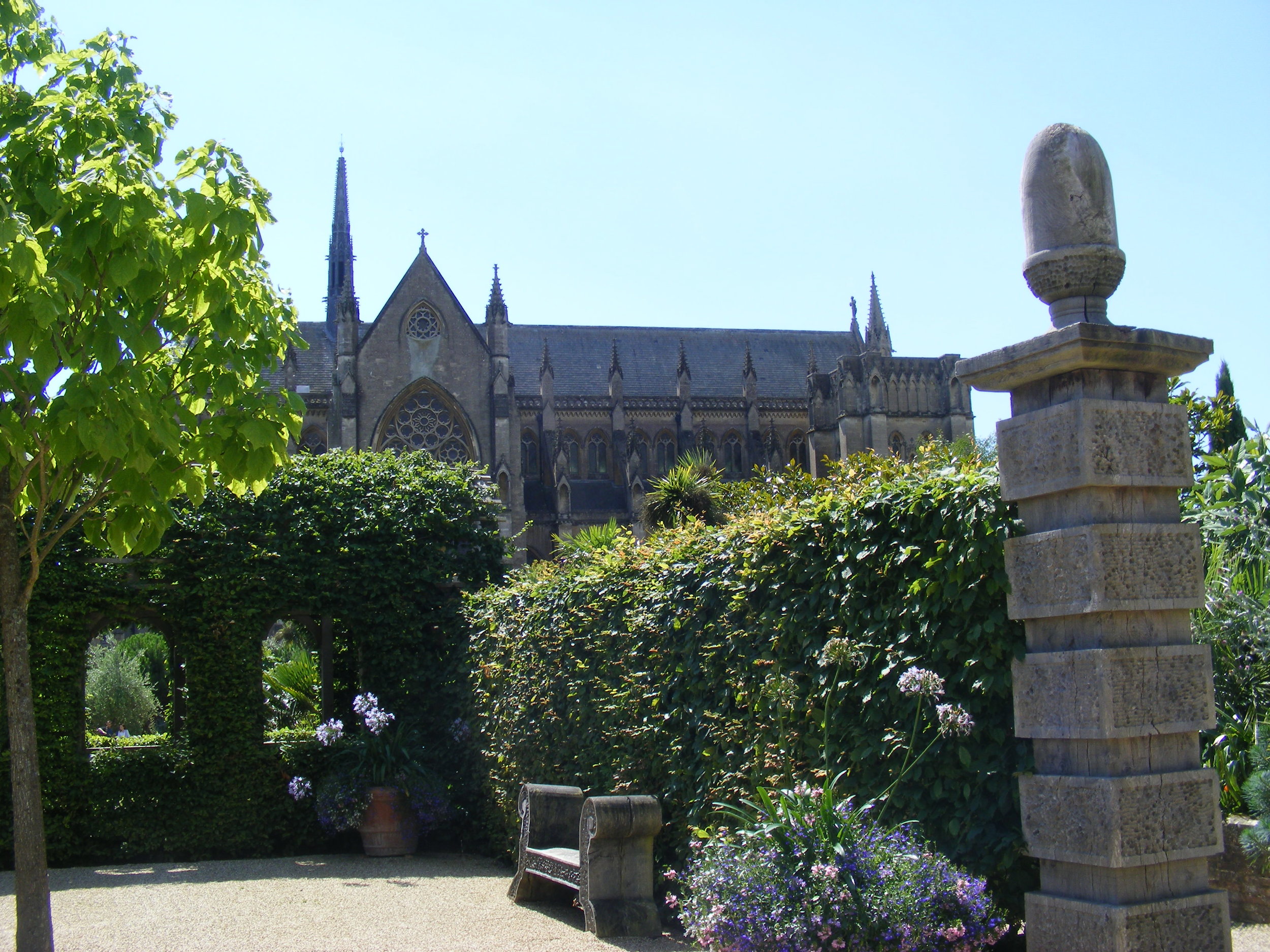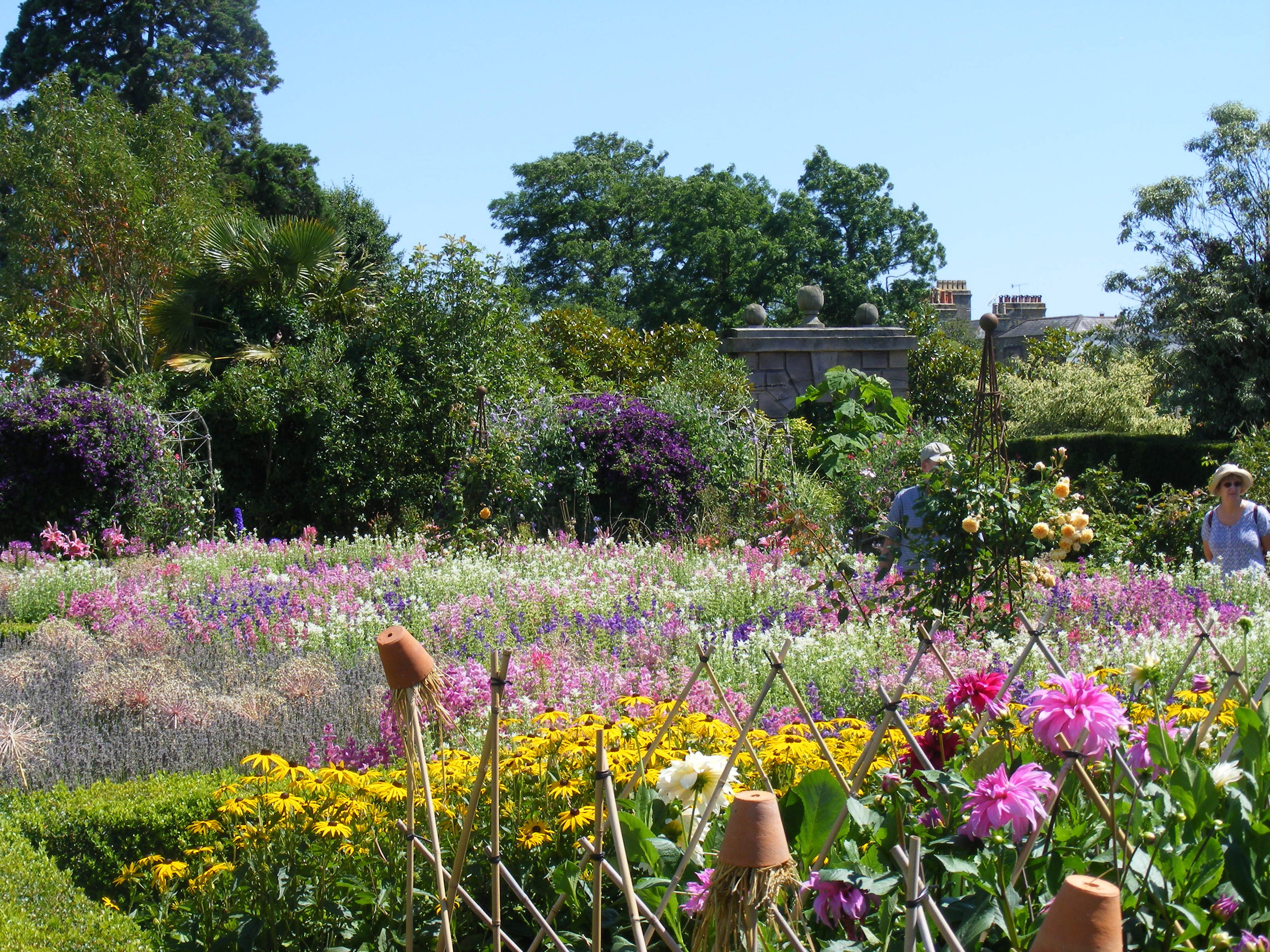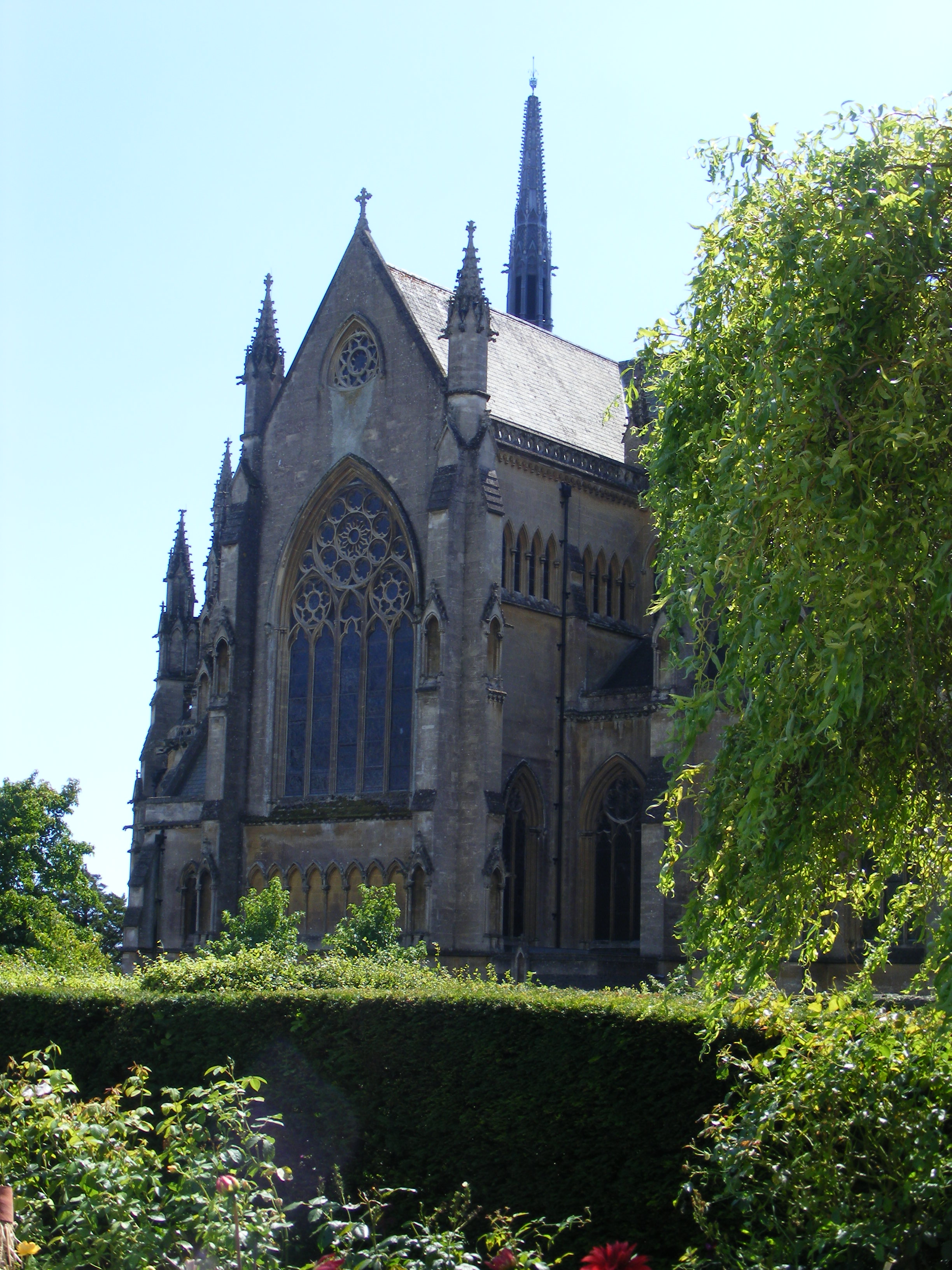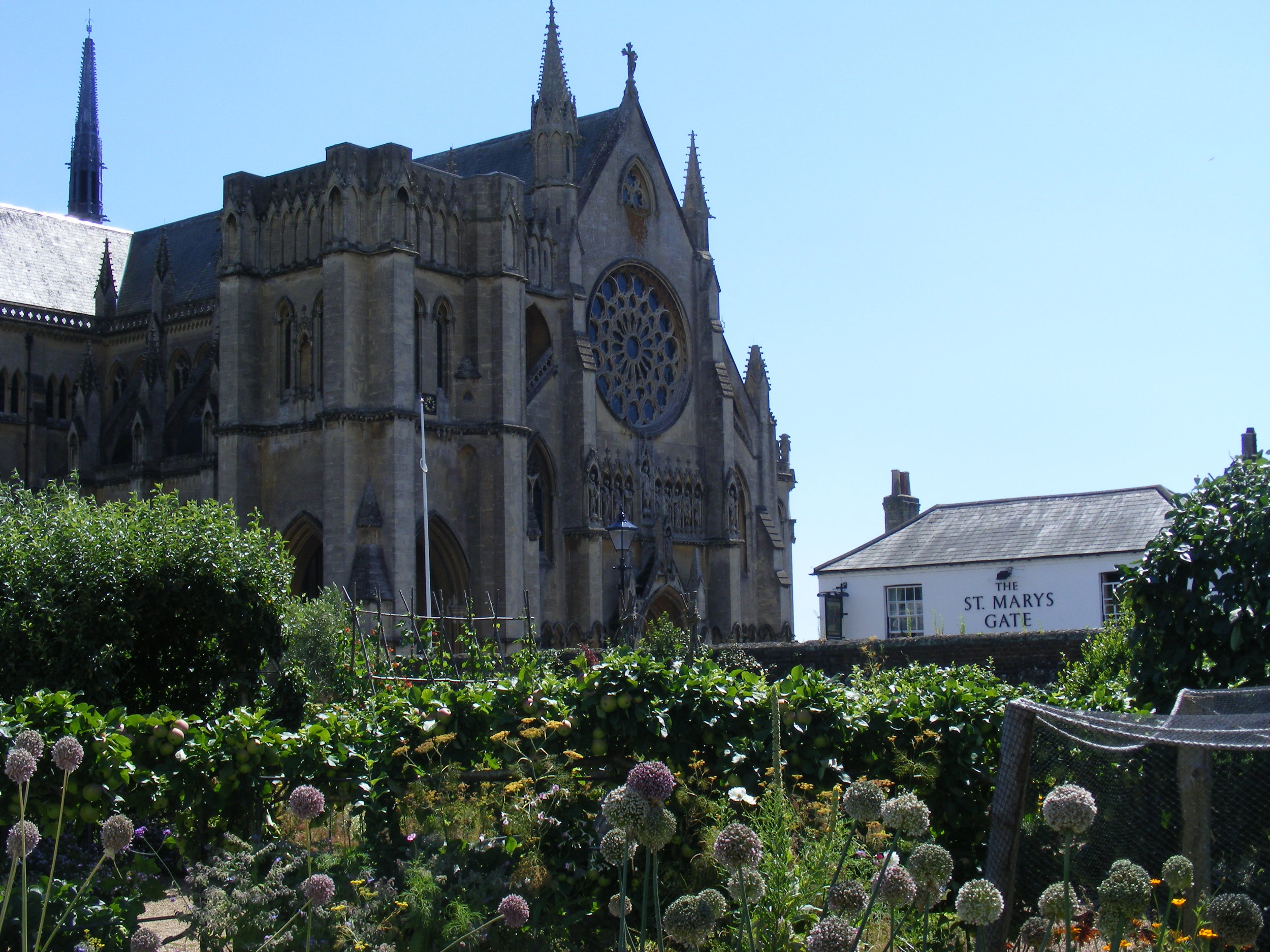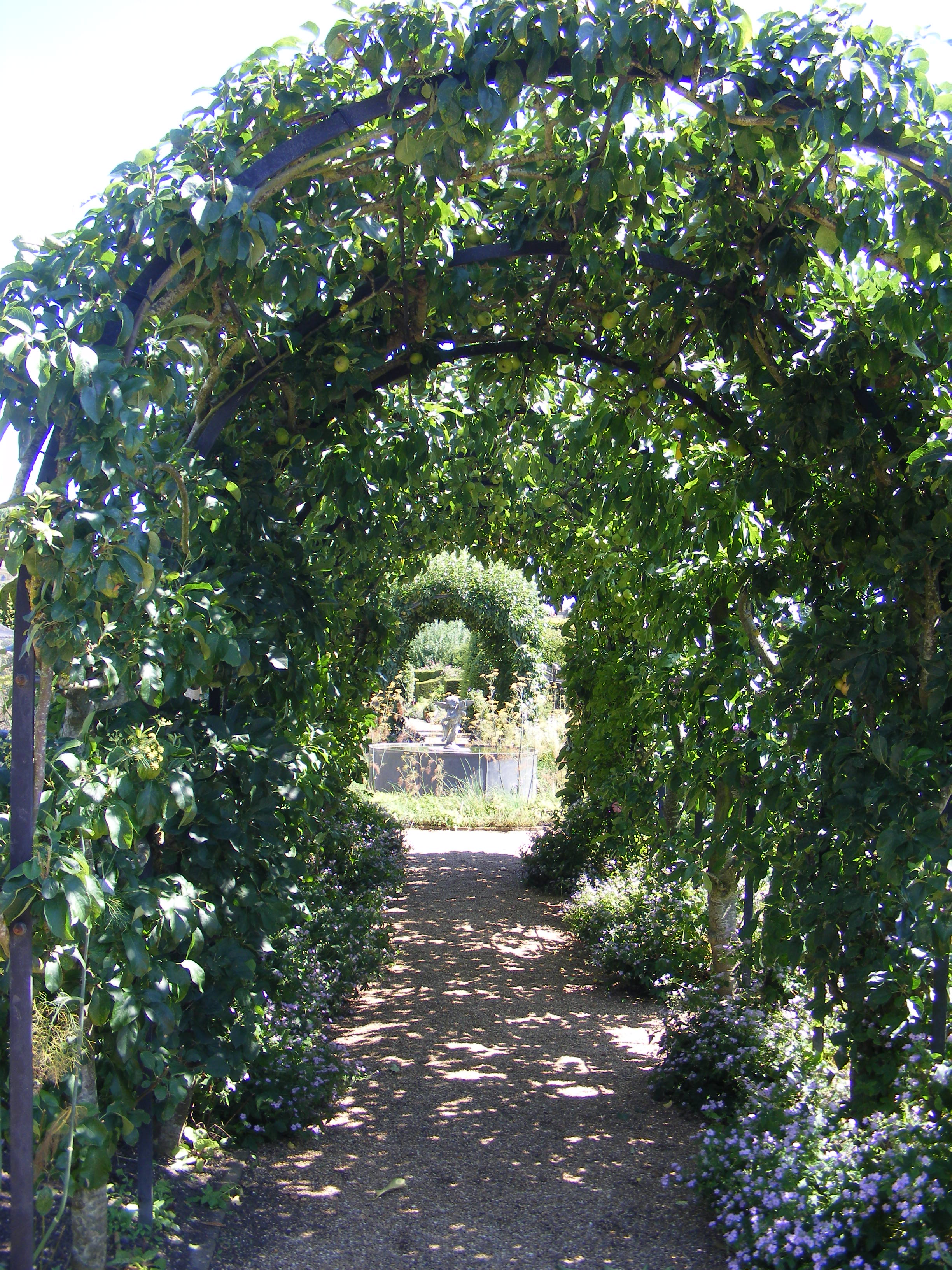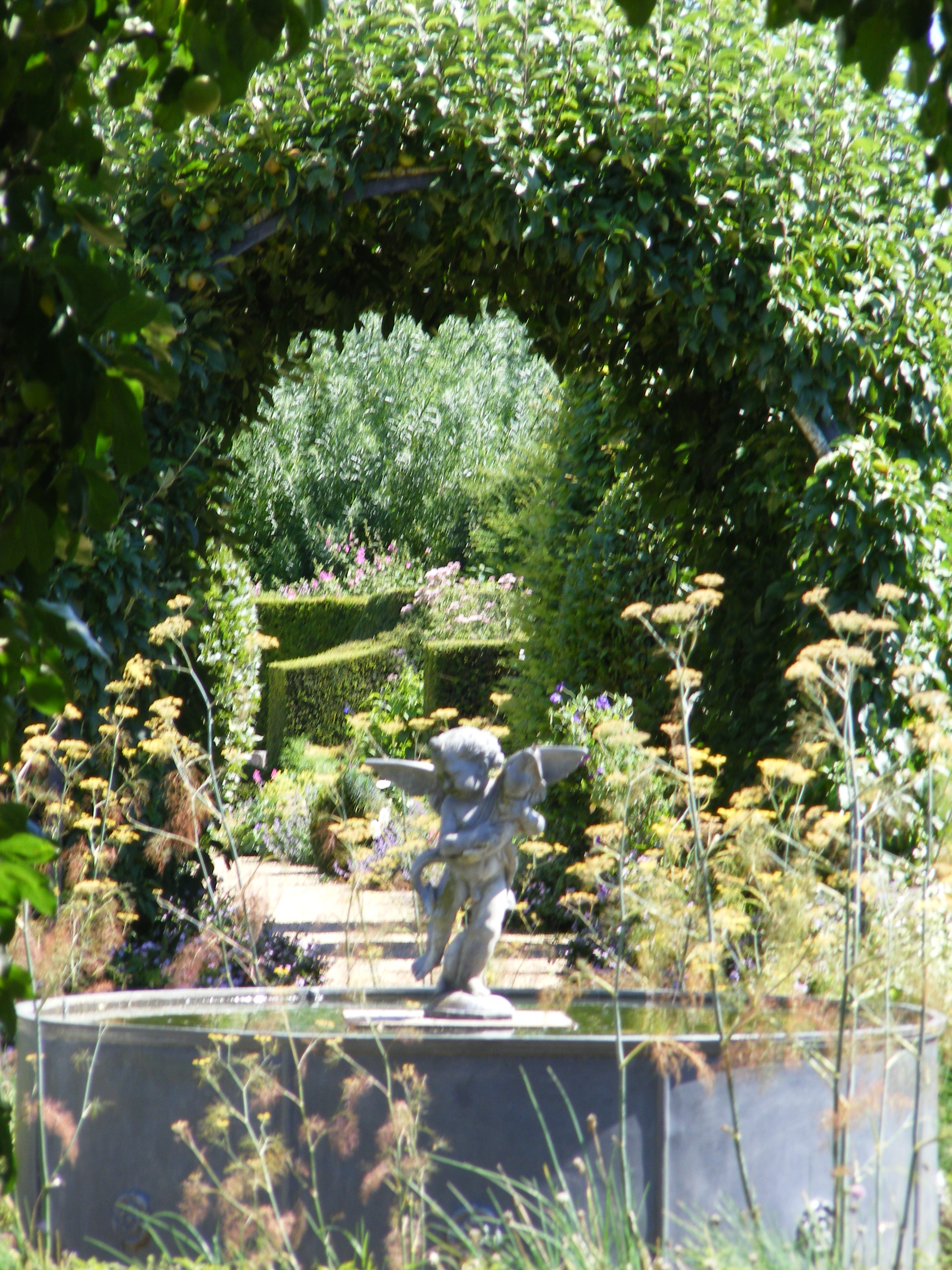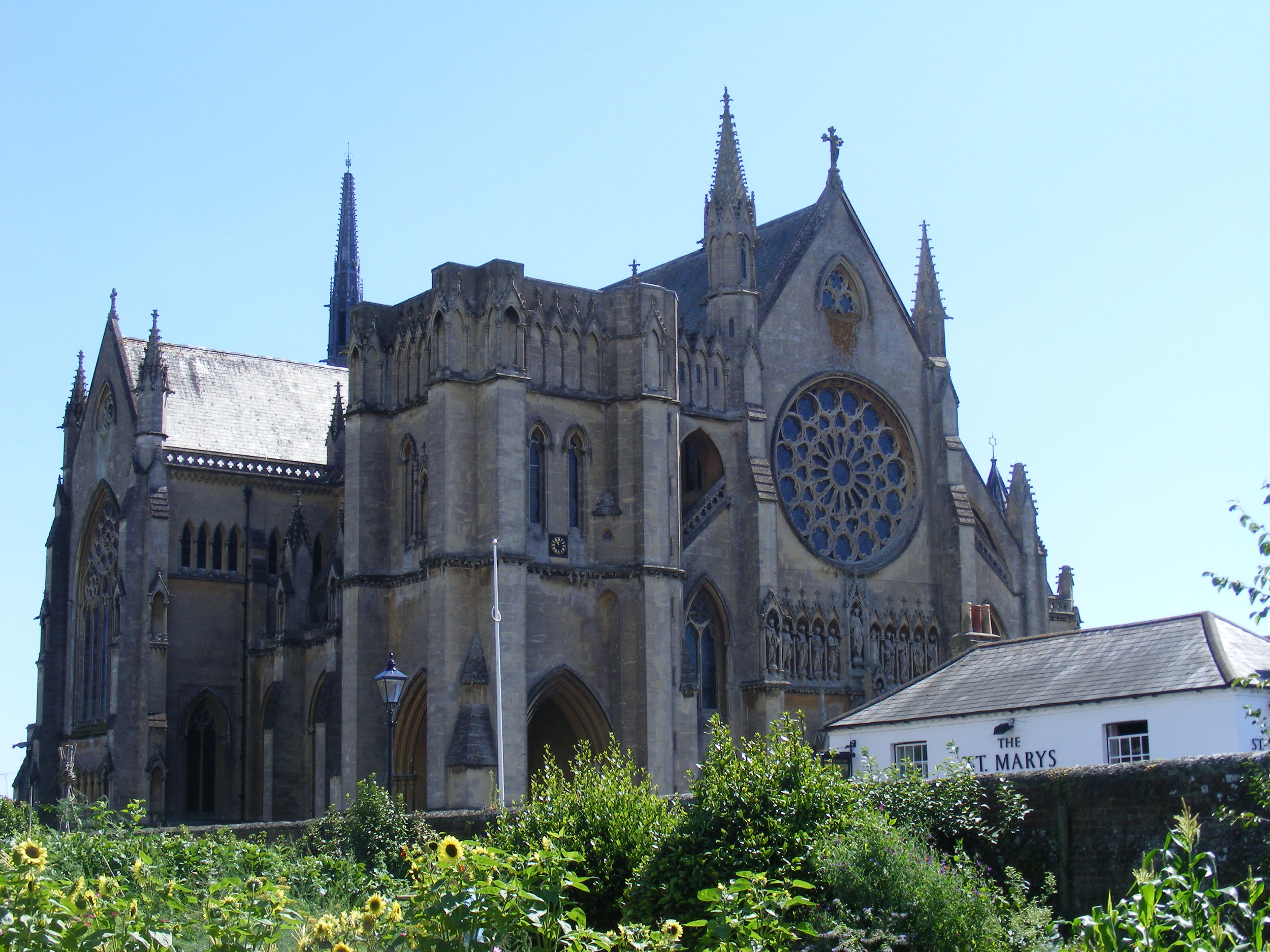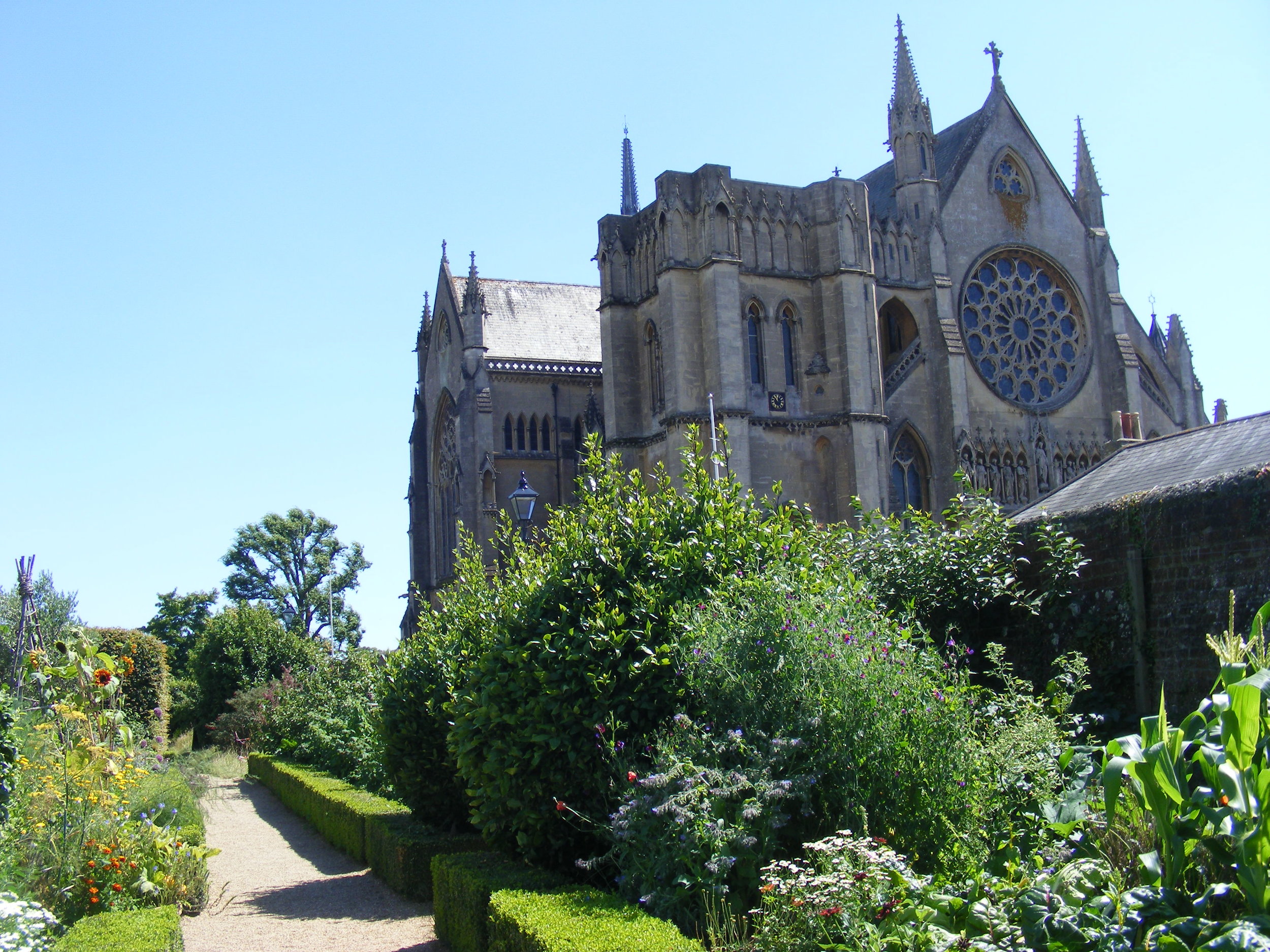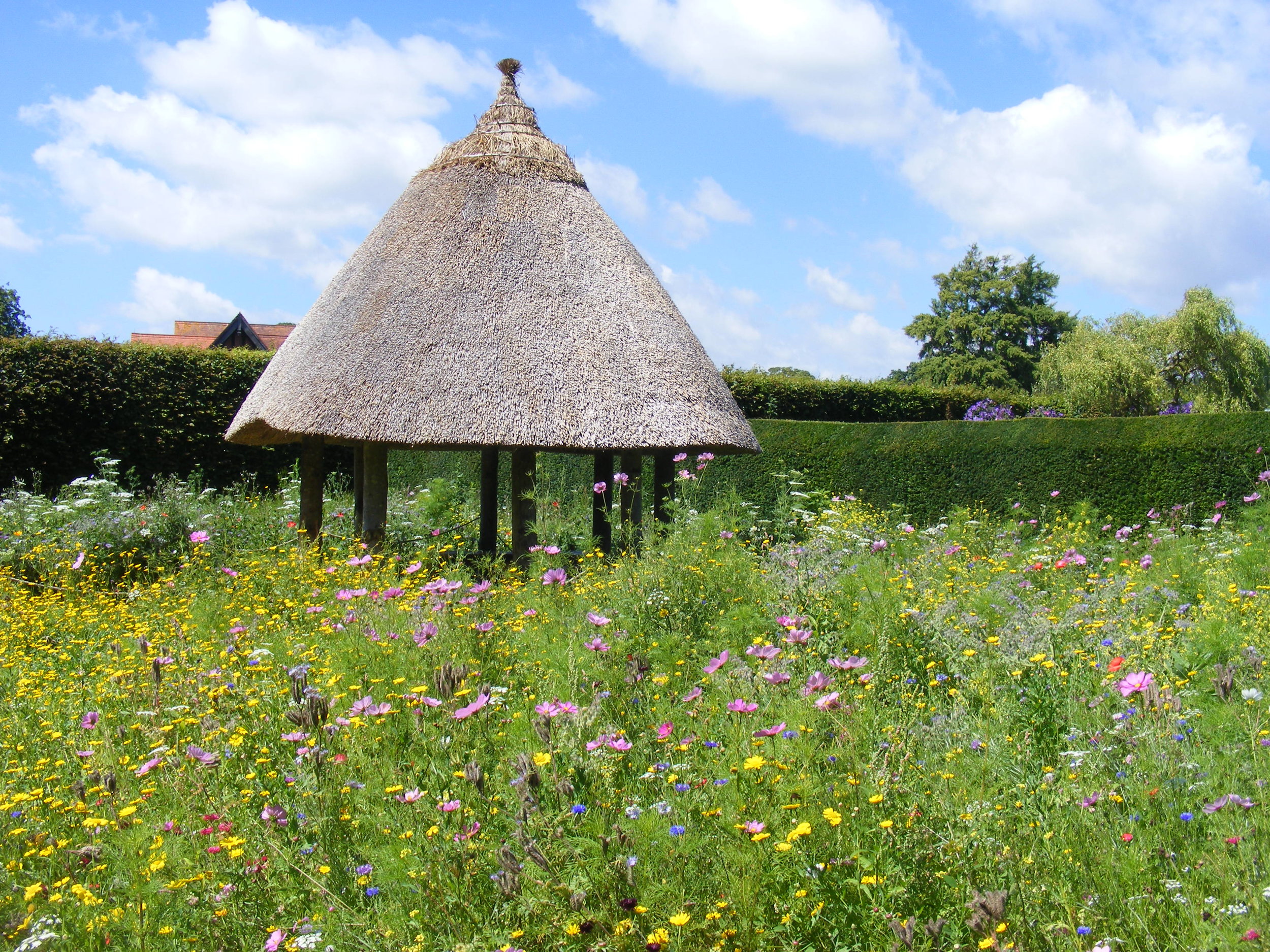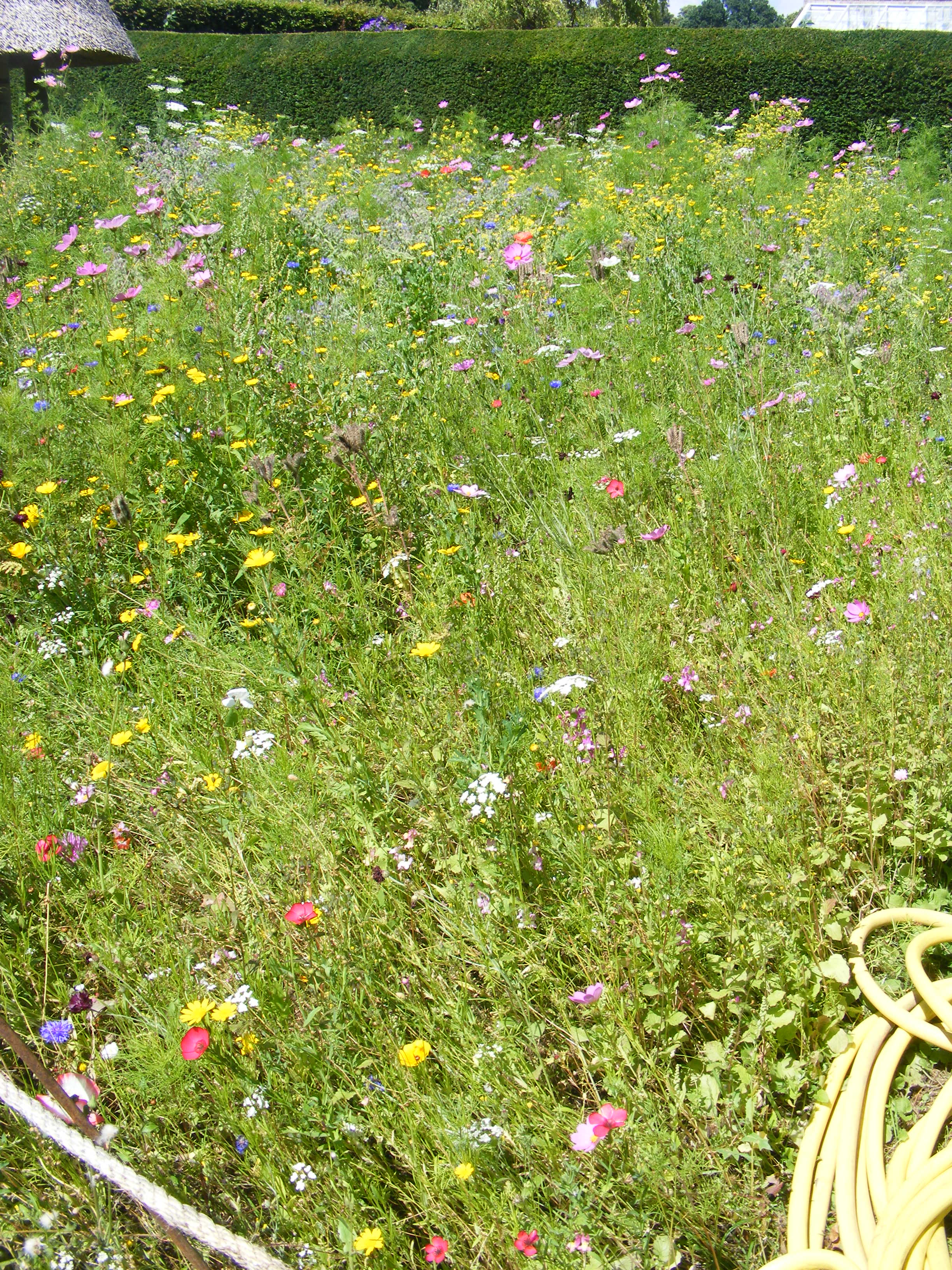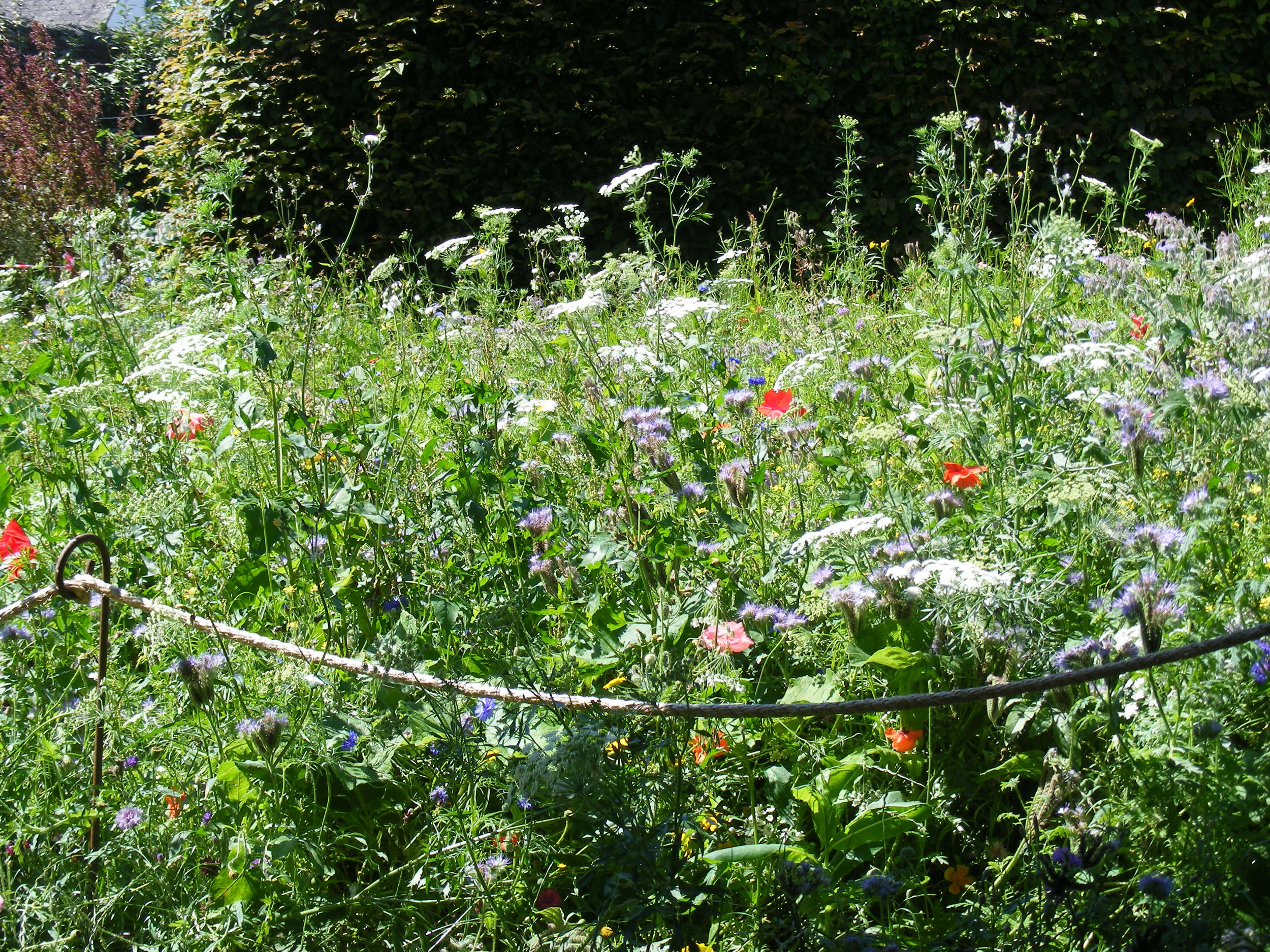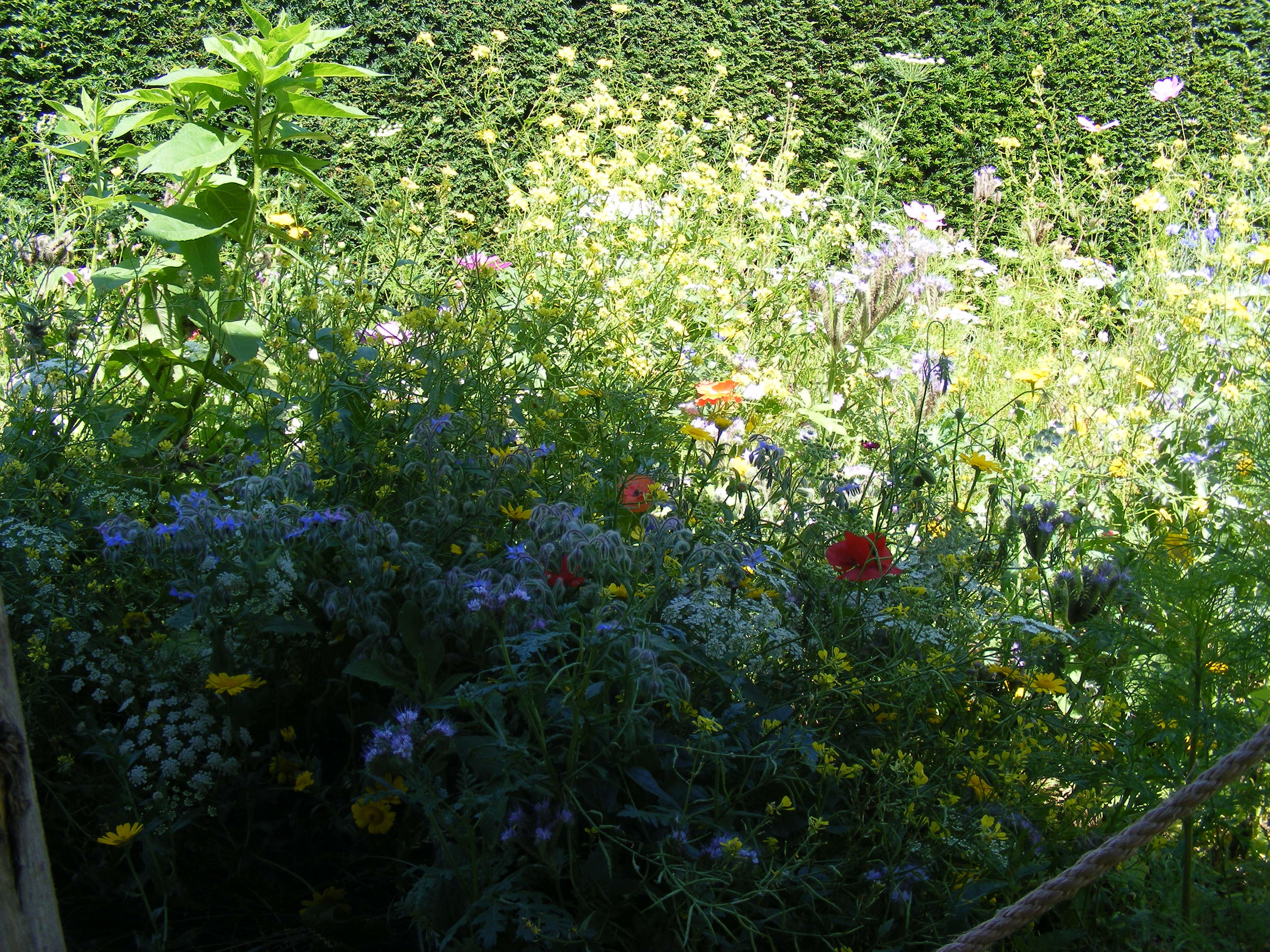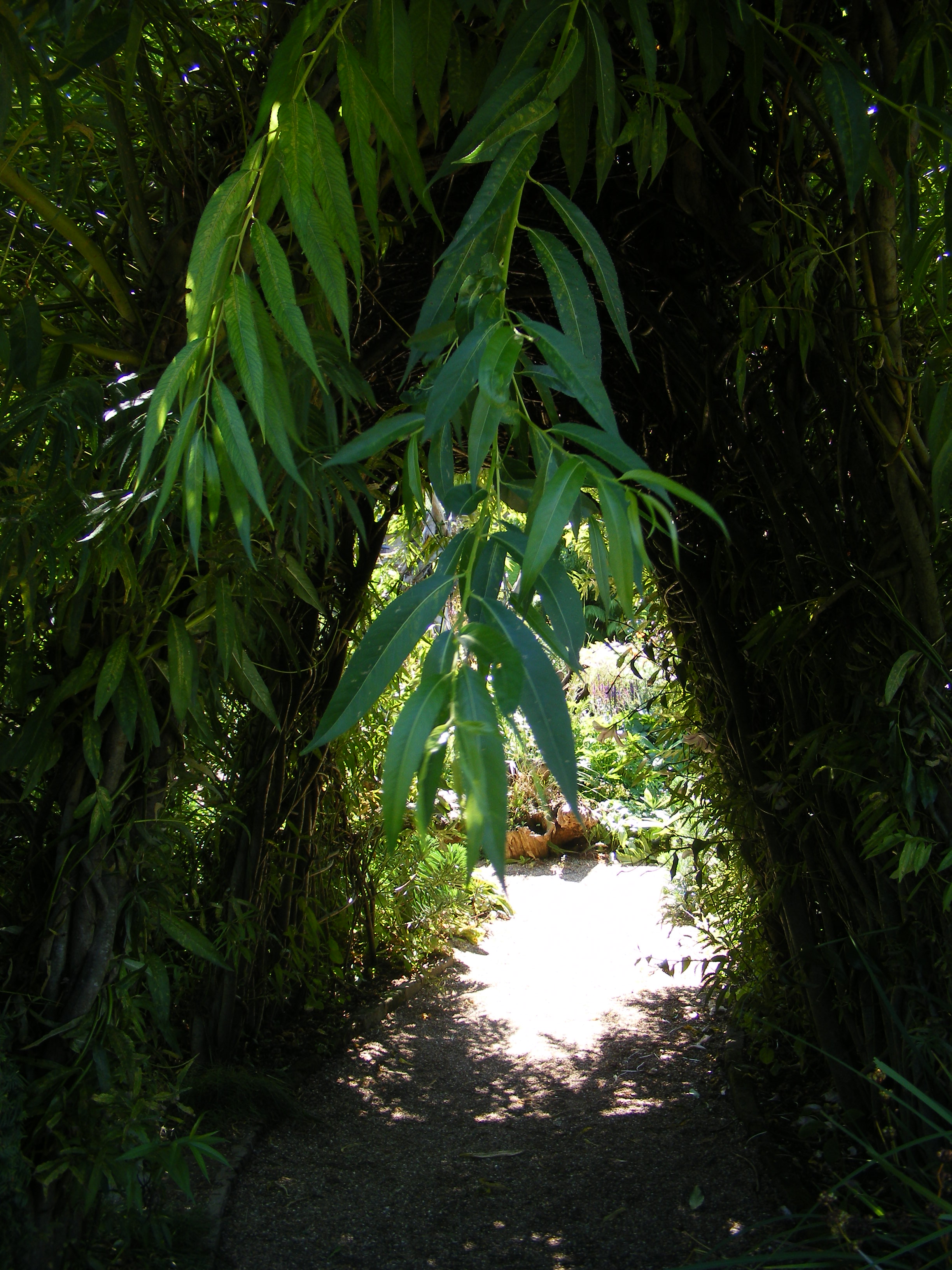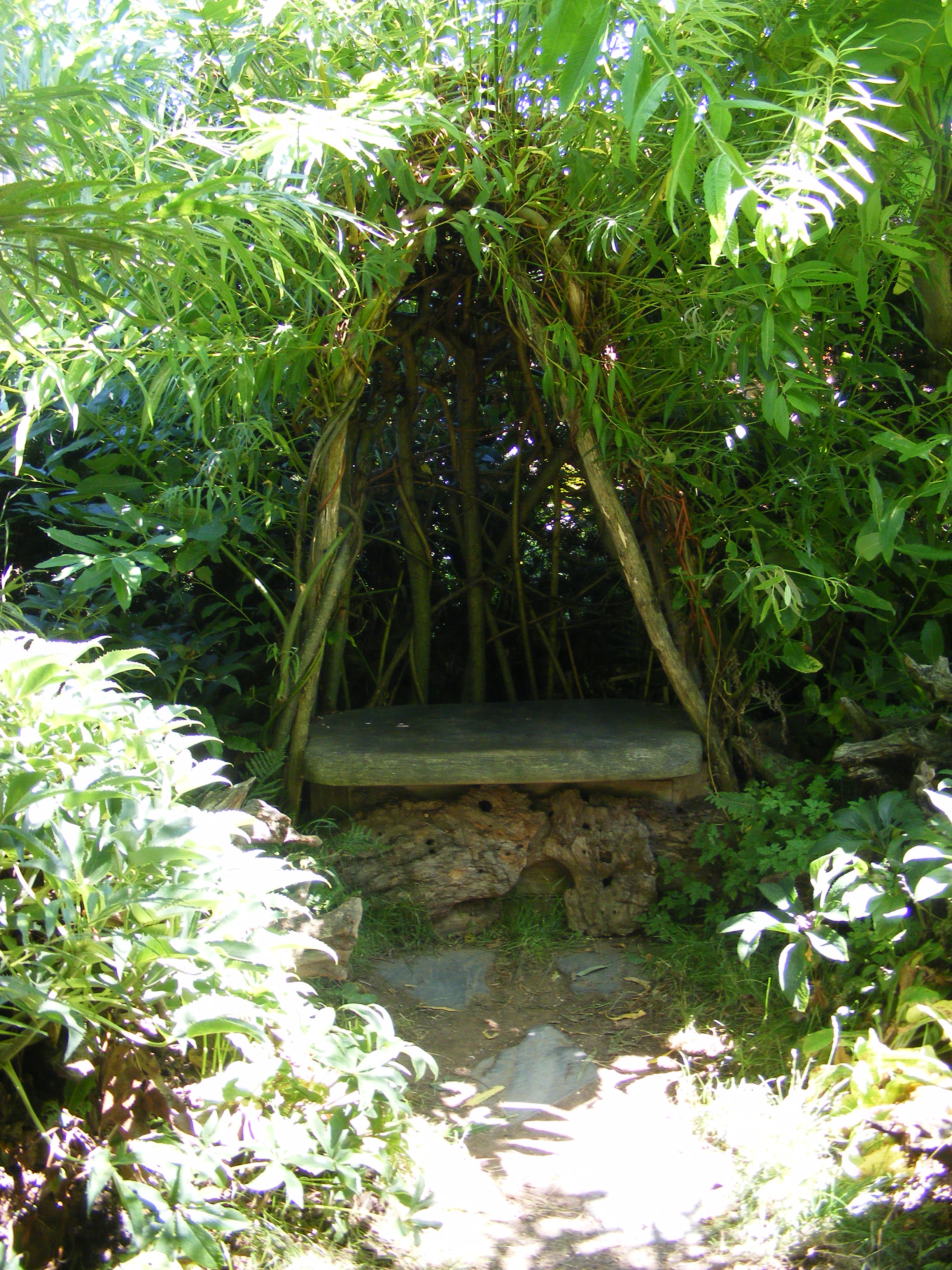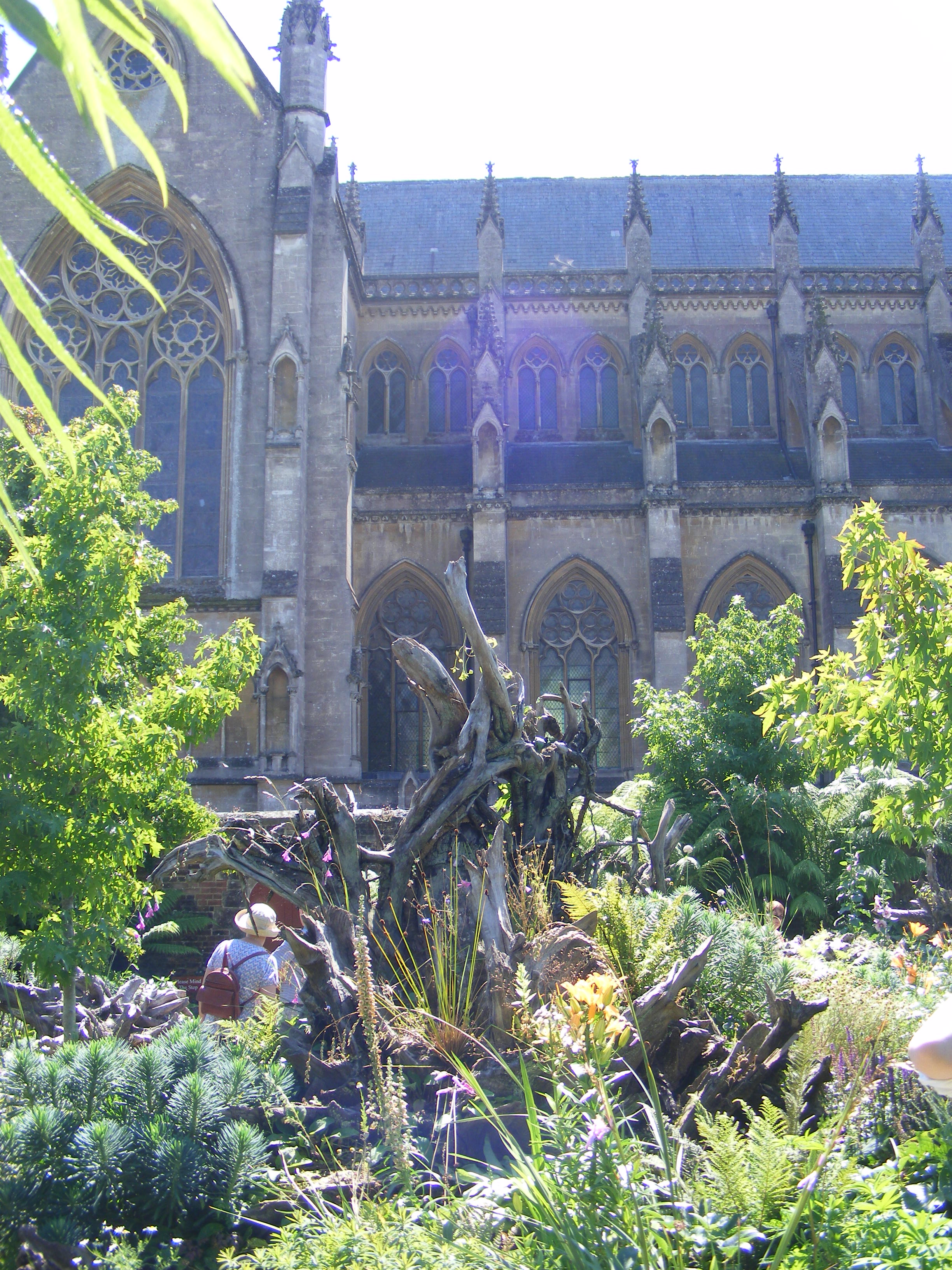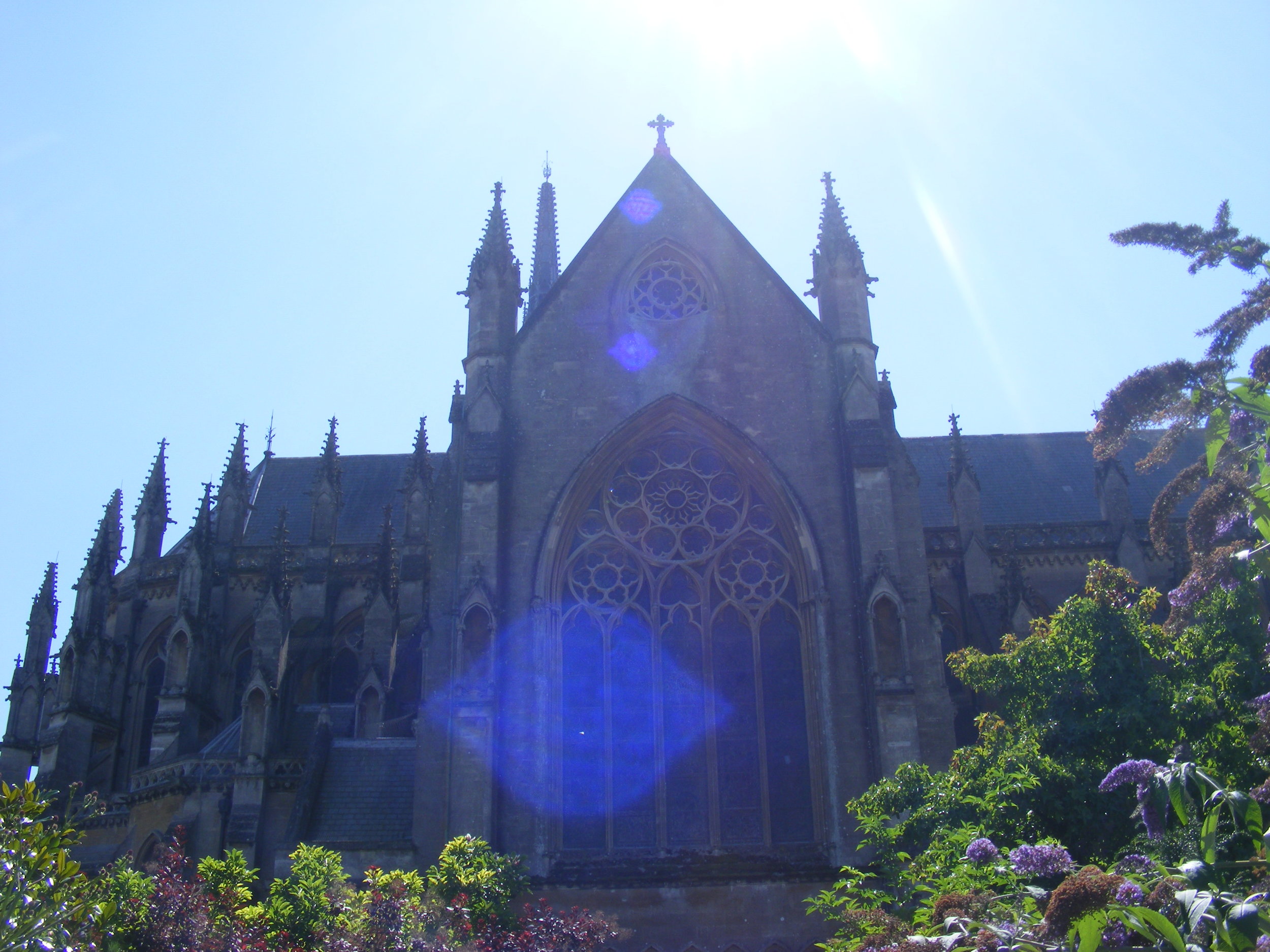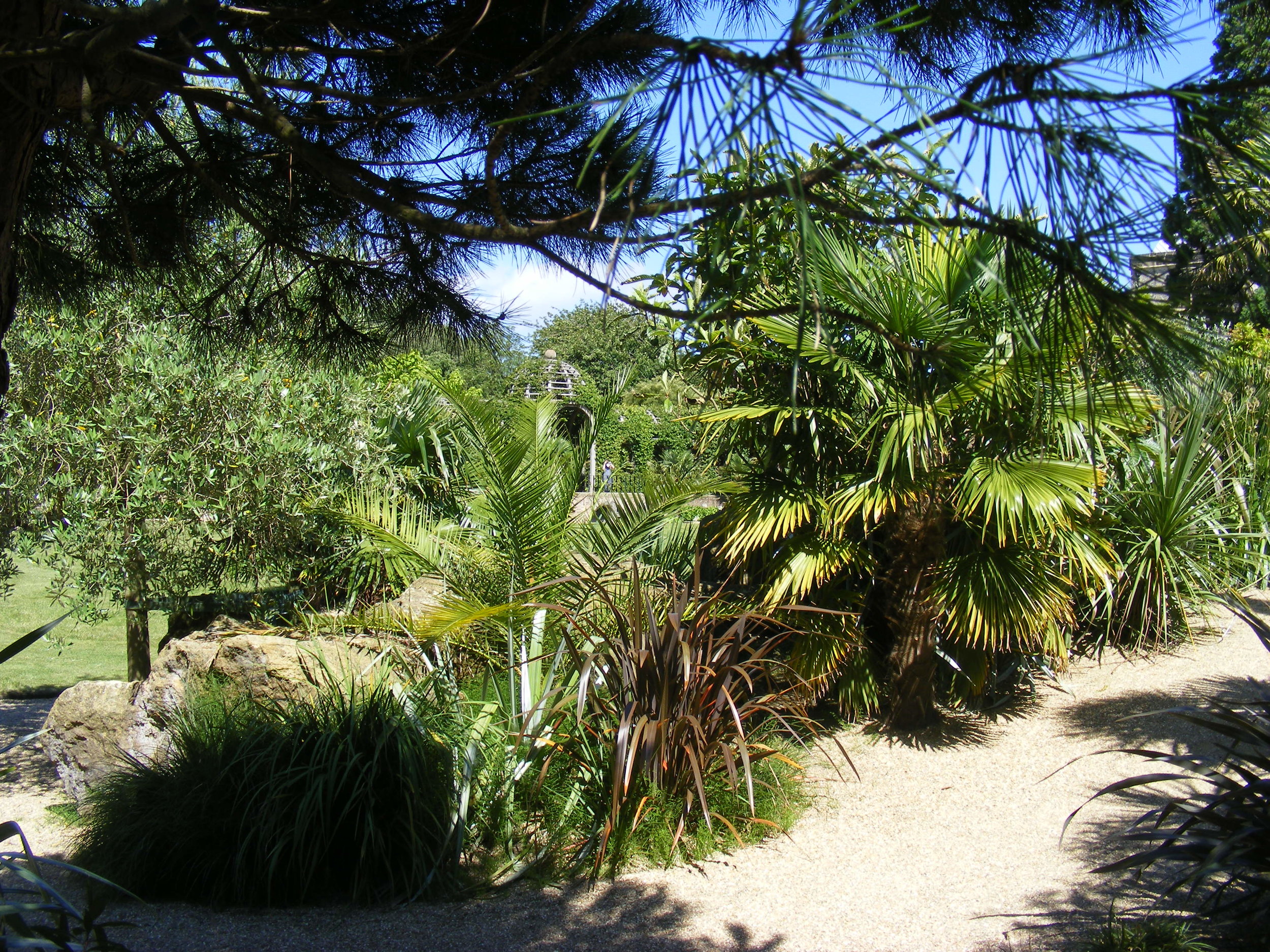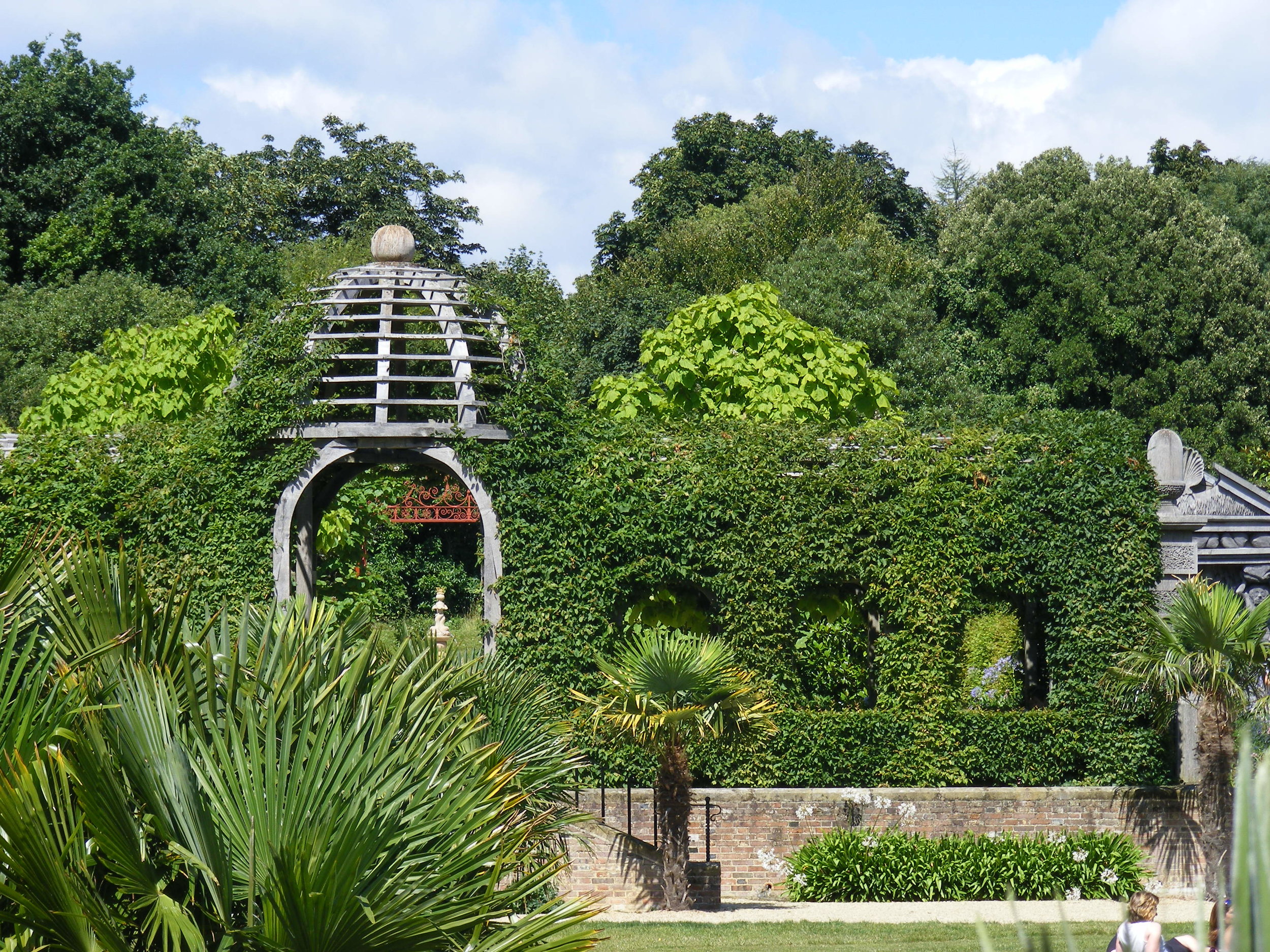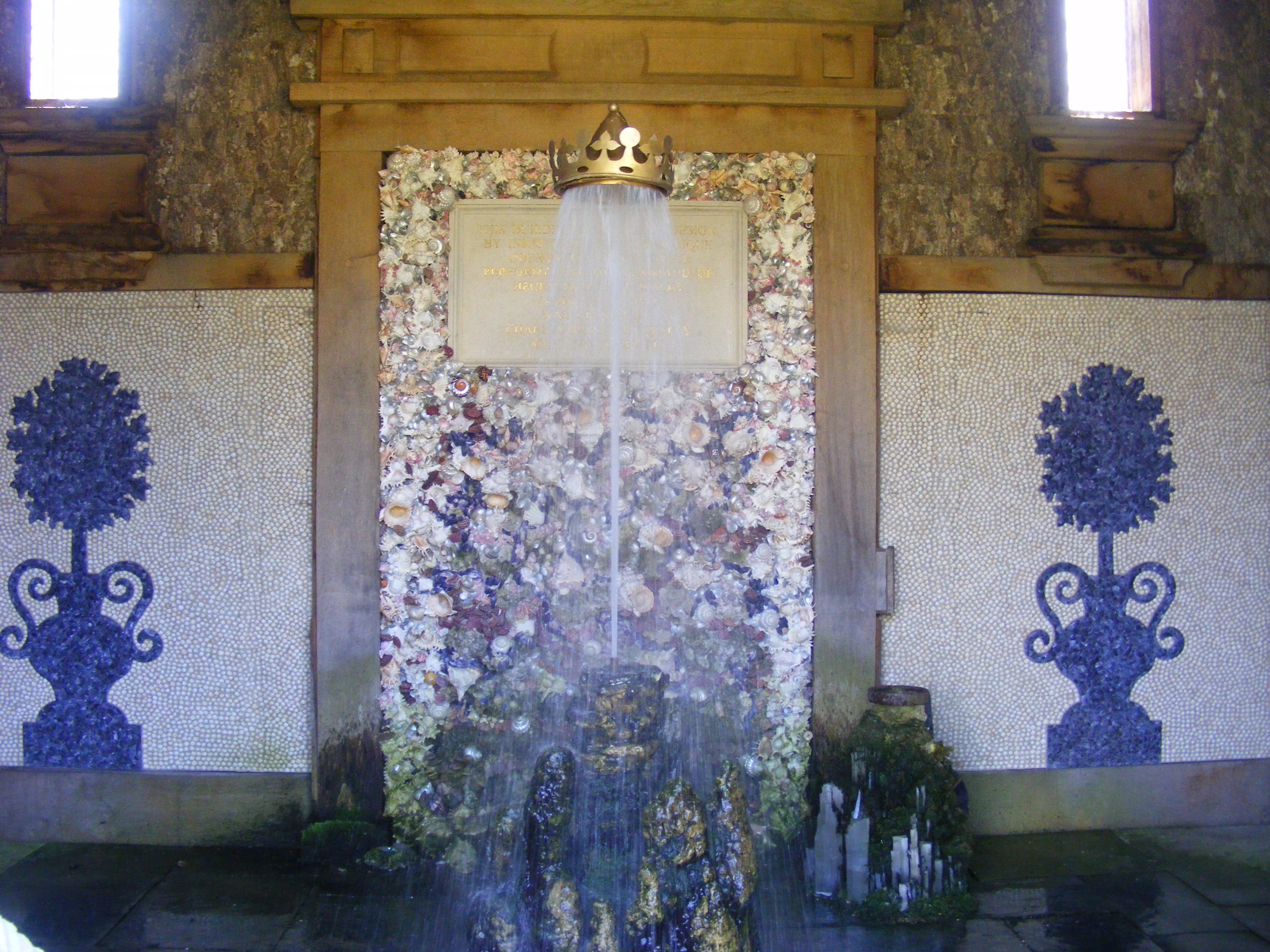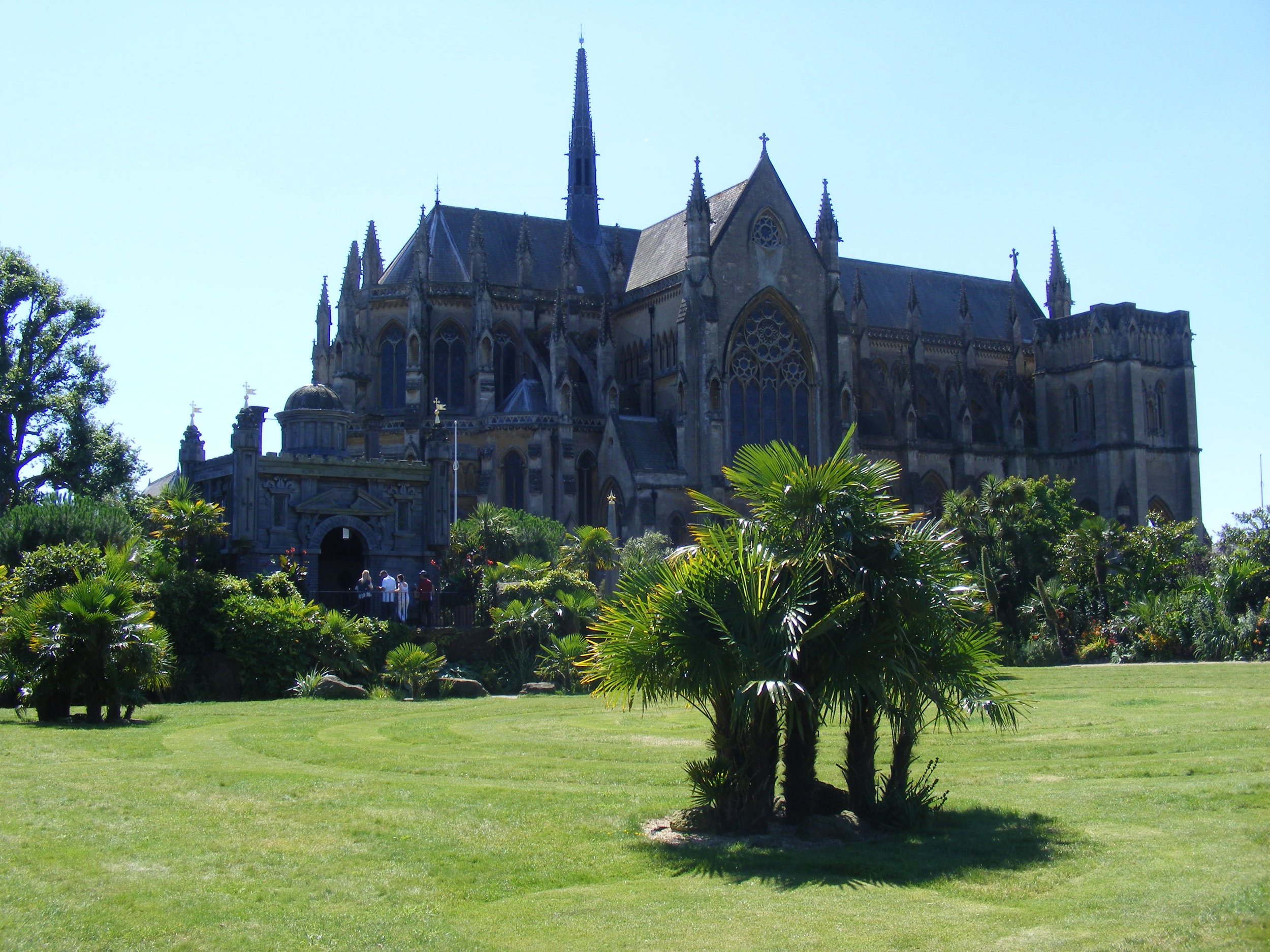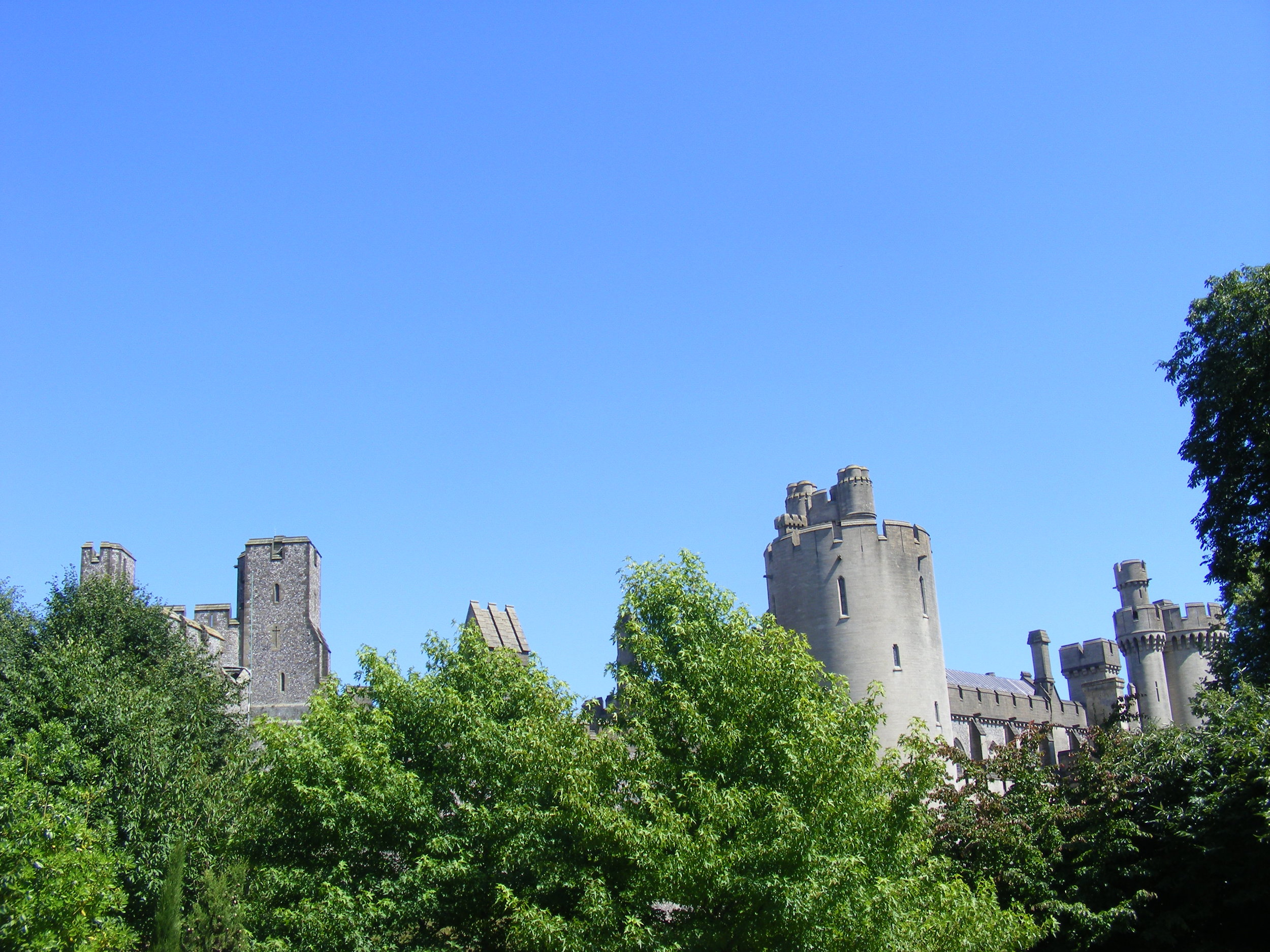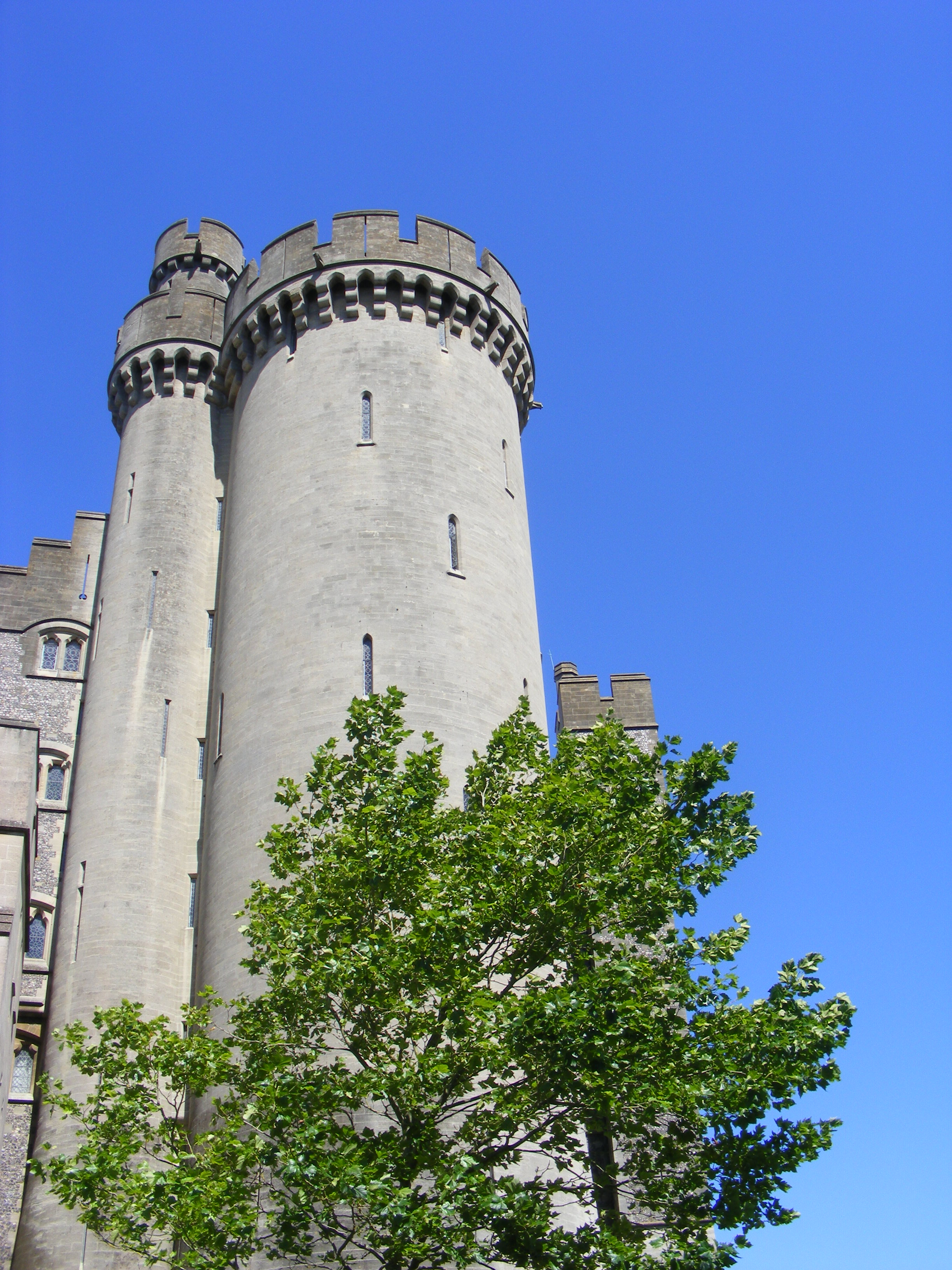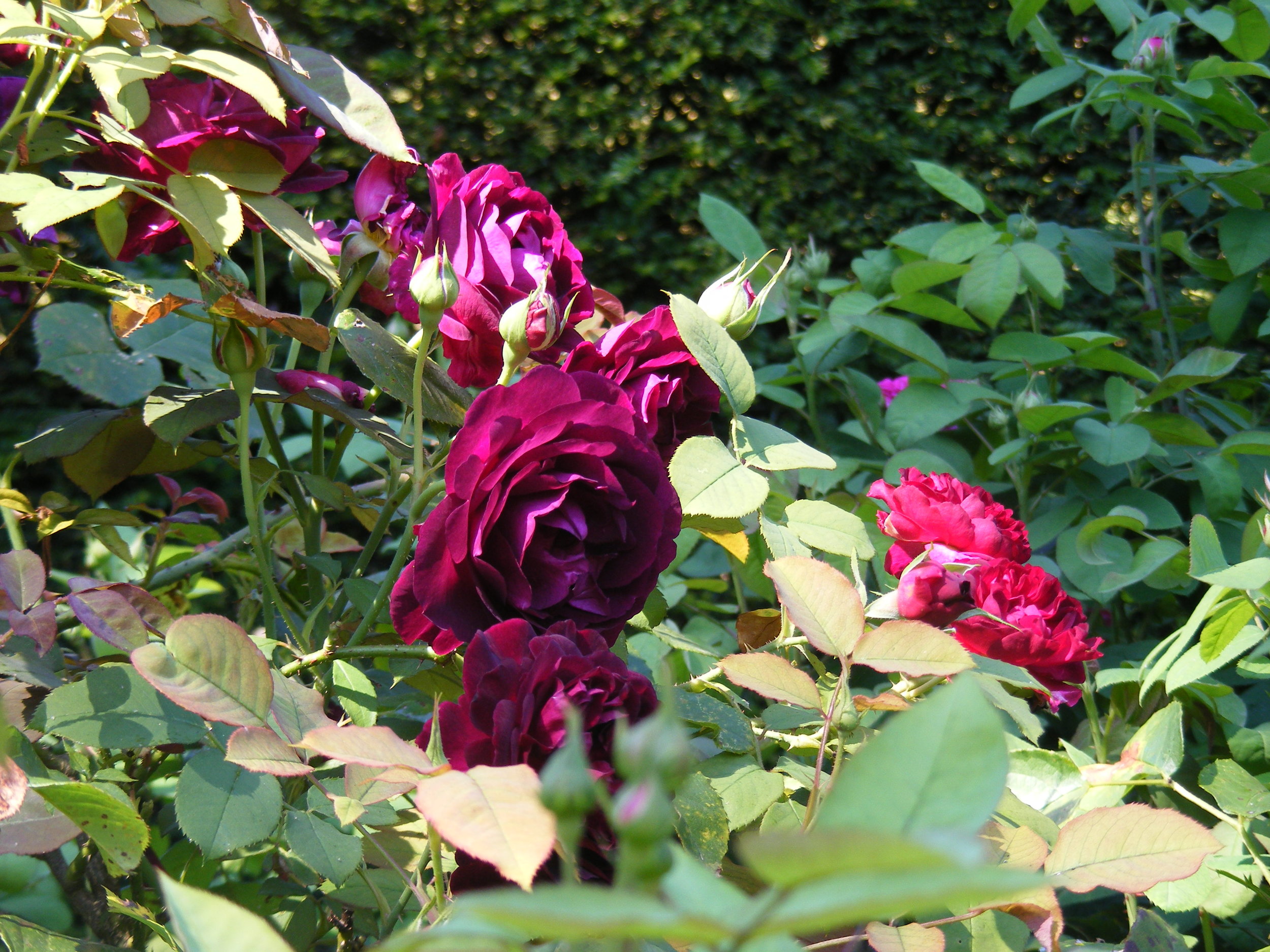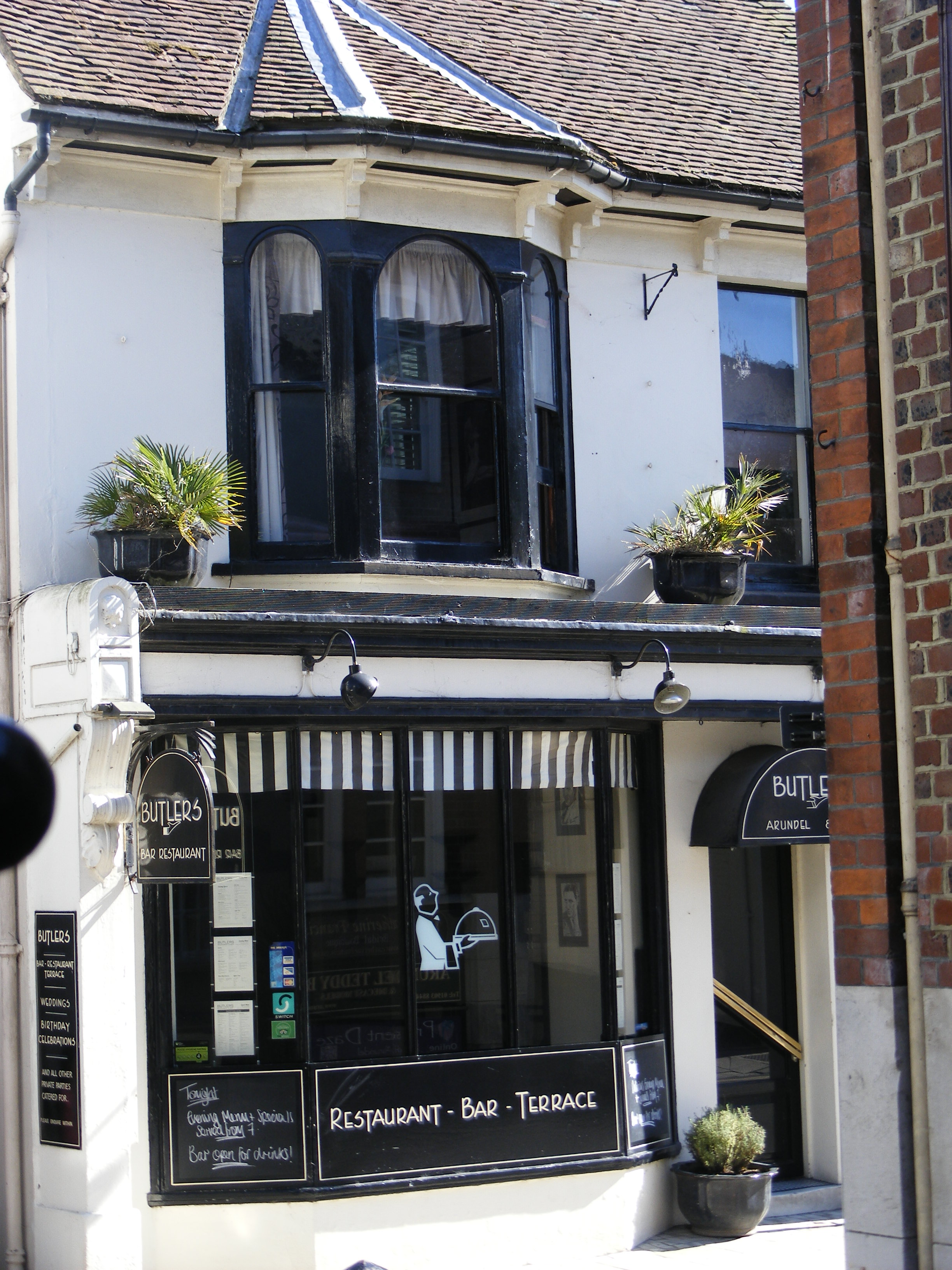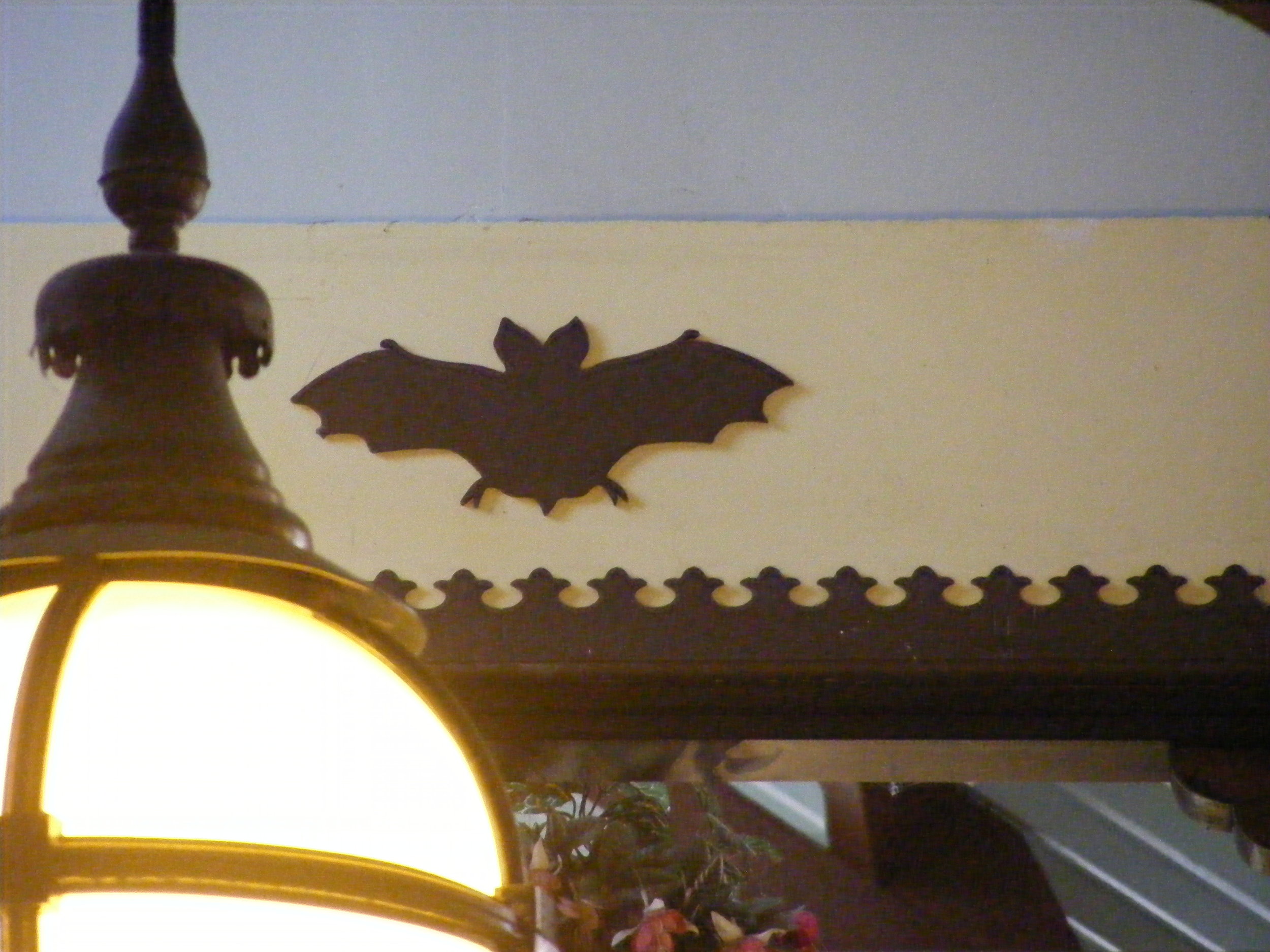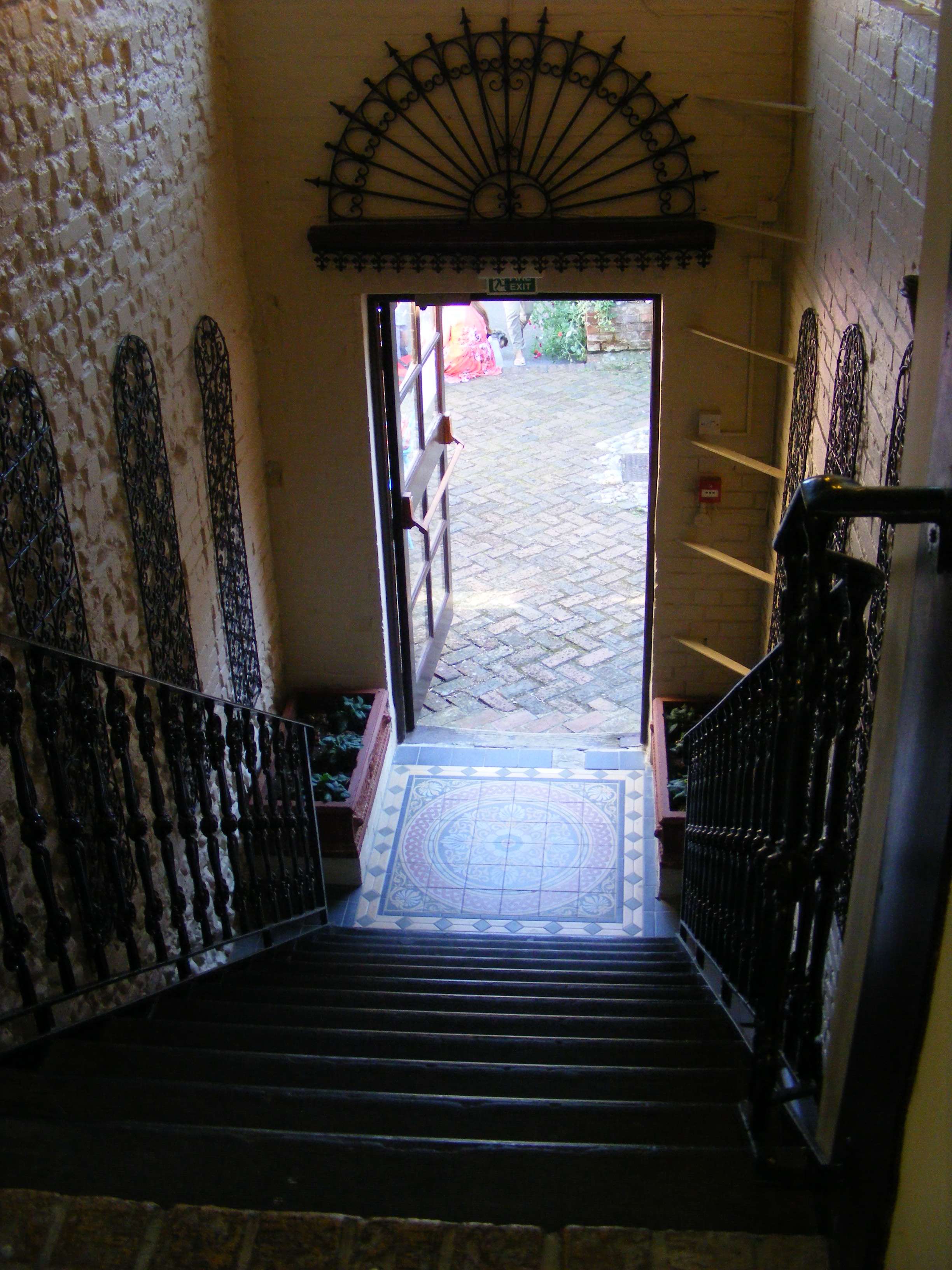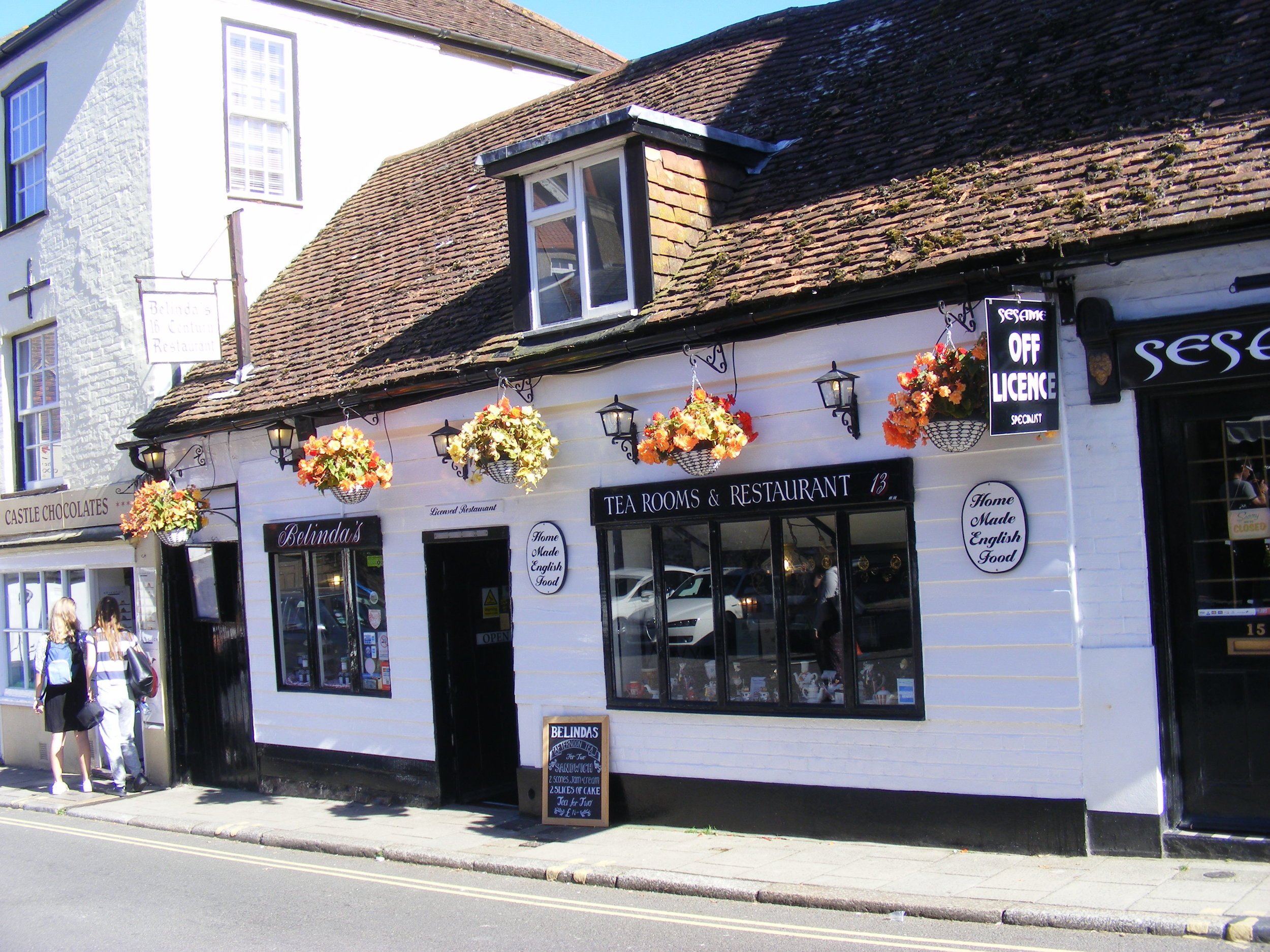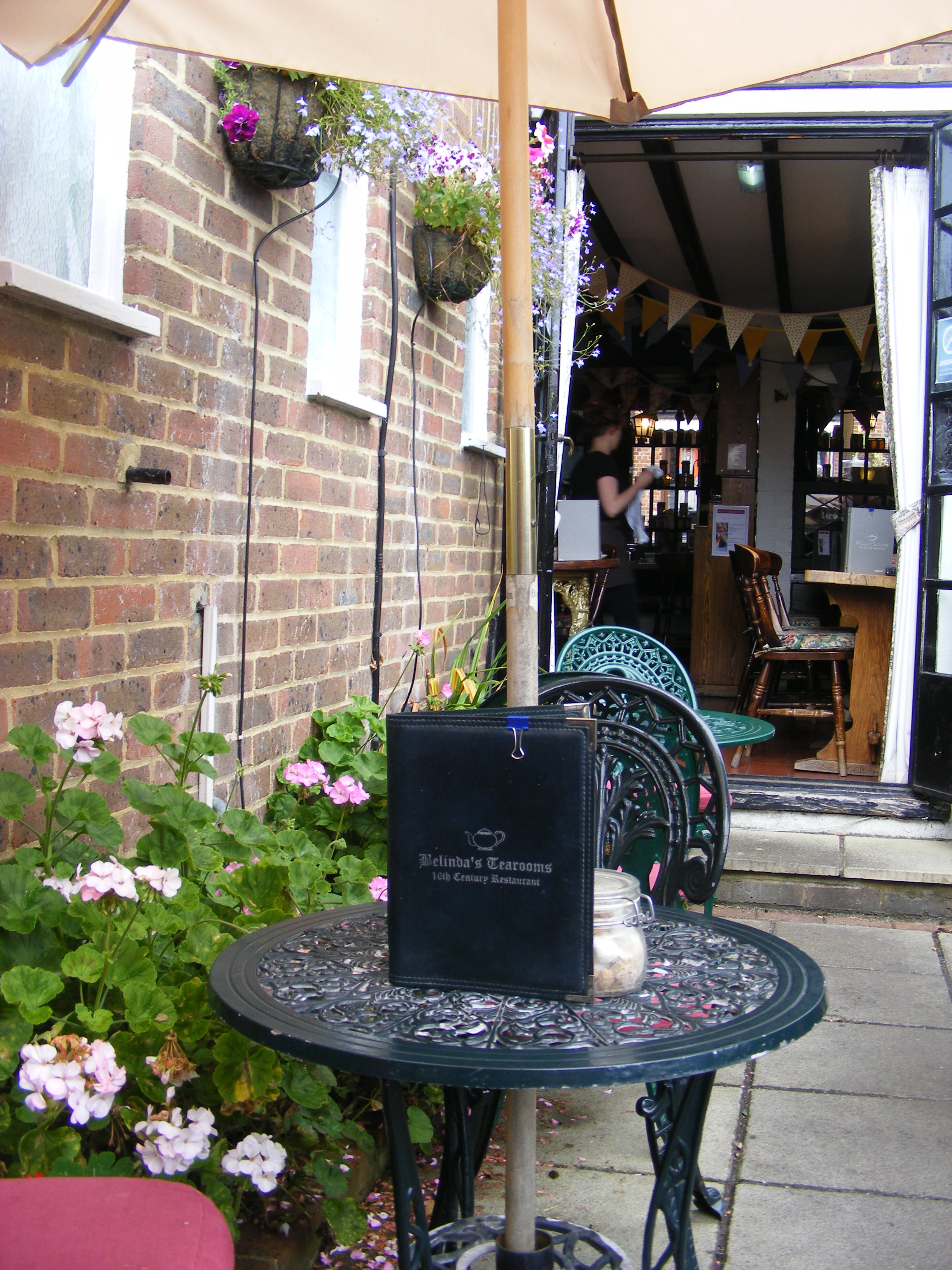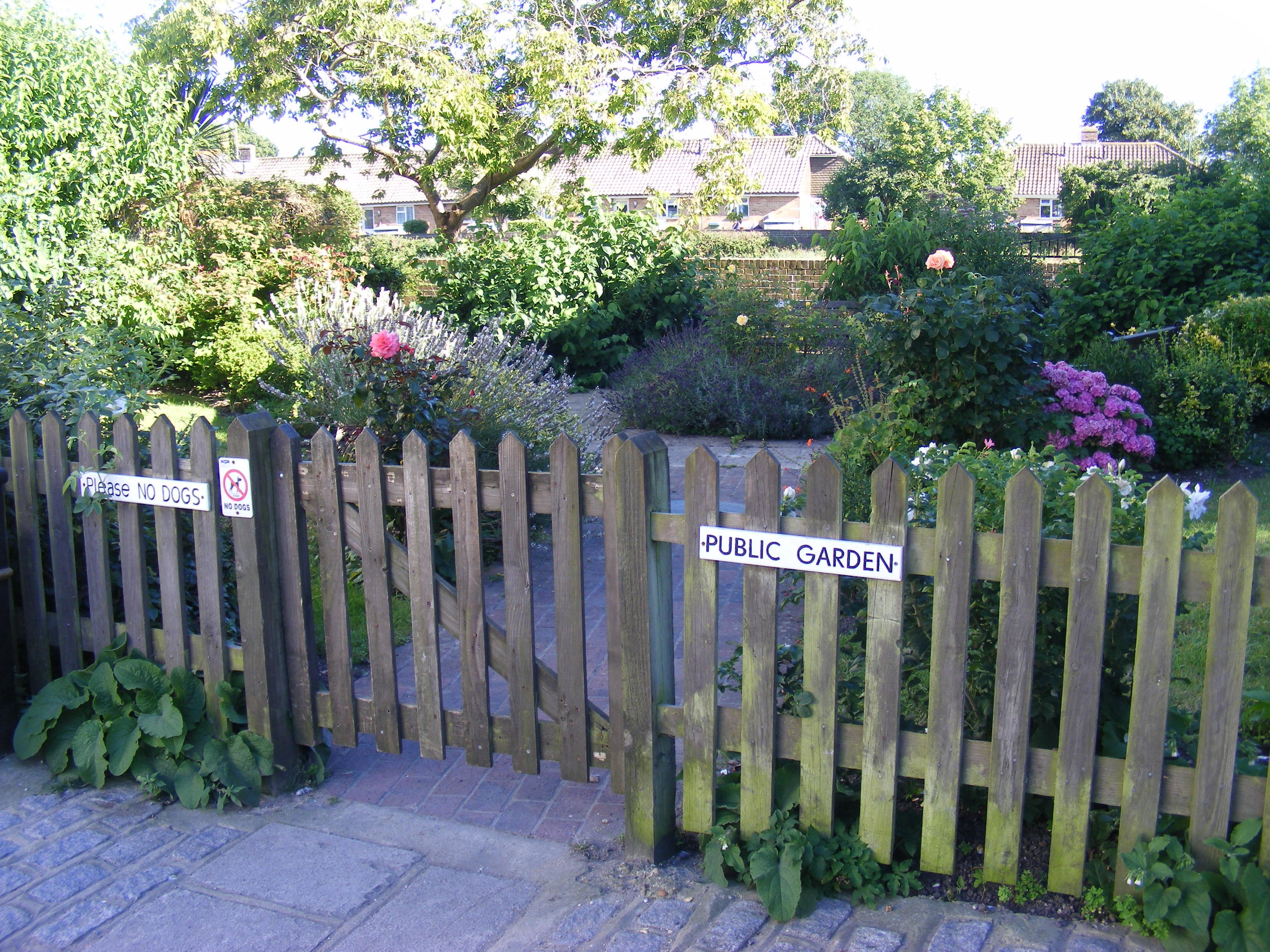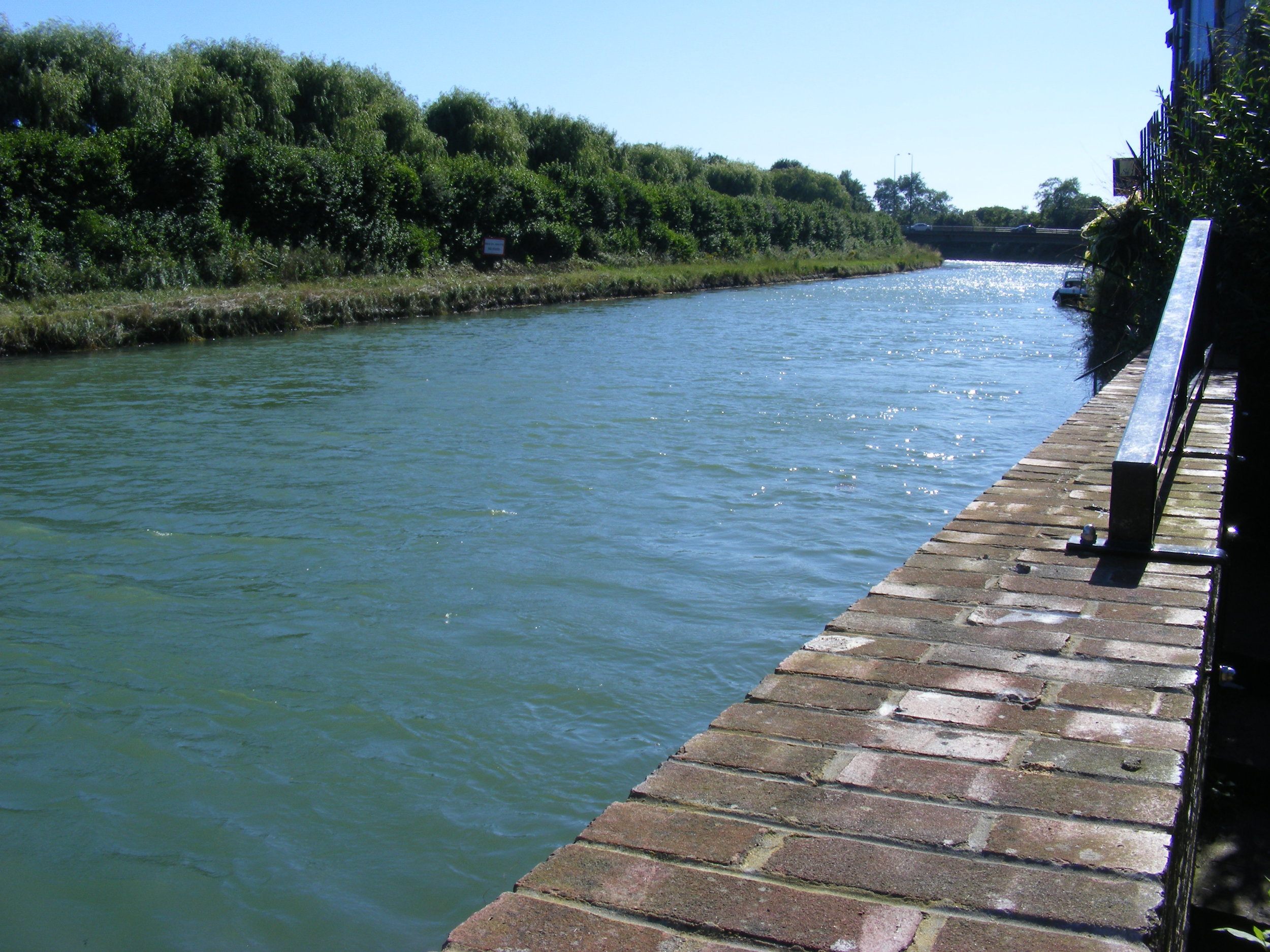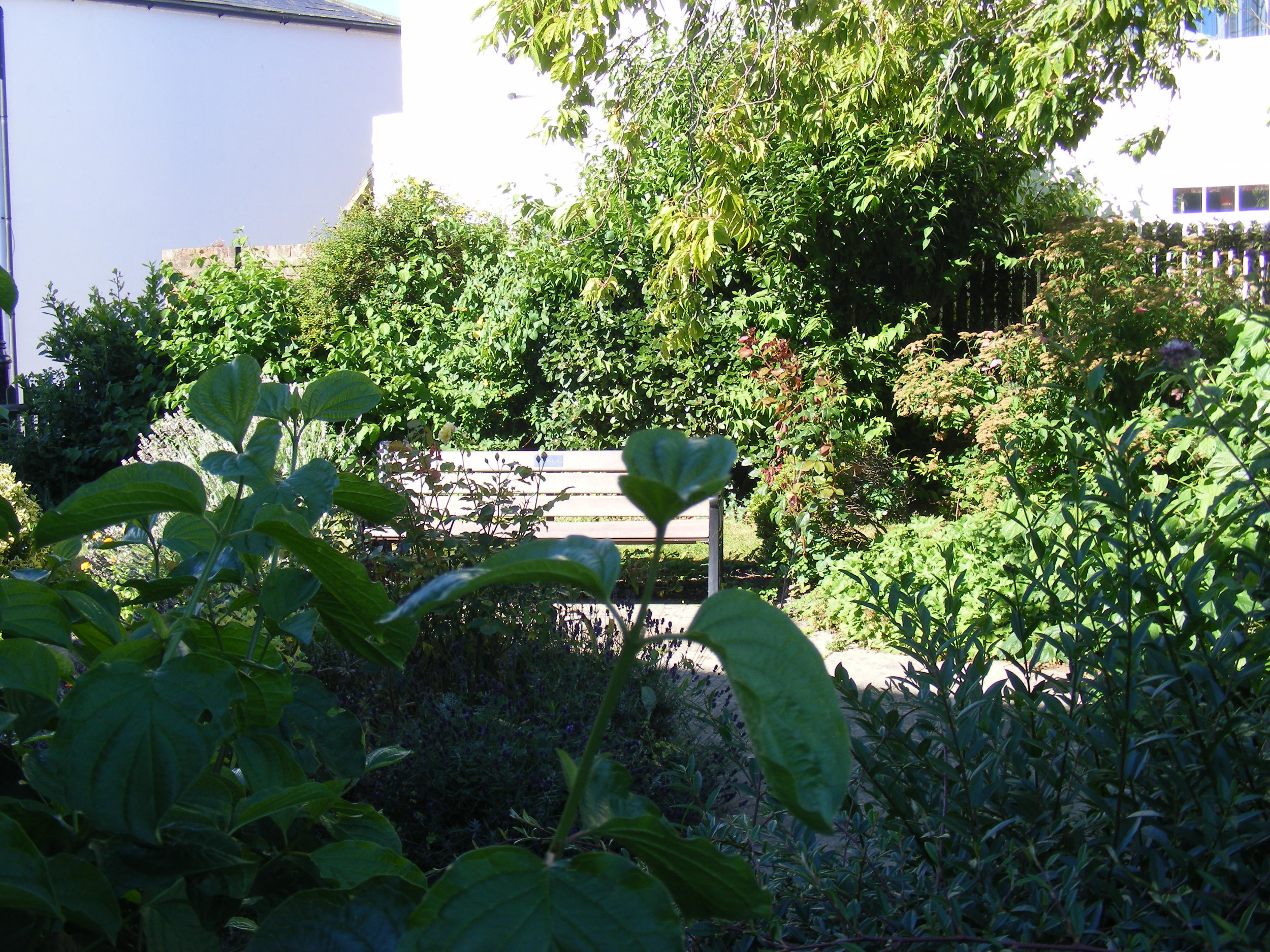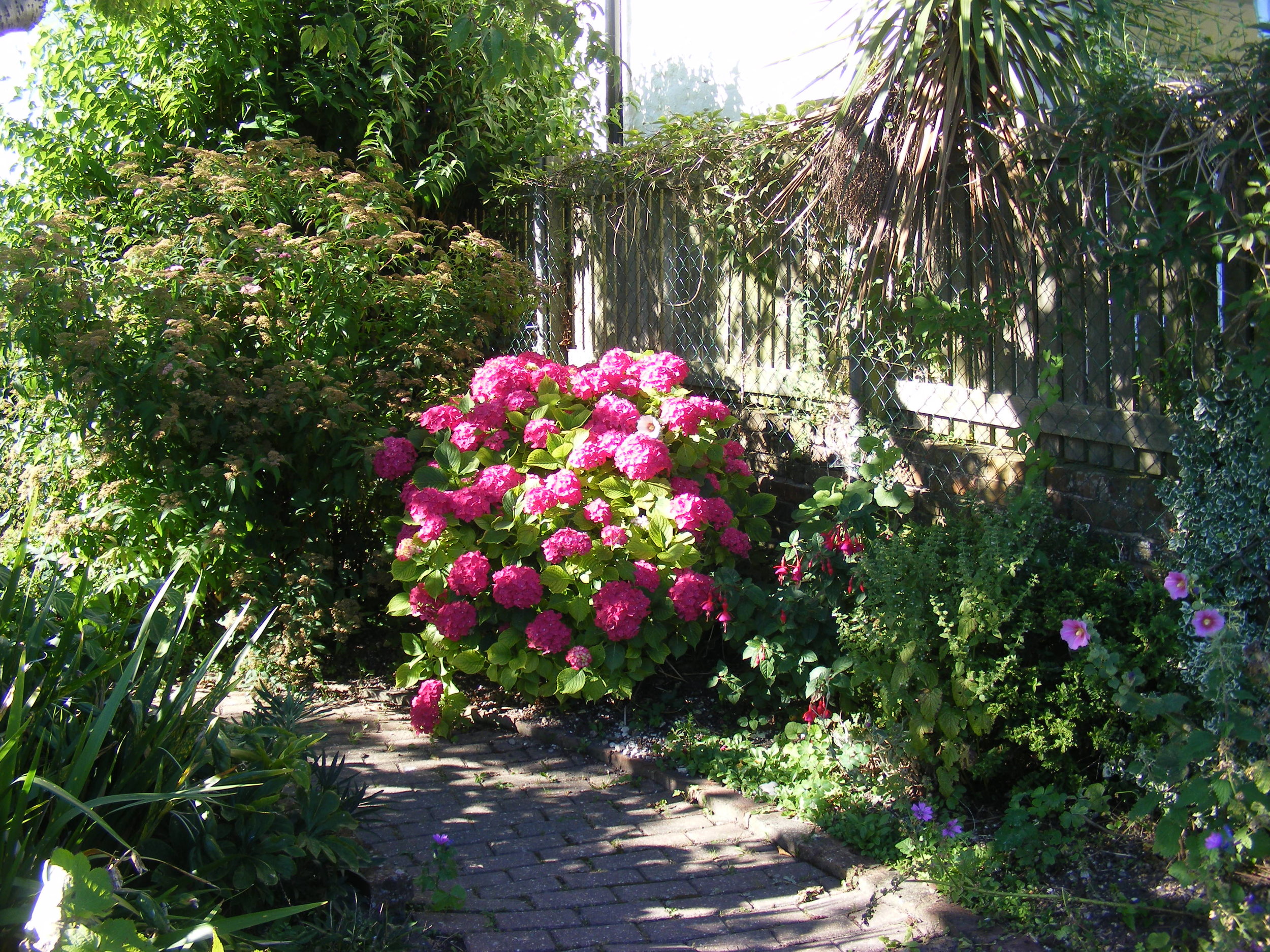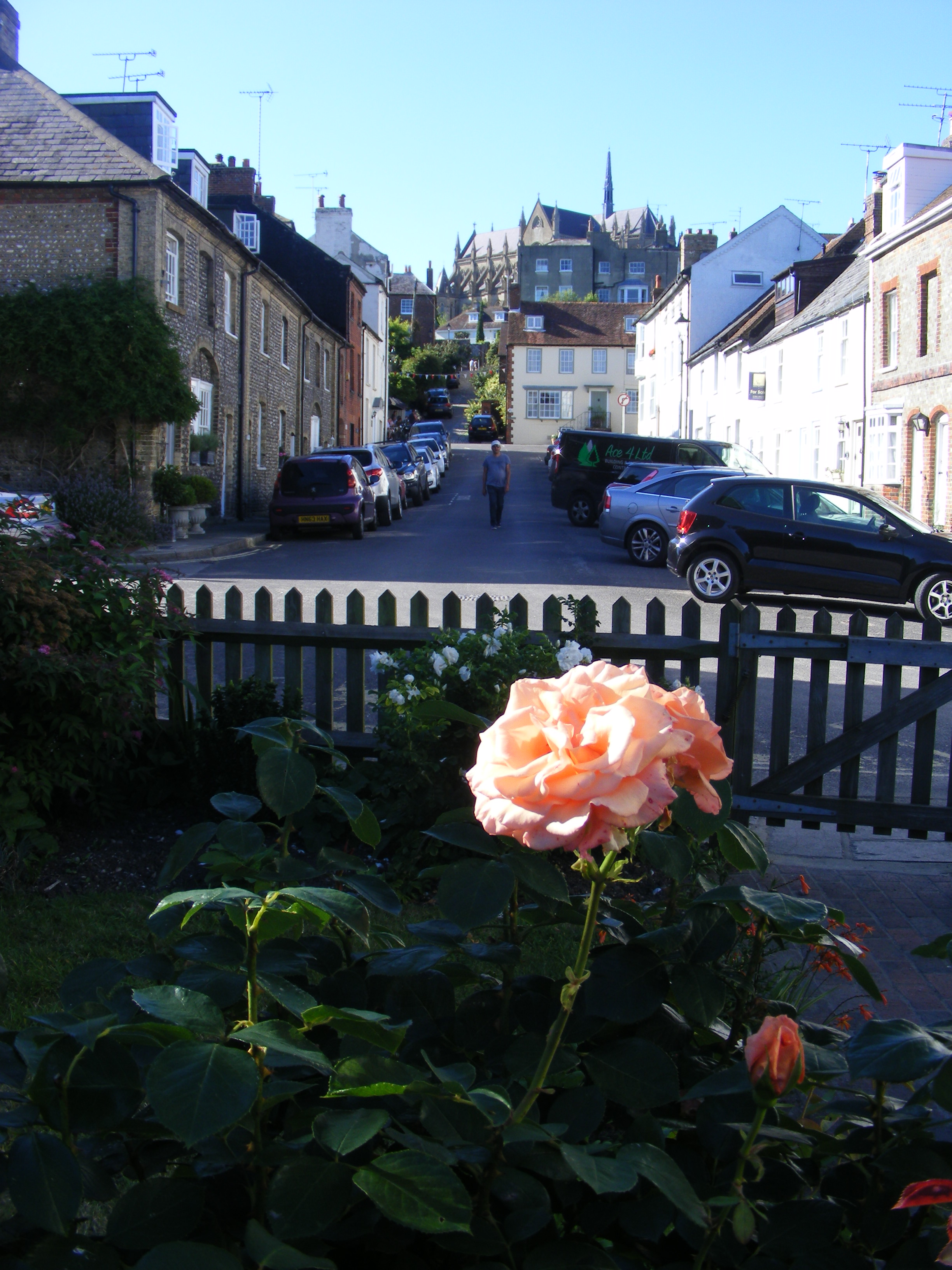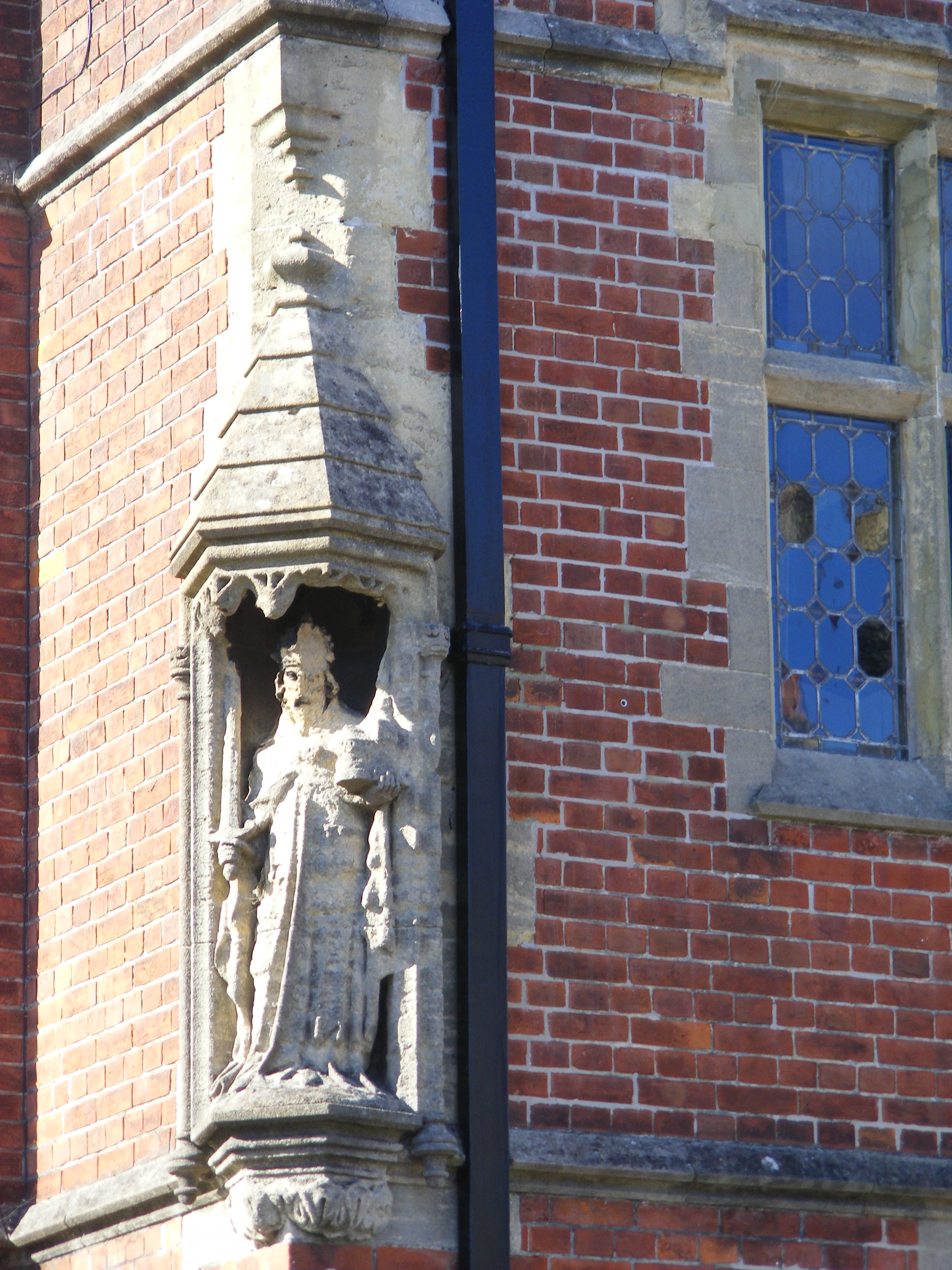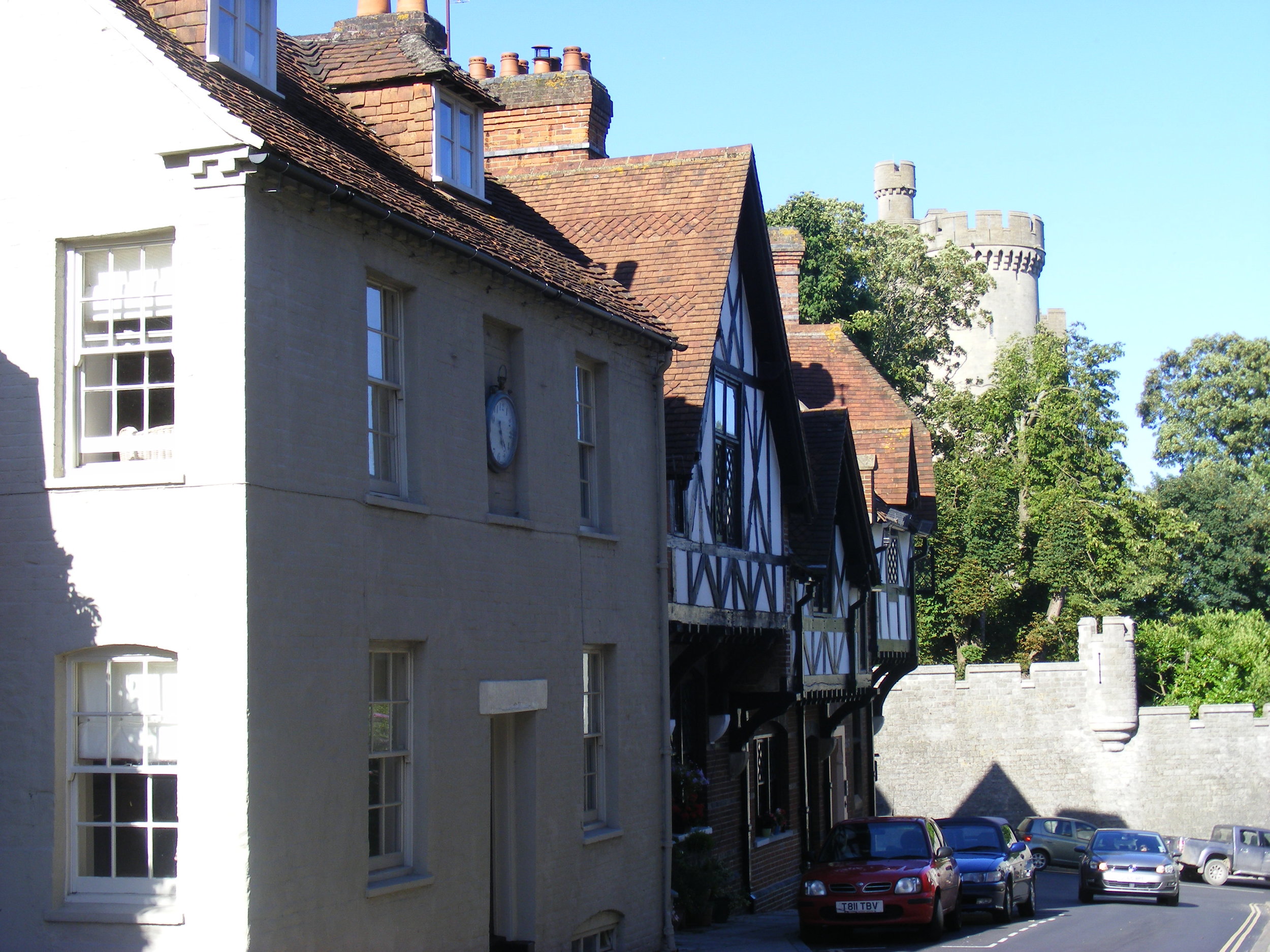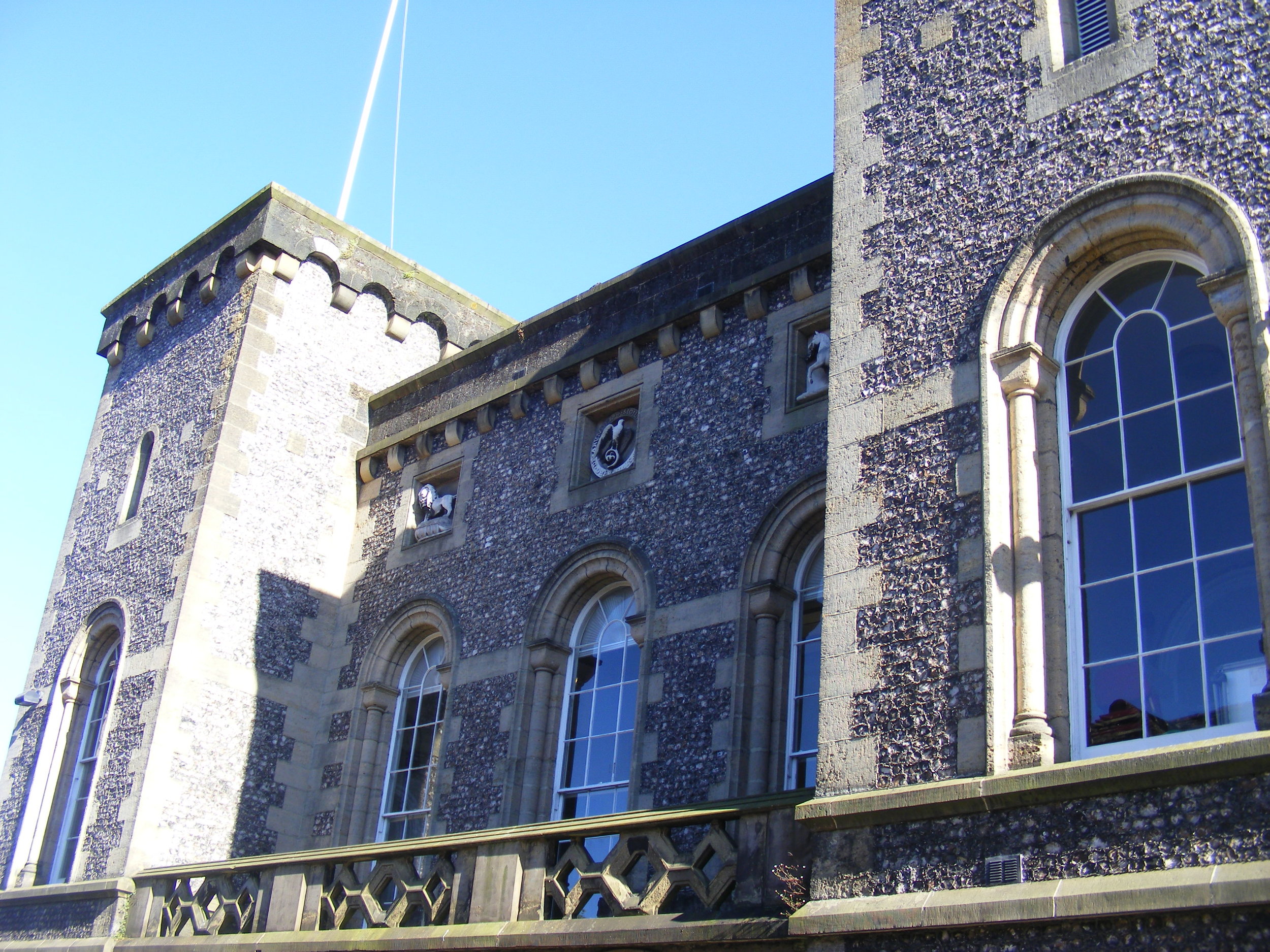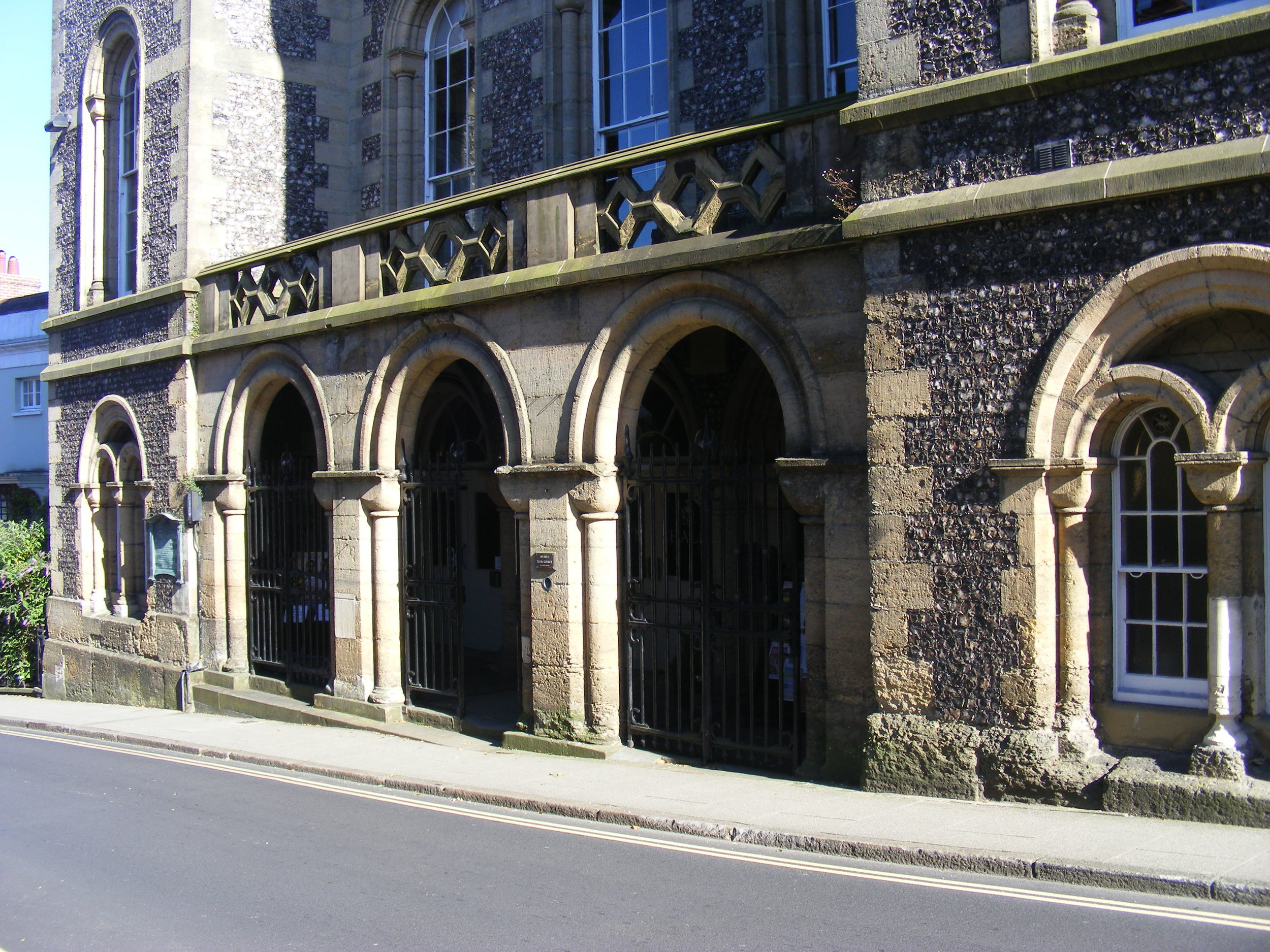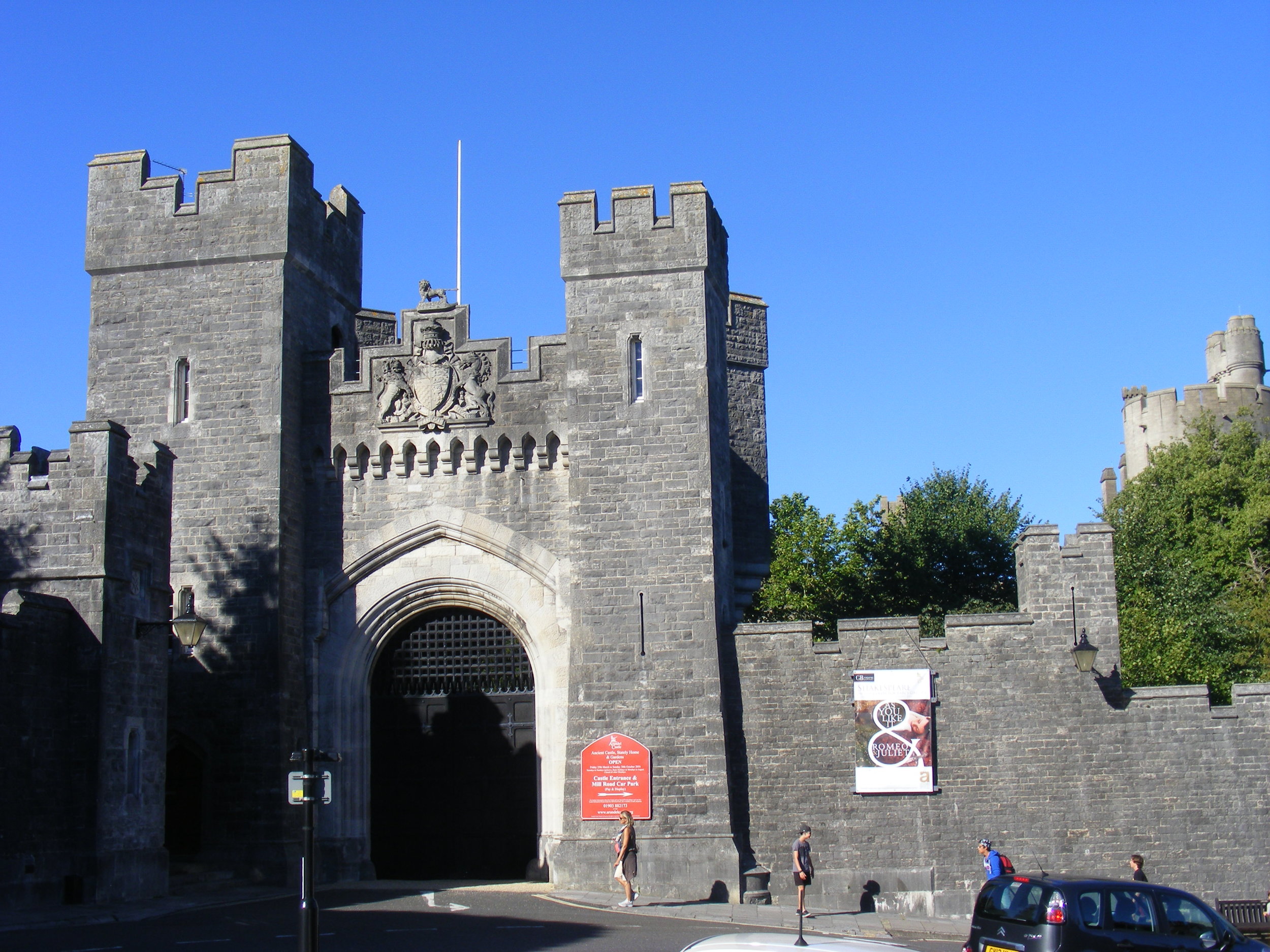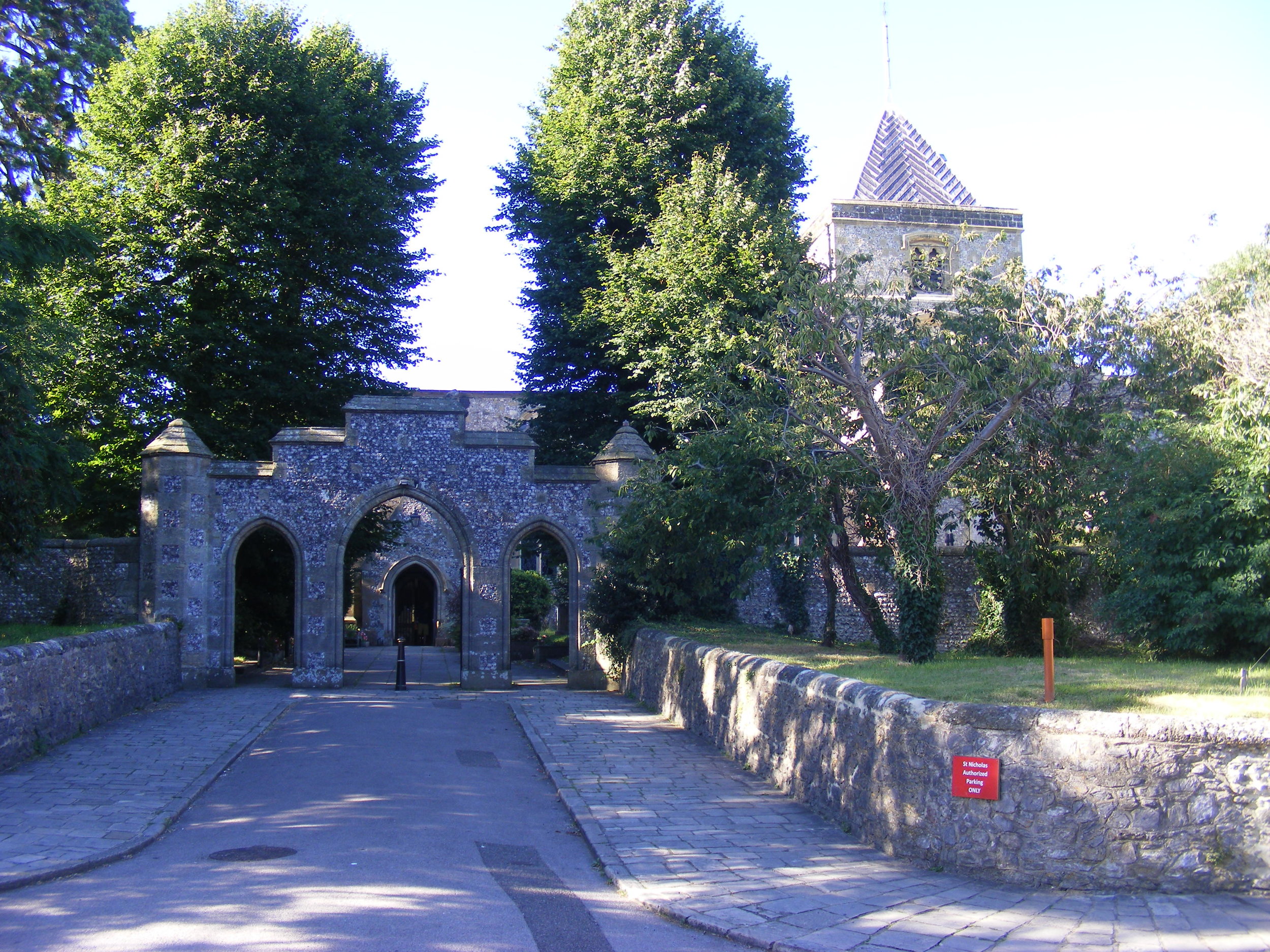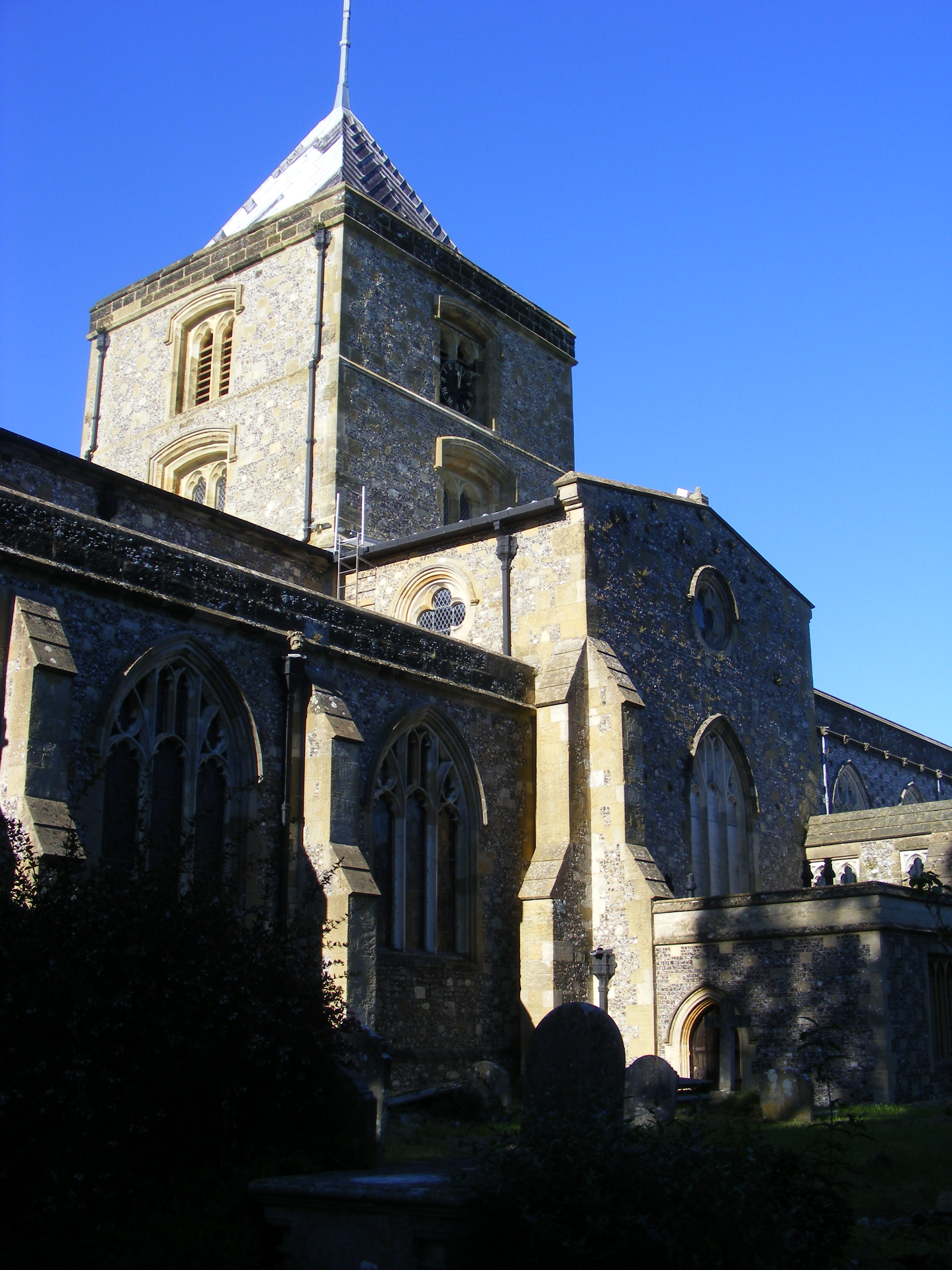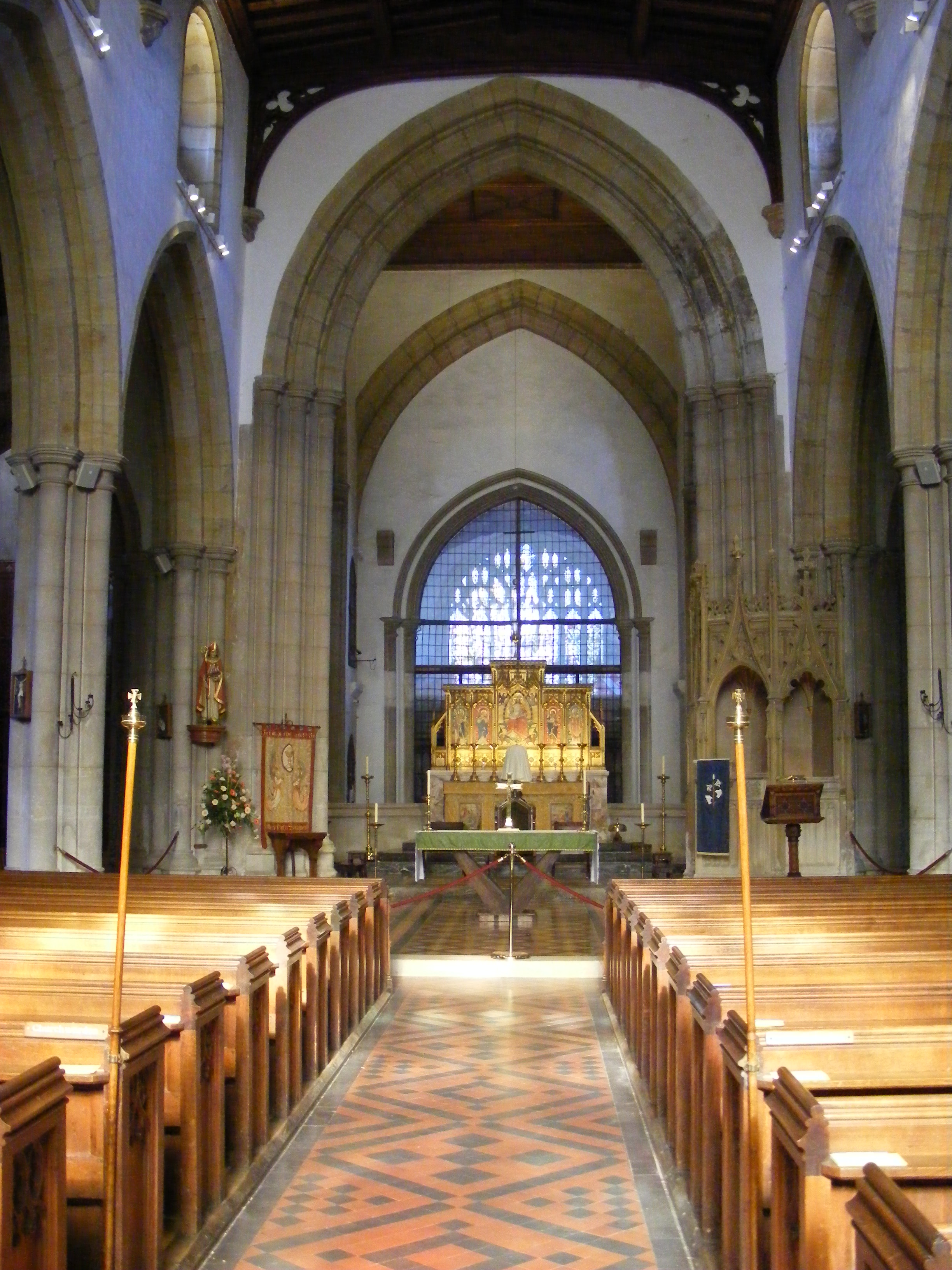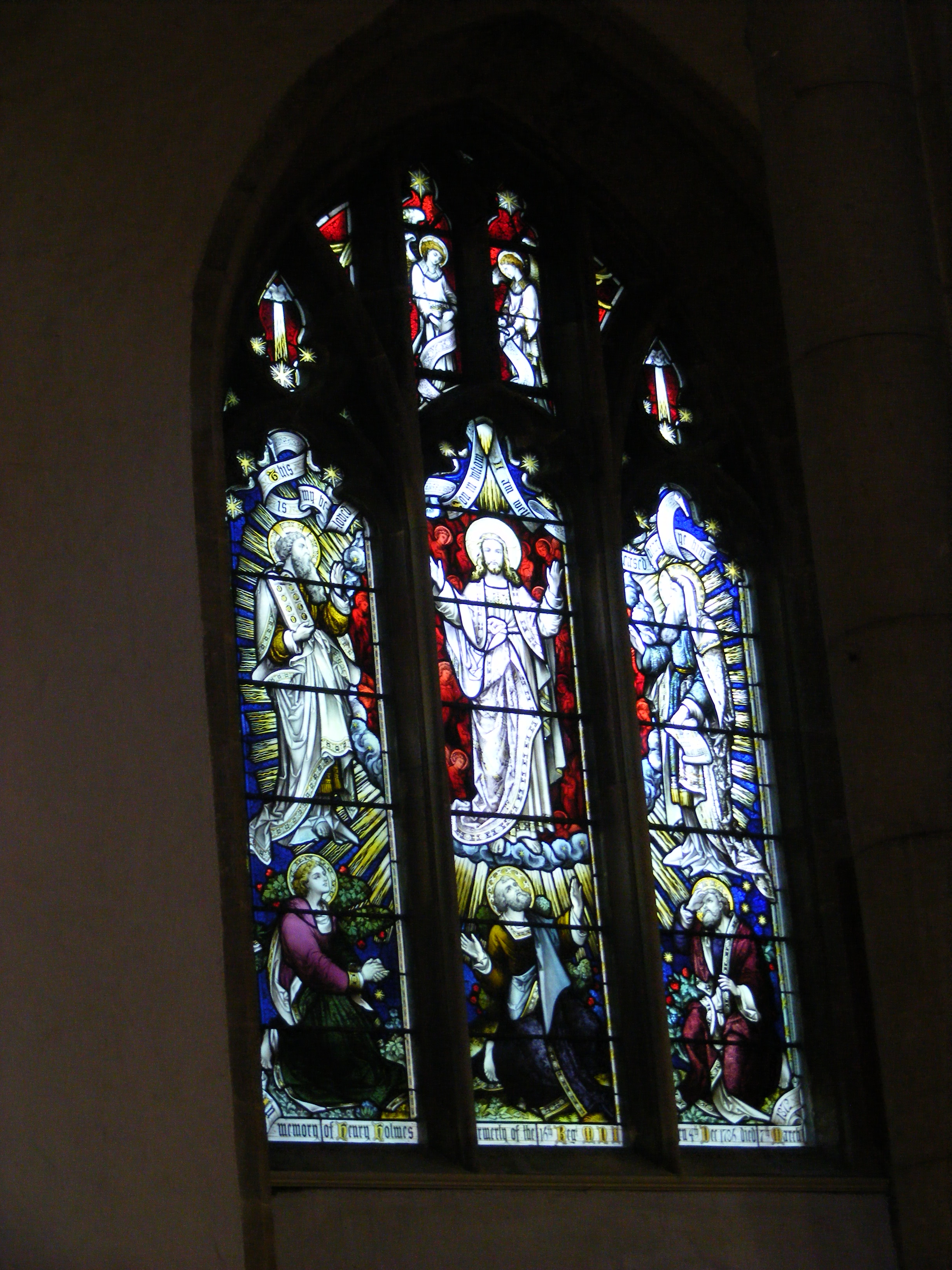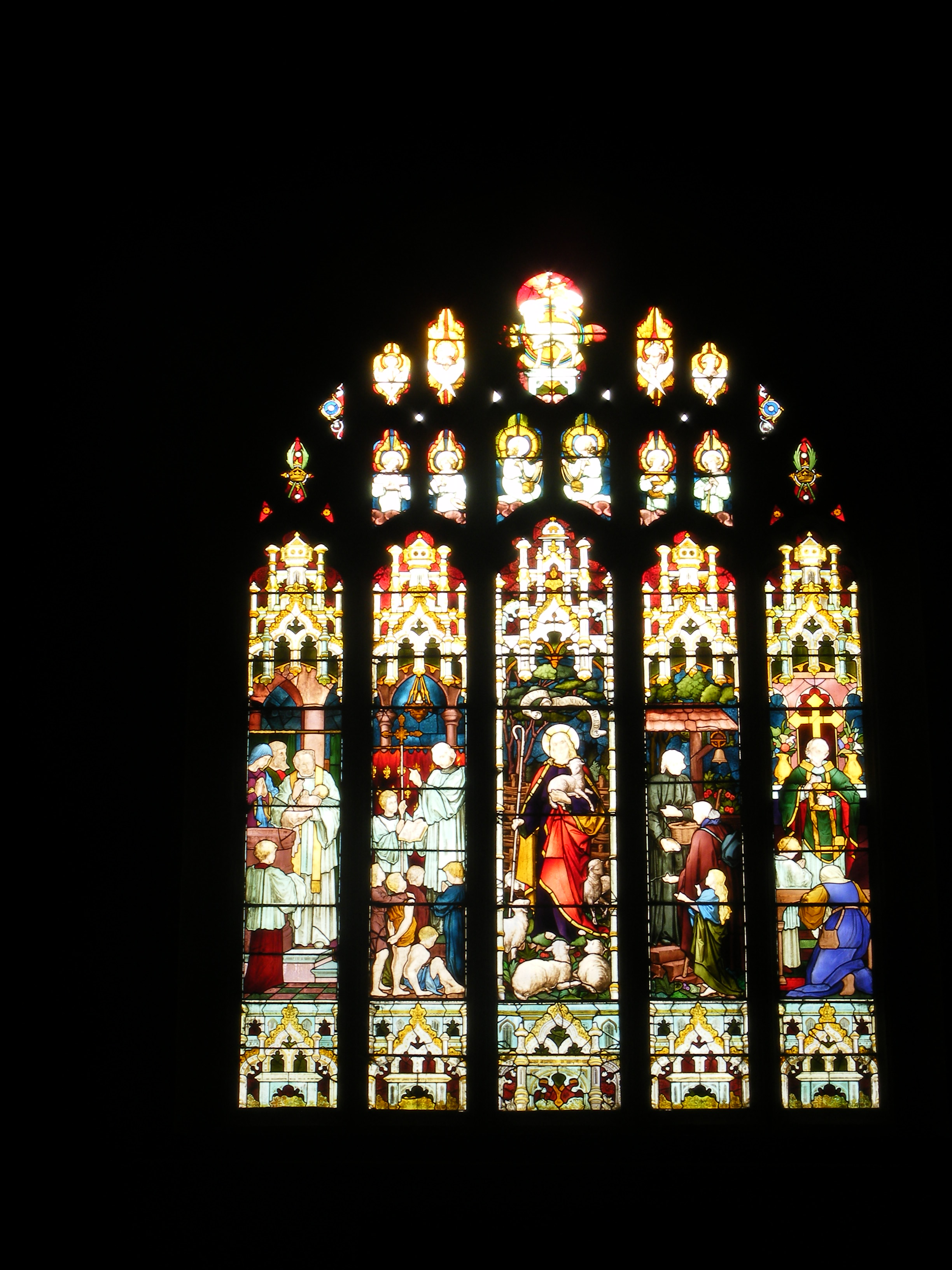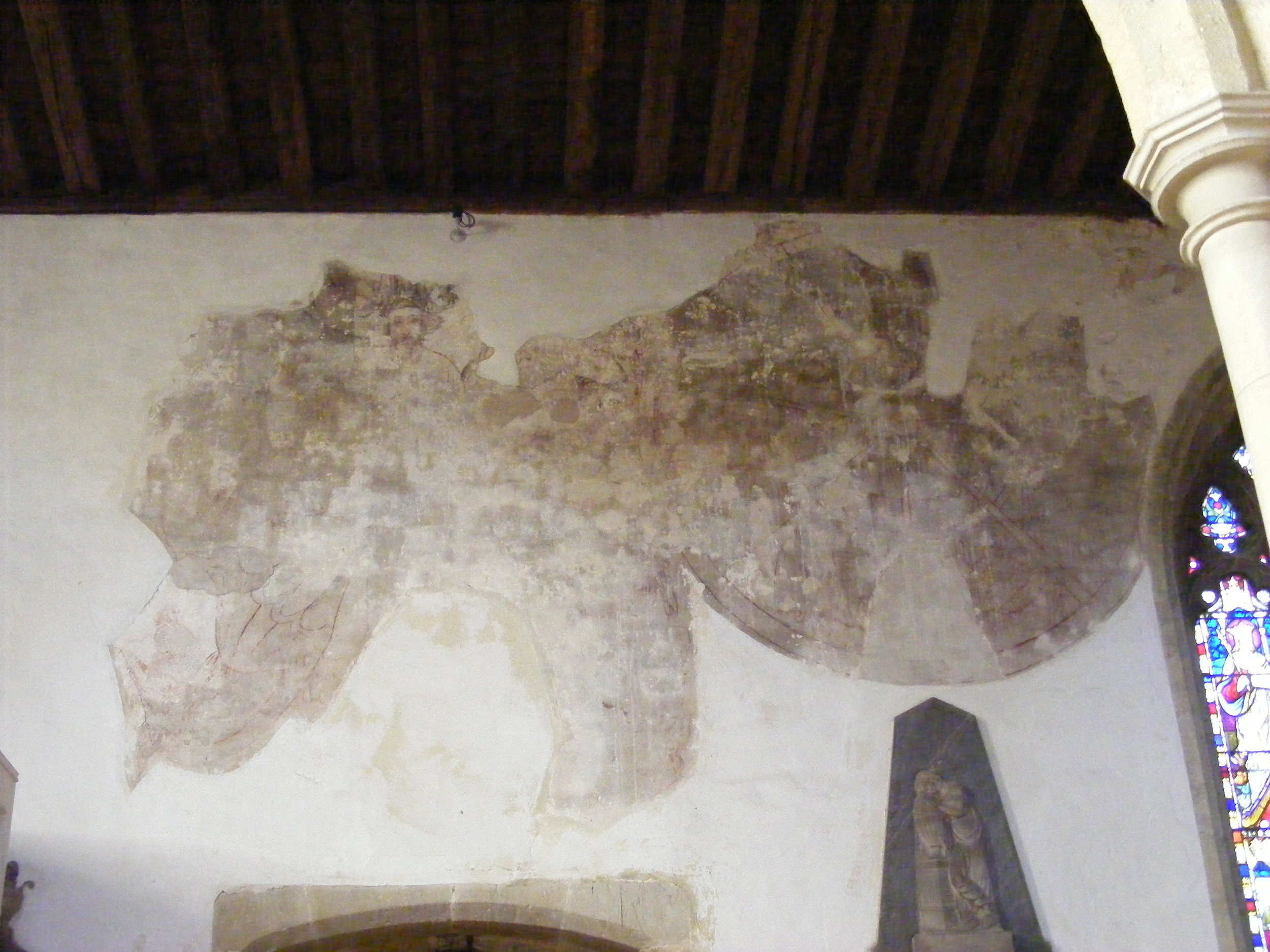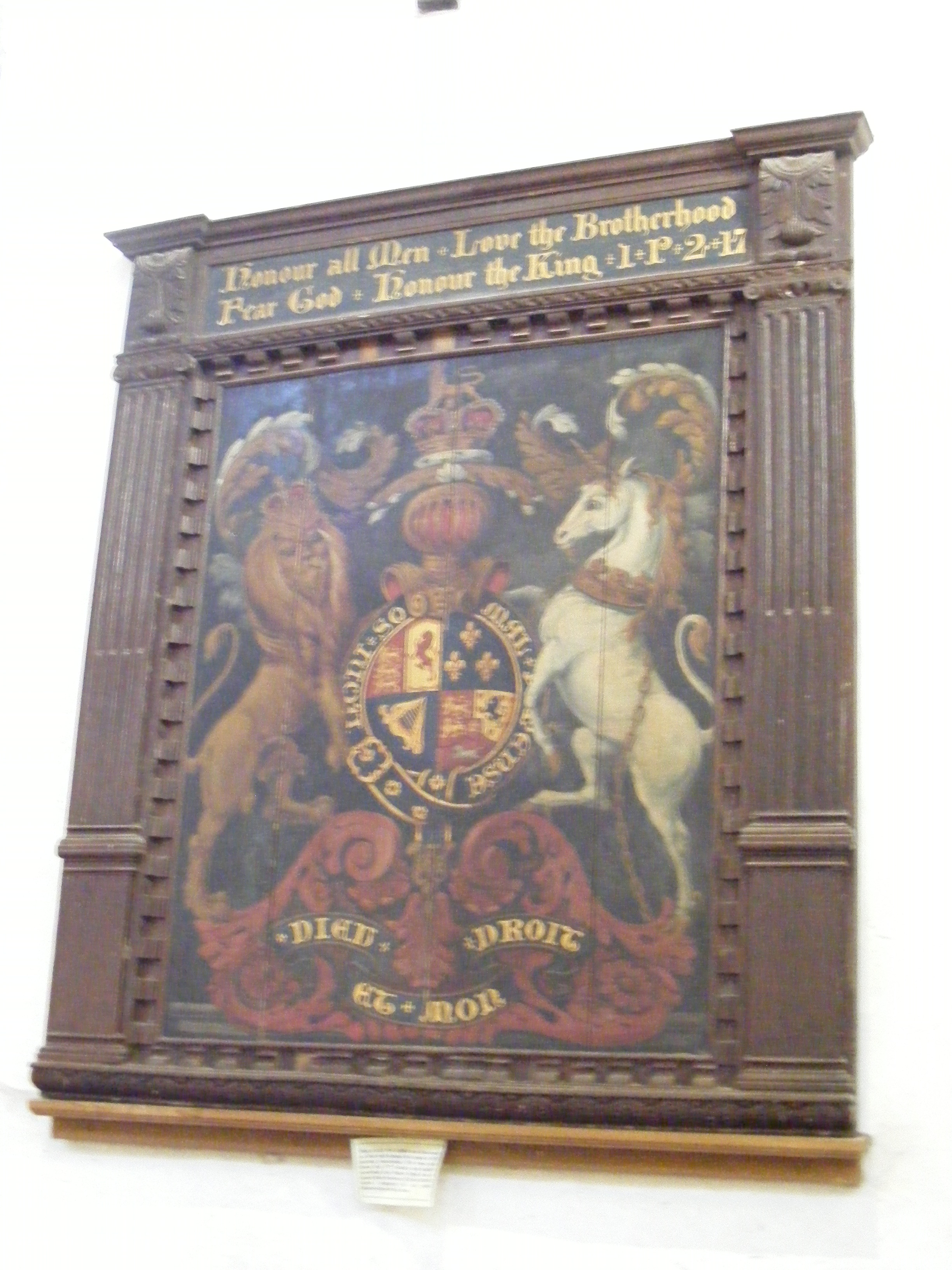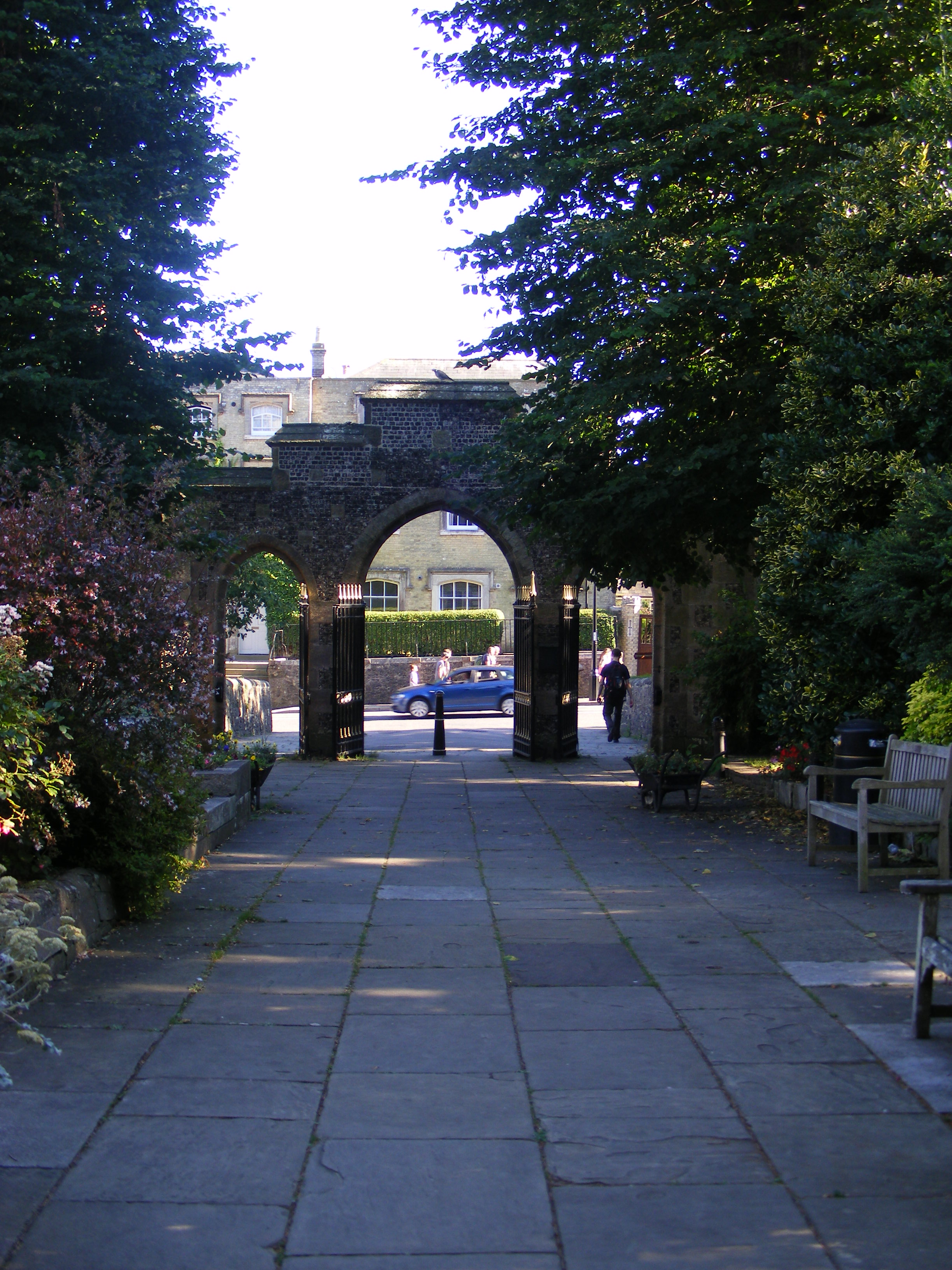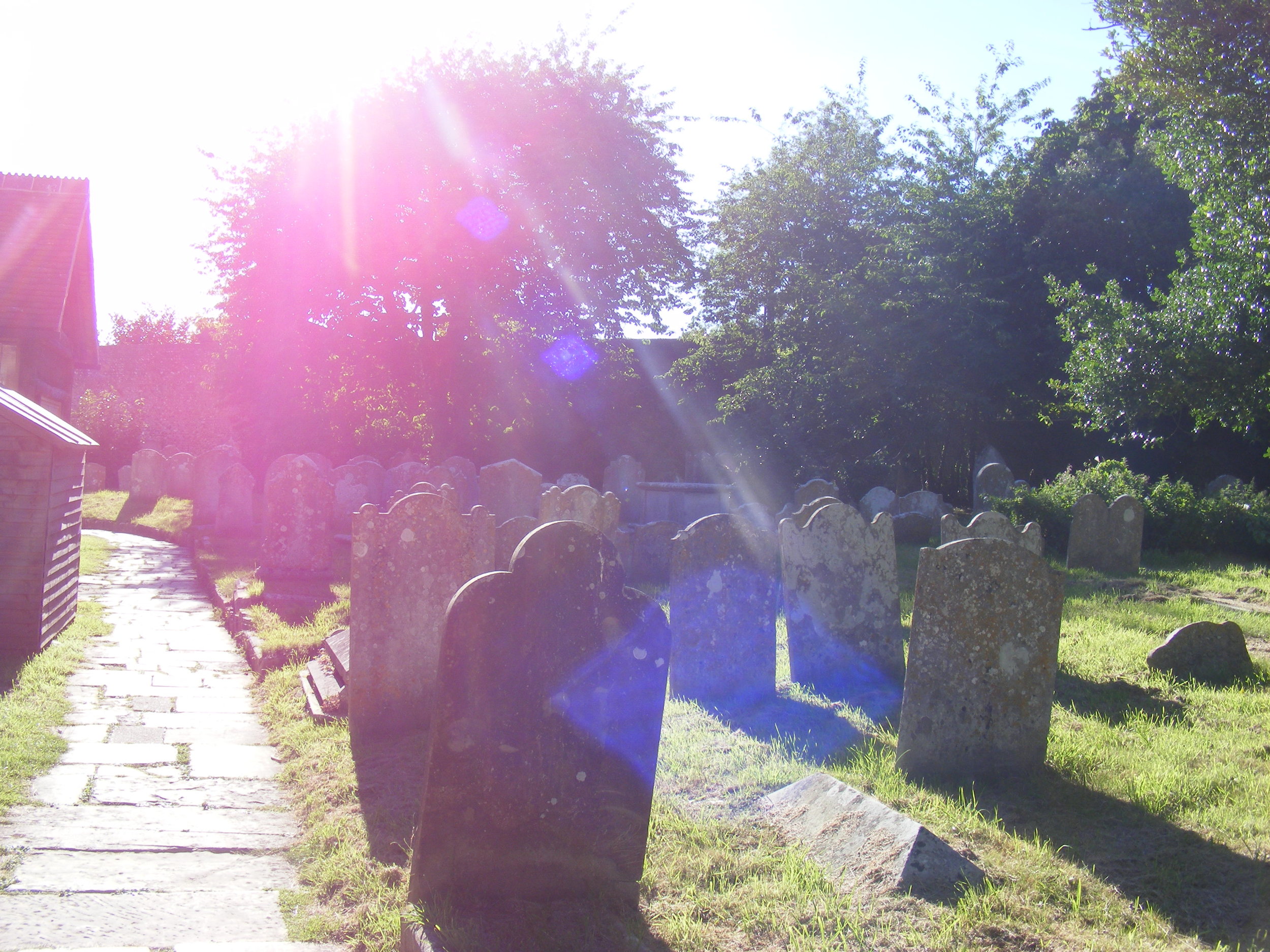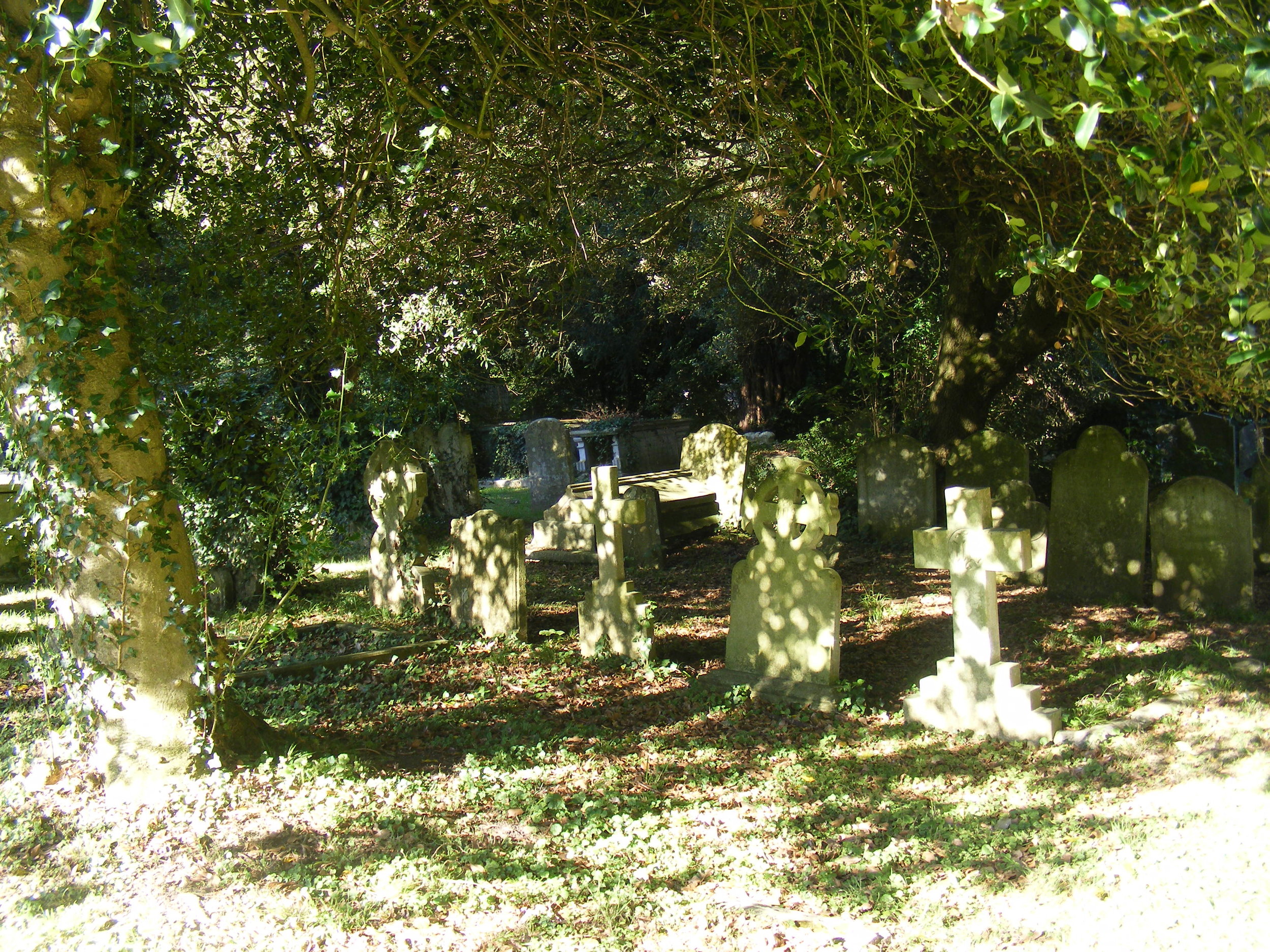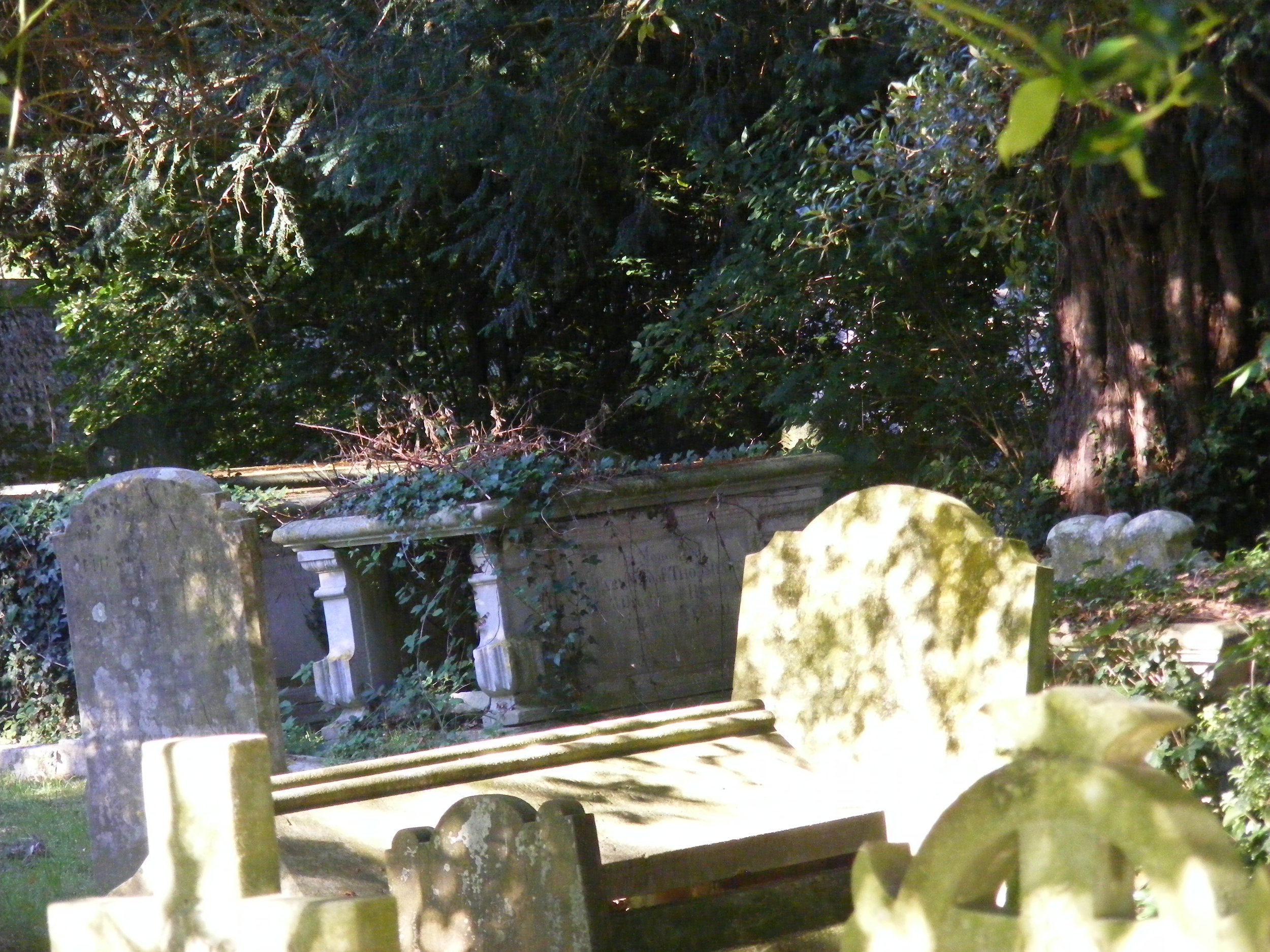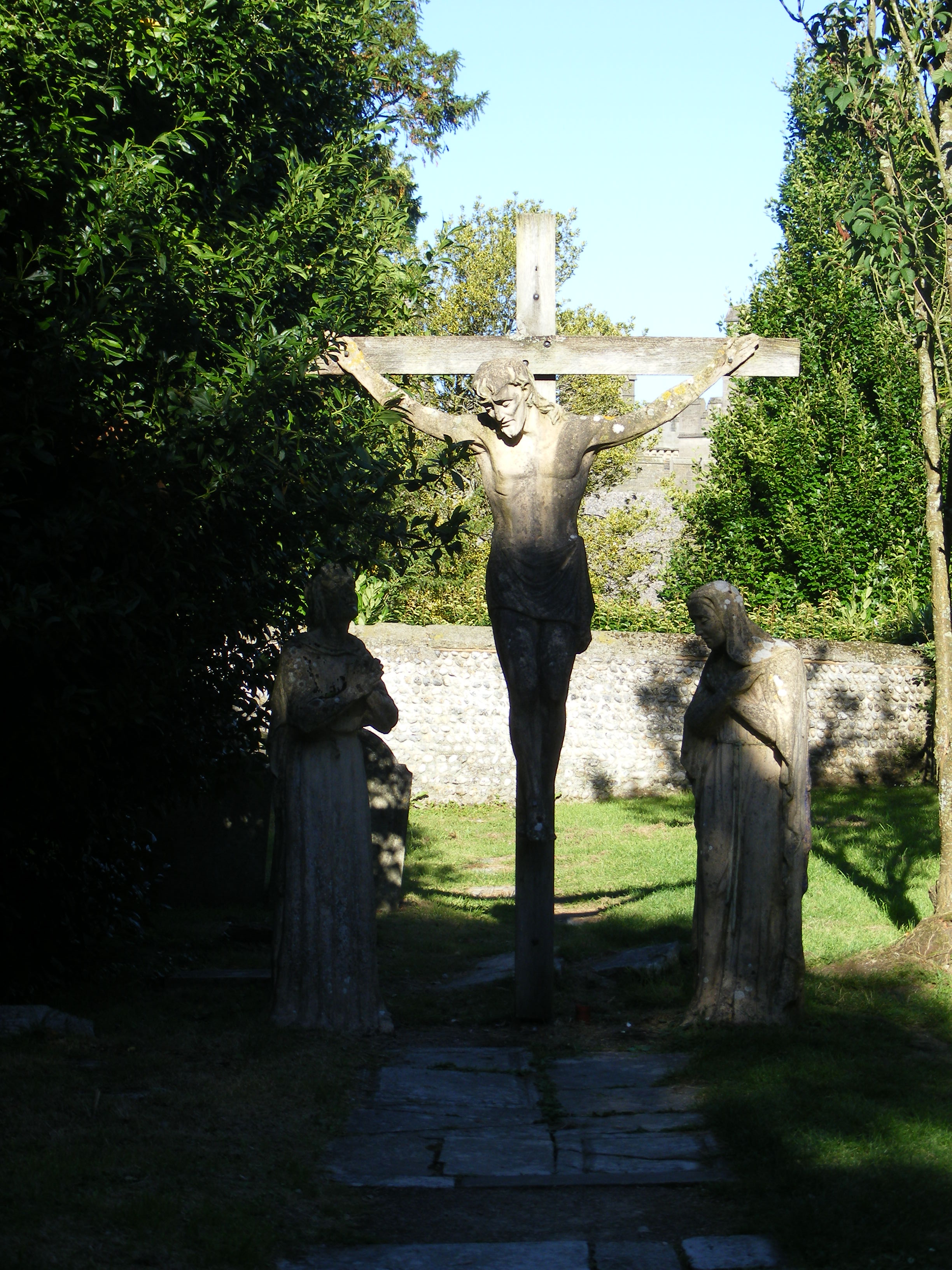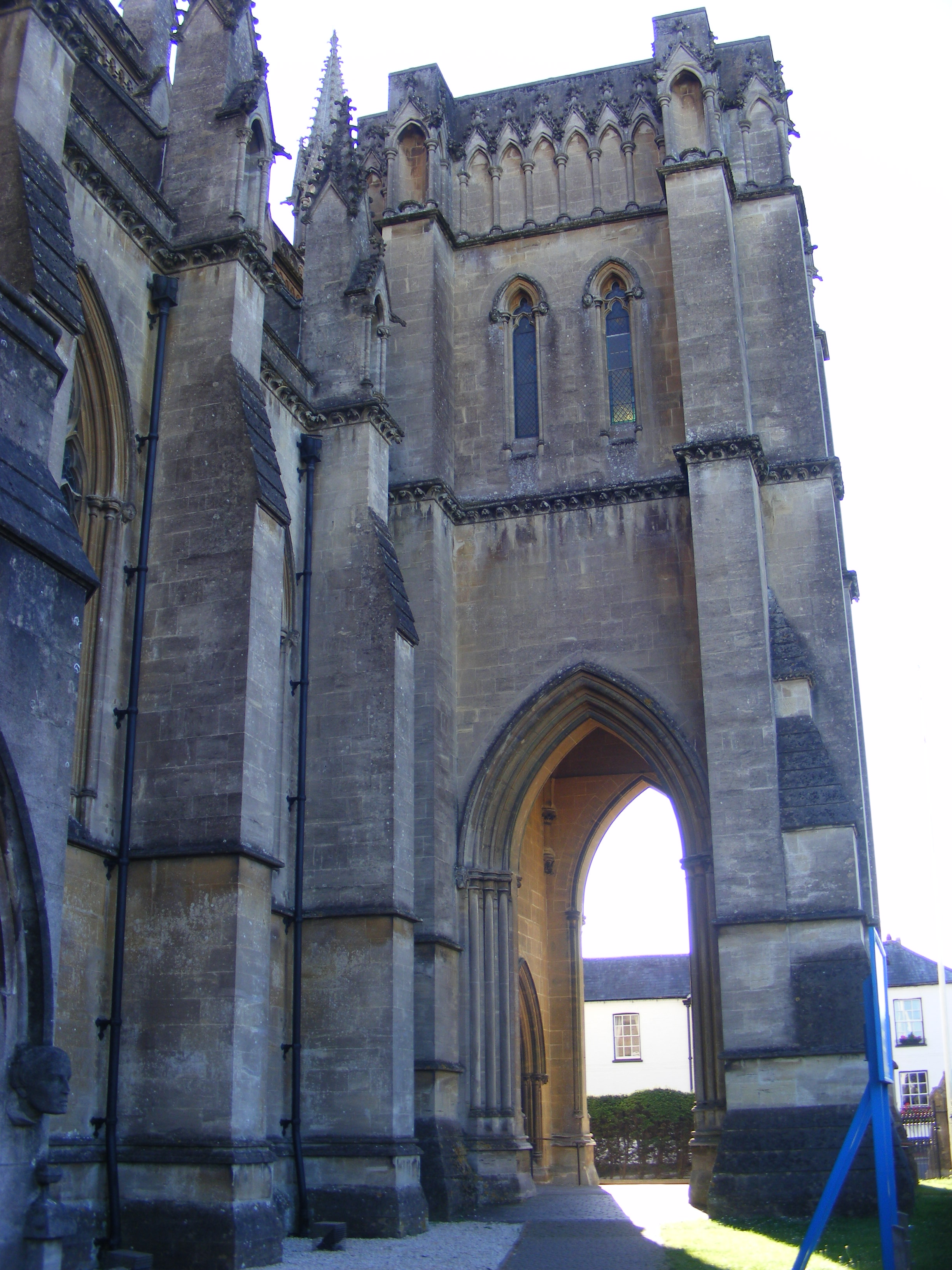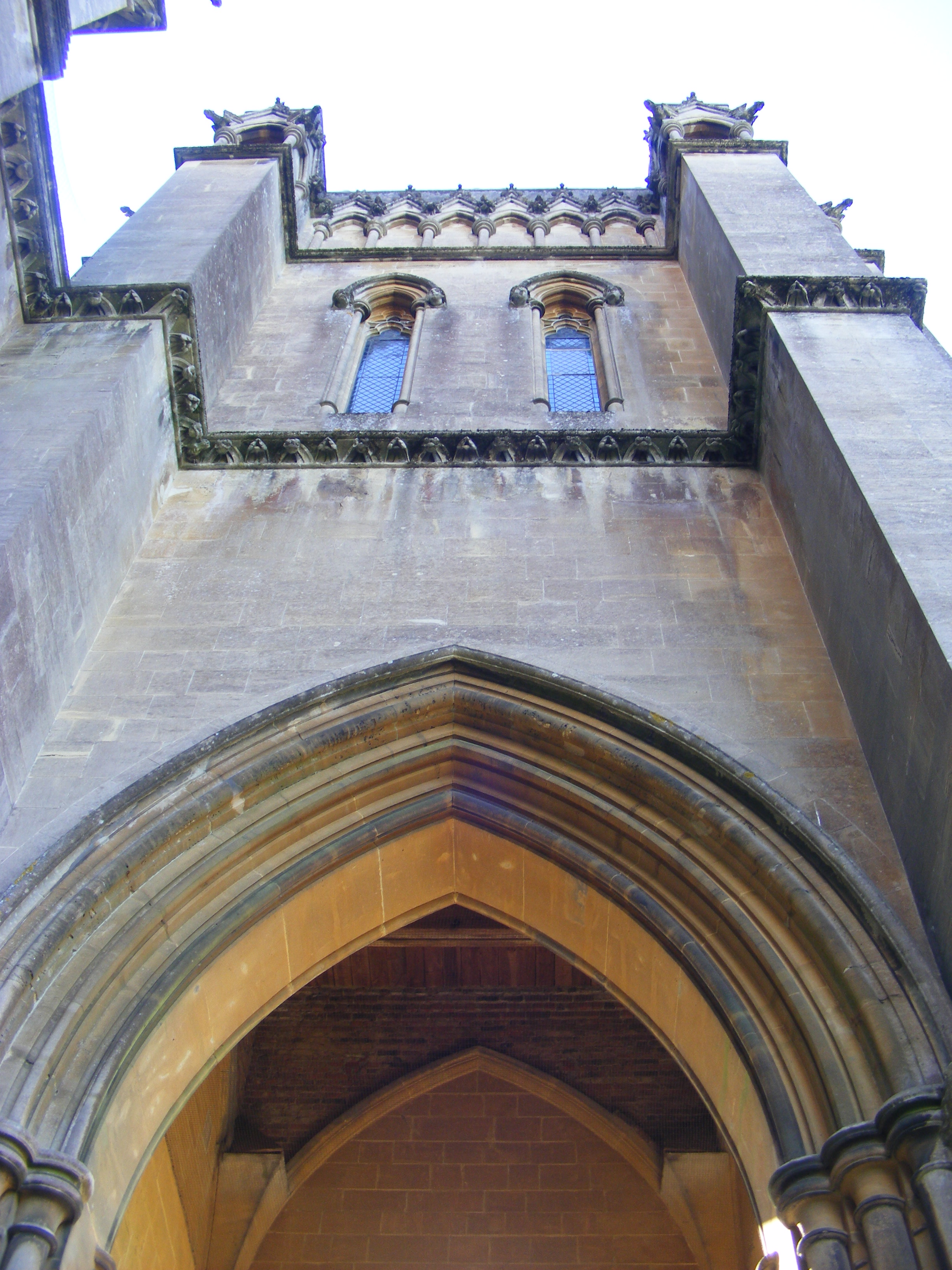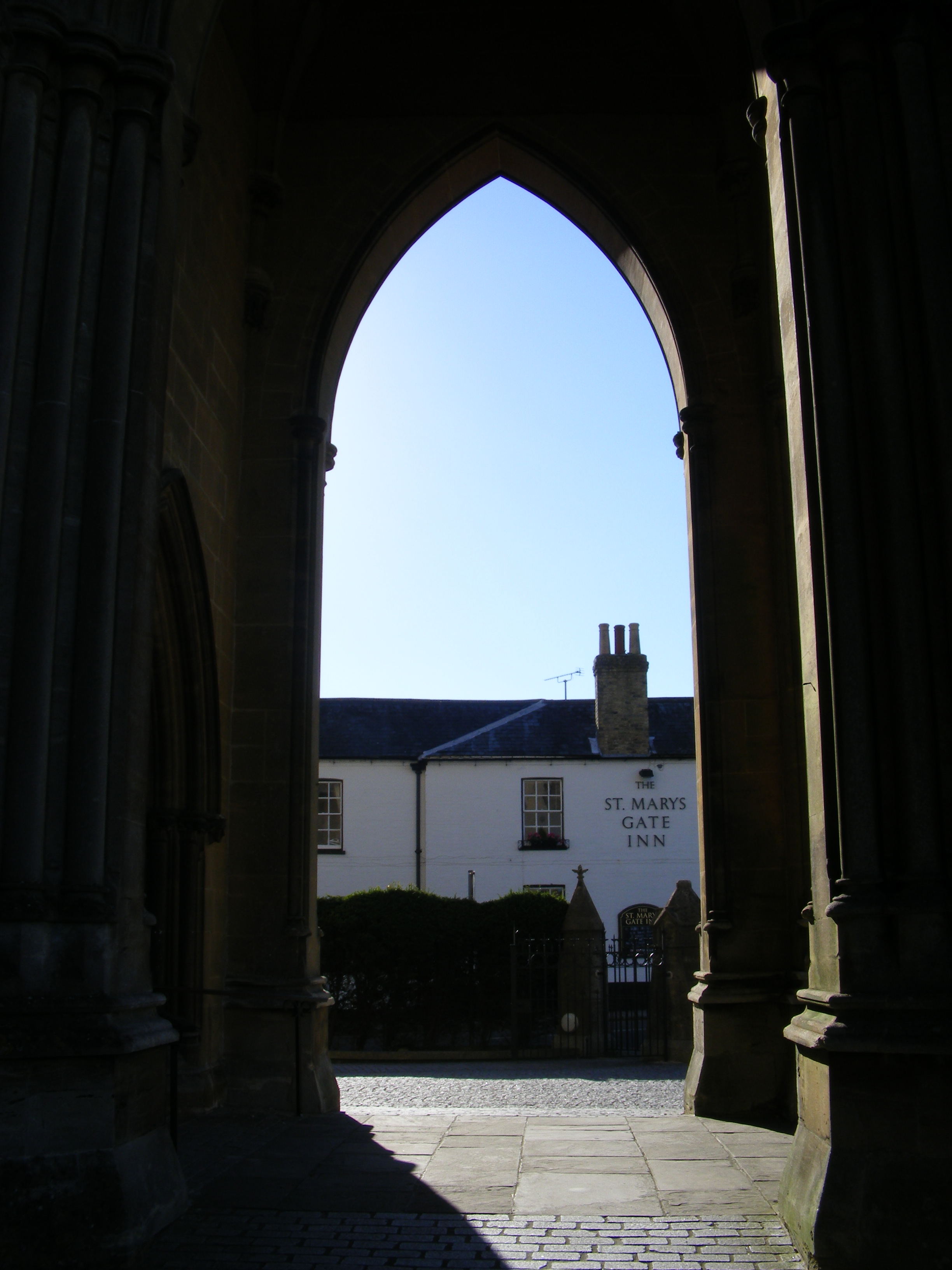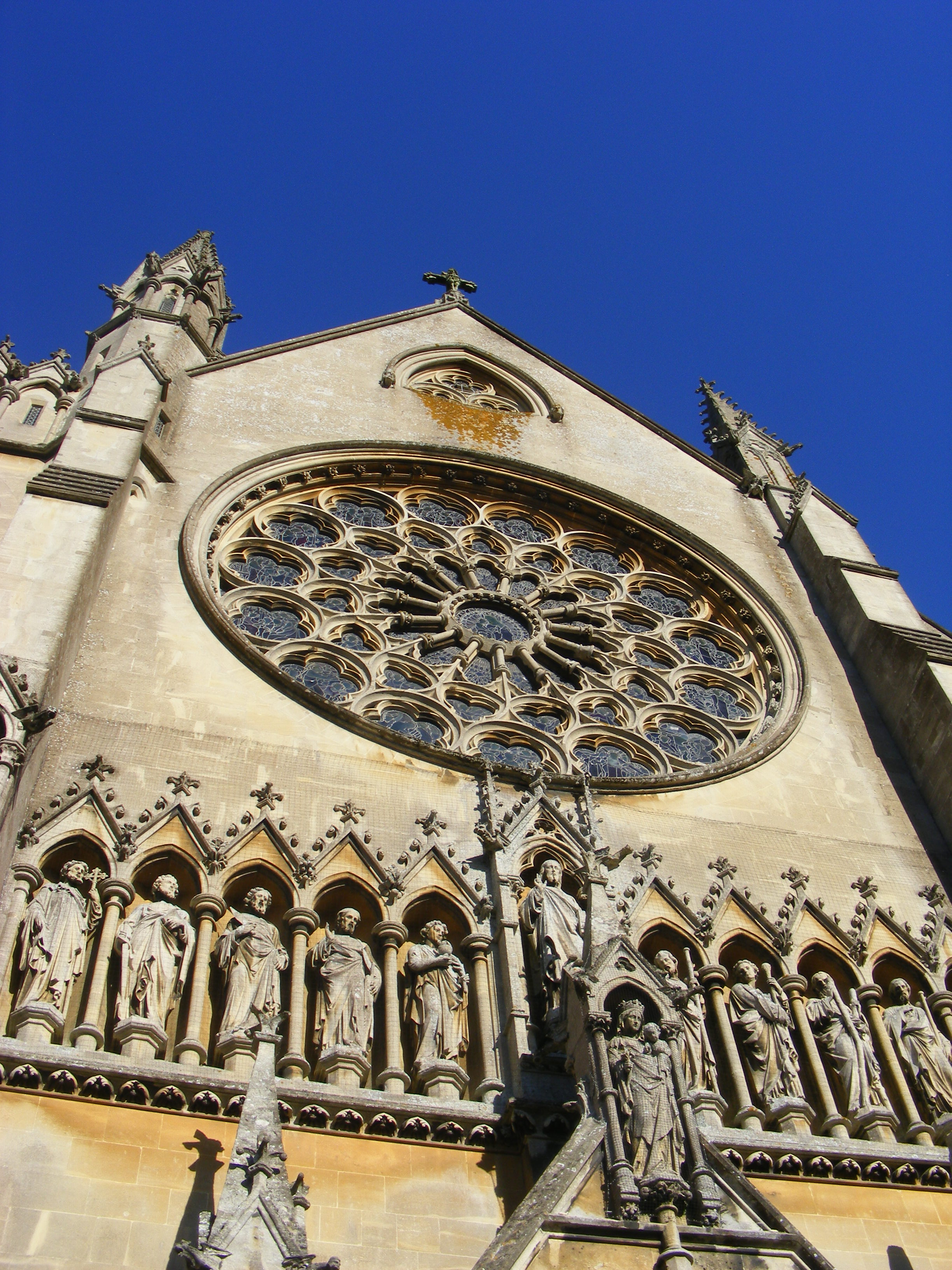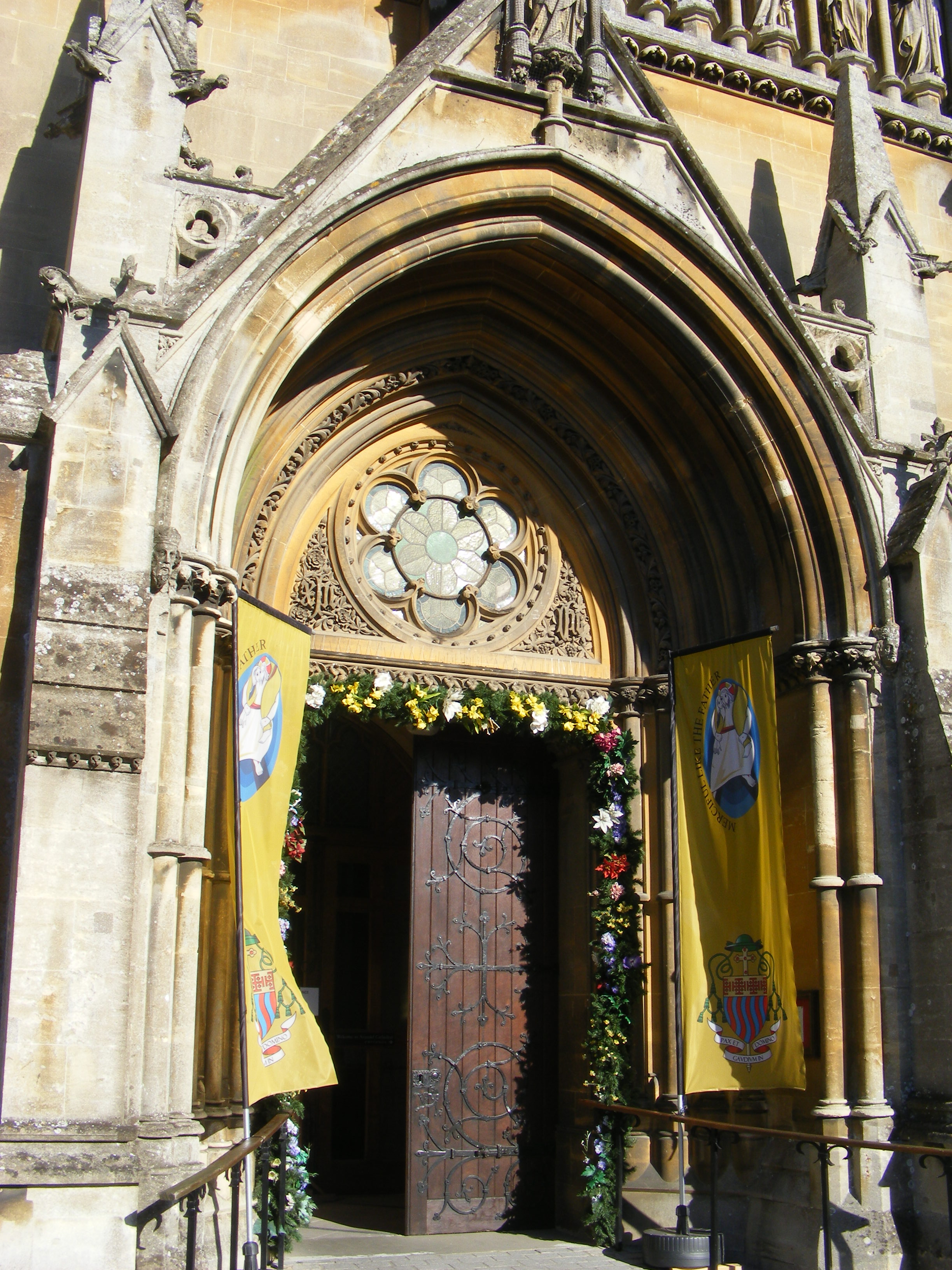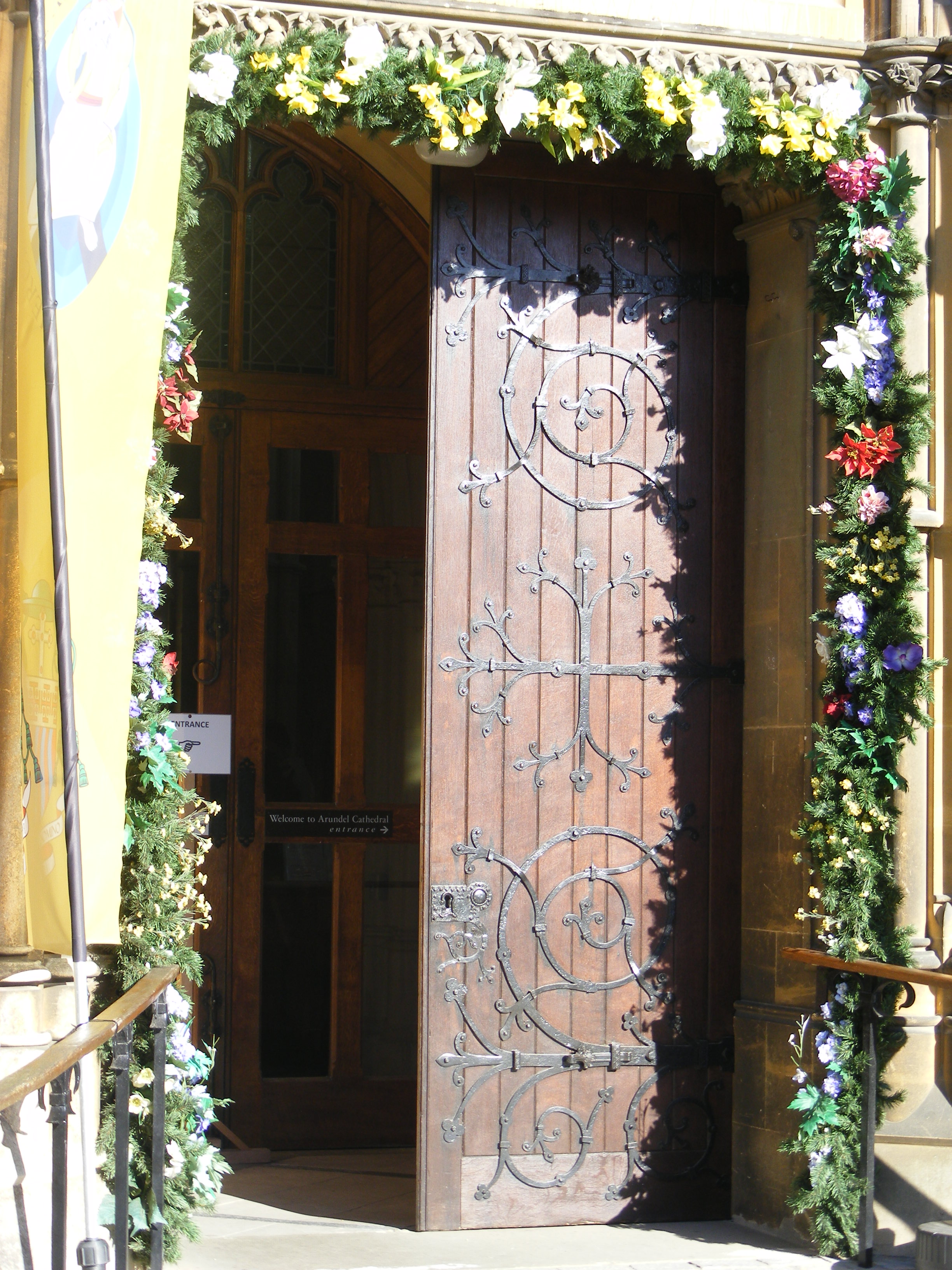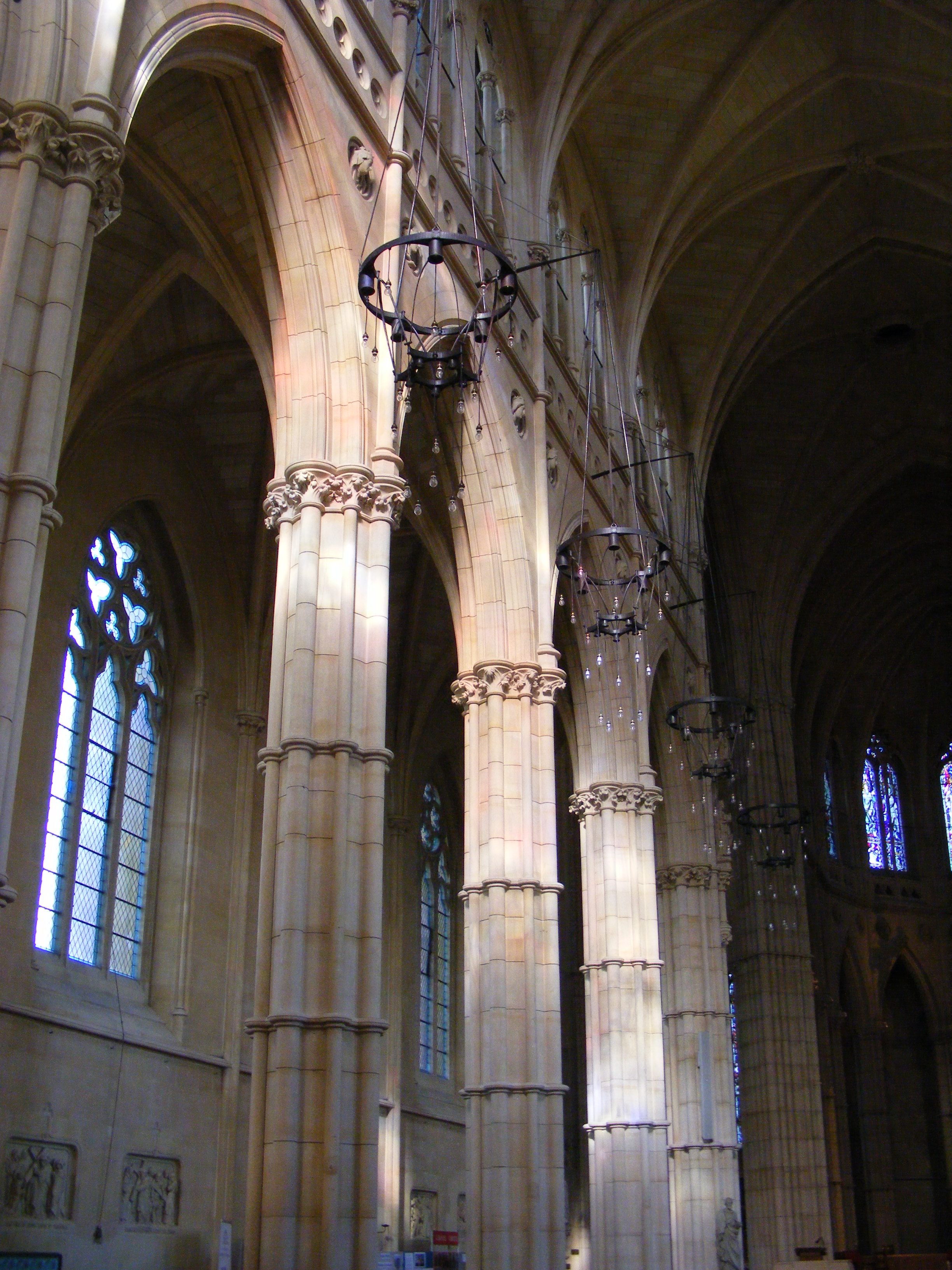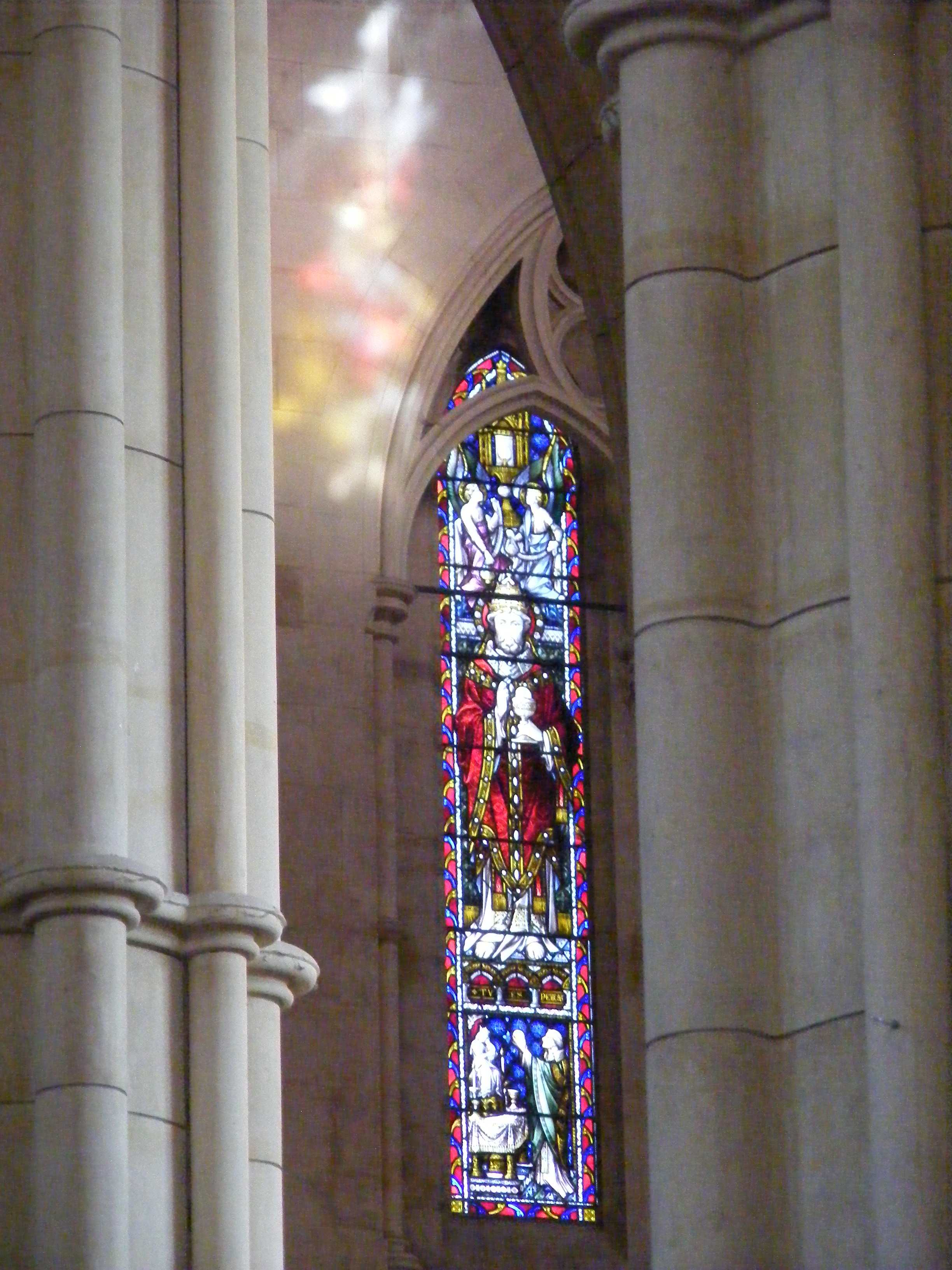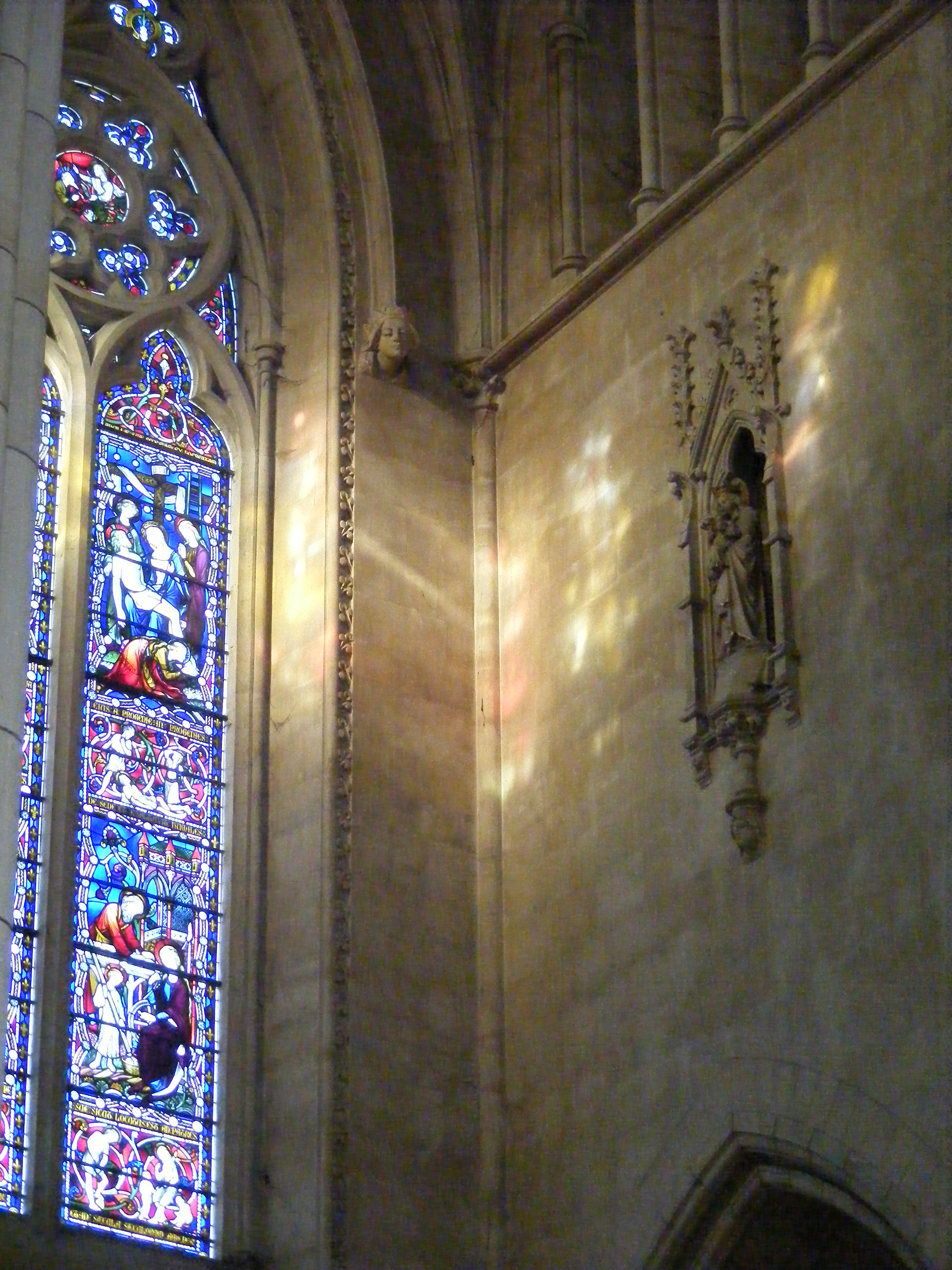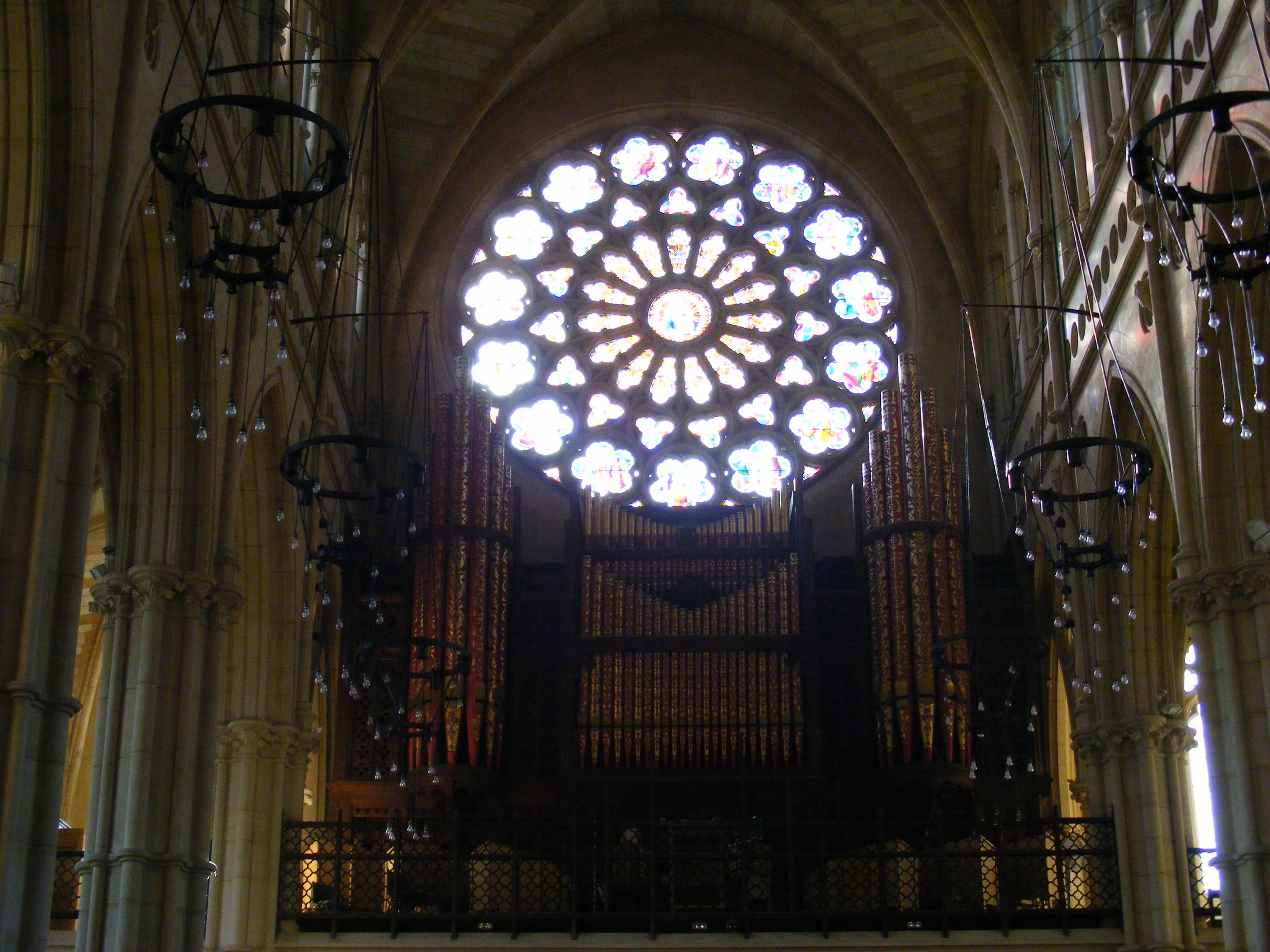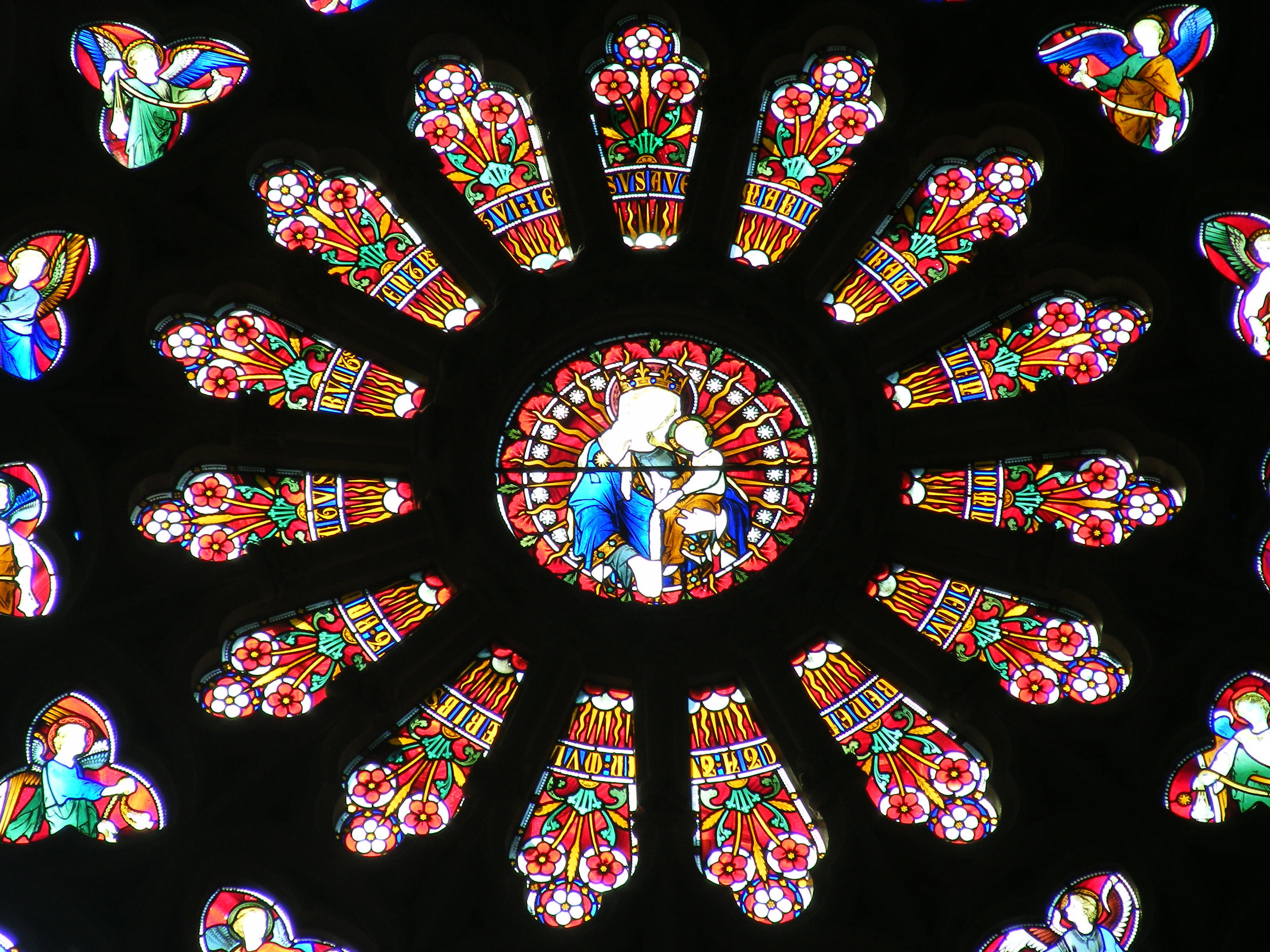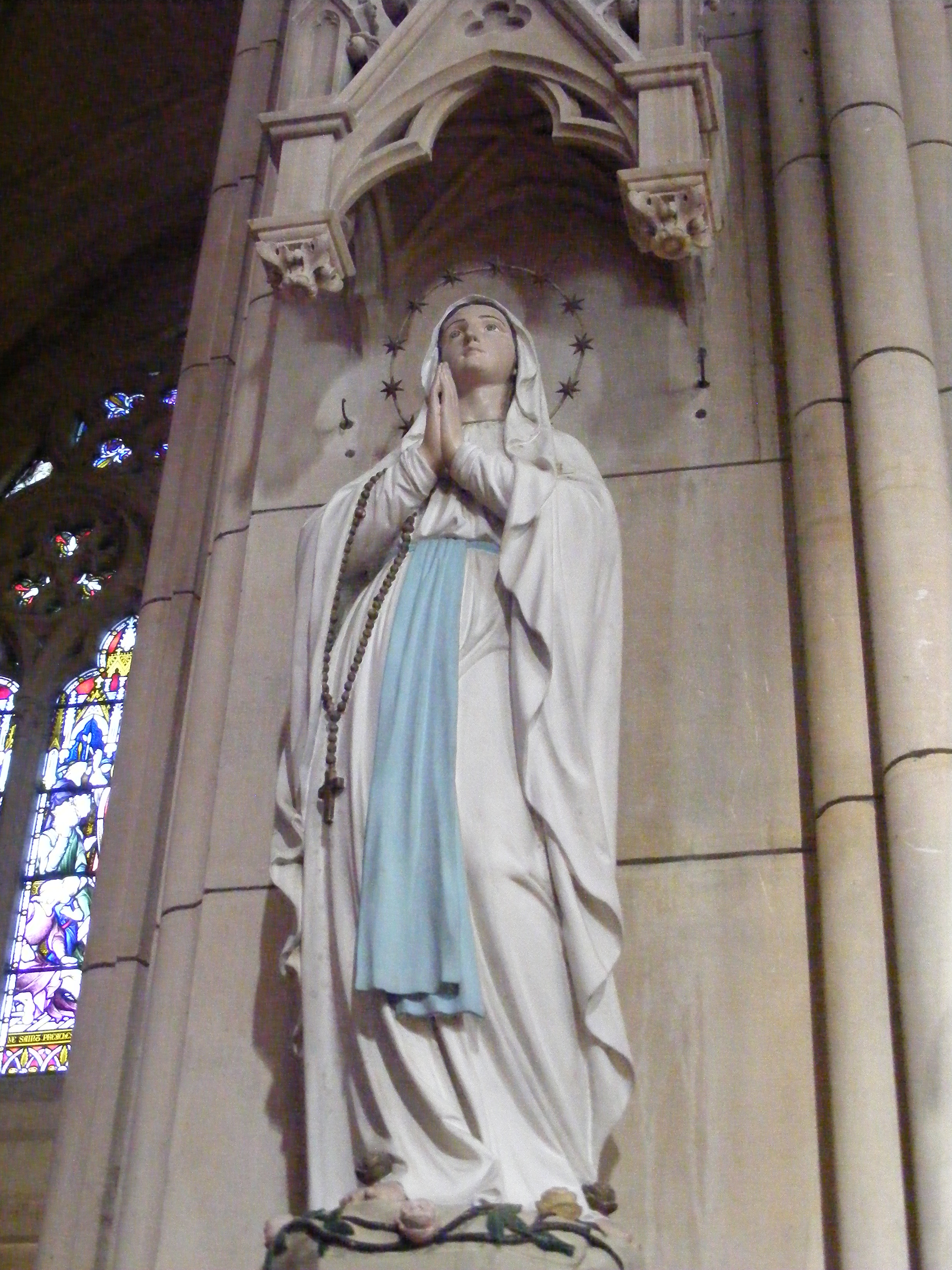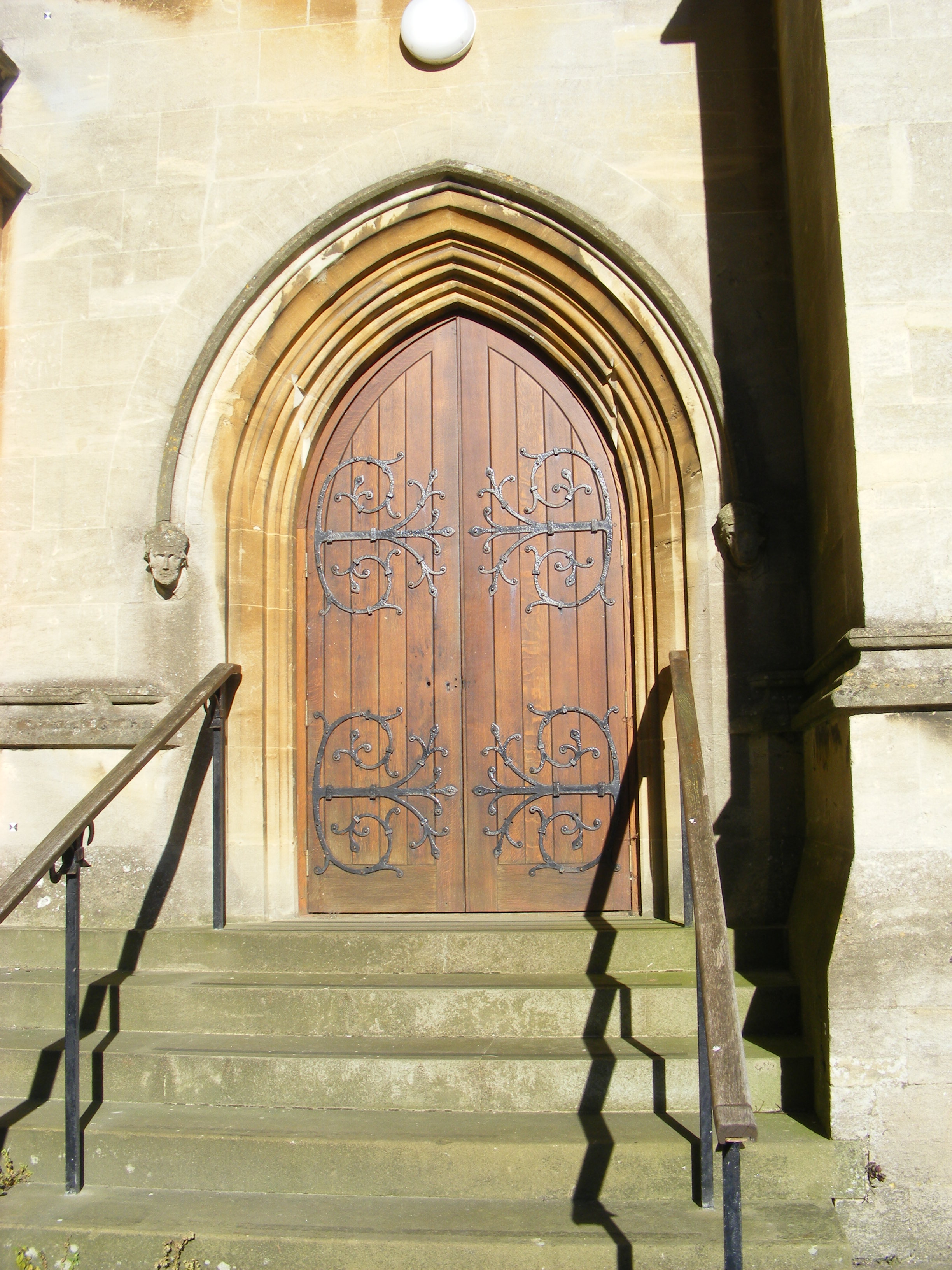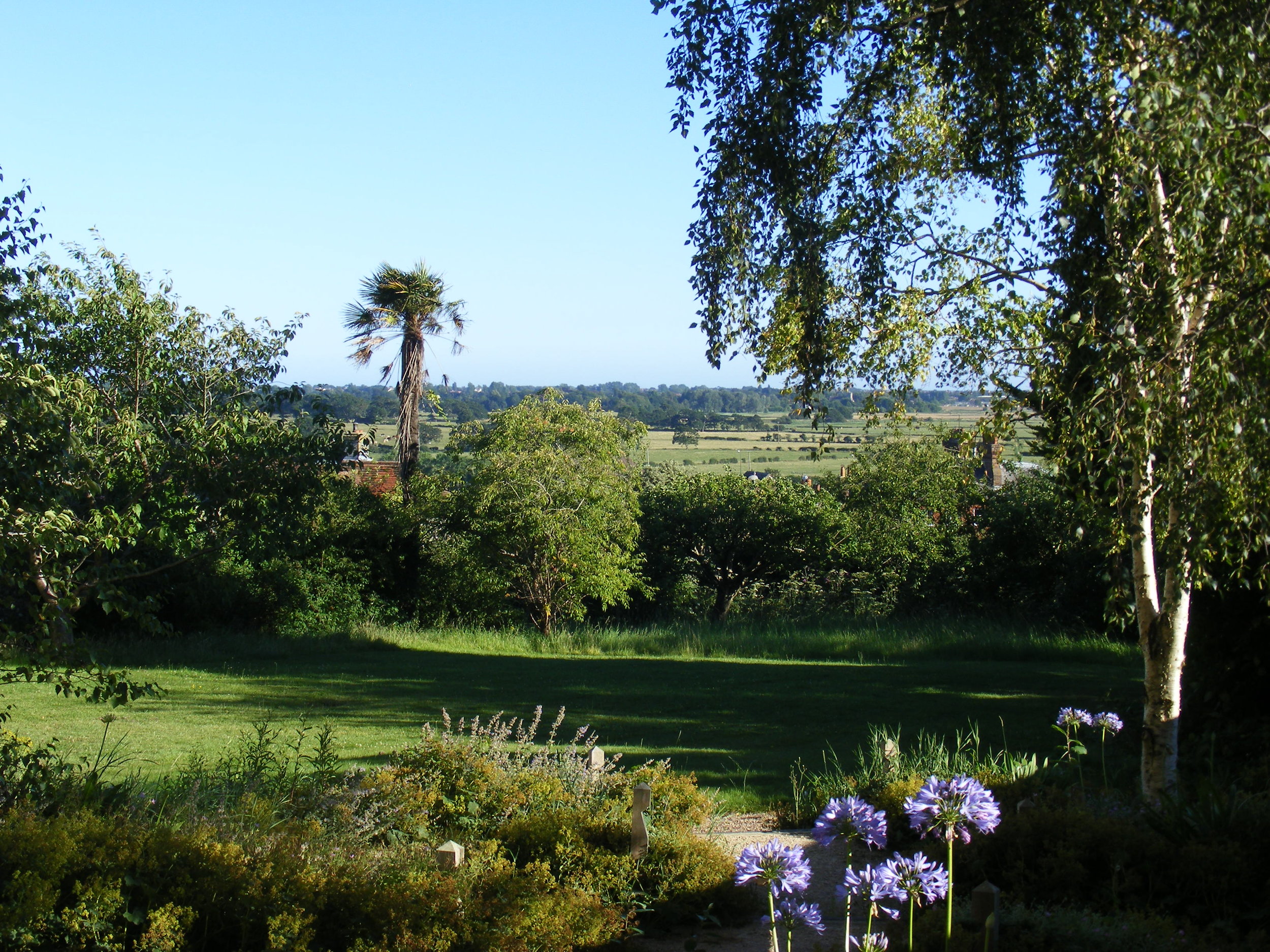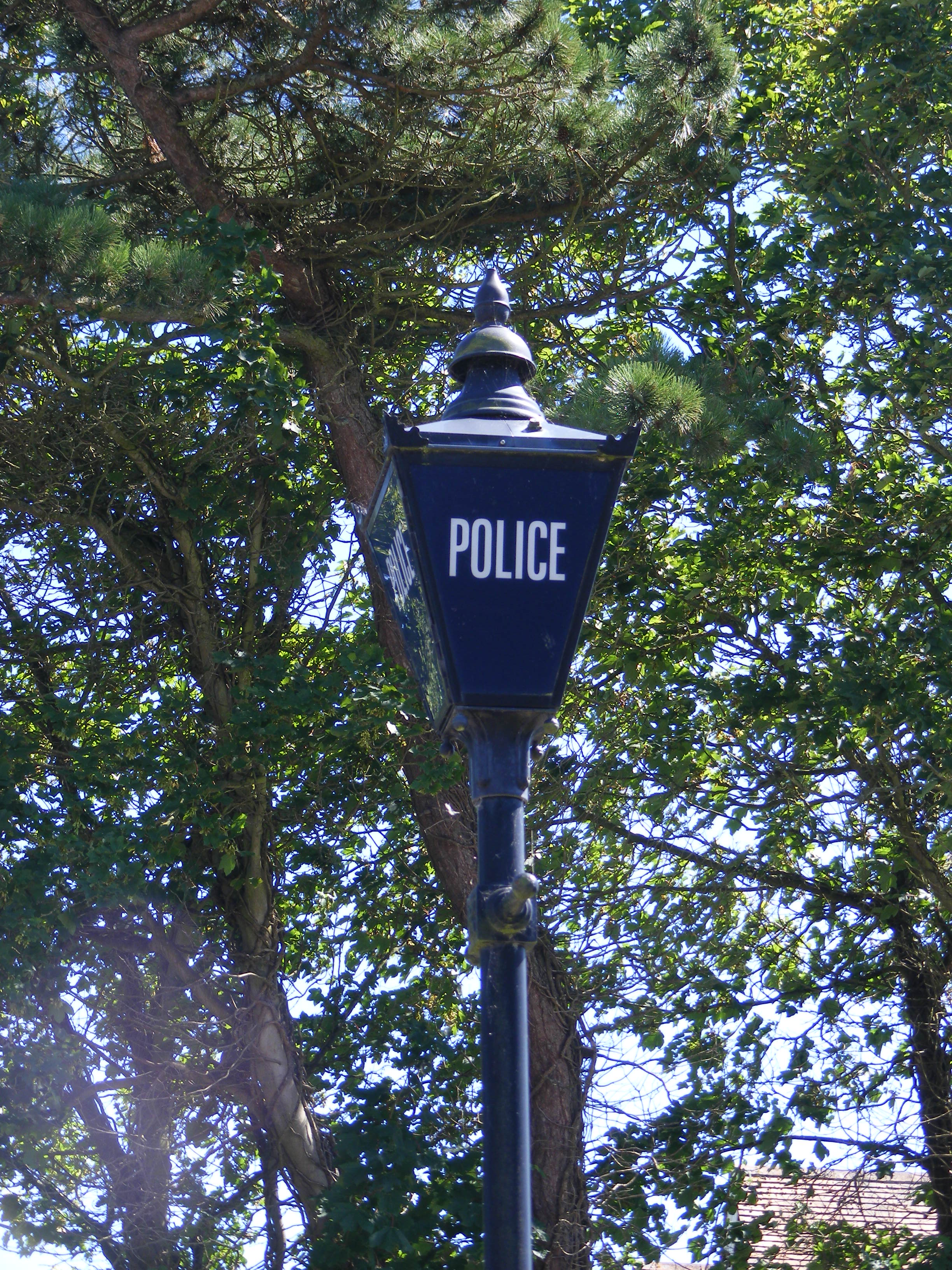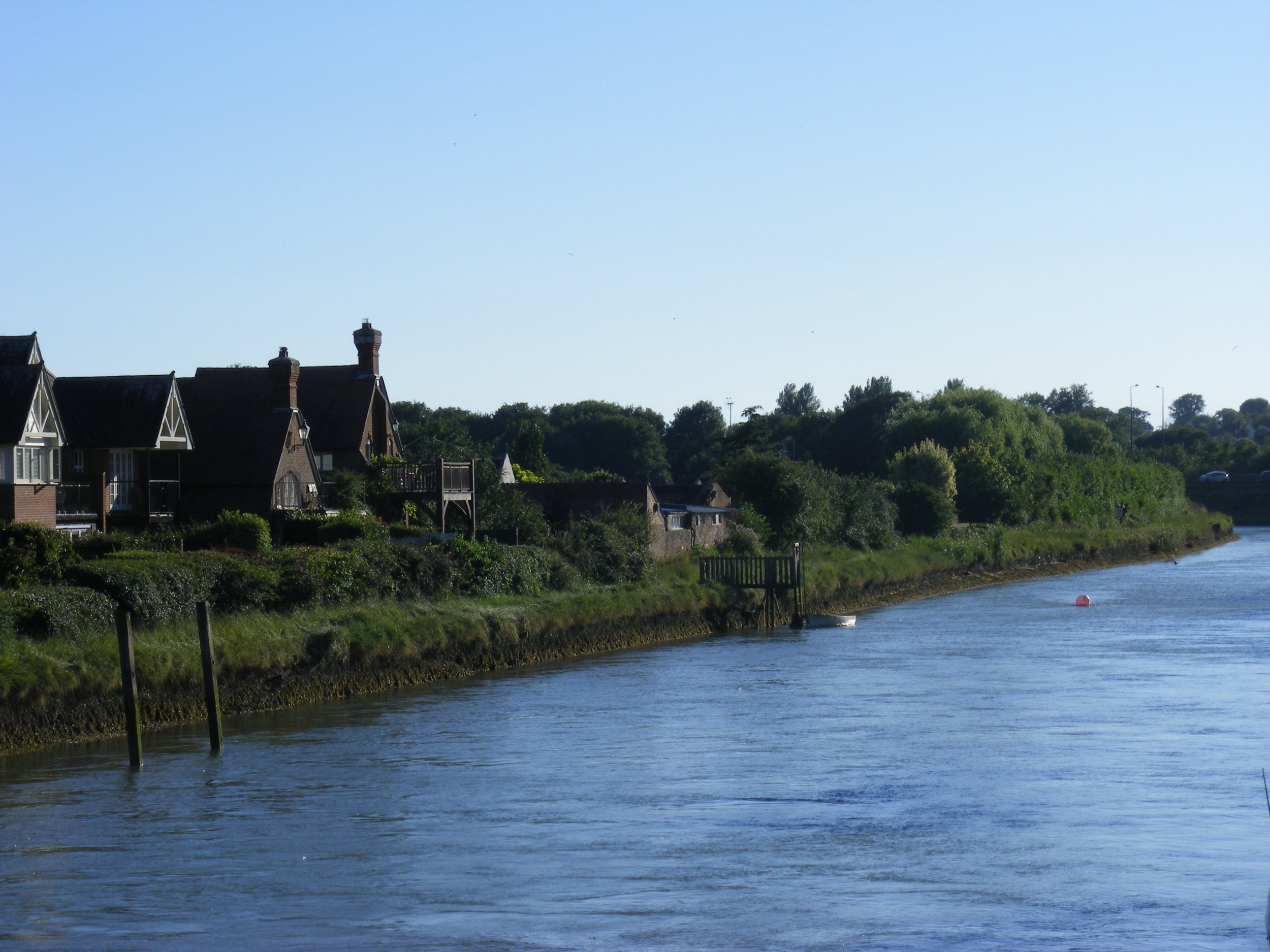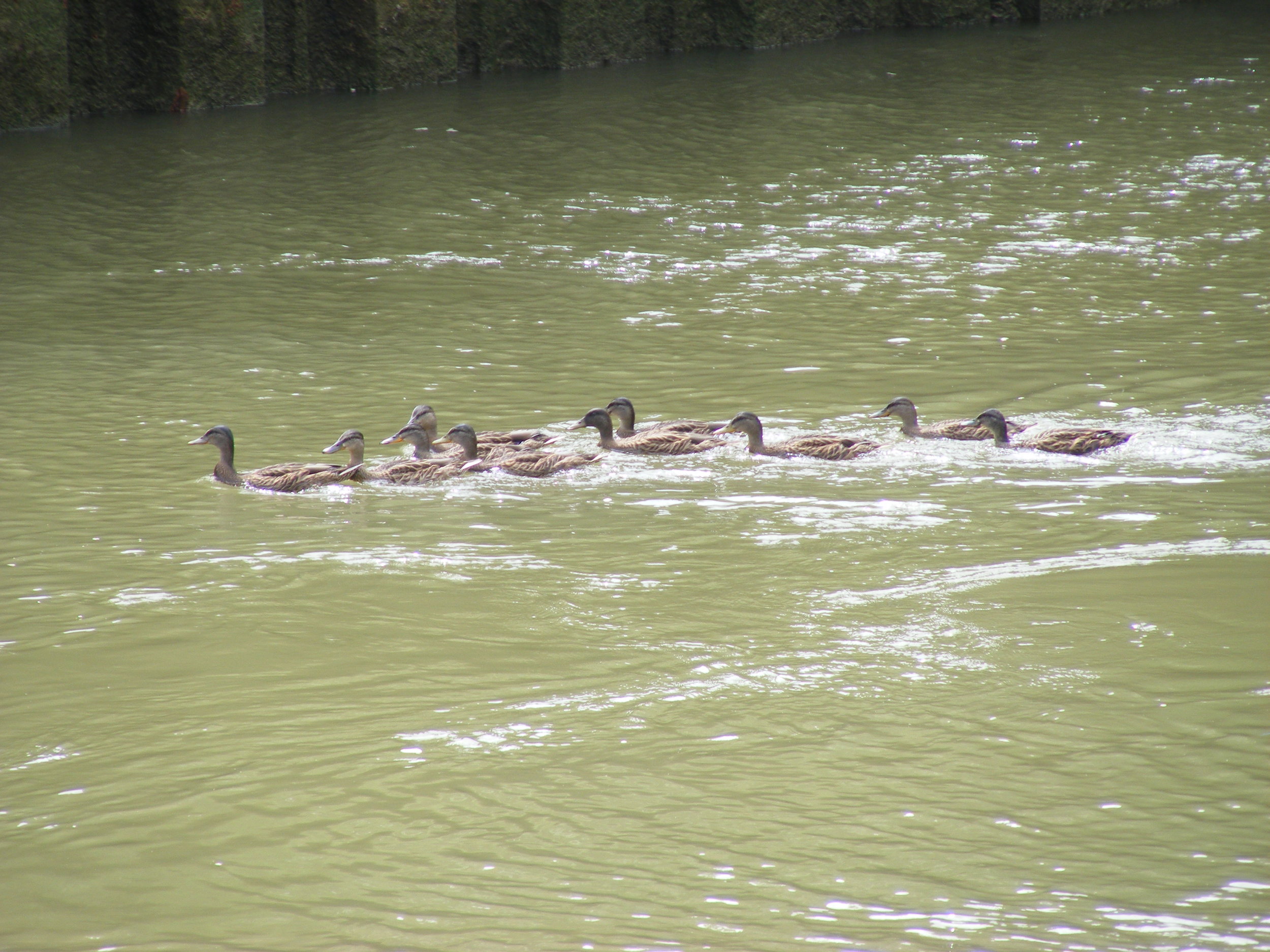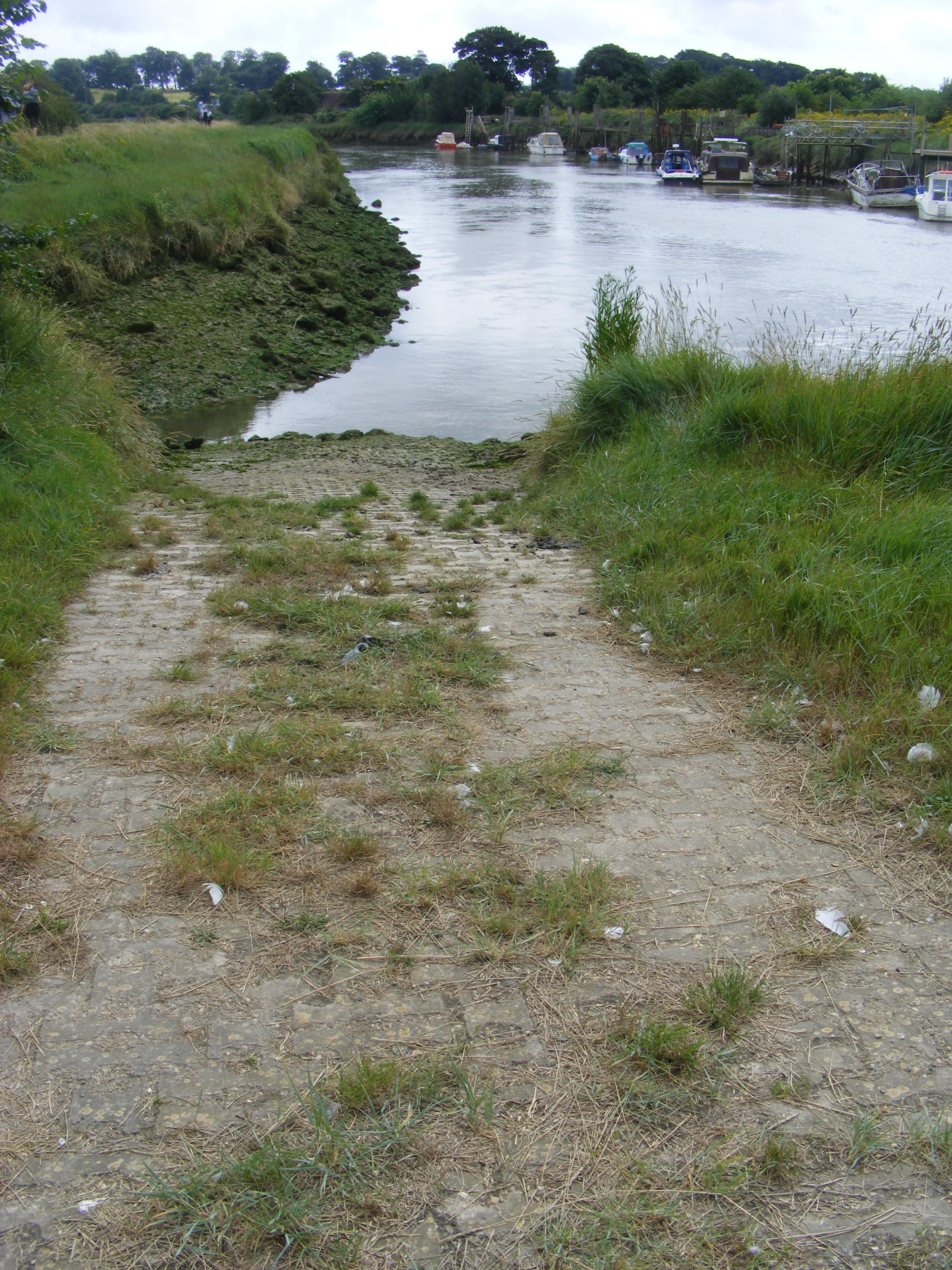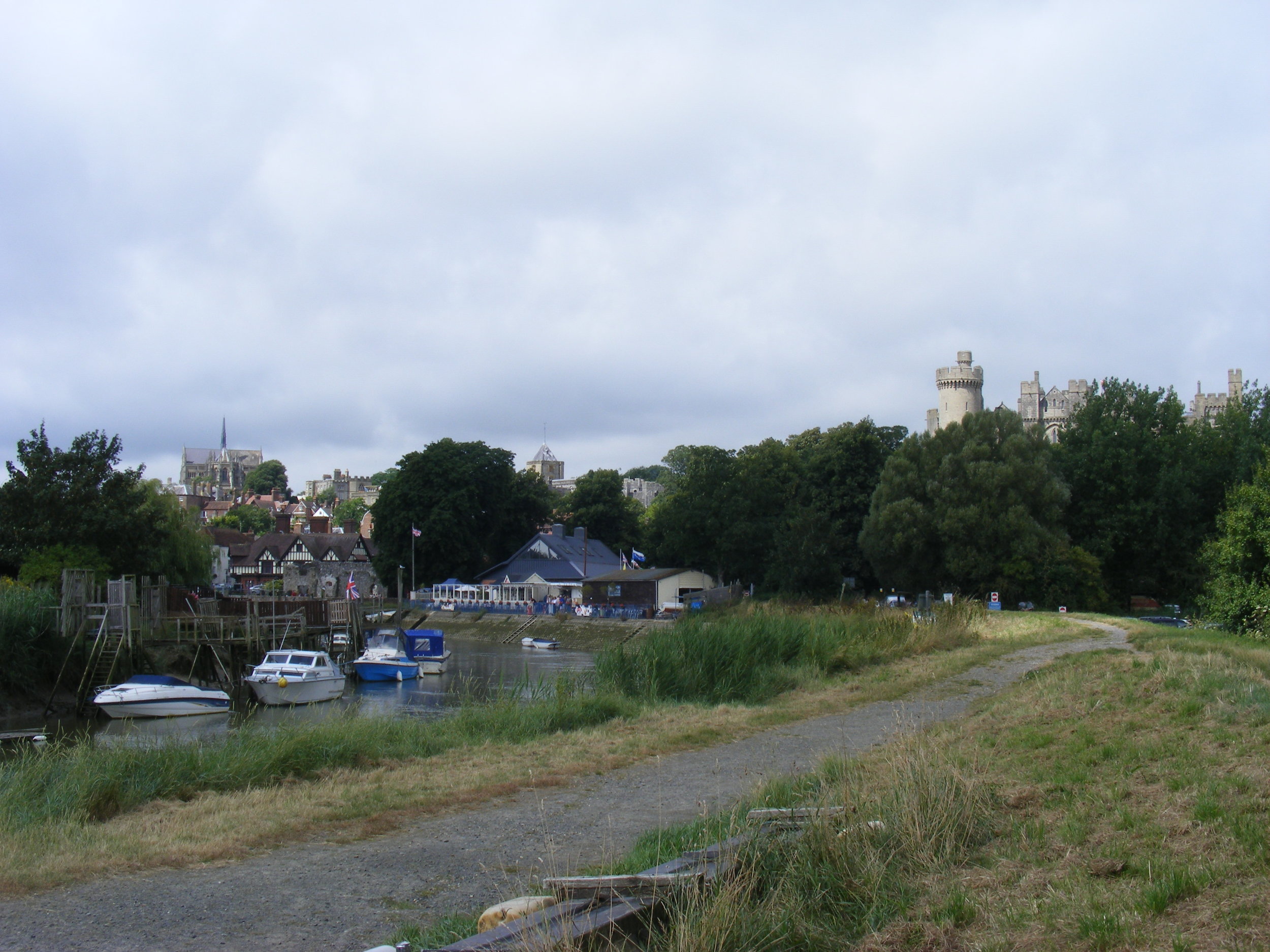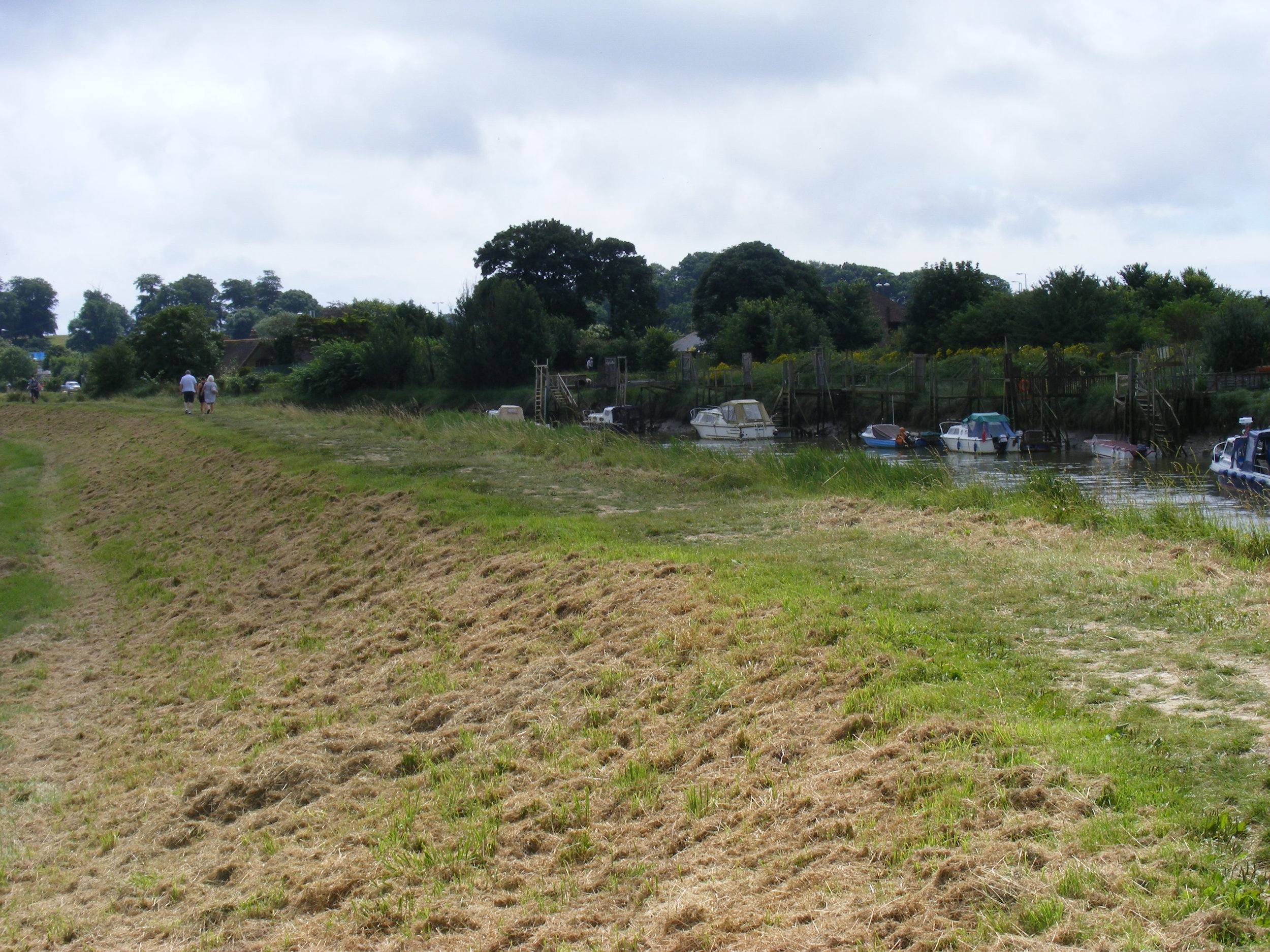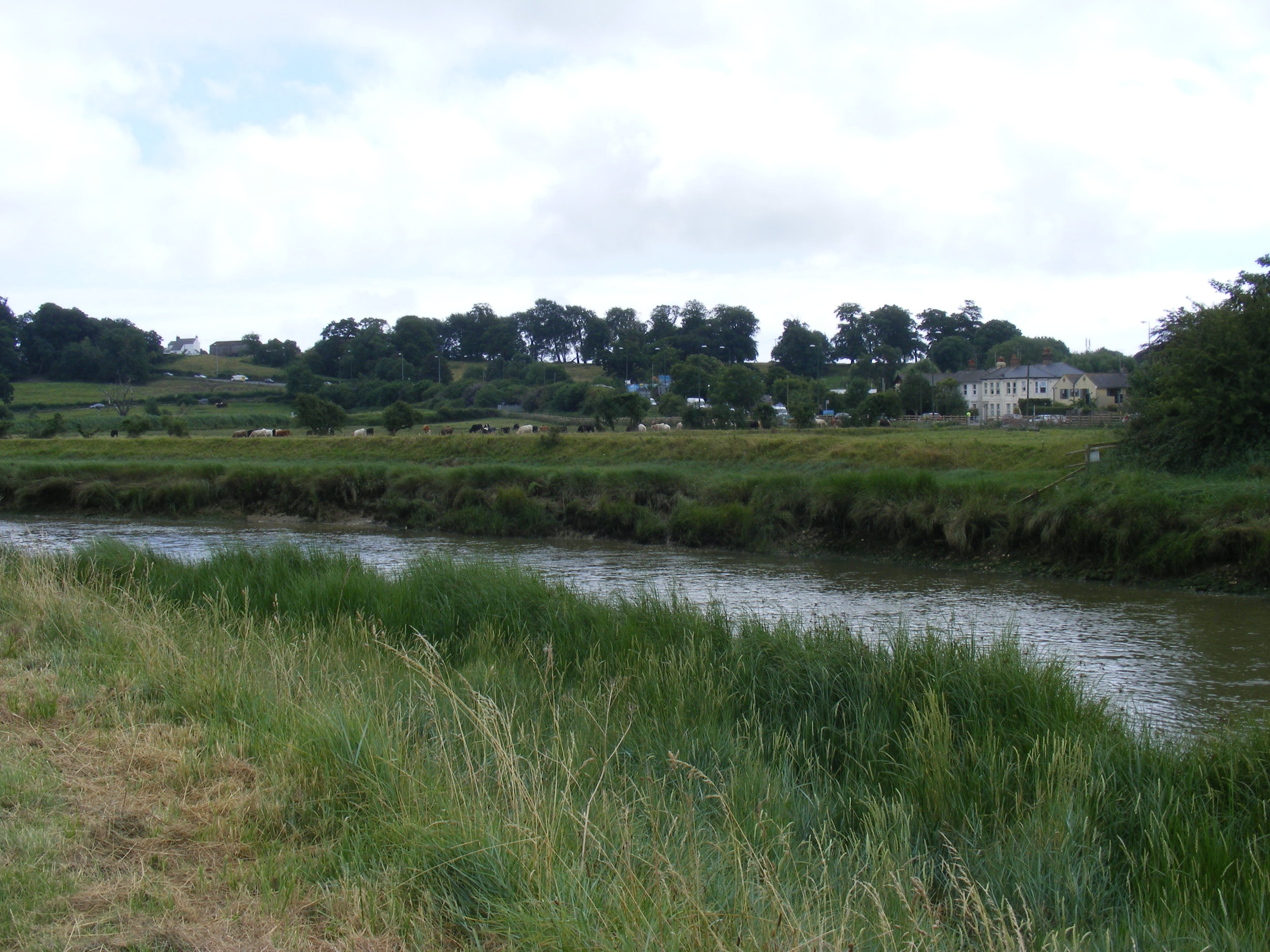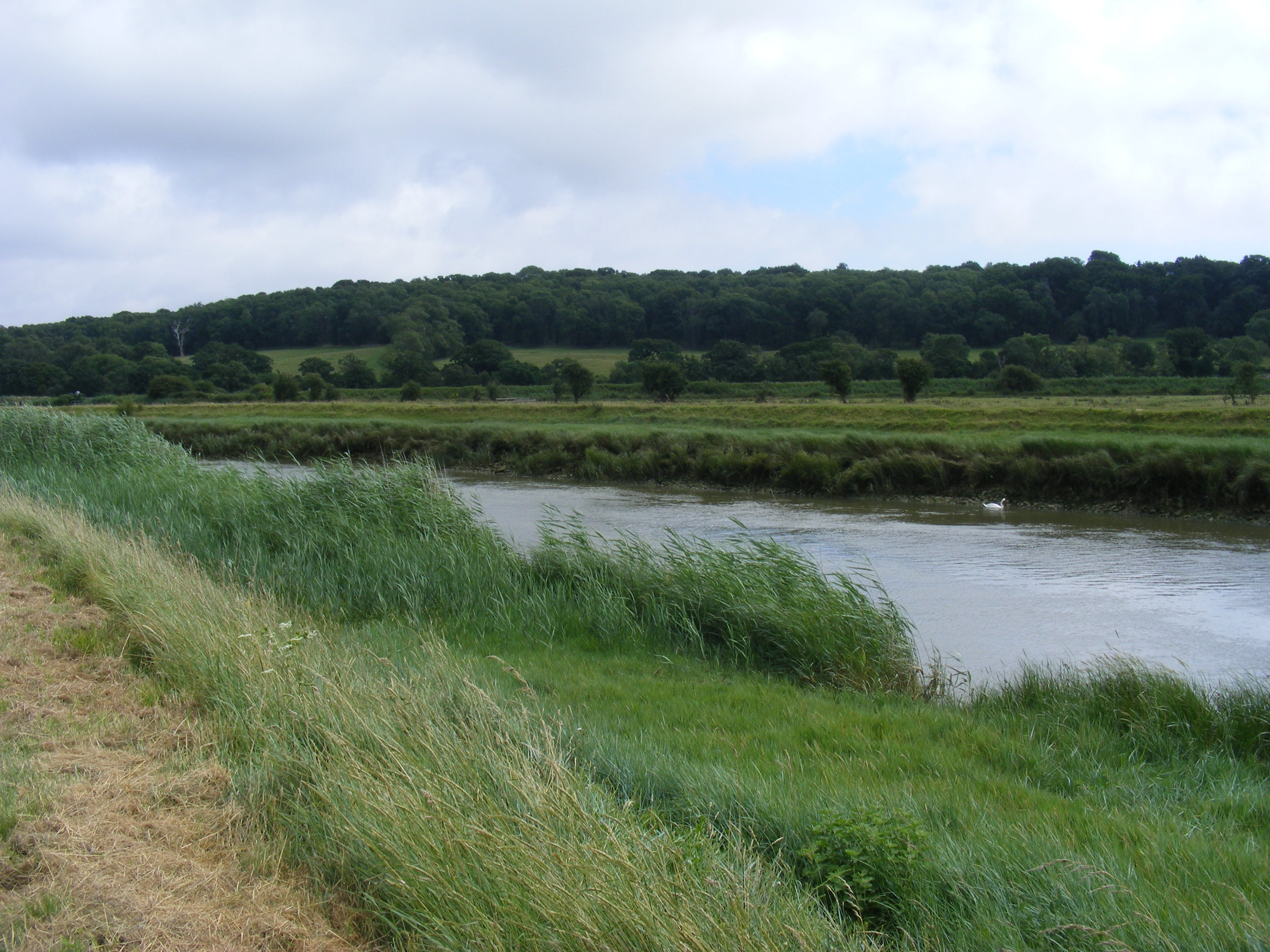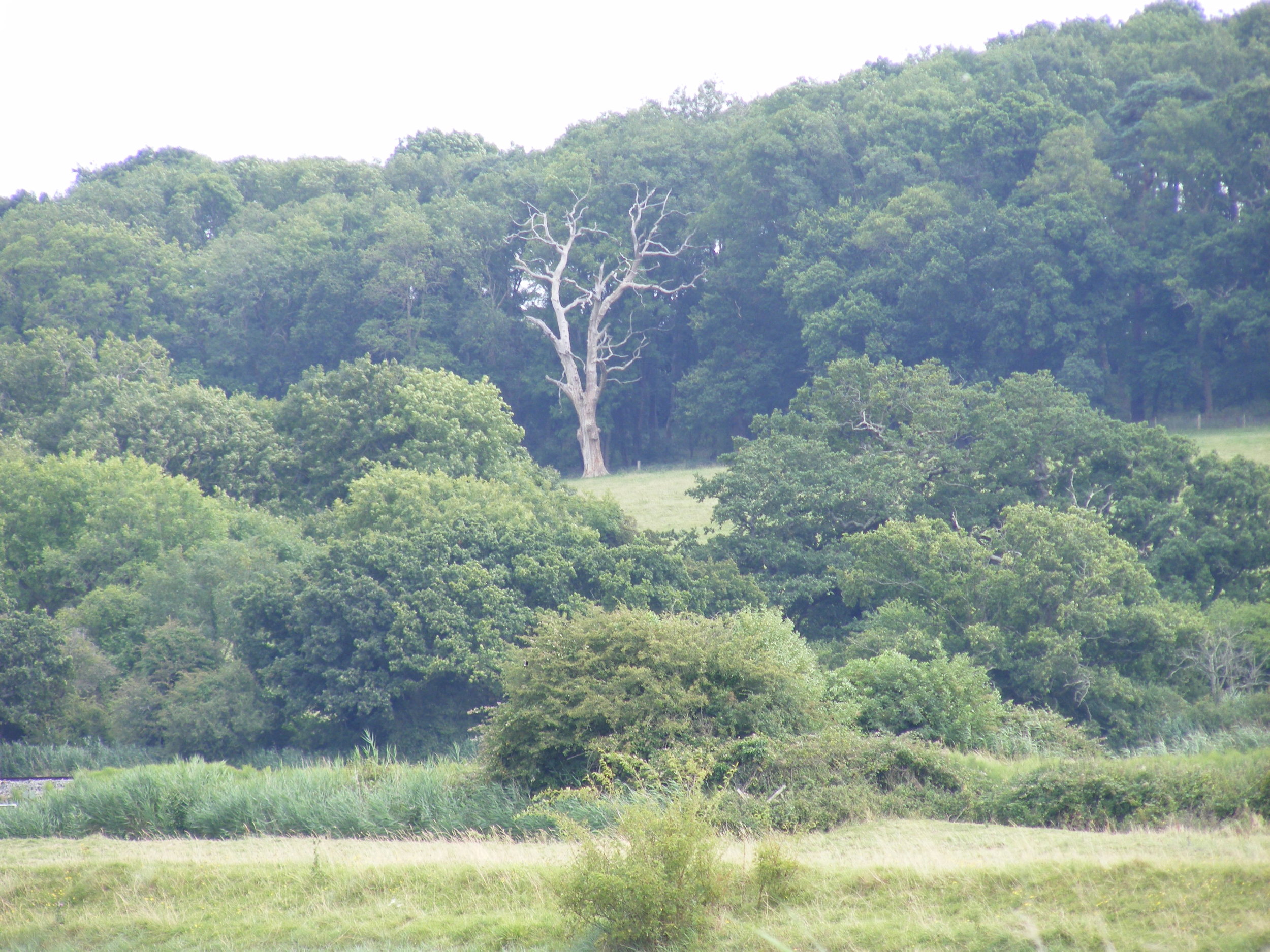The Sunday Section: Travel - Magical Medieval Arundel Castle
The reason I didn’t post last Sunday was because I was away. Finally, after 3.5 months!! Finally, I got the chance, and I was going, regardless of the weather; the preceding week had been pretty dismal. But, come the Saturday, the sun shone, and it did for the whole day; in fact, the weather all weekend was wonderful.
Arundel Castle - the view just after leaving the train station
Just saying – this is a pretty hefty post as I didn’t stint on the picture-taking :)
Arundel was and still is a bustling market town. It also used to be an important port, with ships sailing to and from the town along the river Arun to the sea, about 5 miles away. With a formidable-looking castle and a magnificent cathedral, I expected the town to be quite large but it wasn’t; most everything was within walking distance. The quaint little hotel was only yards from the train station, by a fairly busy road, but with a gorgeous view of fields and grazing cows. And the town was about a 5-10minute pleasant walk away.
I hadn’t done my ‘homework’ as I wanted to be surprised by the place. In hindsight, I wish I had as there’s so much history. Arundel Castle was granted to Roger de Montgomery on Christmas Day 1067 by his cousin, William the Conqueror, as a reward for keeping the peace in Normandy while William was busy conquering England. It was a package deal – Roger was also granted extensive lands in the Welsh Marches, including one-fifth of Sussex. The portioning off of Sussex was referred to as the Arundel Rape.
After the death of Roger de Montgomery, the castle reverted to the crown under Henry I who left it to his second wife, Adeliza of Louvain (present-day Belgium). 3 years after Henry’s death, she married William d’Aubigny, also known as William d’Albini. Having fought loyally for King Stephen, he was made 1st Earl of Lincoln and then 1st Earl of Arundel in 1138. In 1139, Matilda, Adeliza’s step-daughter, stayed at Arundel for some time while attempting to win back the crown from her cousin, Stephen.
Adeliza of Louvain
It was at this point that I wished I’d read up on the castle’s history – I know this story, of Henry I, Adeliza and William, and of Matilda, Henry’s daughter – it’s the basis of the first Elizabeth Chadwick novel I’d read, ‘Lady of the English’.
Arundel Castle descended directly from the d’Aubigny family in 1138 to the FitzAlans in the 13th century, carried by female heiresses. There was the occasional reversion to the Crown, like in 1176 following the death of William d’Aubigny; first under Henry II, it then passed to Richard I, the Lionheart, who offered it back to the Aubigny family. After the death of the last male Aubigny, the castle and earldom passed to John FitzAlan of Clun through his marriage to Isabel Aubigny. The castle remained with the FitzAlan family until 1580.
With the marriage, in 1555, of Mary FitzAlan, the youngest child of the 19th Earl of Arundel, to Thomas Howard, 4th Duke of Norfolk, the castle eventually passed from the FitzAlans to the Howards, who hold the dukedom of Norfolk. The castle has been the principal seat of the Norfolk family for over 400 years to the present day. Sadly, Mary died a year after marriage, following the birth of their son.
Thomas Howard, 4th Duke of Norfolk
The Howards featured largely in English history, especially during the latter Plantagenet and Tudor period. Henry Howard, Earl of Surrey, was one of the founders of English Renaissance poetry; he and his friend, Sir Thomas Wyatt, were the first English poets to write in the sonnet form that Shakespeare would later use. He was a first cousin of Anne Boleyn and Catherine Howard. Unfortunately, he and his father, the 3rd Duke of Norfolk, were imprisoned and sentenced to death by a paranoid and very ill Henry VIII who was convinced they were planning on usurping the crown. Surrey was beheaded but his father escaped execution only because the king died; however, he remained imprisoned. Surrey’s son, Thomas, inherited the dukedom of Norfolk on the death of the 3rd duke in 1554. Thomas, 4th Duke of Norfolk, having gained Arundel Castle through marriage, lost it when he was executed for conspiring to marry Mary, Queen of Scots, in 1572. The castle was later returned to the family.
During the Civil War, Arundel Castle was badly damaged. In December 1642, it was captured by a small force of Parliamentarians. One year later, it was captured by Royalists after a short siege but they then had to defend it against parliamentary troops; the Royalist defenders surrendered in January 1644.
The damage was gradually repaired over the years, with most of the restoration carried out by Henry, the 15th duke, and completed in 1900.
Walked down a footpath, by the river Arun, into town ...
Opted not to go into the castle rooms; not allowed to take photos and, to be honest, because the day was so glorious, didn't want to spend too long indoors ...
The FitzAlan Chapel, in the castle grounds, was the idea of Richard FitzAlan, the 10th Earl of Arundel, who’d fought at Crécy with Edward III, the Black Prince. The Chapel was built posthumously according to his will. The size of the building is deceptive; although large, on the inside it is split – it is one of the very few church buildings that is divided into 2 worship areas. The eastern end, the Chapel, is Catholic and the private mausoleum of the Dukes of Norfolk, and can only be accessed from the castle grounds; while the western side, with a separate entrance, is Anglican, occupied by St Nicholas Parish and Priory Church.
The Chapel’s main features are the beautiful seven-panel window, and the wooden vaulted roof, which, although rebuilt in 1886, still incorporates the medieval roof bosses. The brass ‘figures’ on the floor date back to the 15th century, while the tombs are 16th century.
The gardens … I personally think the gardens are worth the price of entry alone; I enjoyed them more than the castle. The garden by the Chapel is called the White Garden, and it’s filled with white flowers. Not to mention palm trees! That plus the balmy weather gave the impression of being somewhere on the continent.
This is named the Collector Earl’s Gardens, after the 14th Earl who was dubbed the ‘Collector’. Most of the treasures in the castle were collected by him including tapestries, clocks, and portraits by Thomas Gainsborough and Anthony Van Dyck.
The gardens include Herbaceous Borders and the Cut Flower Garden...
Wildflower Garden ...
This ... I wasn't sure what to make of it - it's a crown 'floating' at the top of a fountain!
View of the Cathedral from the castle gardens ...
The Rose Garden ...
Some of the buildings around town … Had lunch at a pretty little restaurant, called Belinda’s; the building dates back to the 16th century.
While walking around the town, stumbled on this little gem, tucked away from the main road. I stared at the sign that said ‘Public Garden’, wondering if there was a catch … not that I’m cynical or anything. But it’s as the sign says – a genuine public garden, for the enjoyment of anyone who wants to use it! If I lived in one of the houses close by, I’d be out there every fine morning and evening, with my coffee and a book.
The building in the next picture and the one below it is, apparently, the cinema!
Walked around to the other side of the castle, to the road leading to the Cathedral. Before the cathedral is the entrance to the Church of St Nicholas, another beautiful building. It still bears traces of wall paintings inside.
The Cathedral Church of Our Lady and St Philip Howard is fairly new; it was commissioned in 1868 by the 15th Duke of Norfolk, Henry Fitzalan-Howard. The architect was Joseph Hansom, the same man who invented the hansom cab. The Duke wanted a building that would complement the castle. Dedicated in 1873 as Arundel’s Catholic parish church, in 1965 it became a cathedral, serving Arundel and Brighton.
Henry Fitzalan-Howard
I have never seen an 'old' police lamp like this outside of films!
The view from the hotel room ...
The next day, had time to walk around after a late breakfast ...
Dominican friars were in Arundel, probably in the mid-13th century. Friars didn’t withdraw from the world like monks but went out to preach. This is the ruin of the Blackfriars Dominican Friary. Dominican friars were called ‘black friars’ because of the colour of their habits.
There's a path up the side of the castle that runs alongside the river ...
Although a popular tourist destination, and there were people about, nowhere felt crowded. That surprised me as the town is fairly small. It is definitely worth a return visit, and I am so glad and so lucky that it isn't far; methinks it would make for a pleasant day trip.




